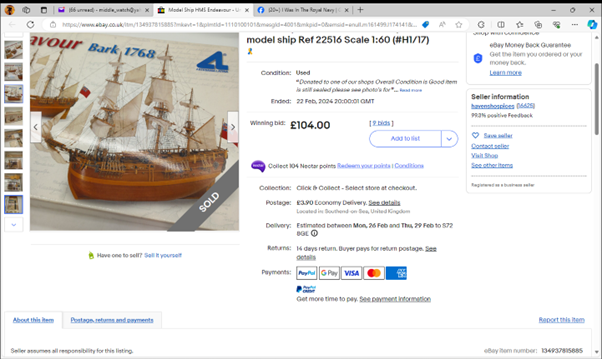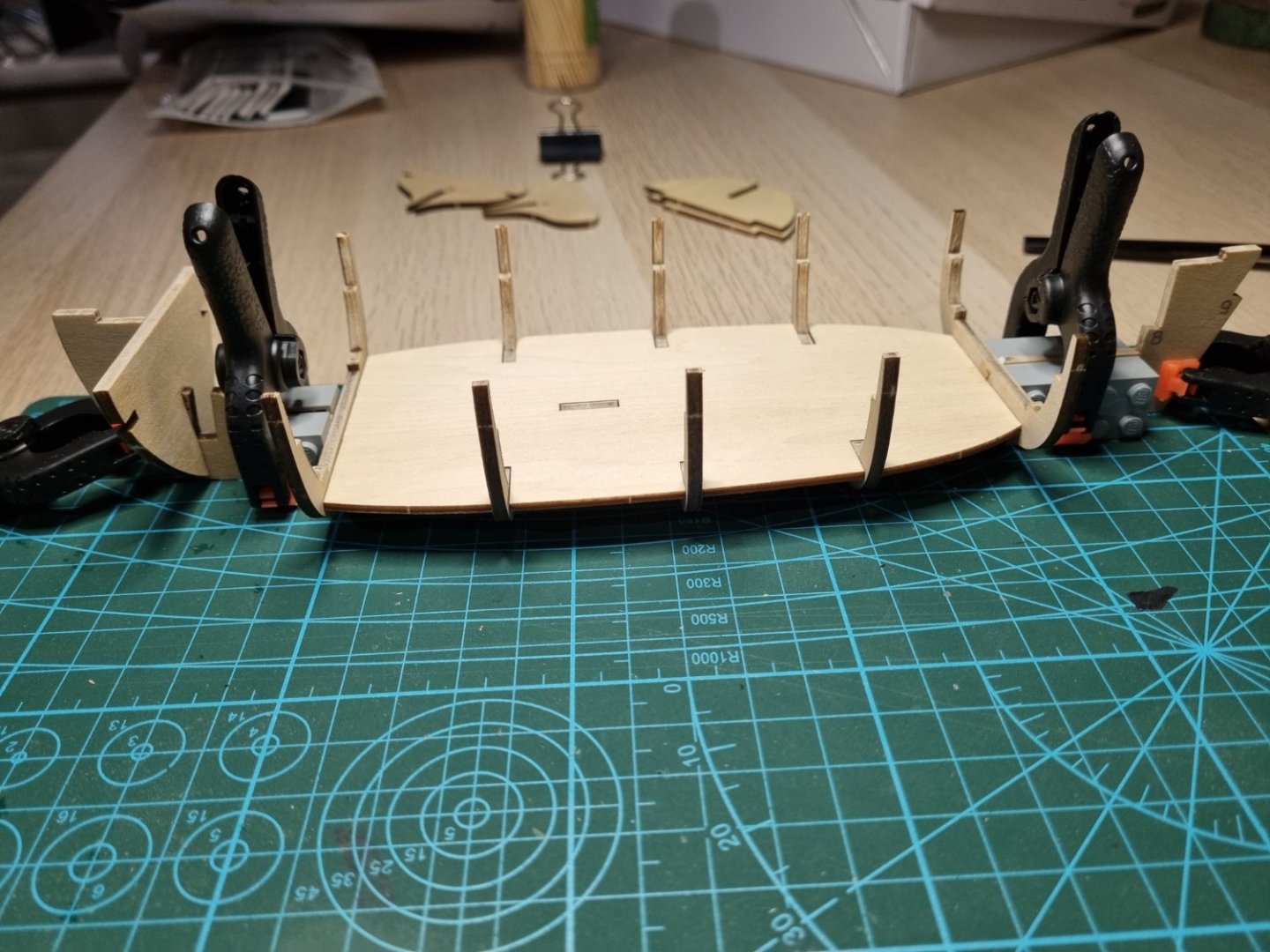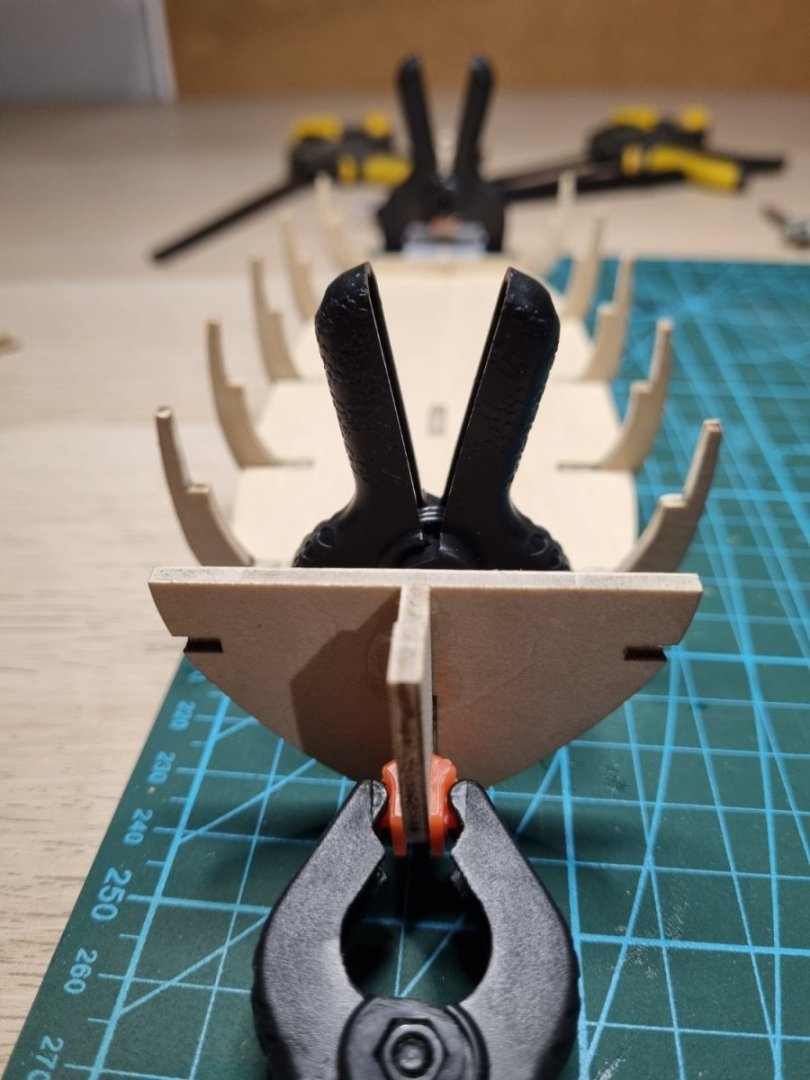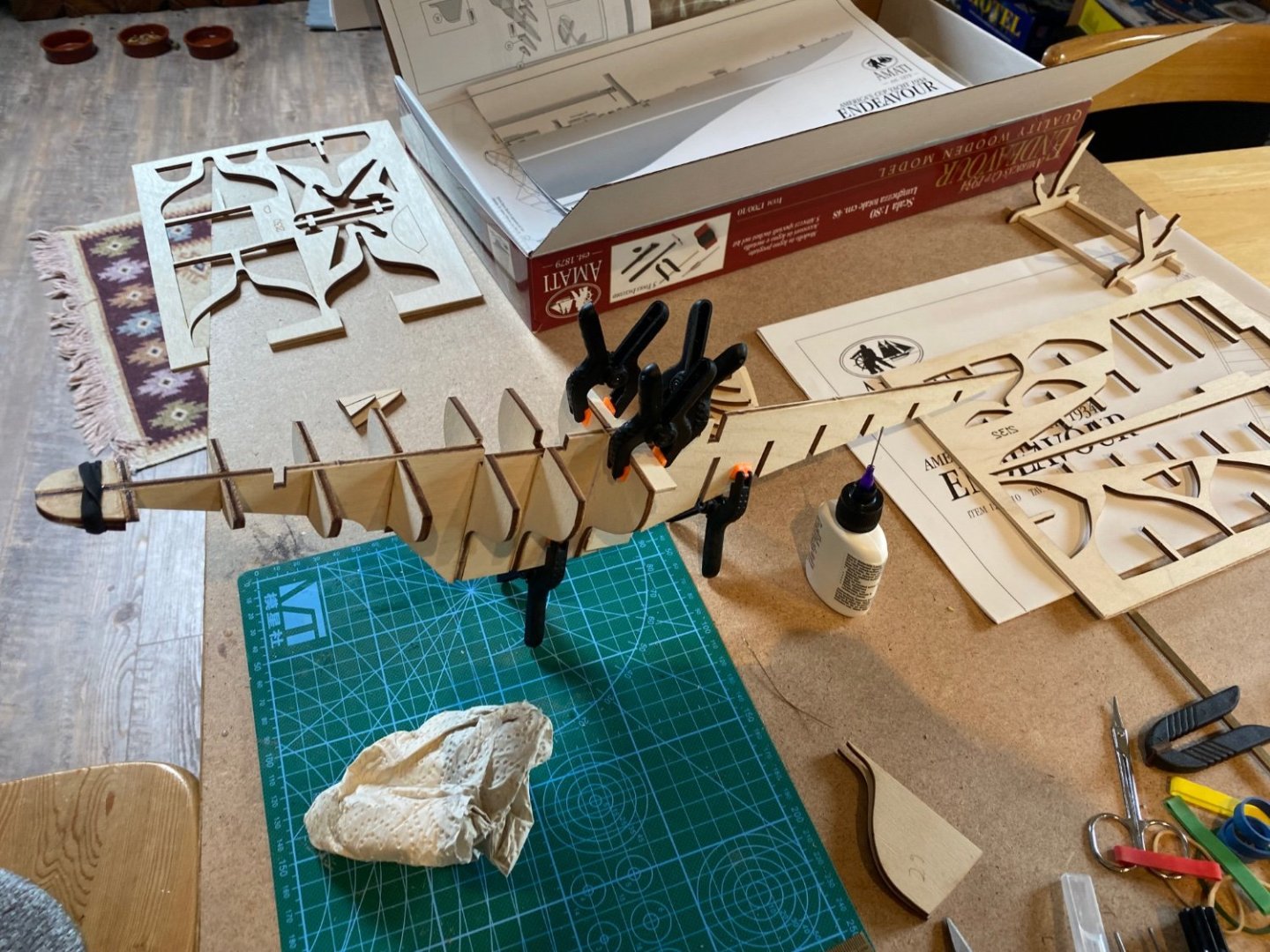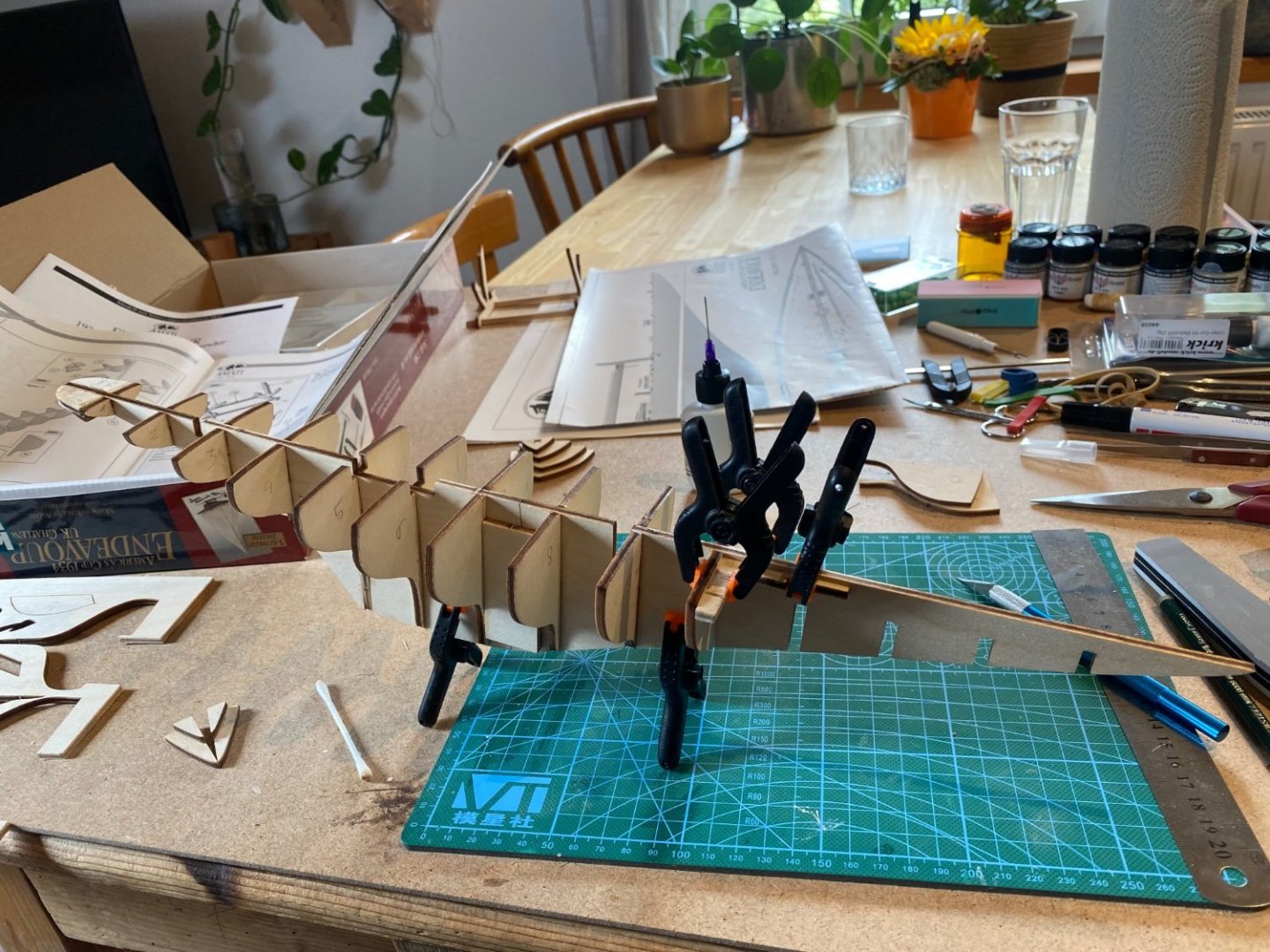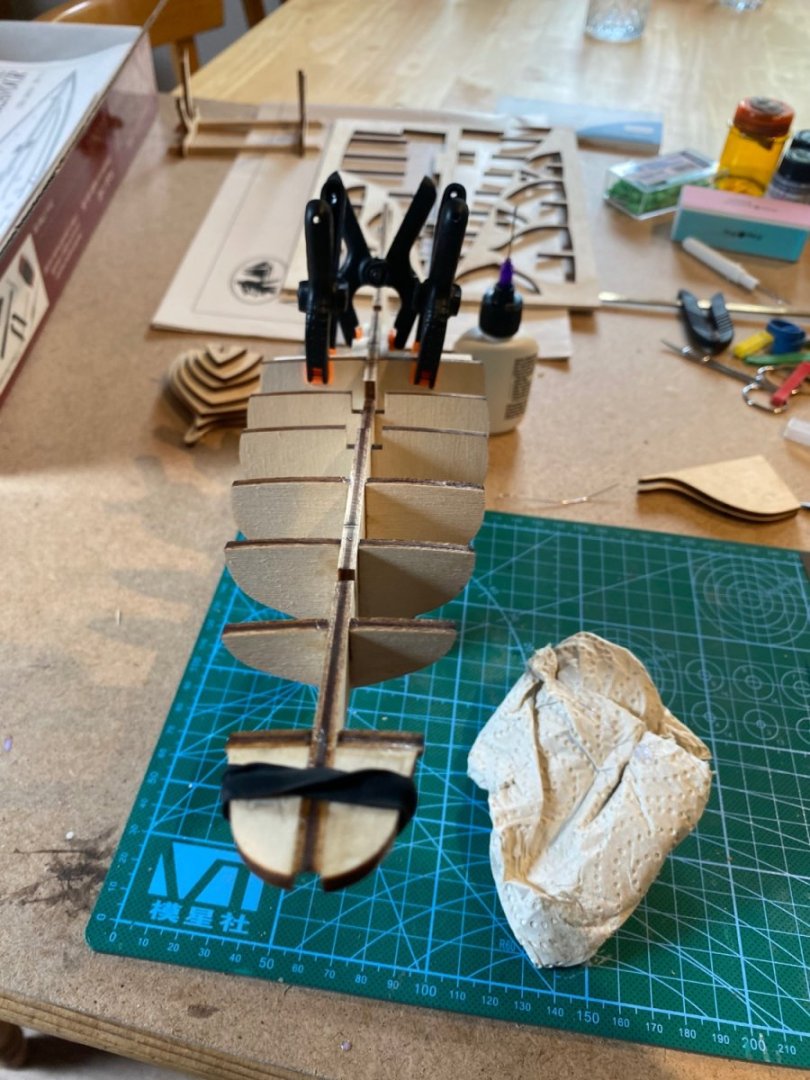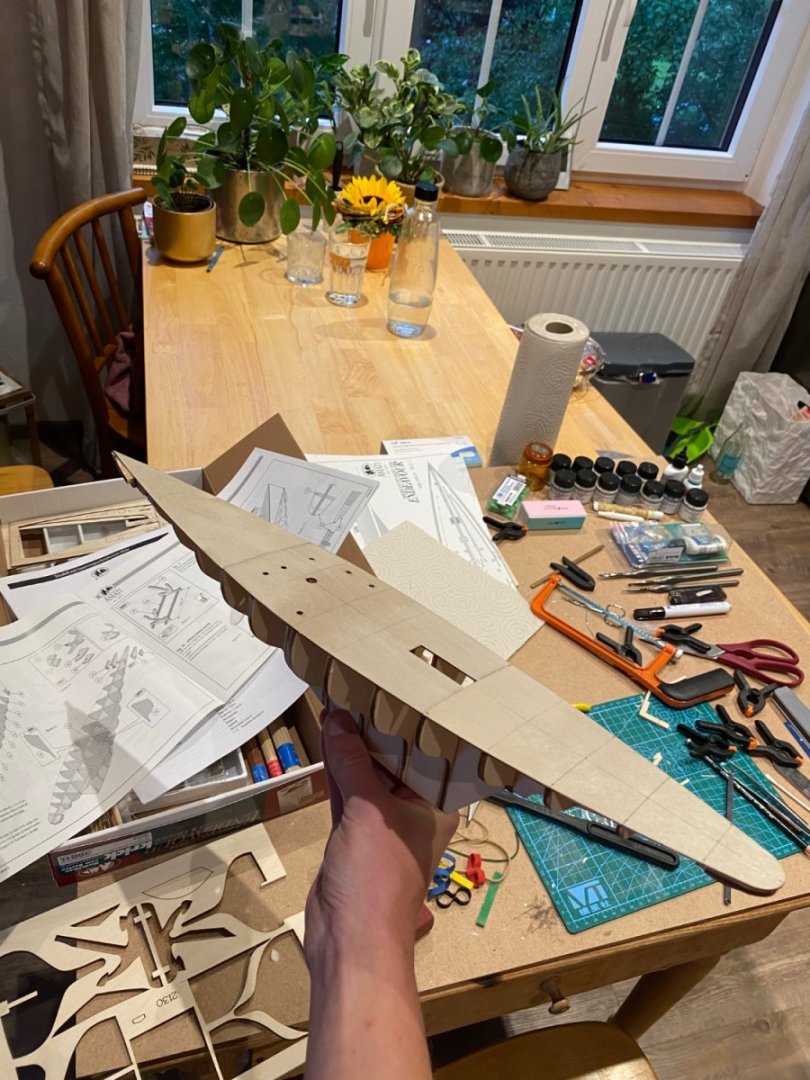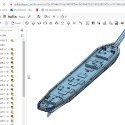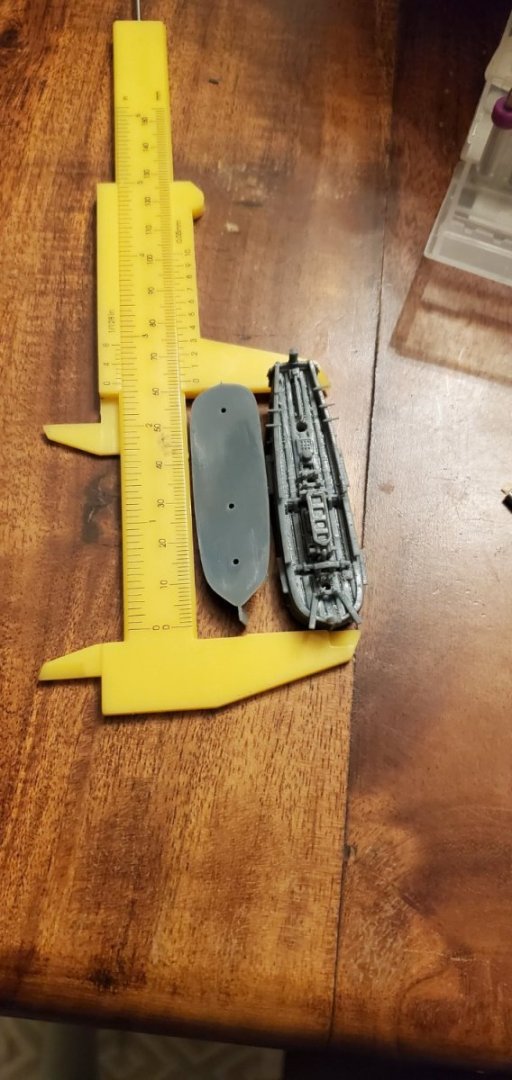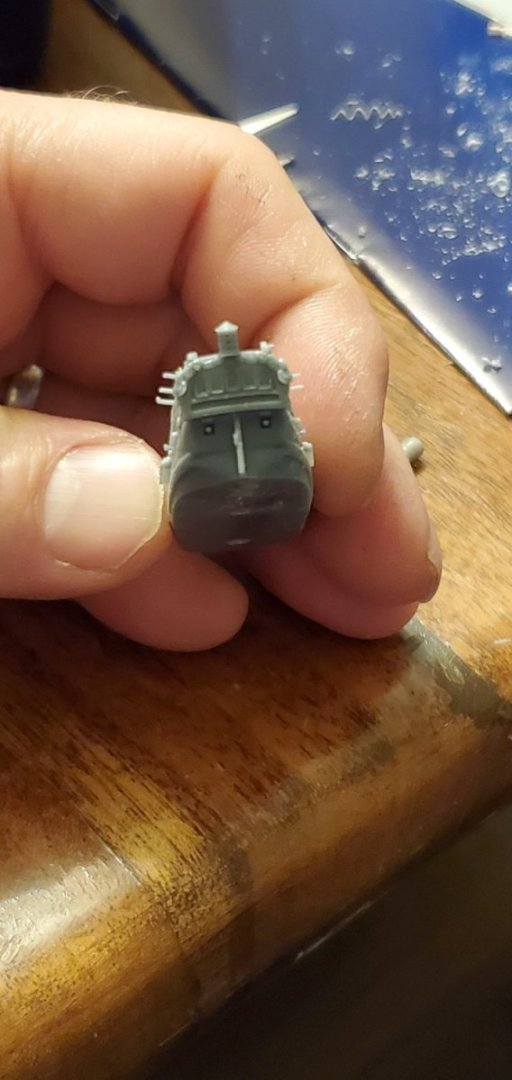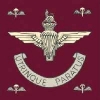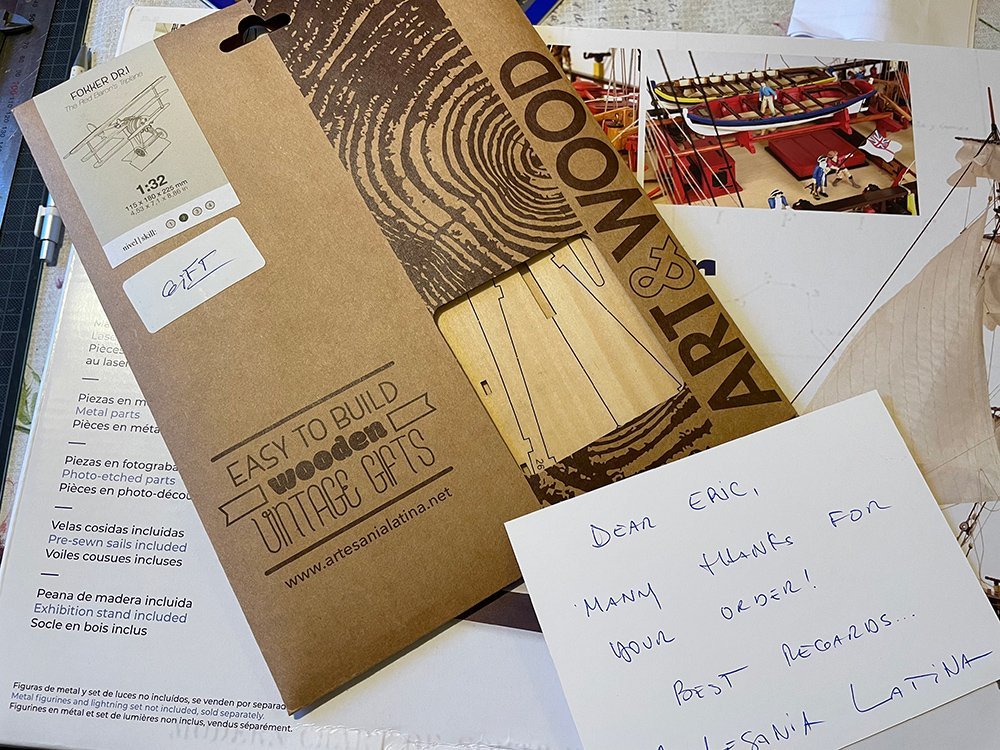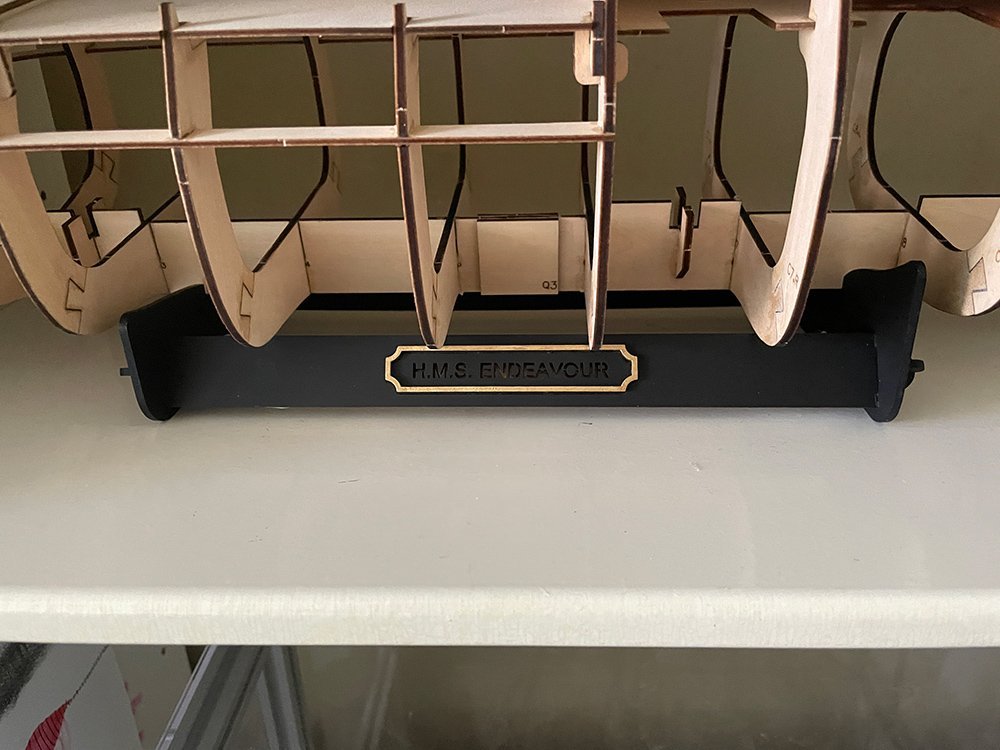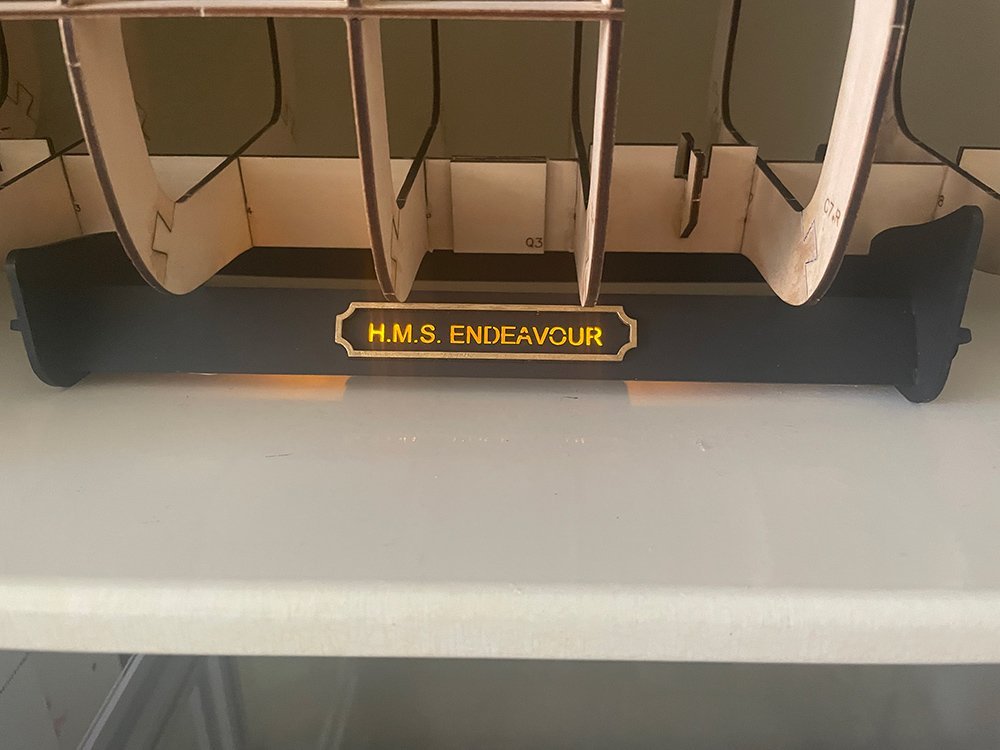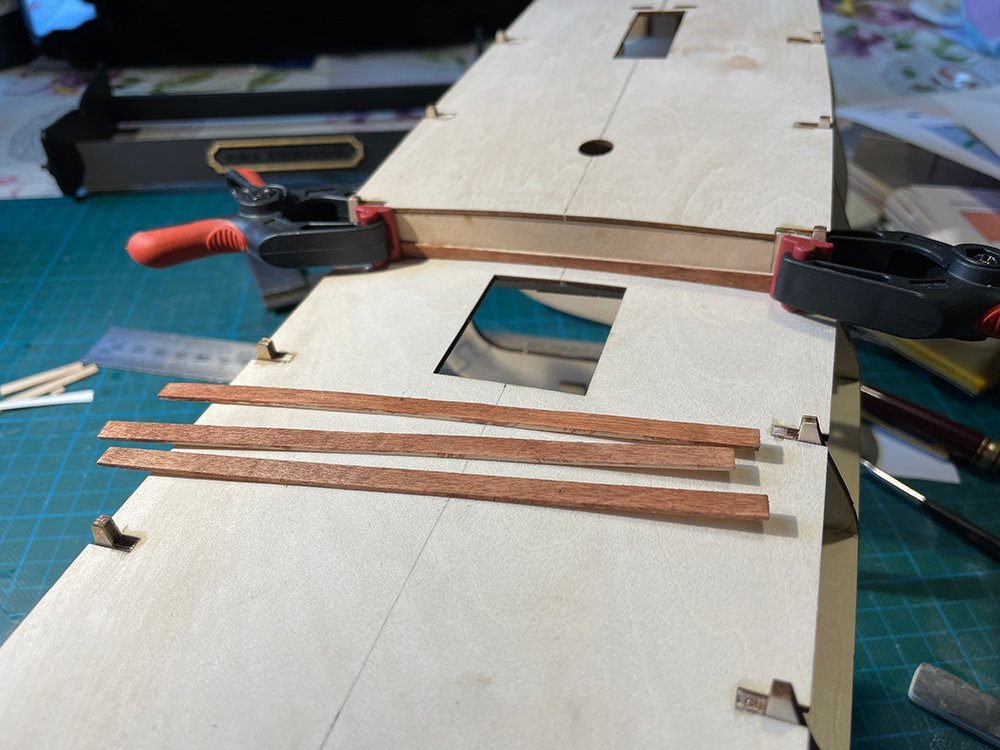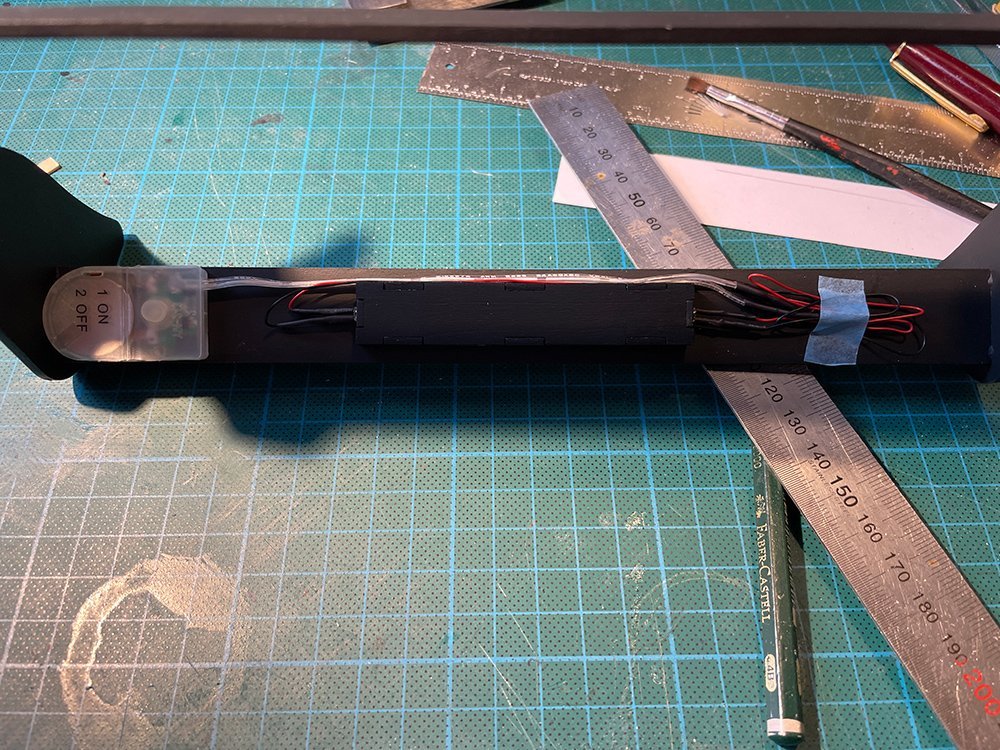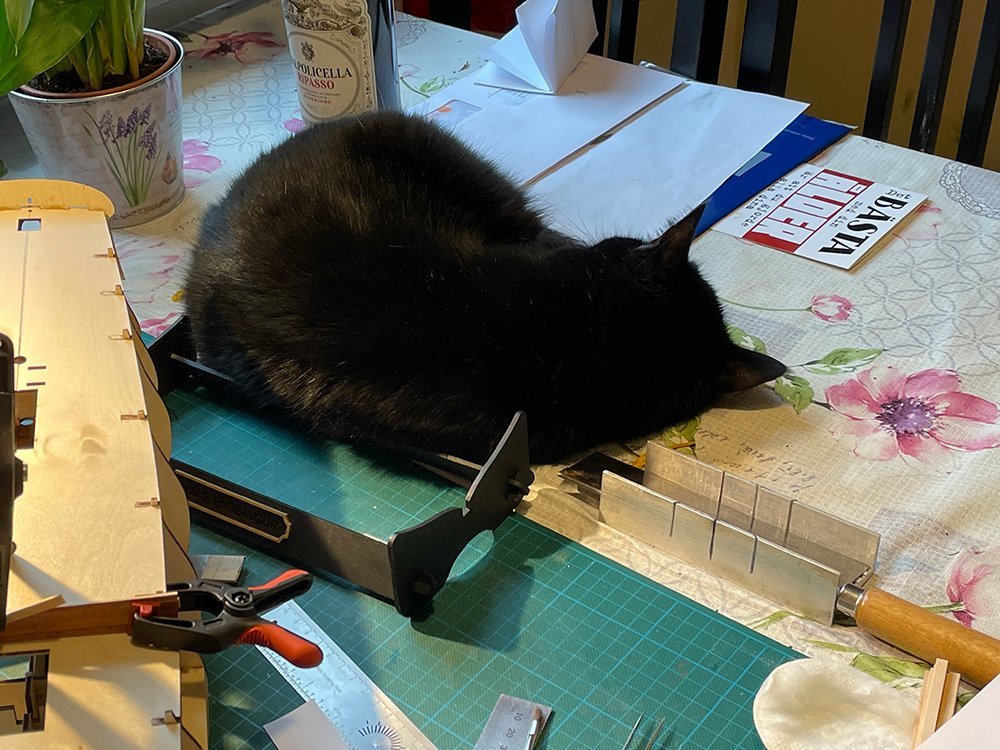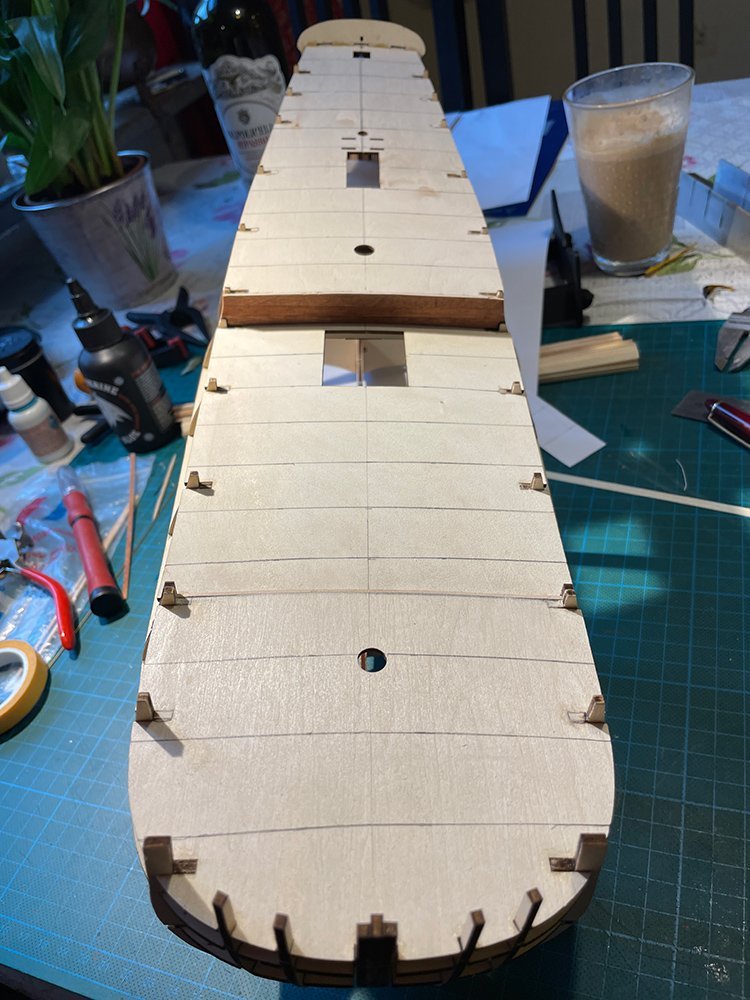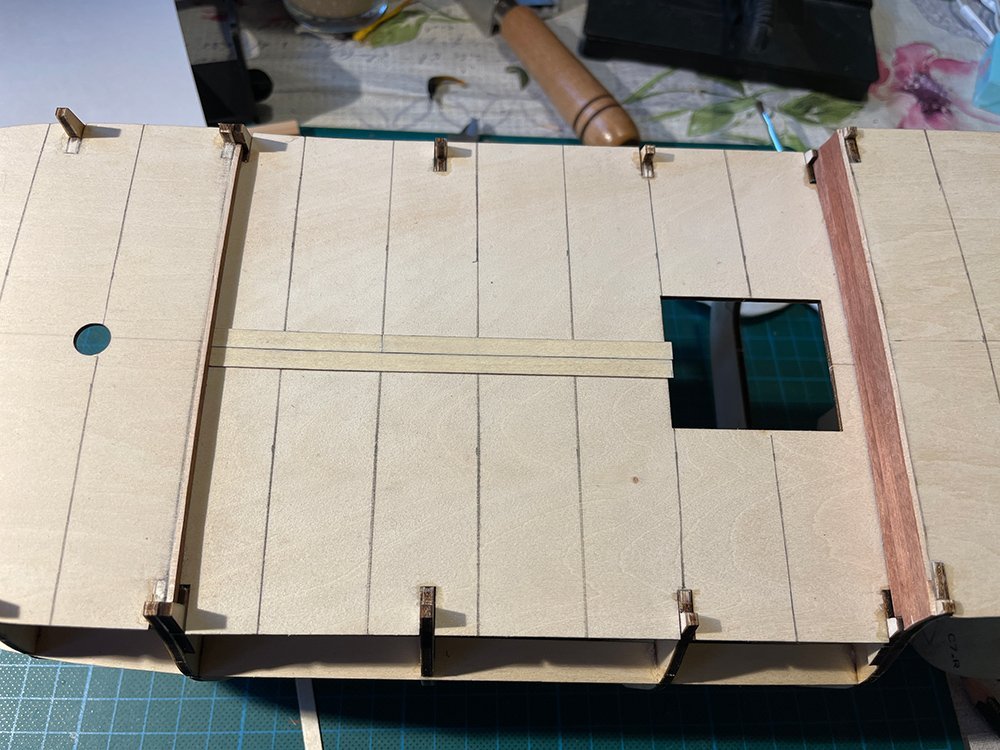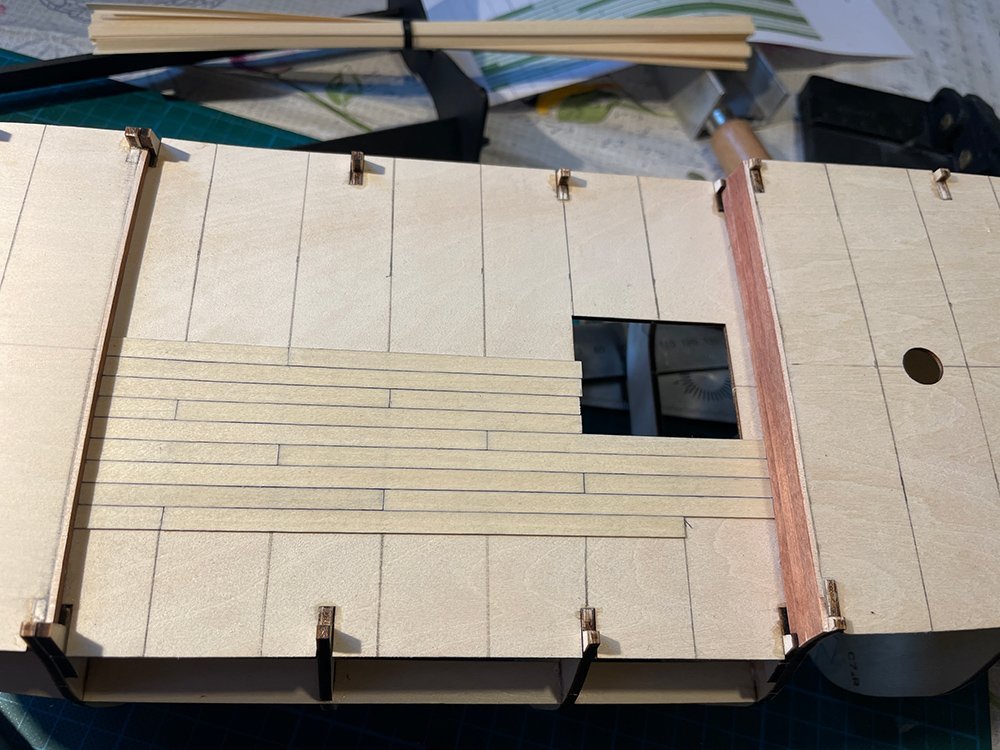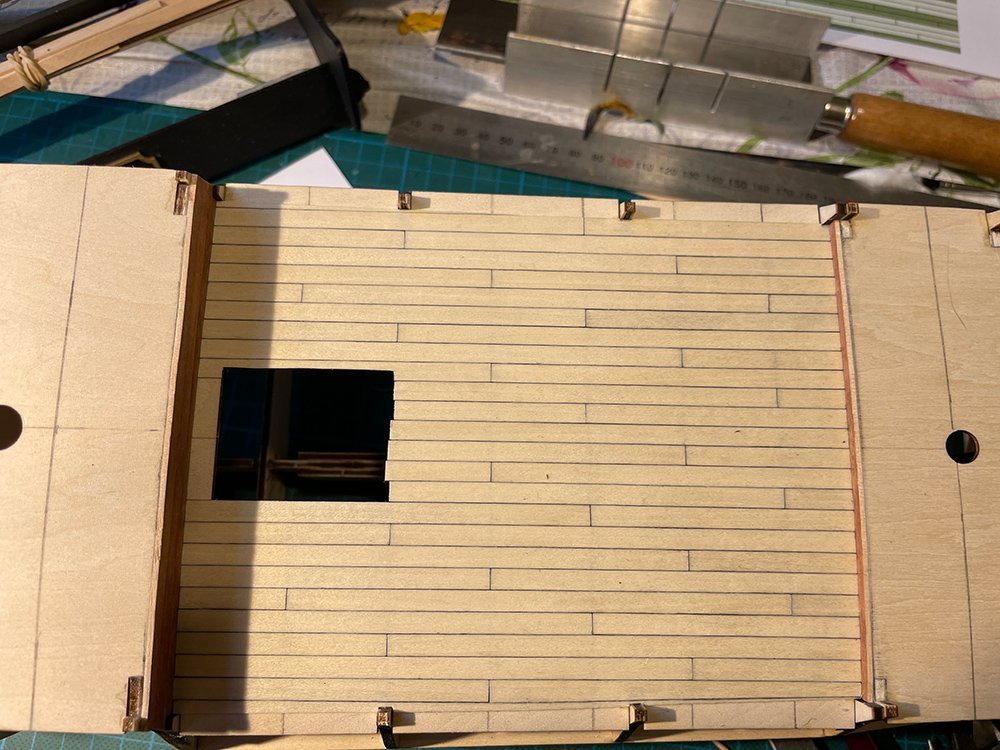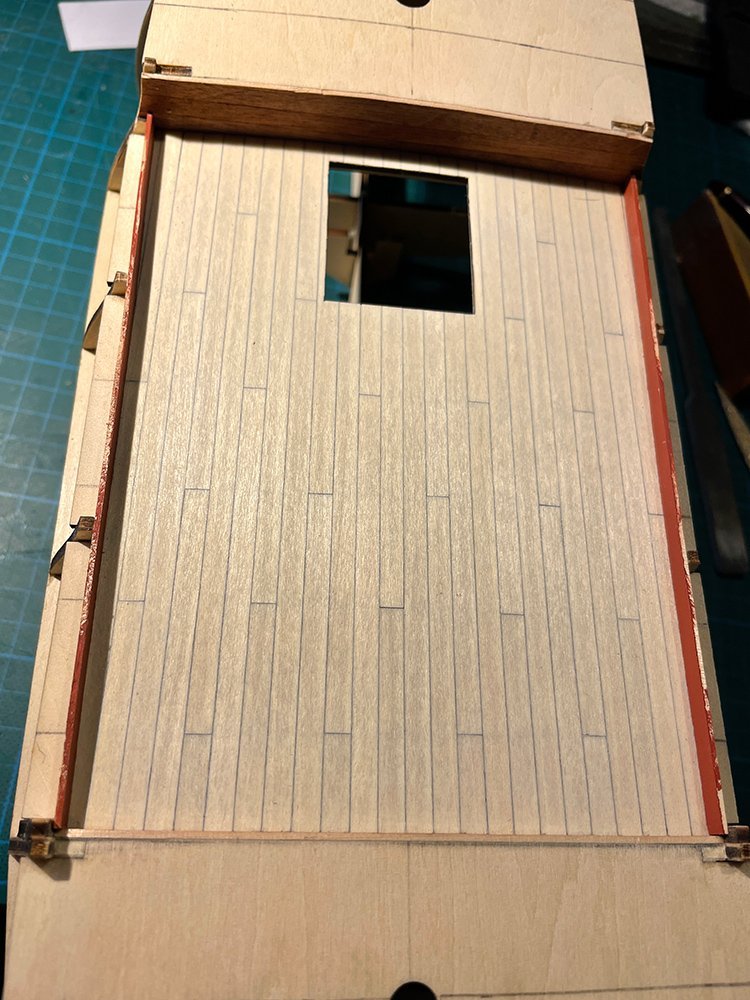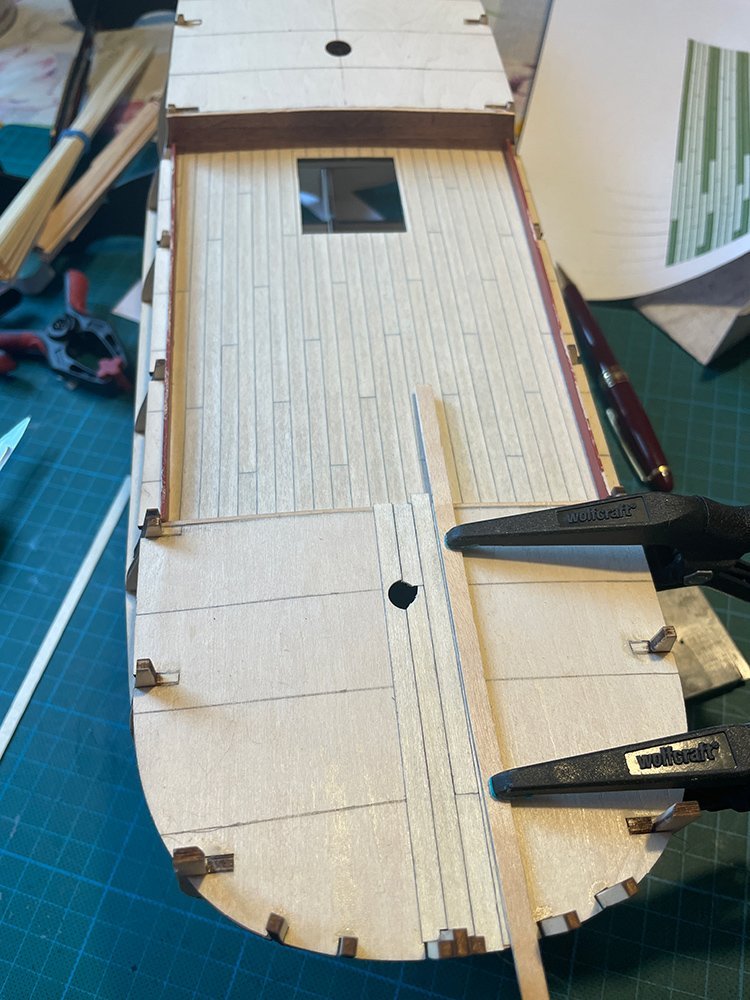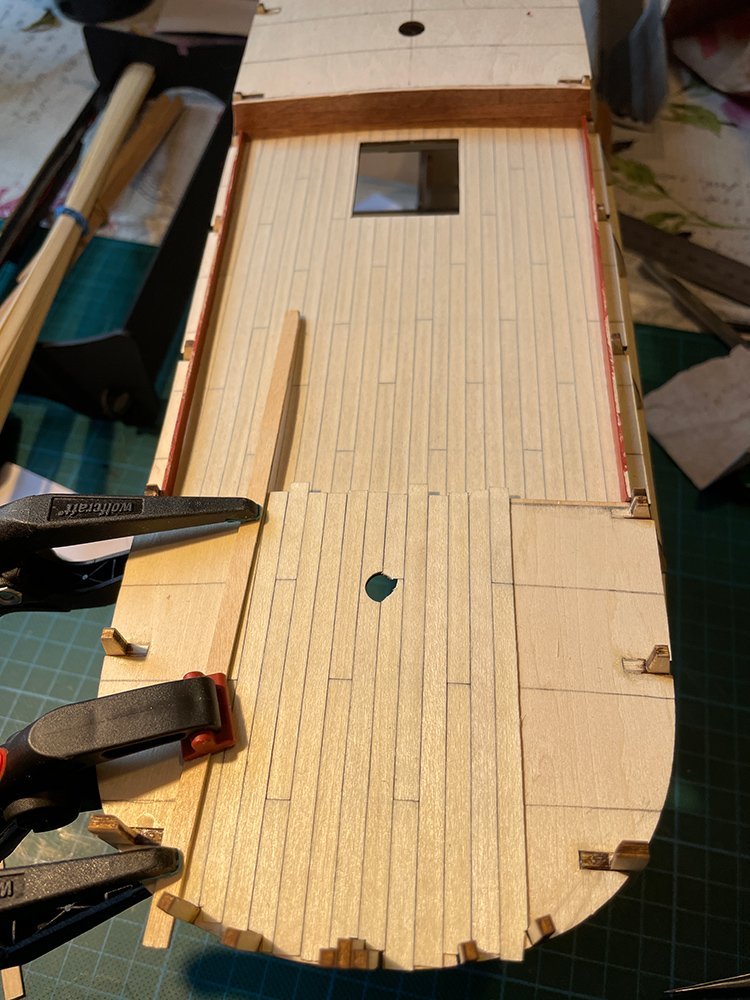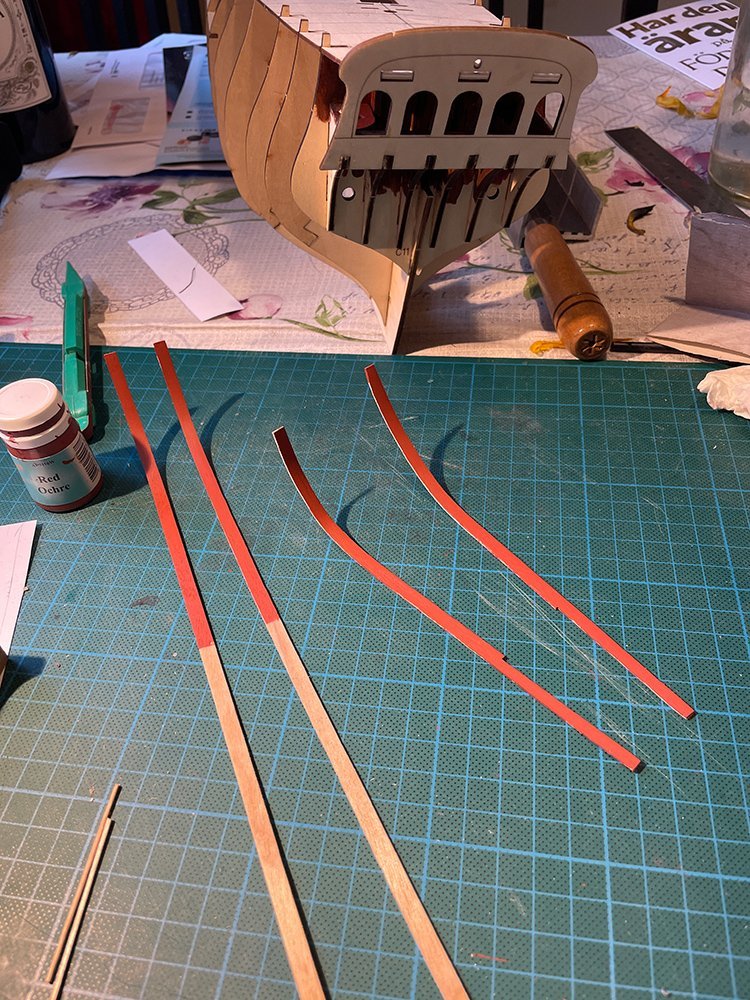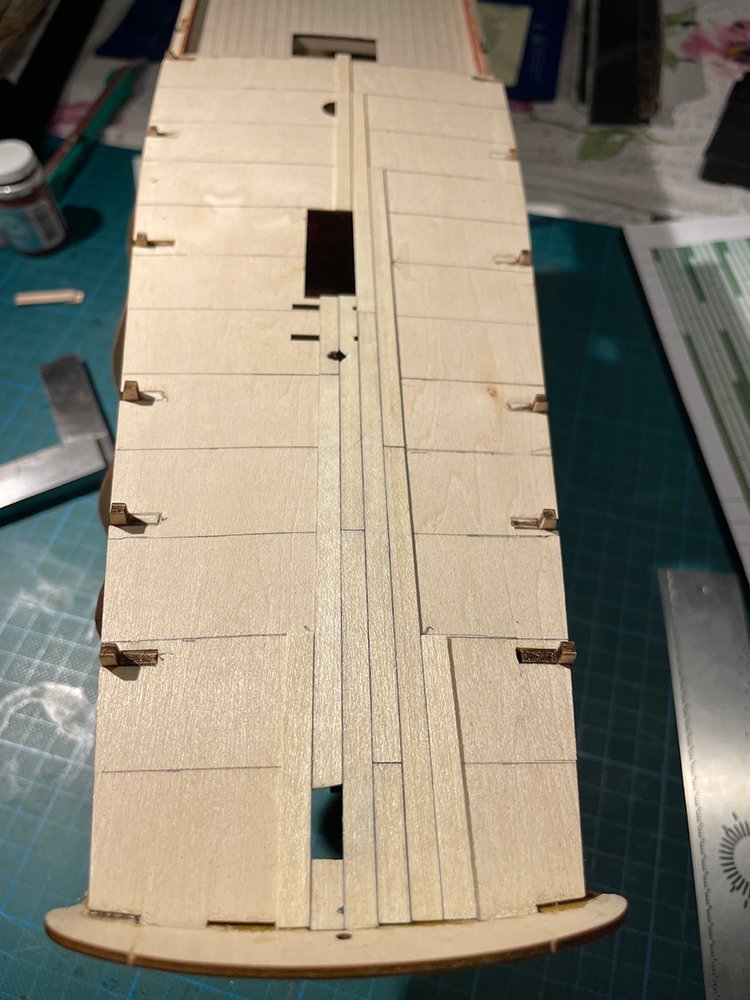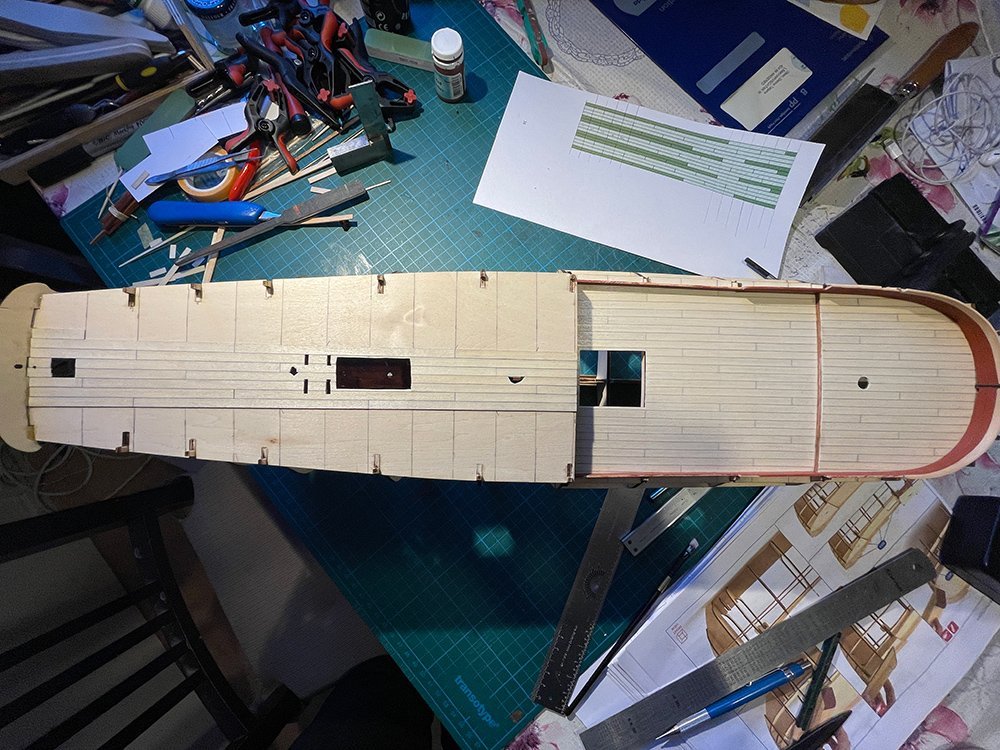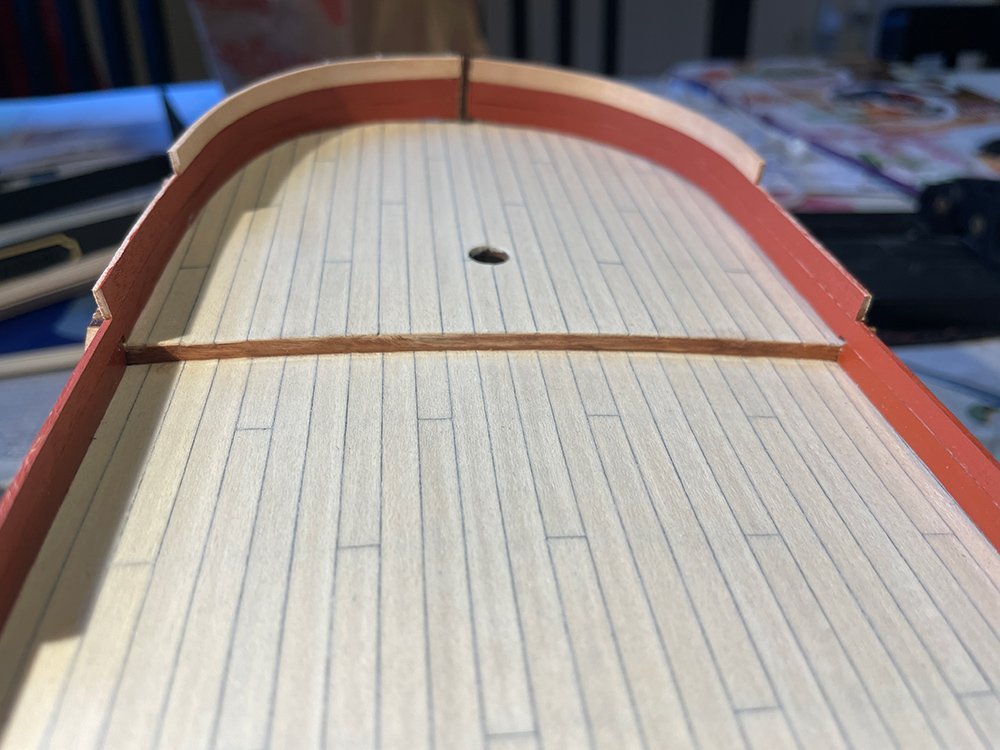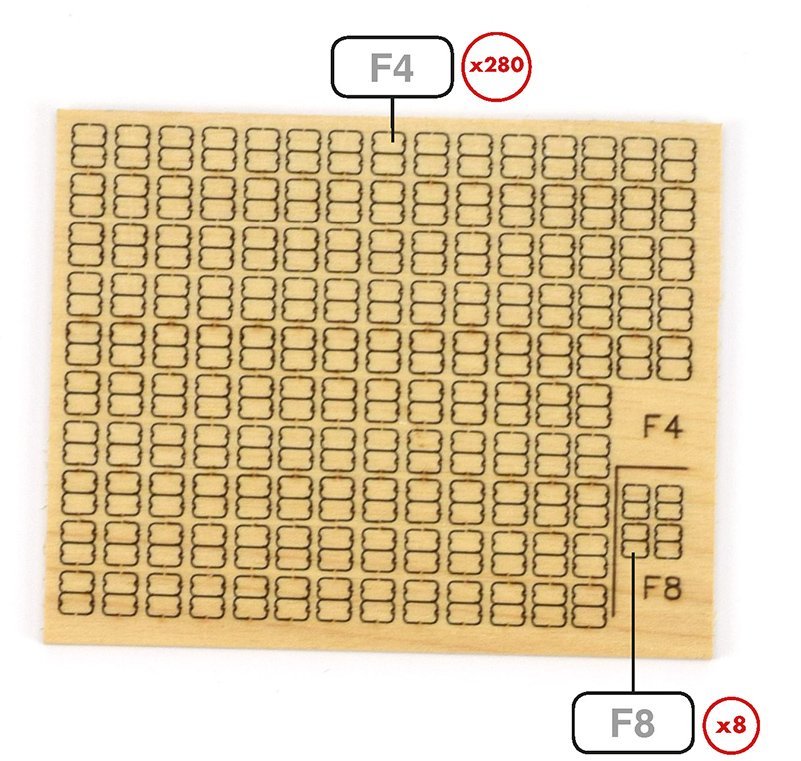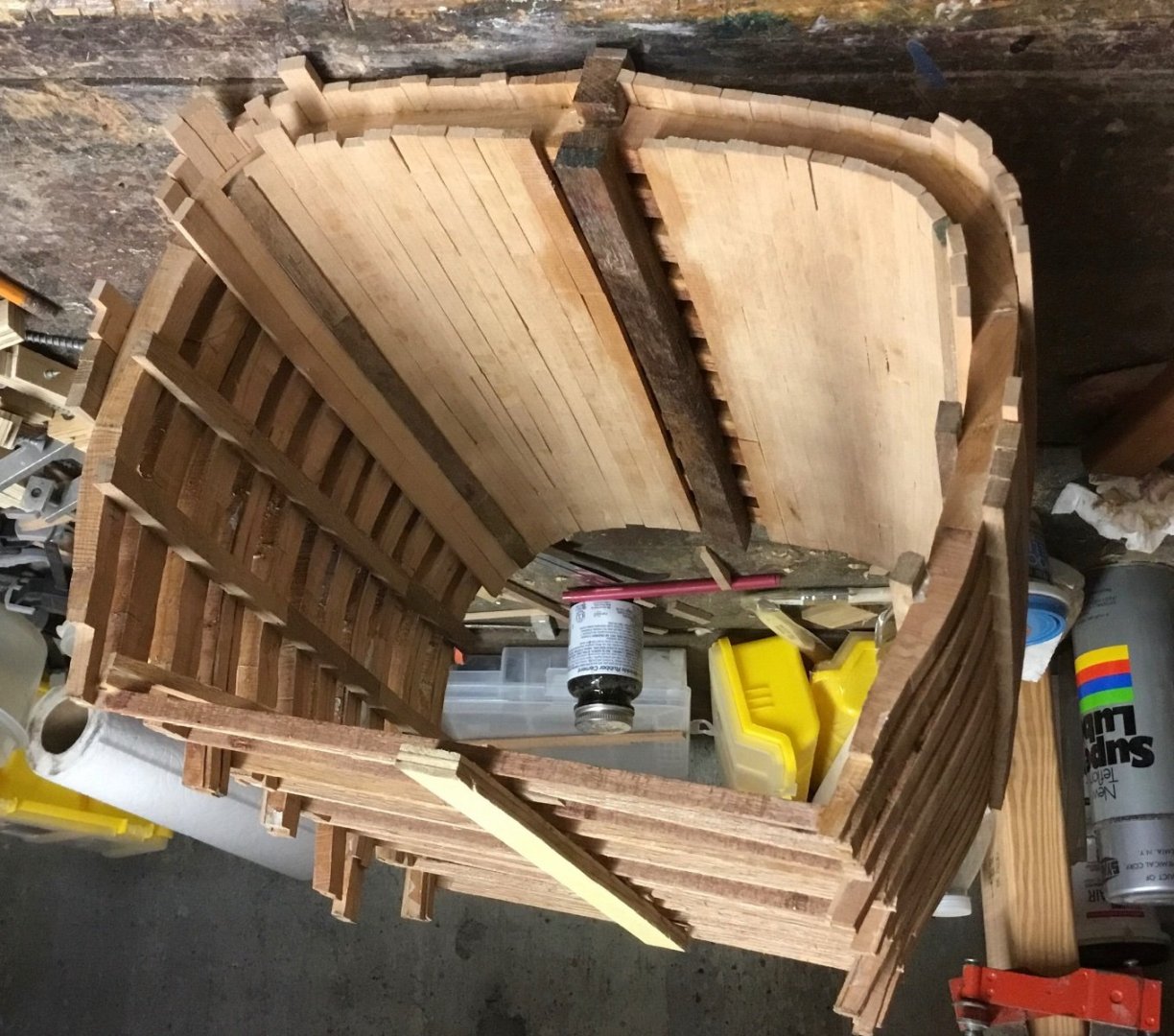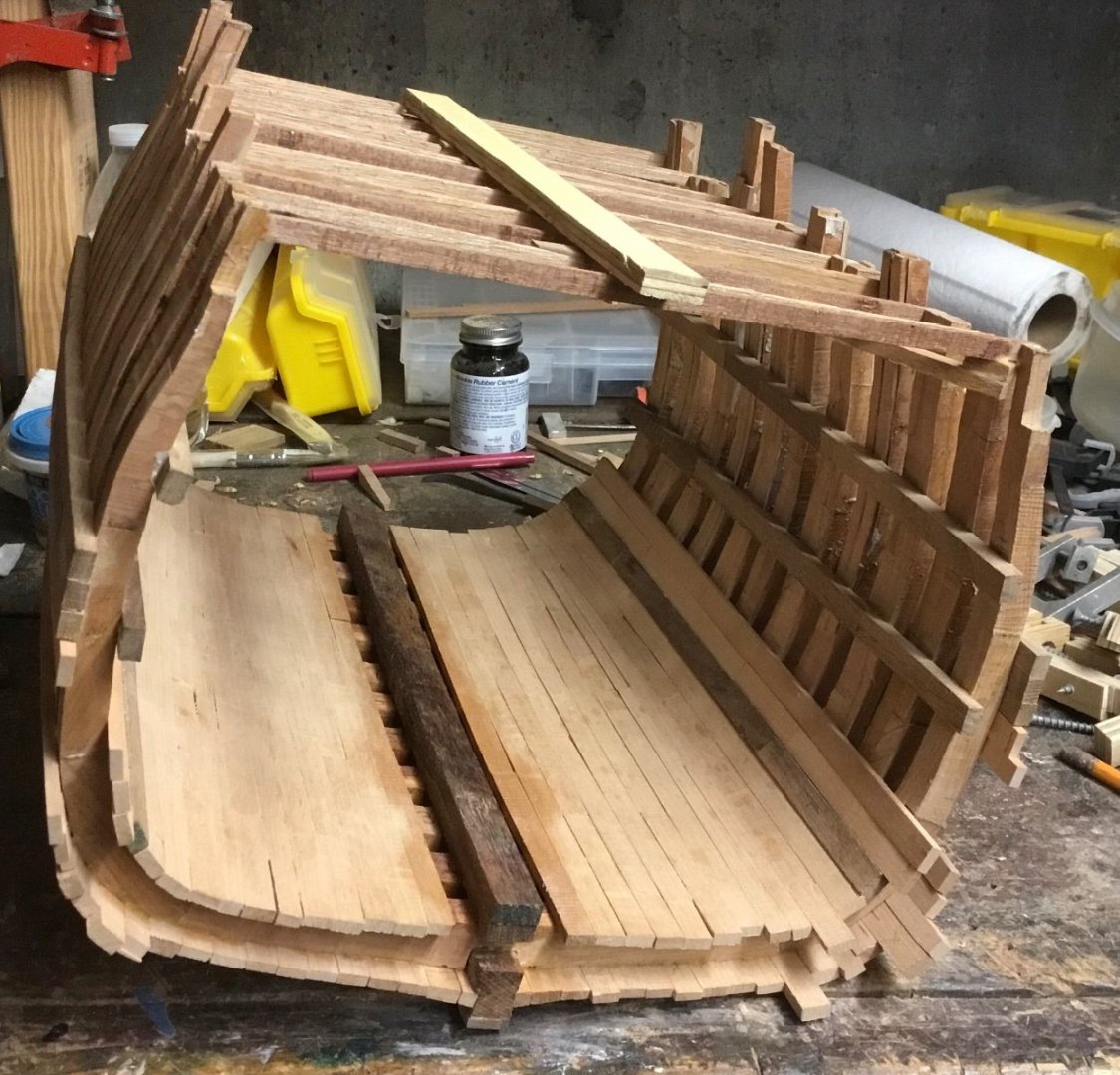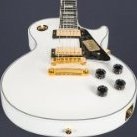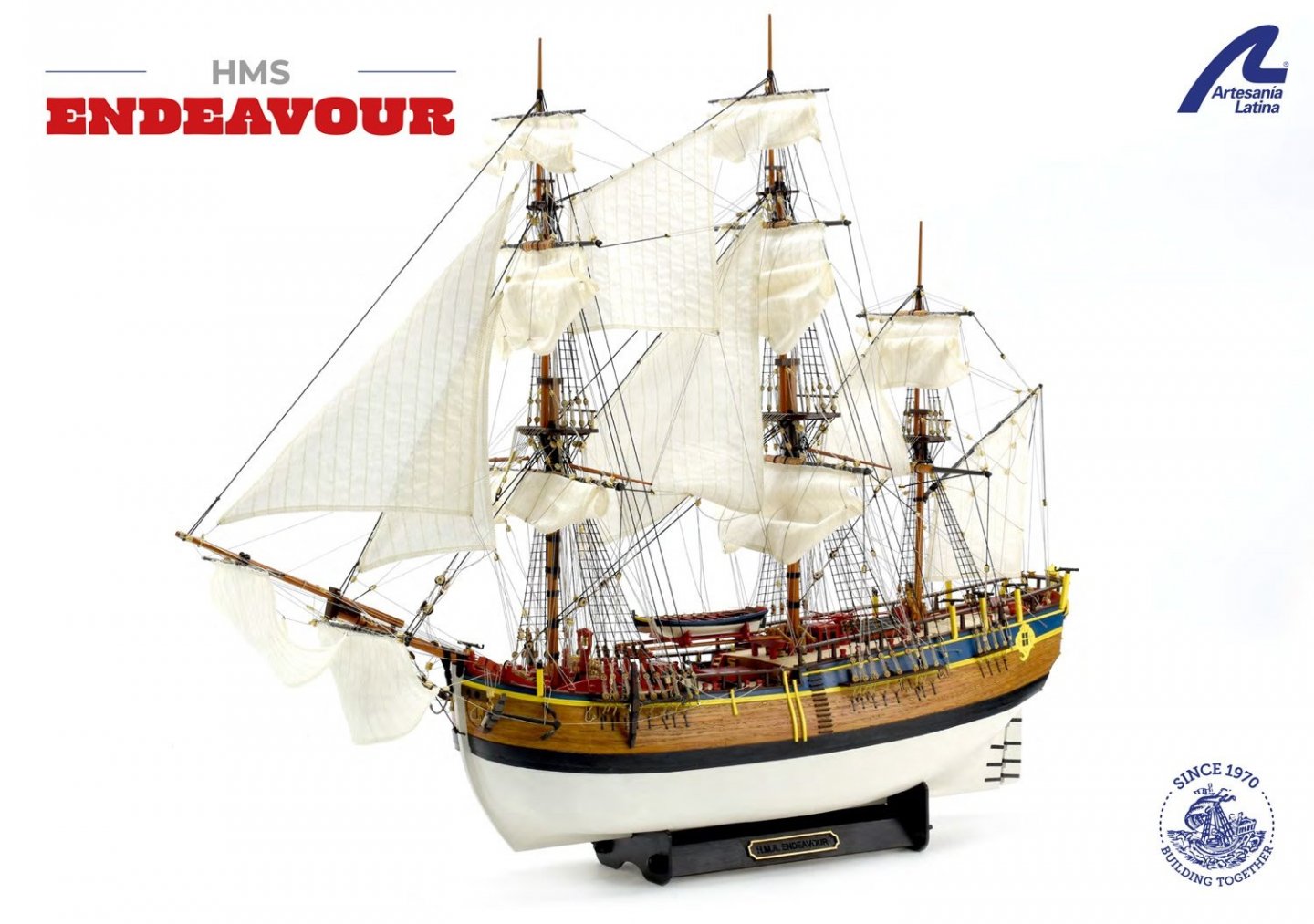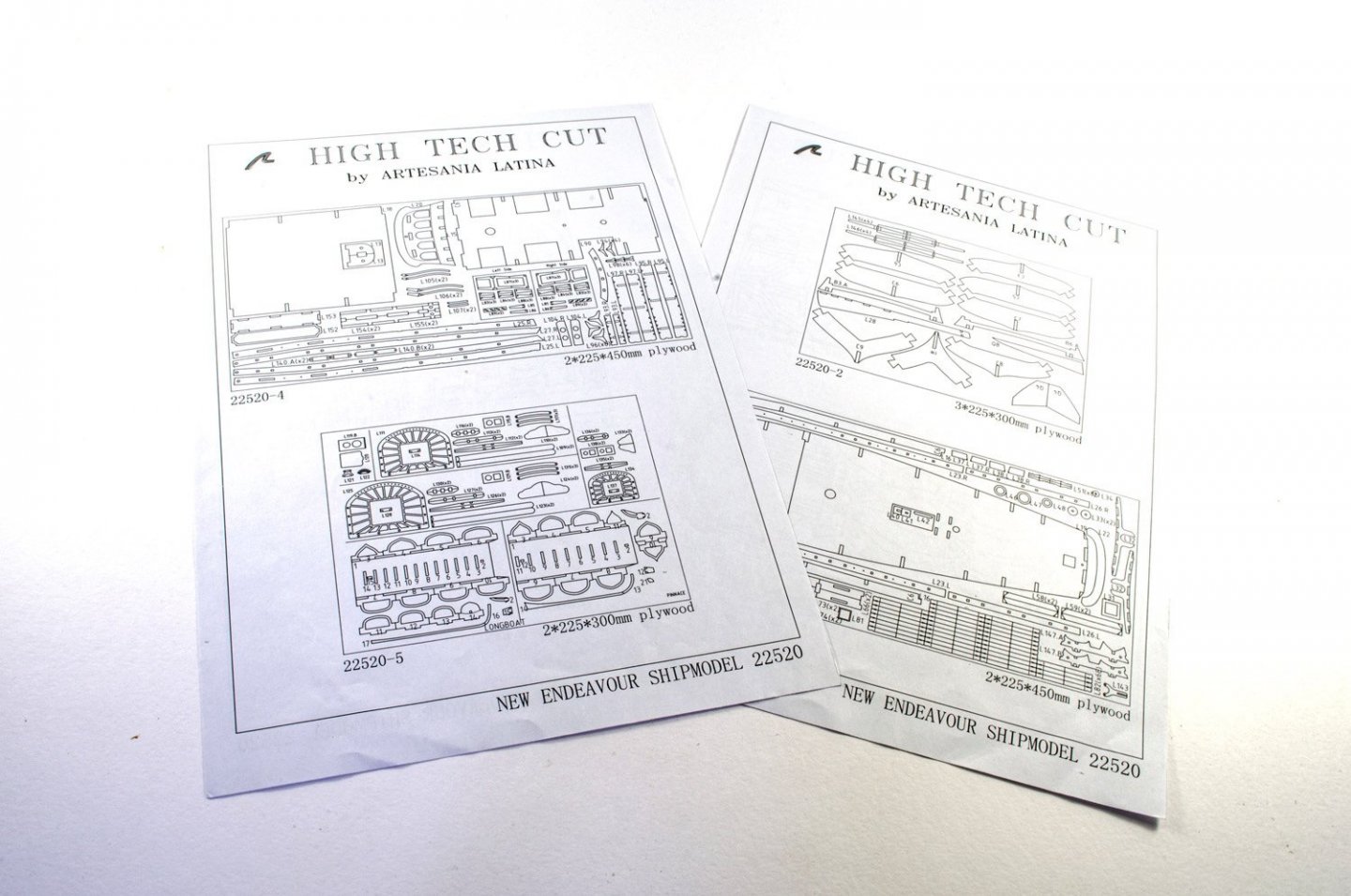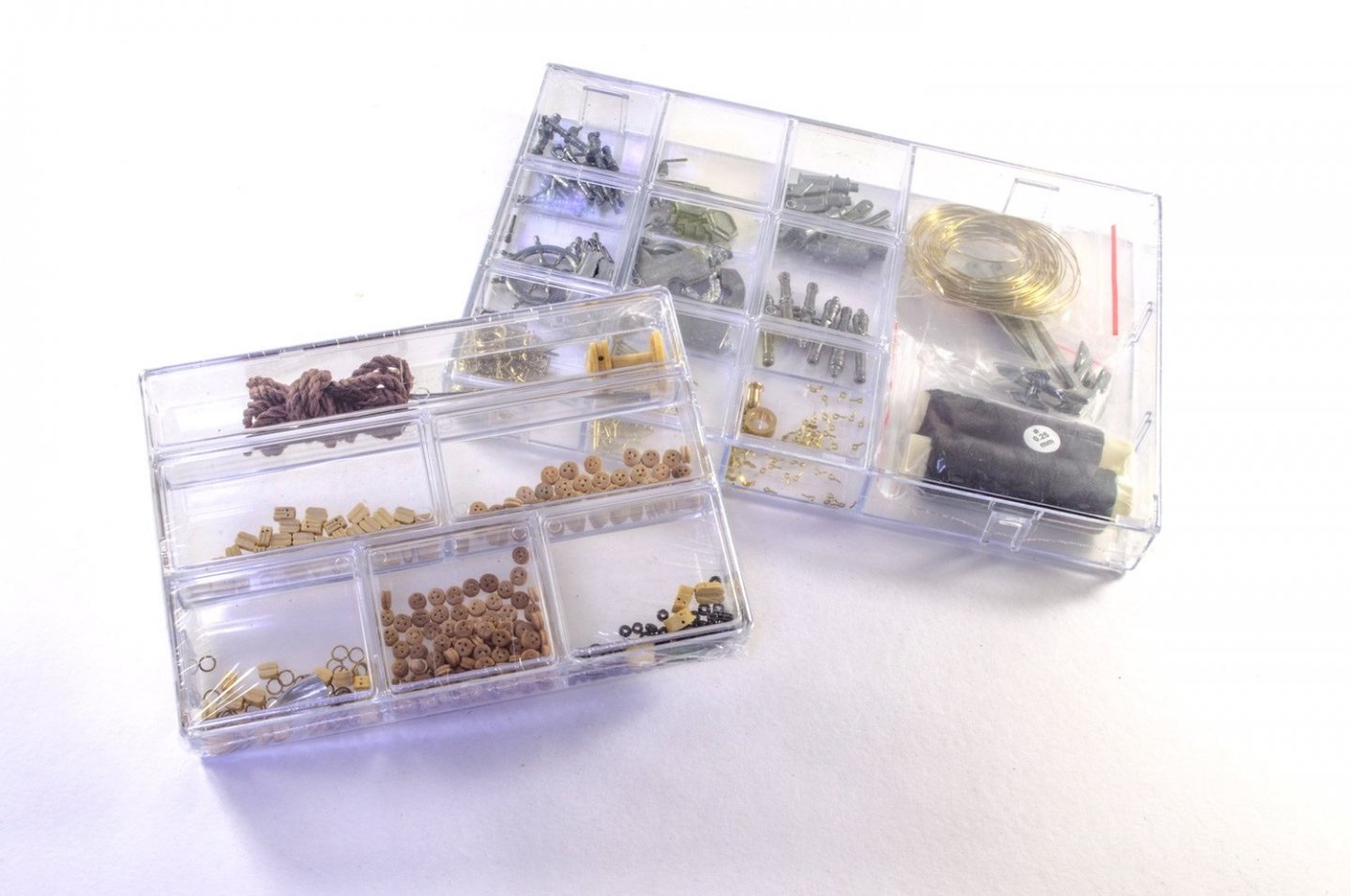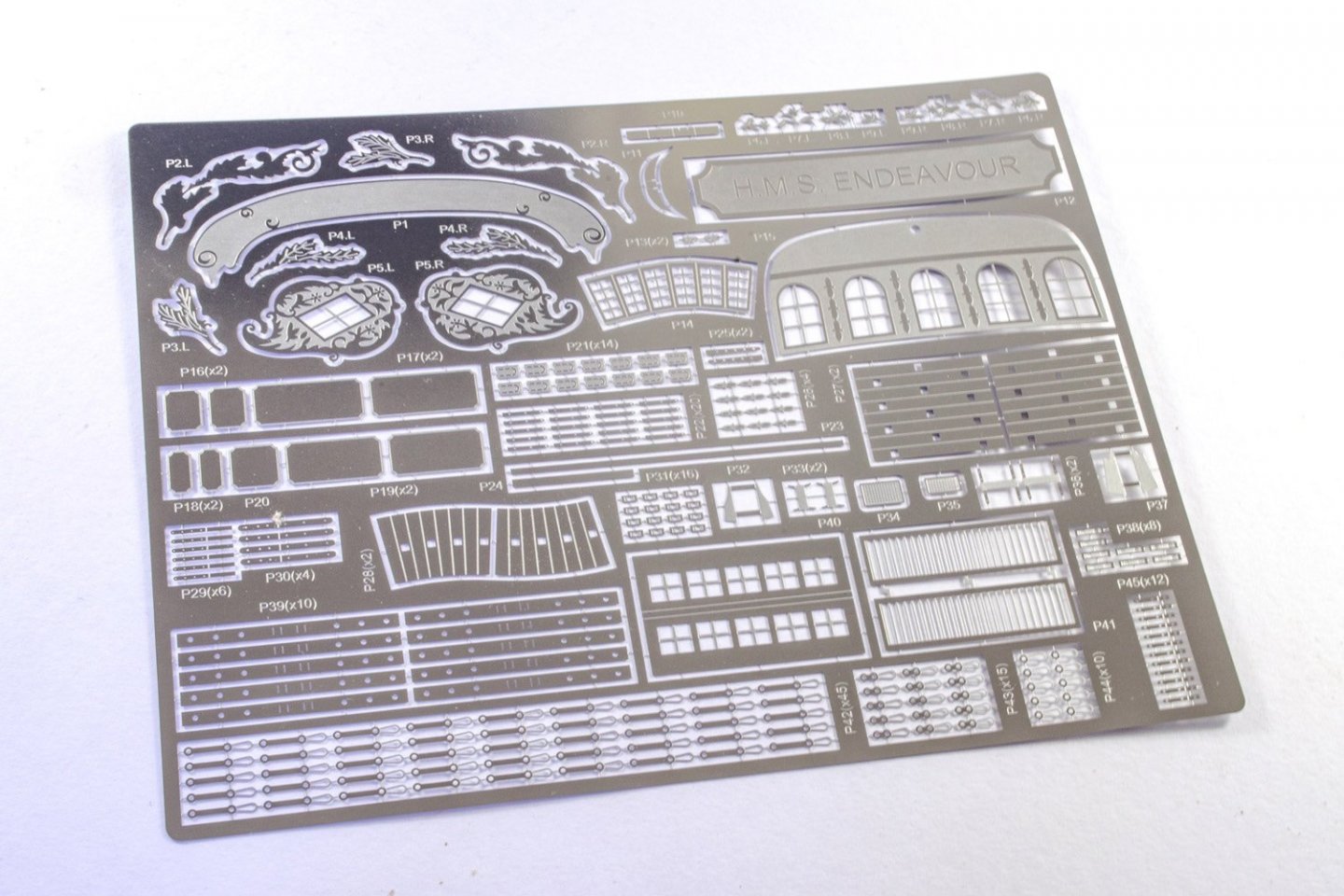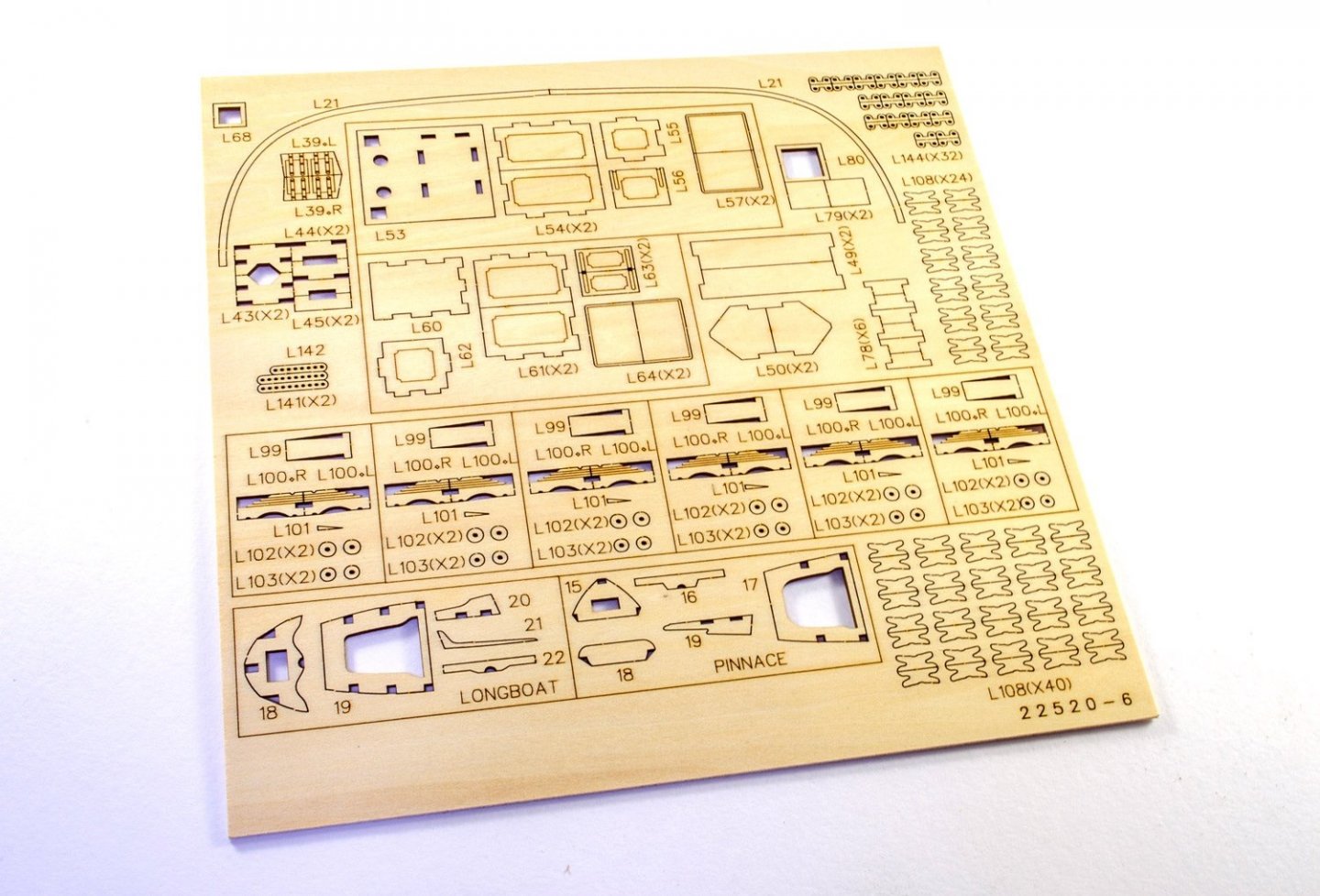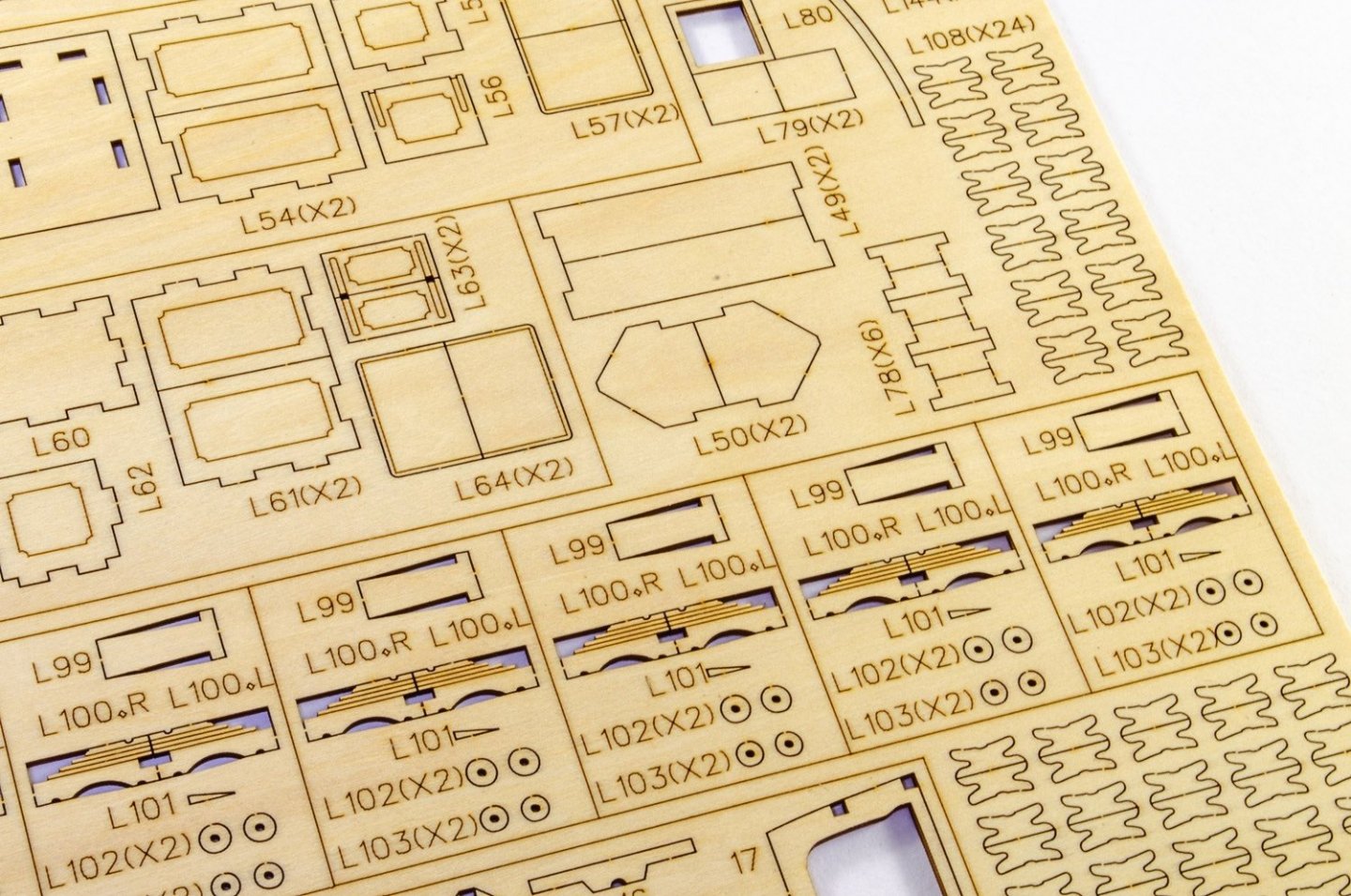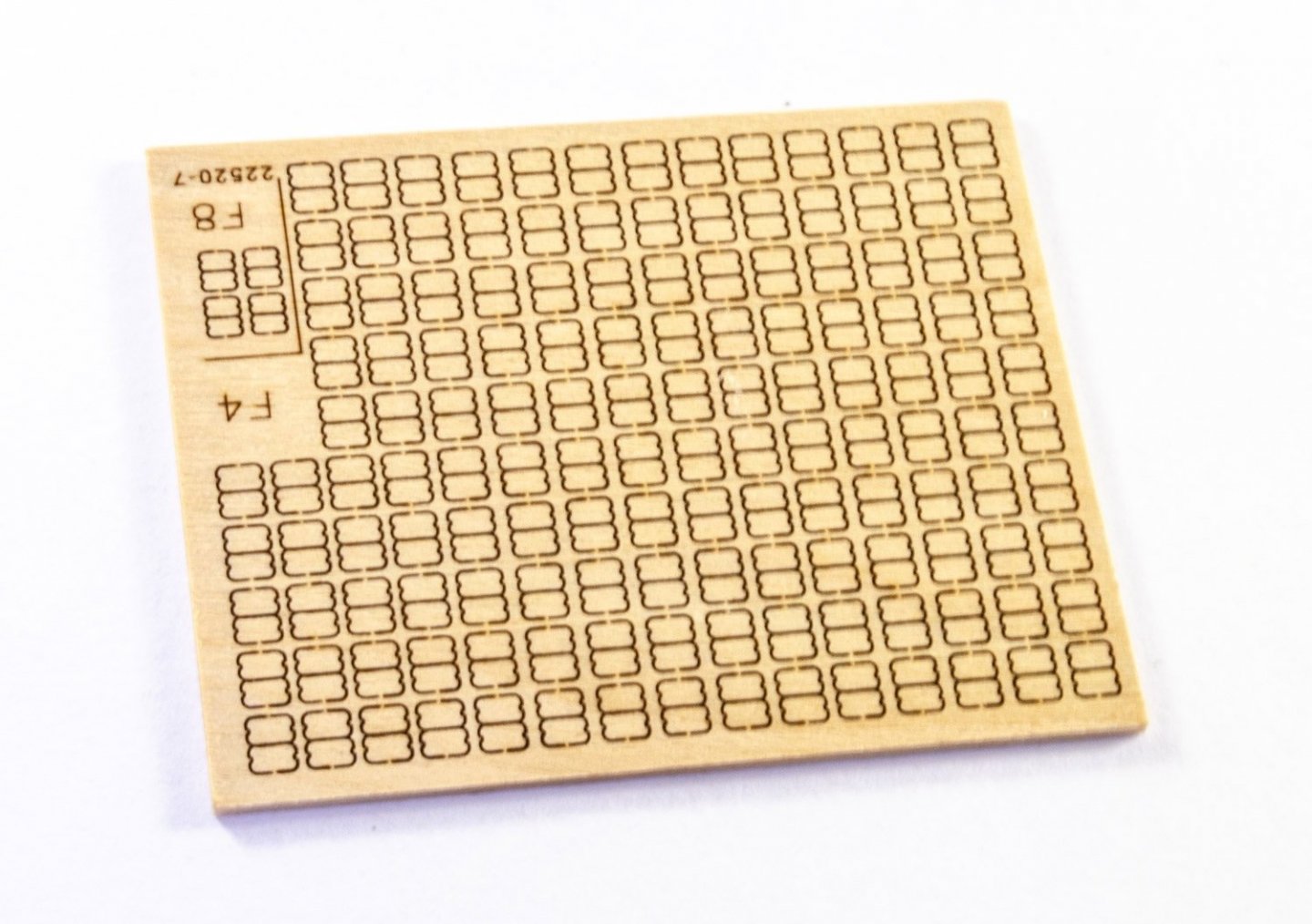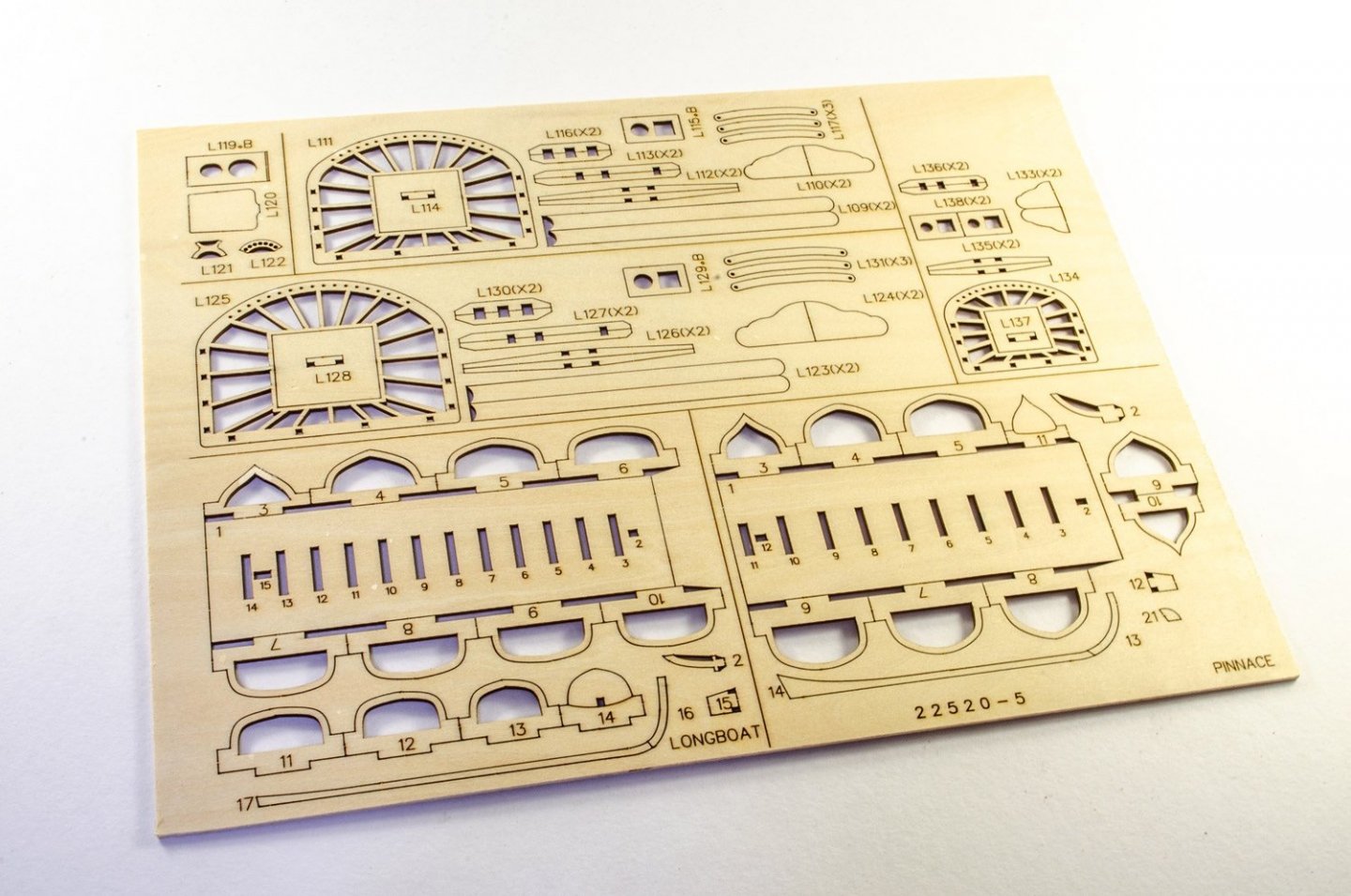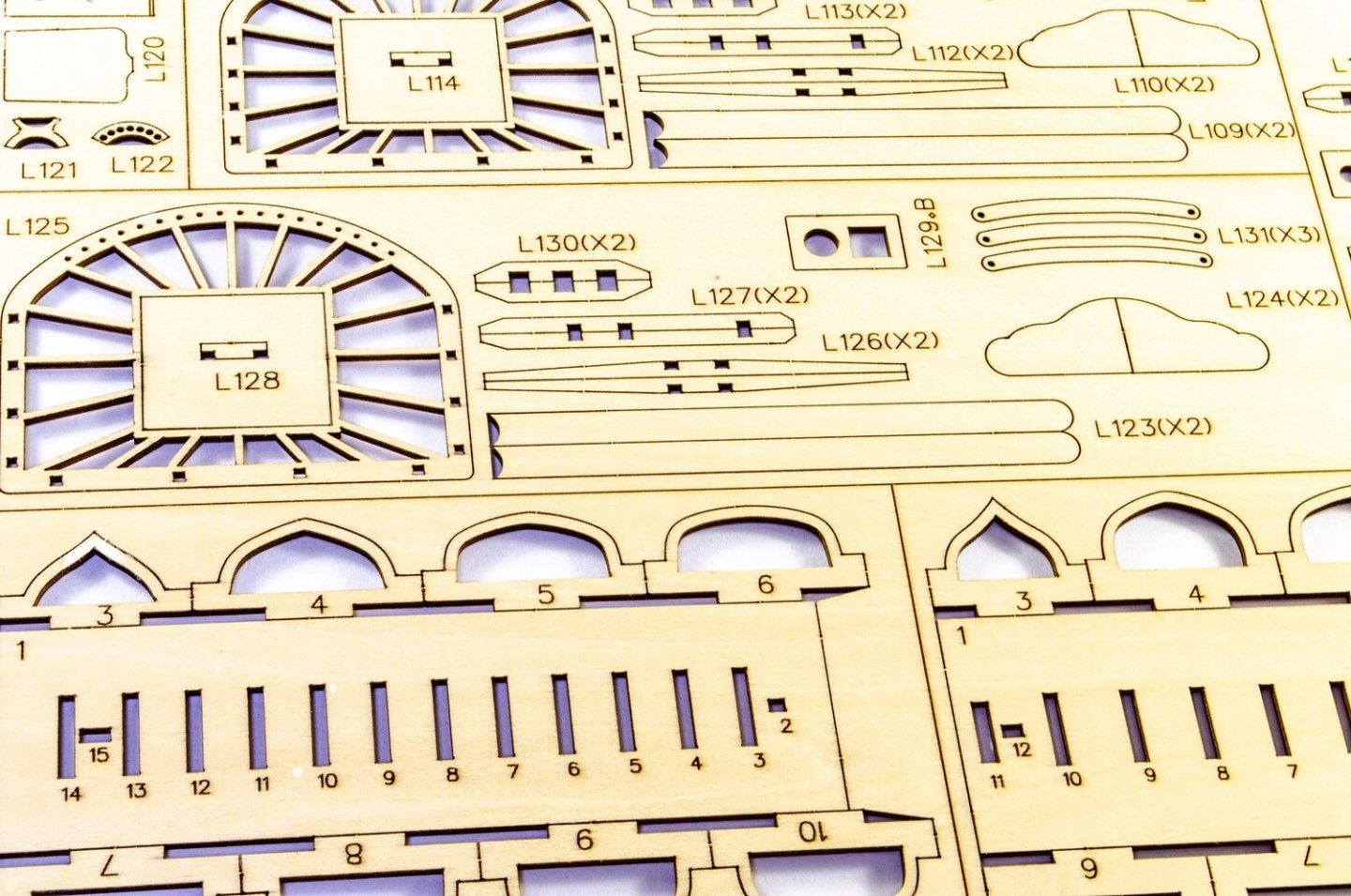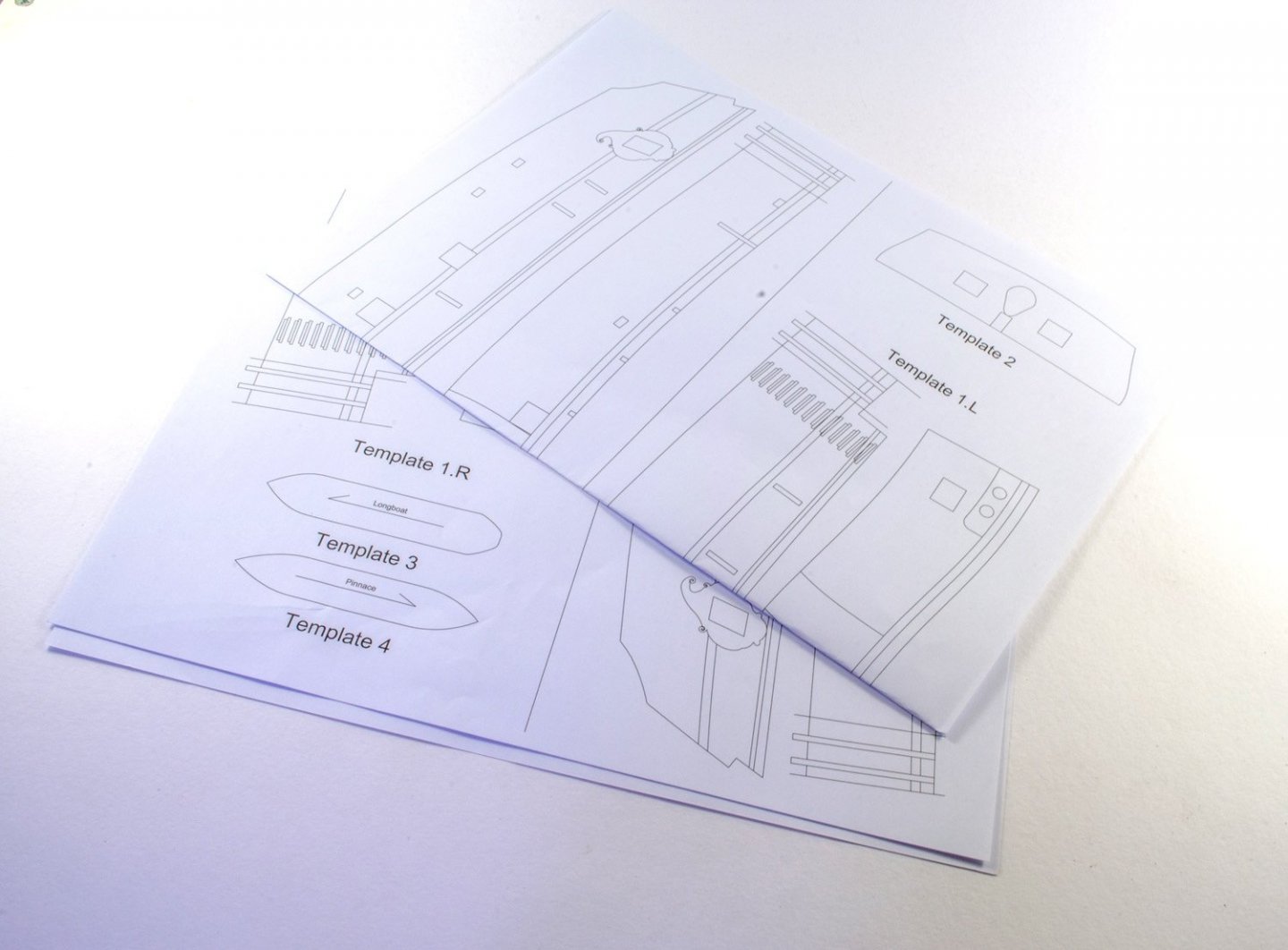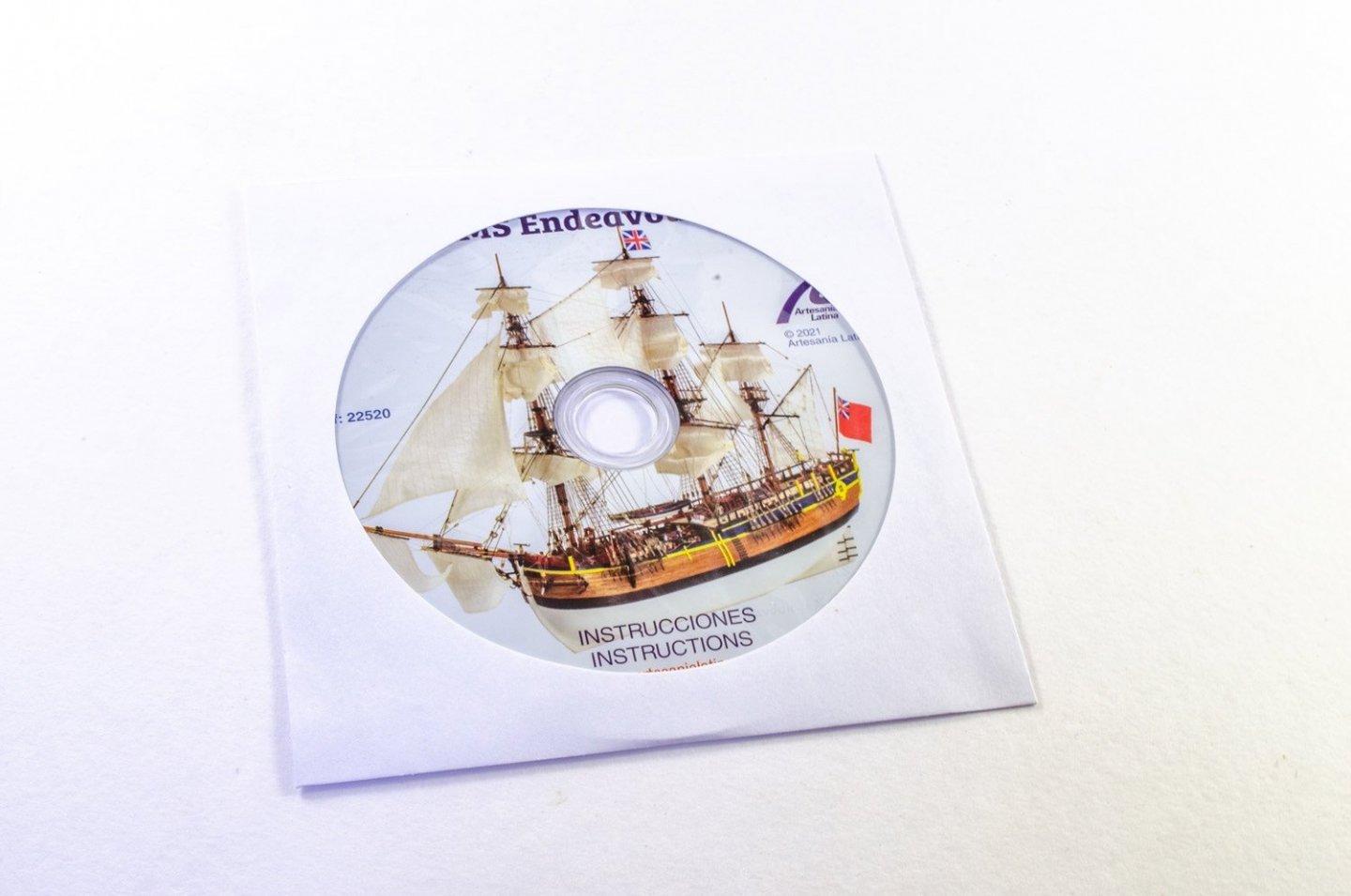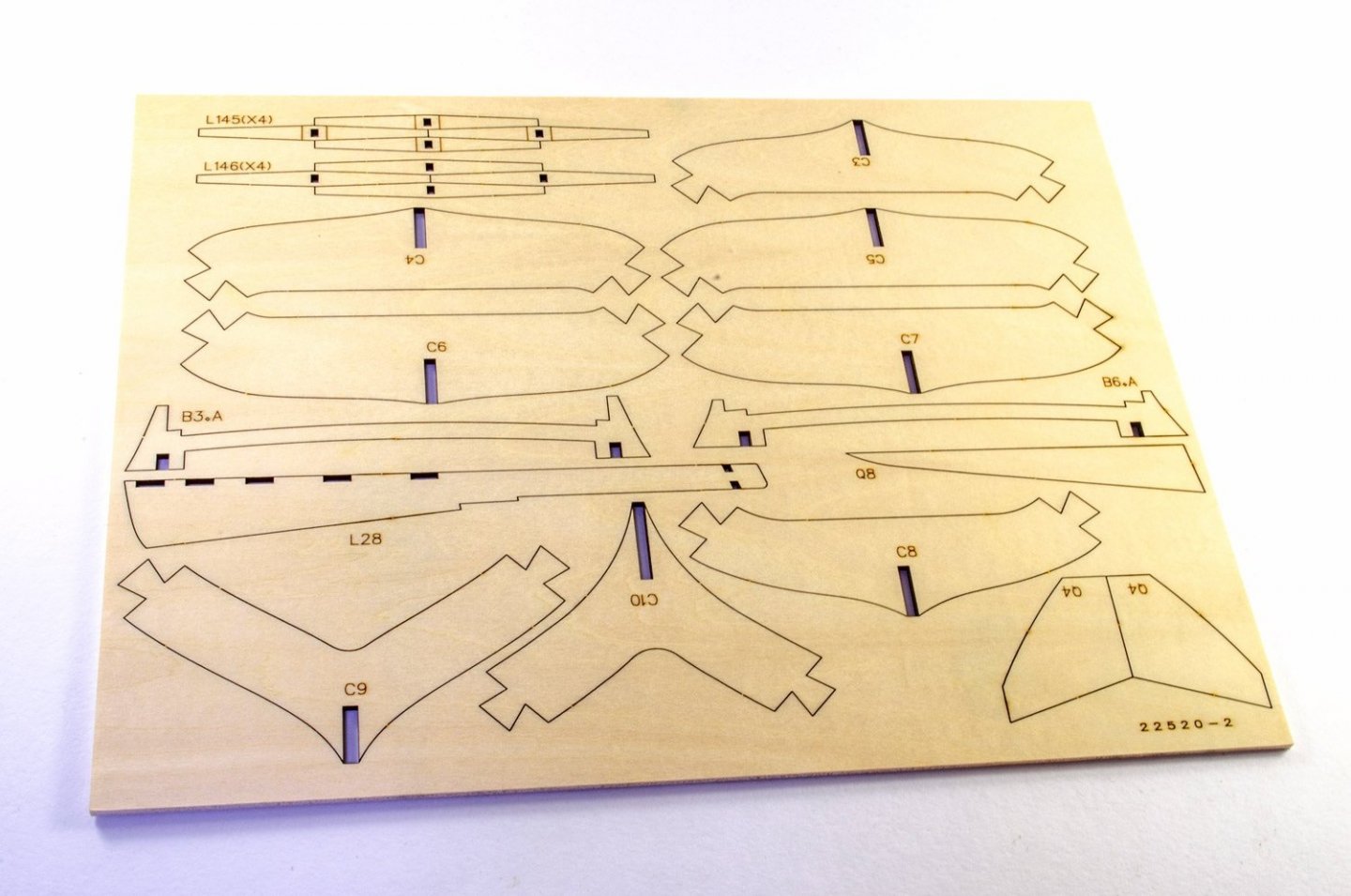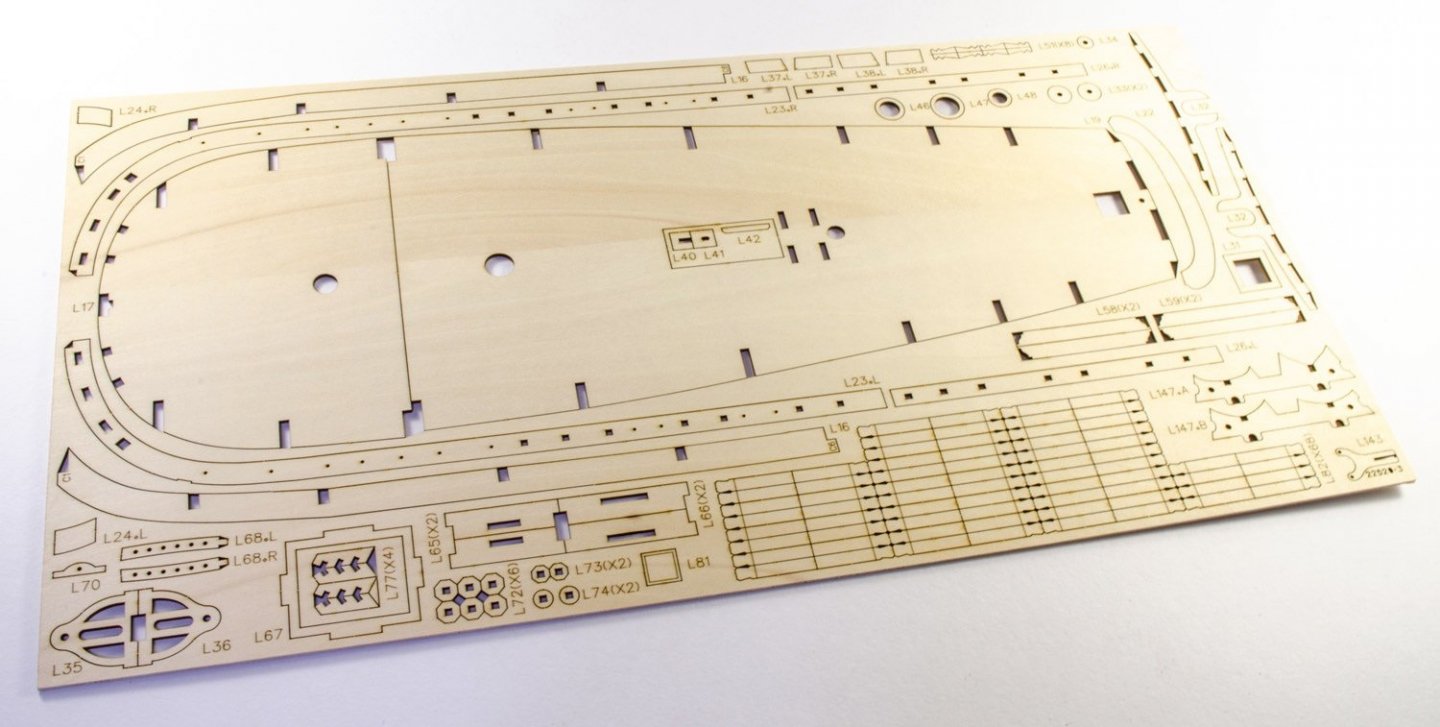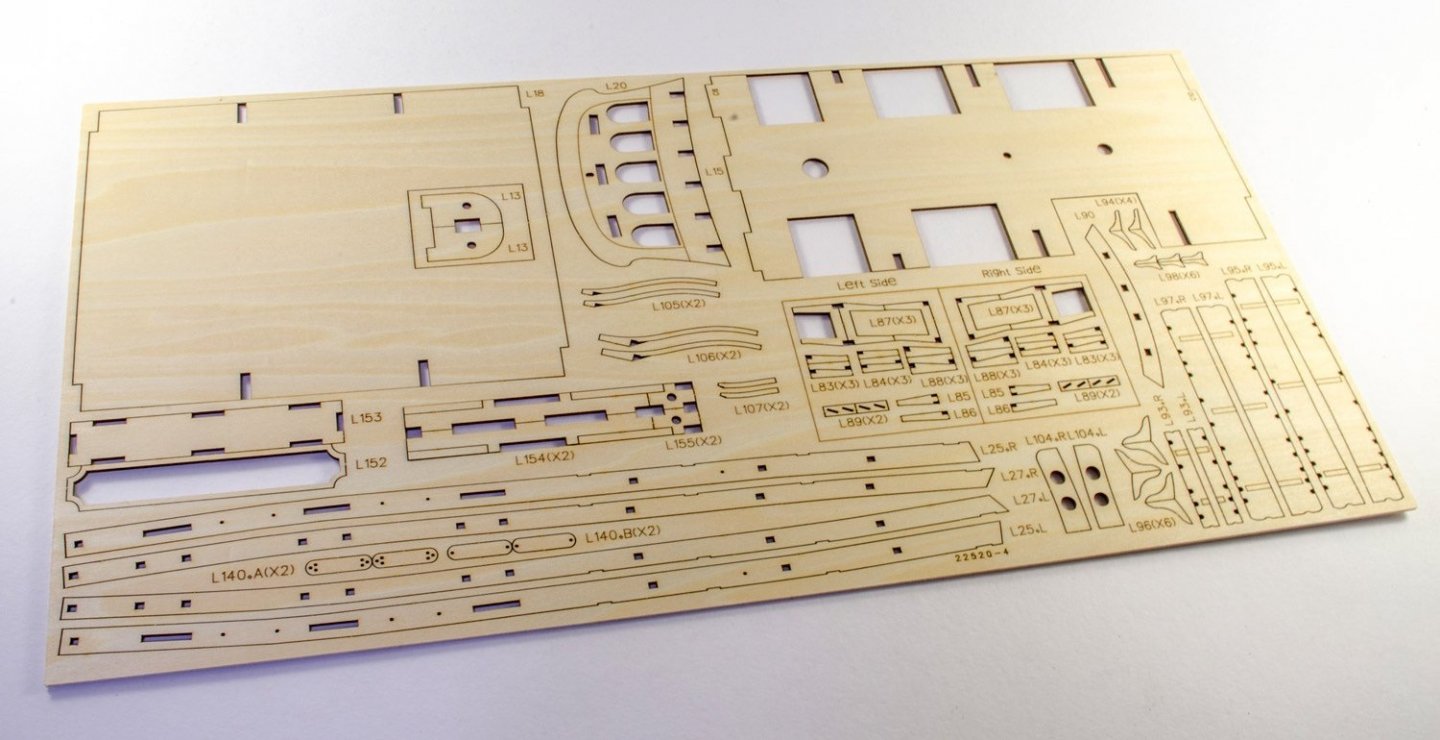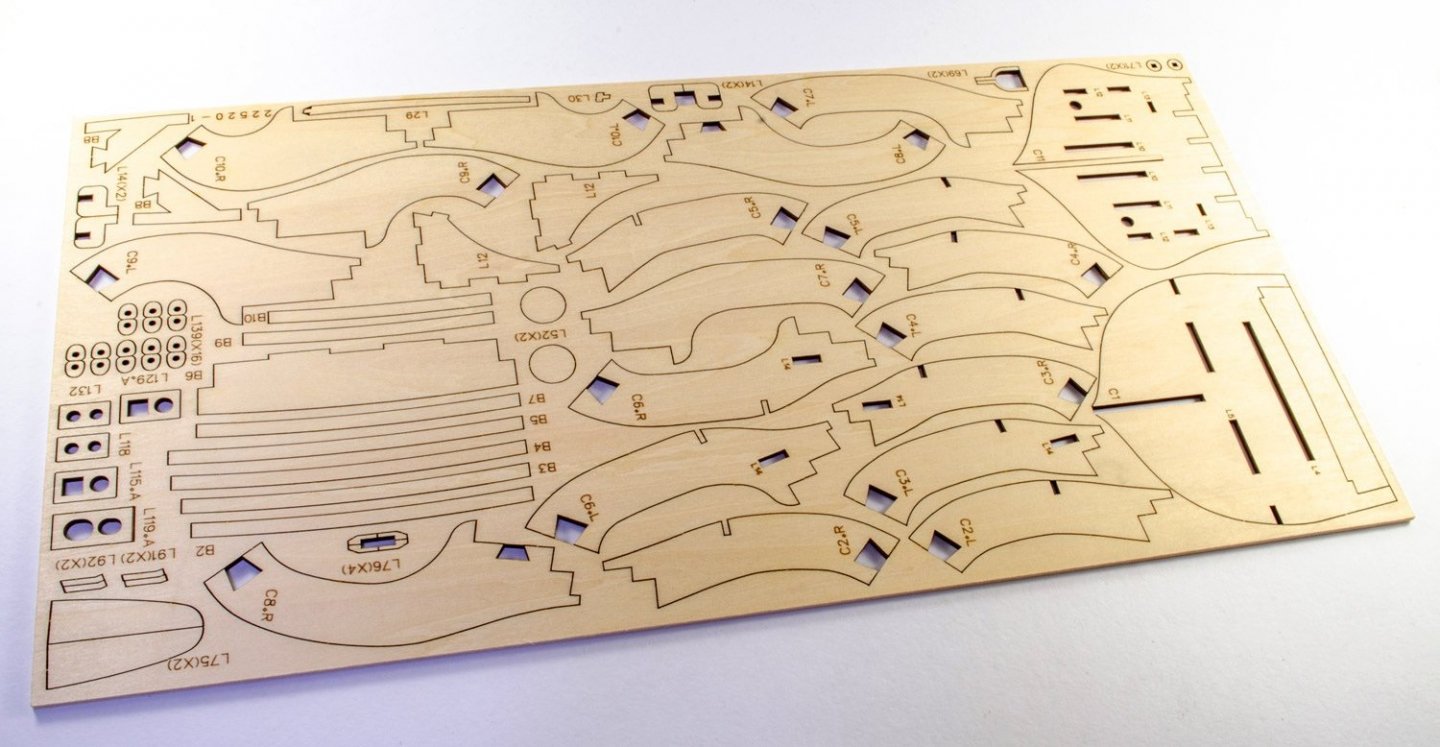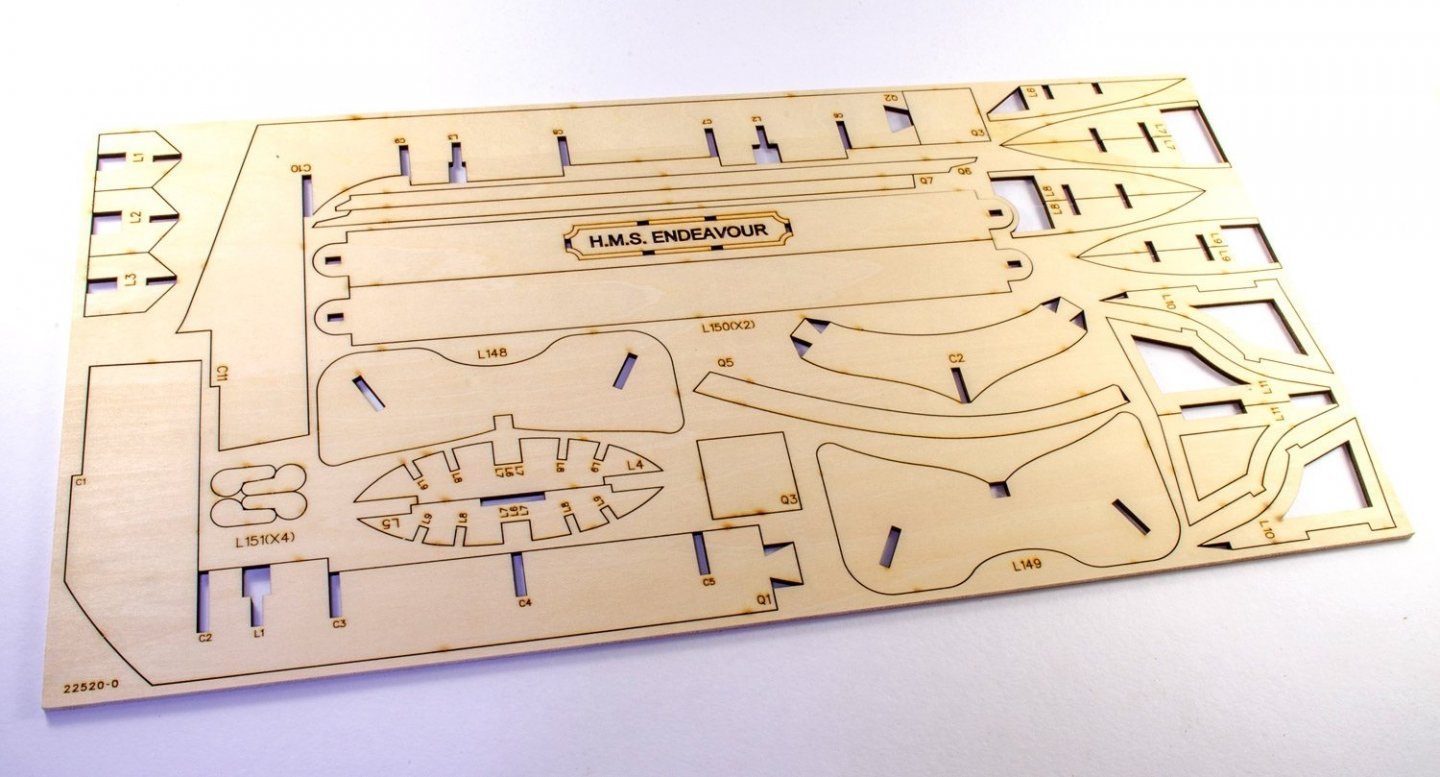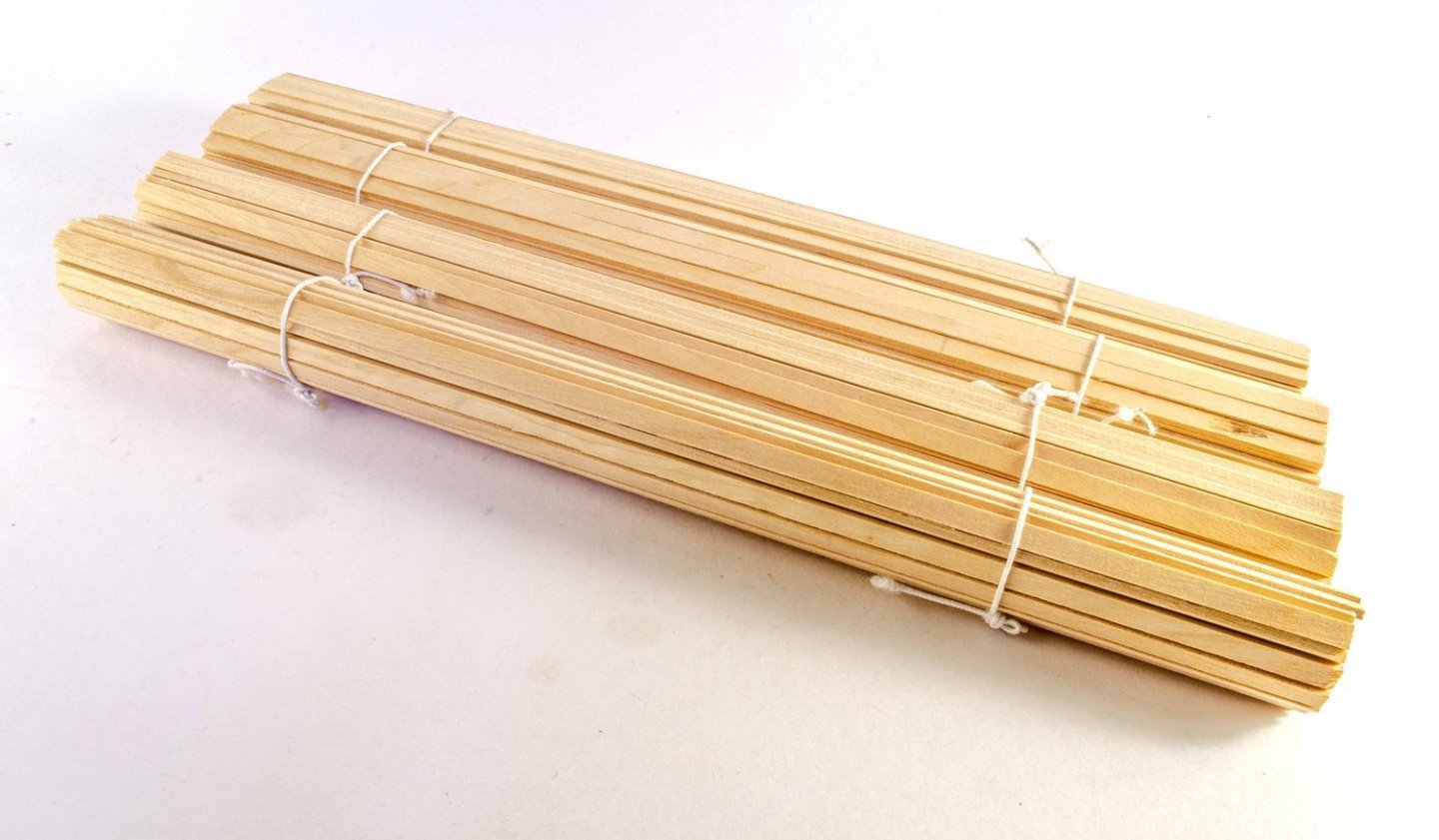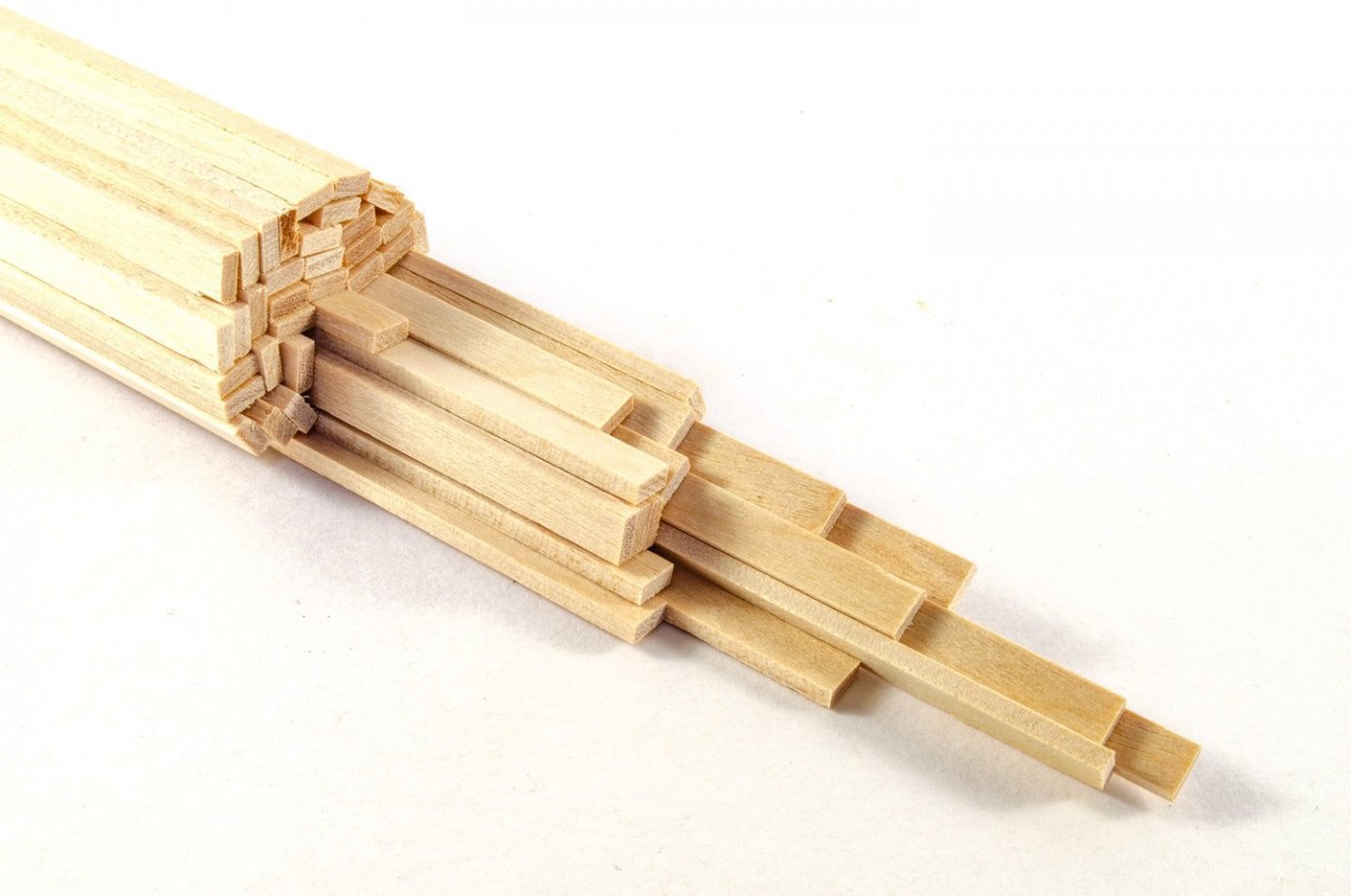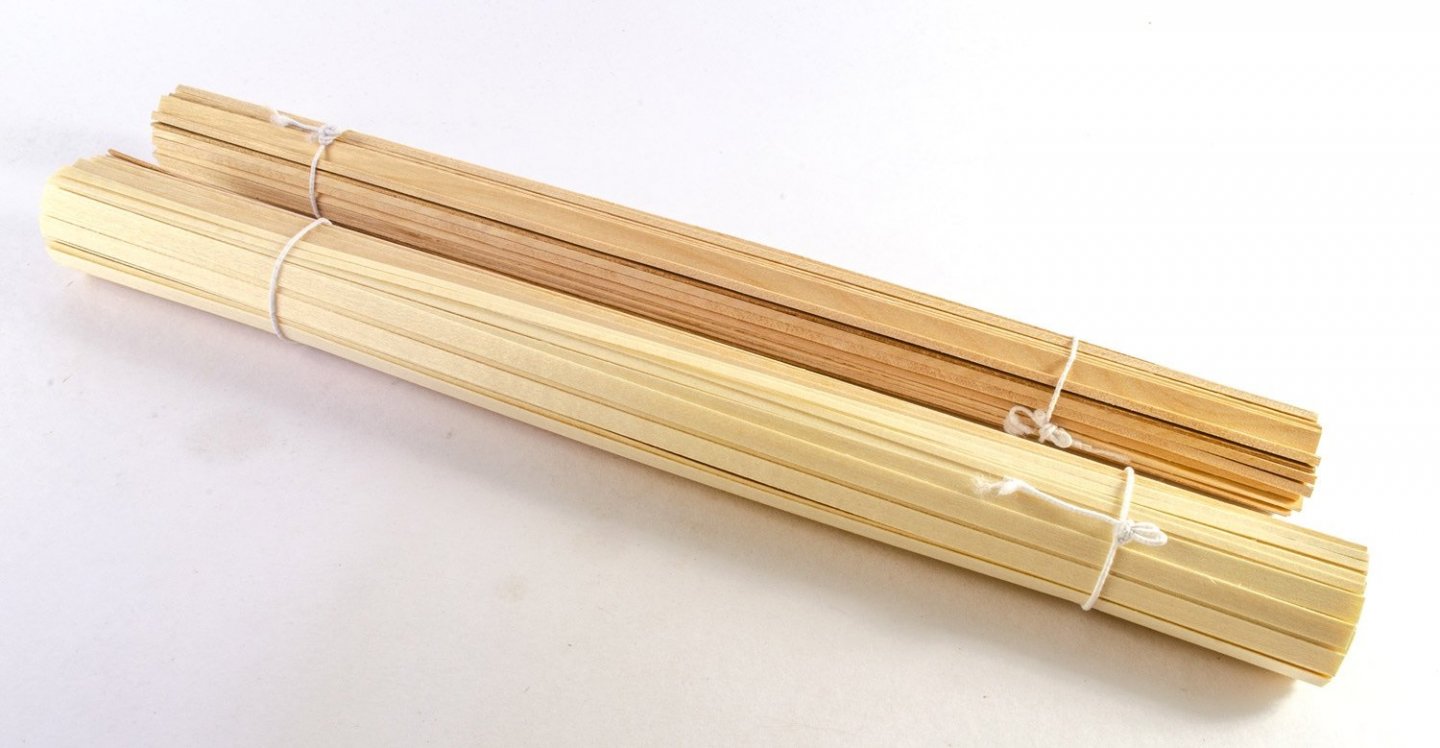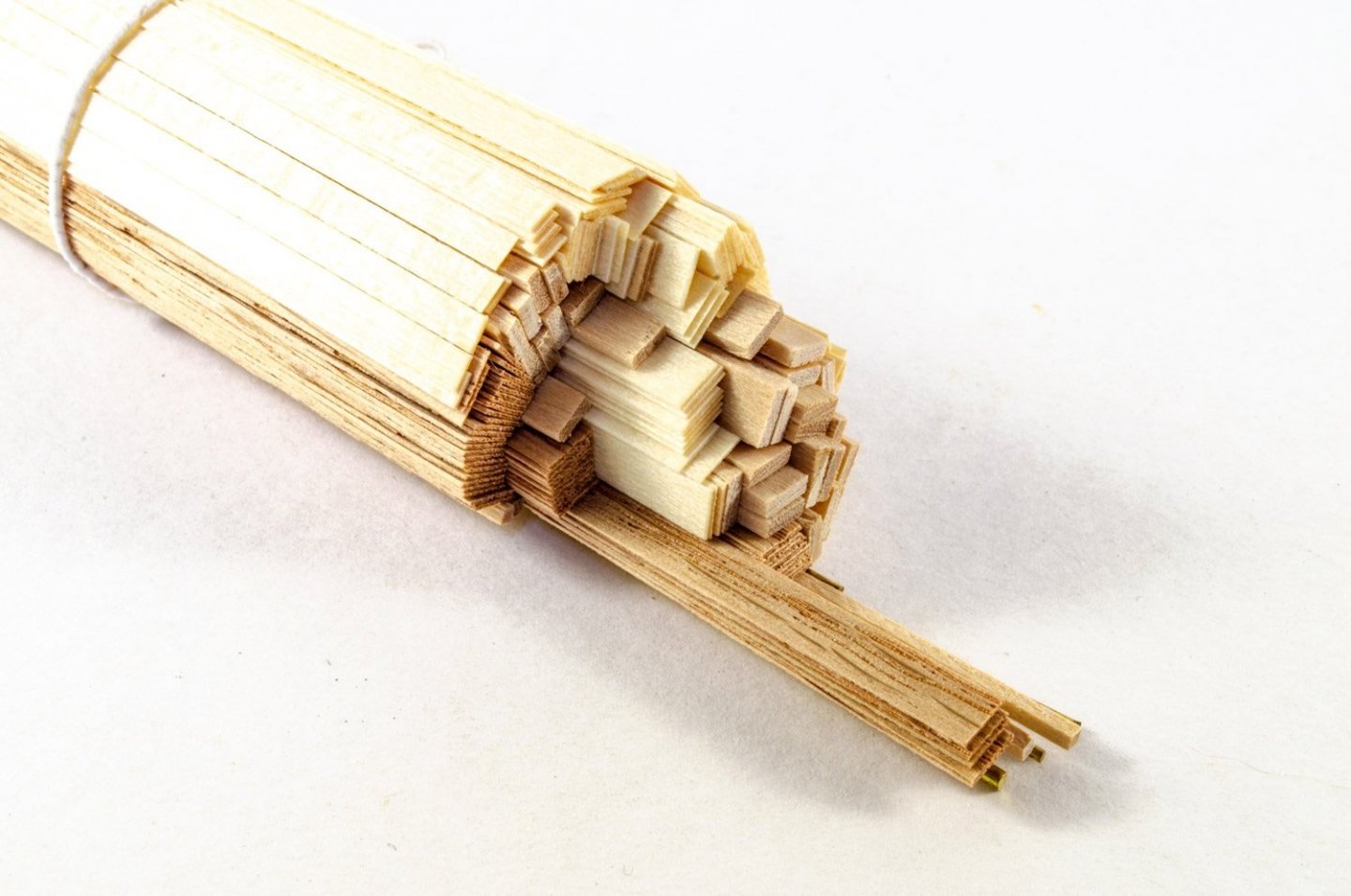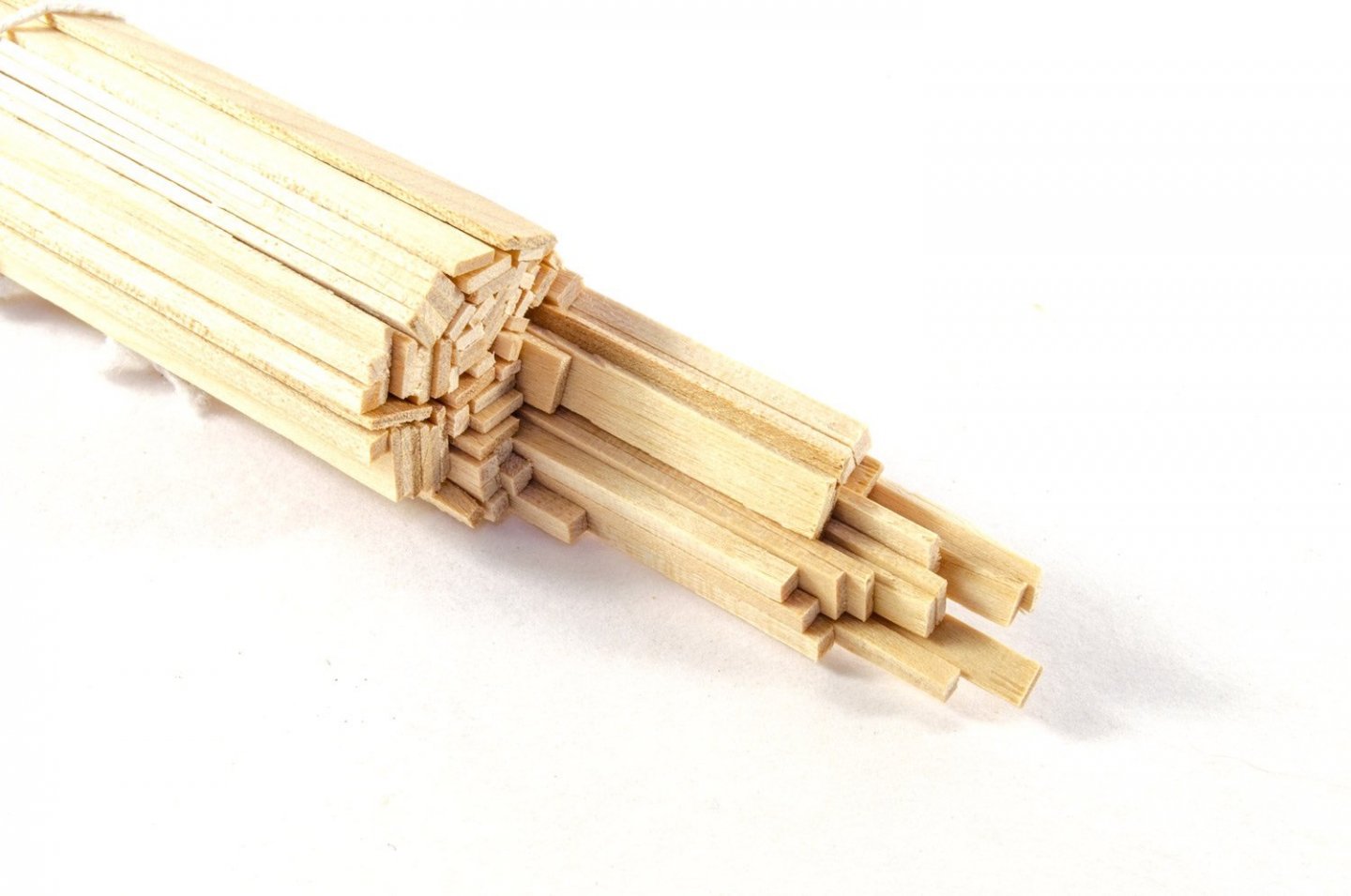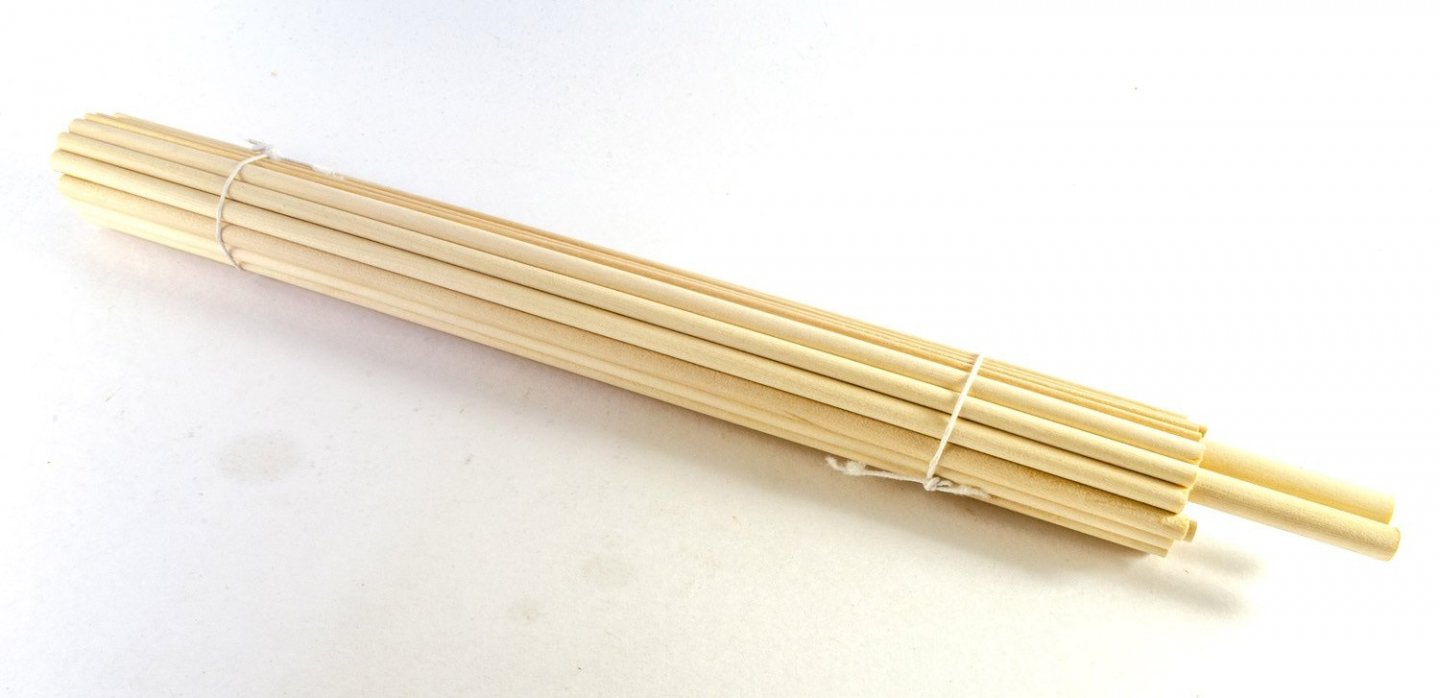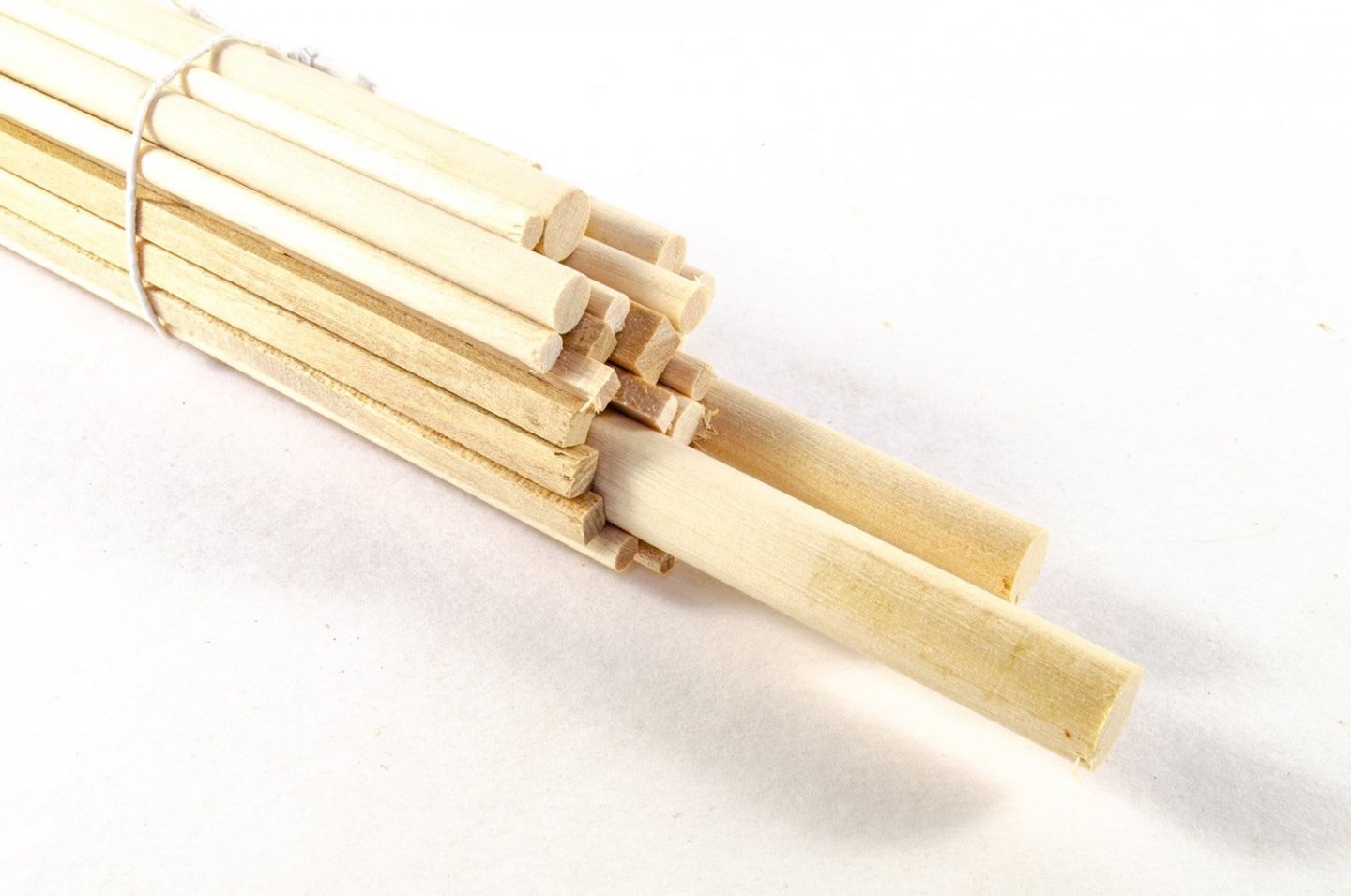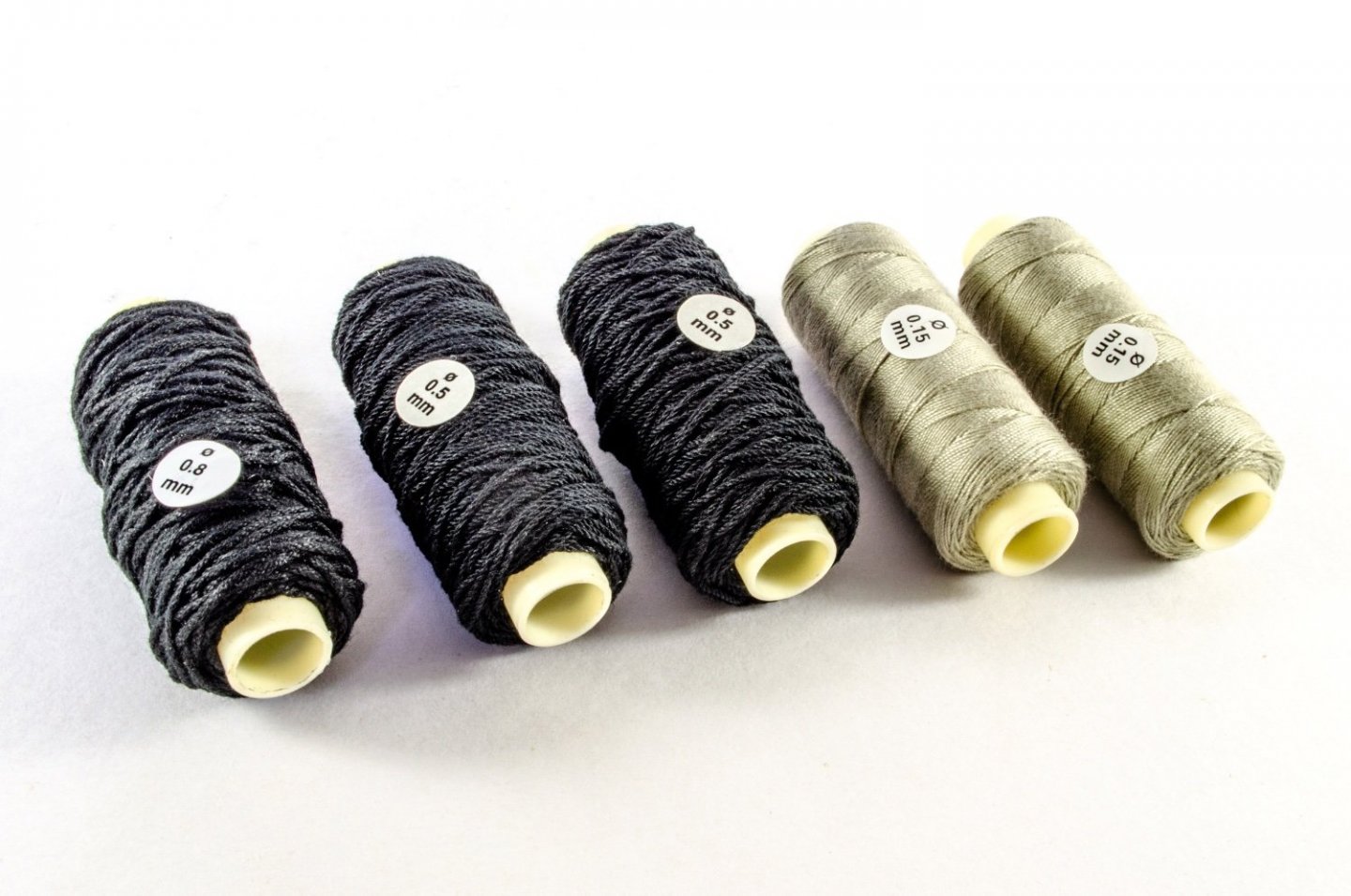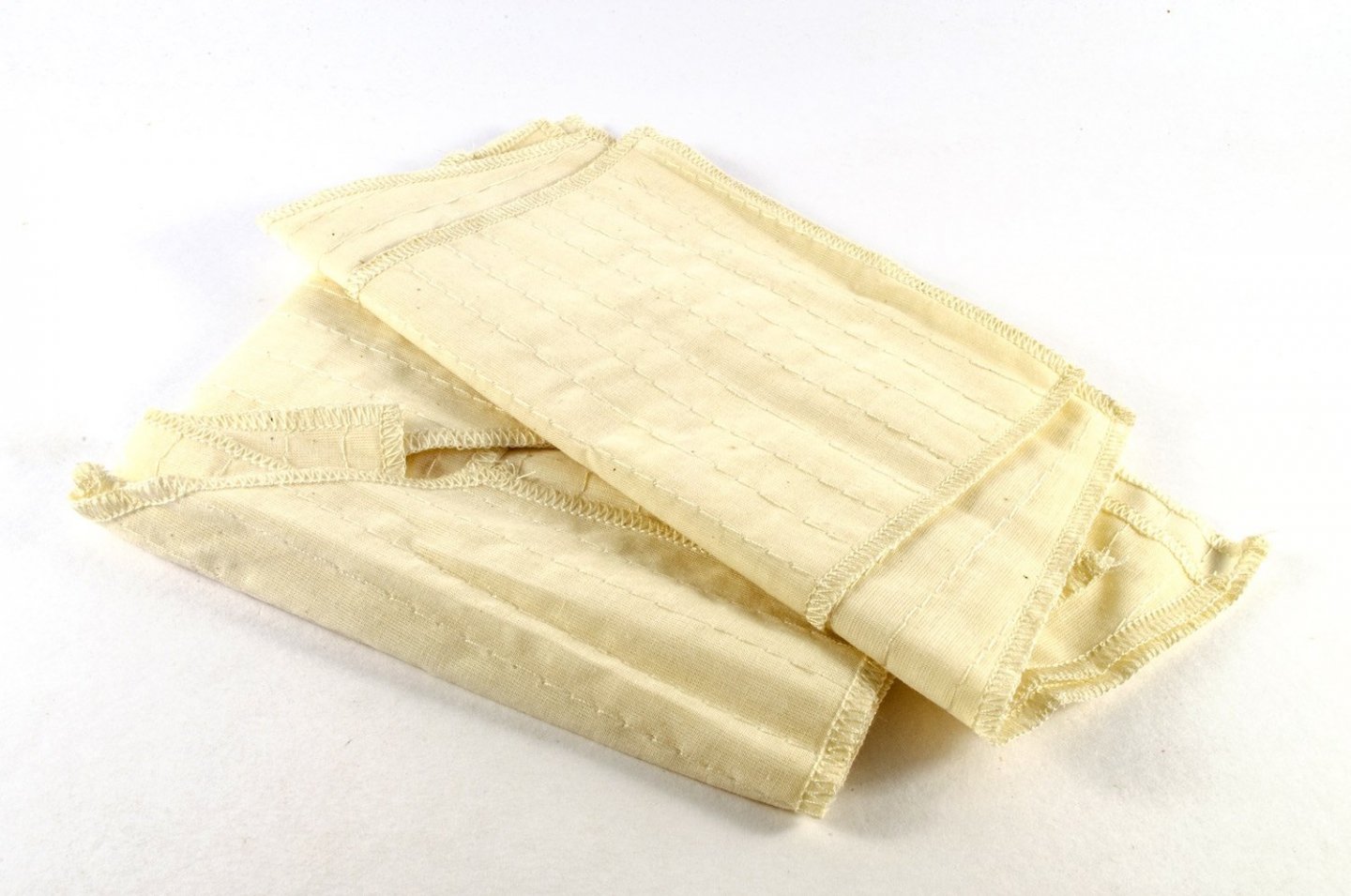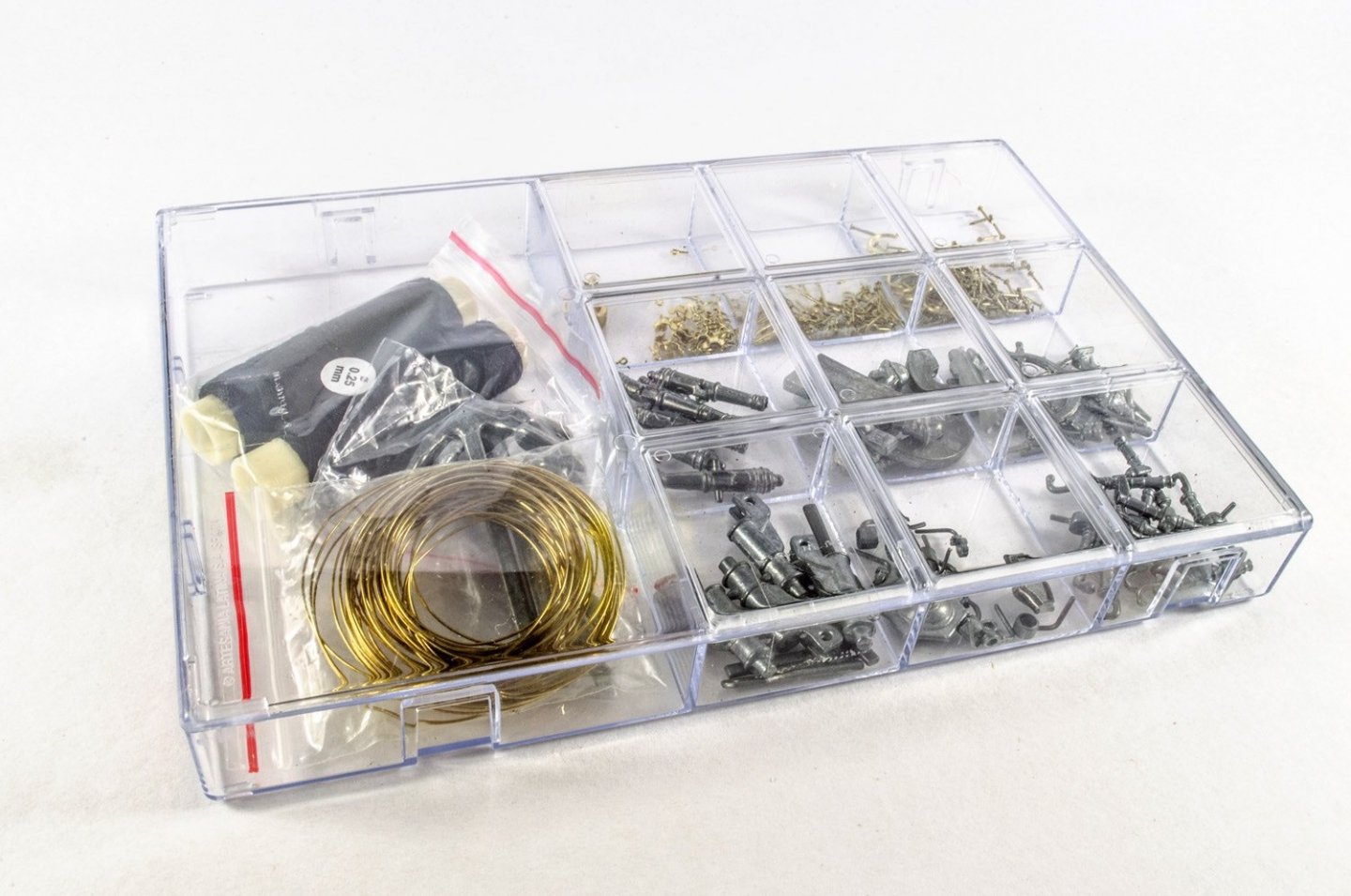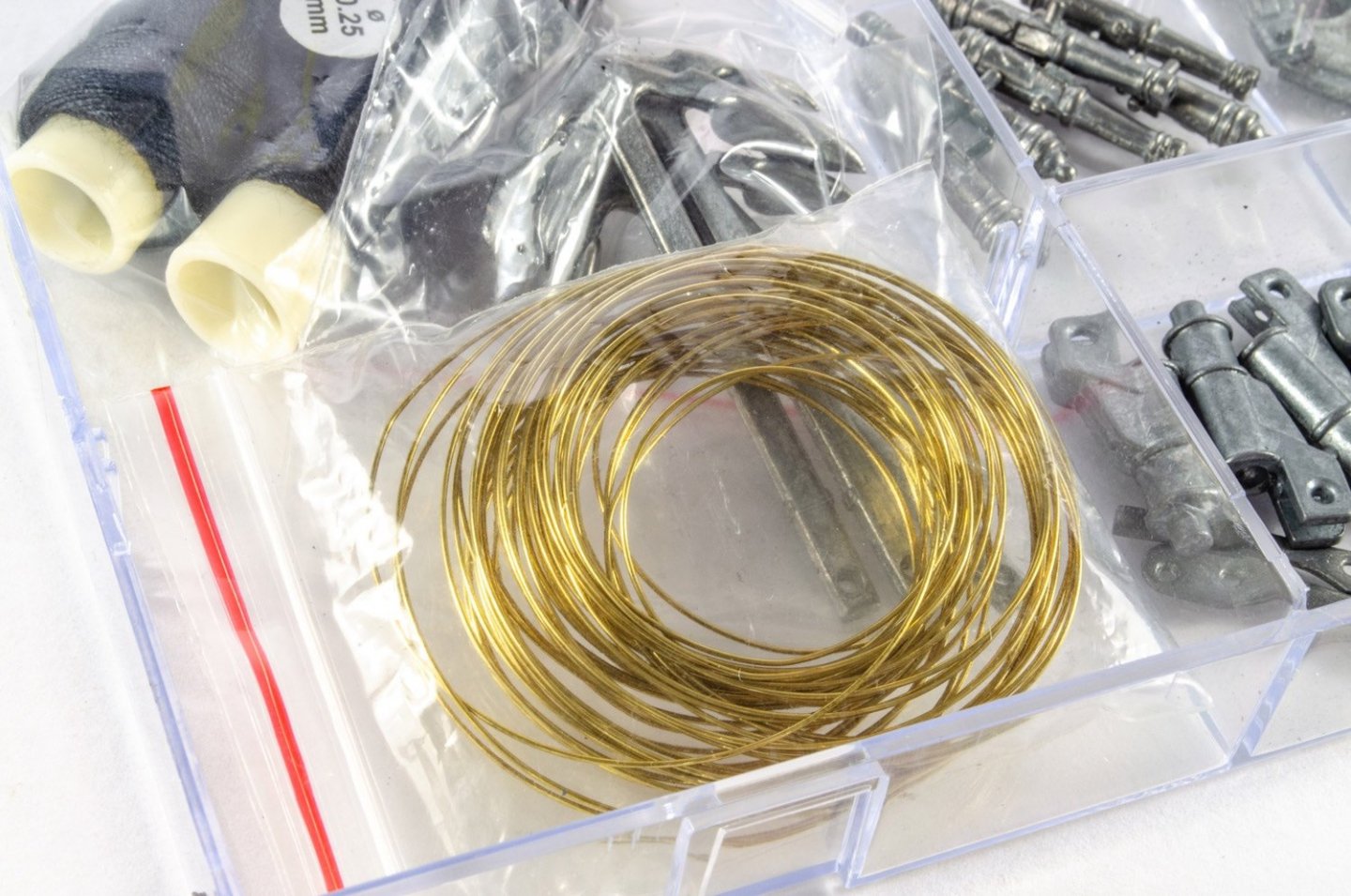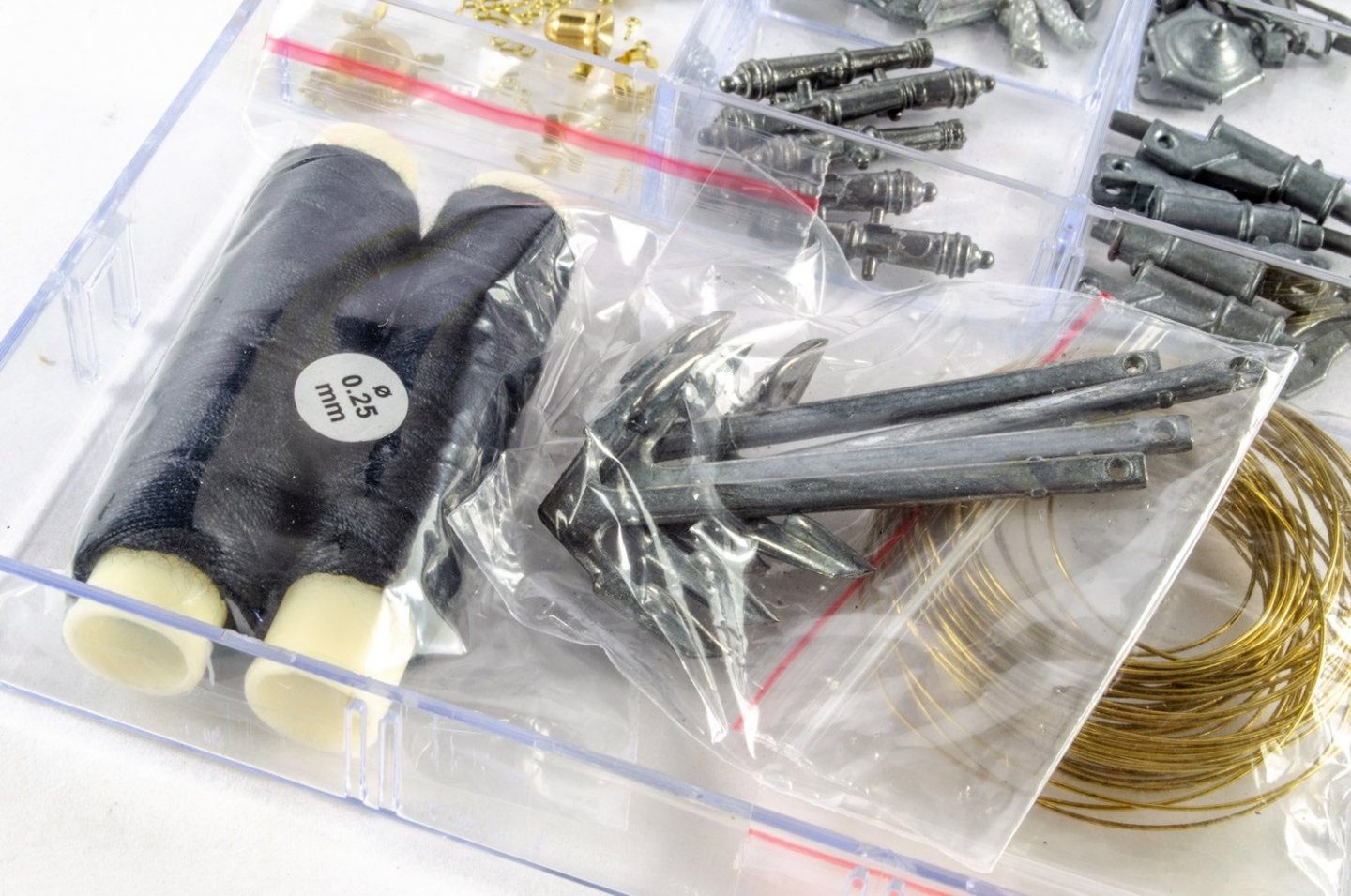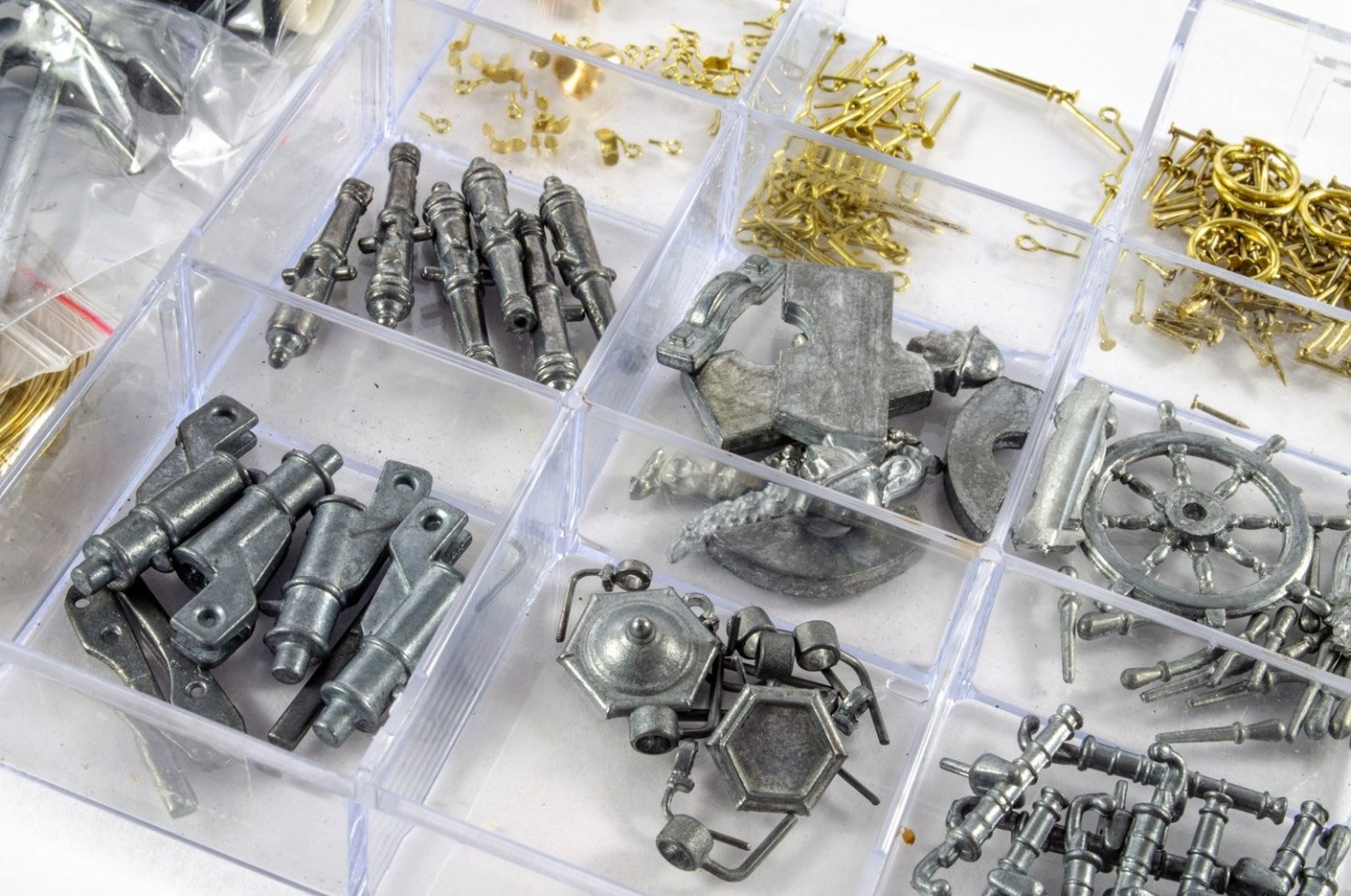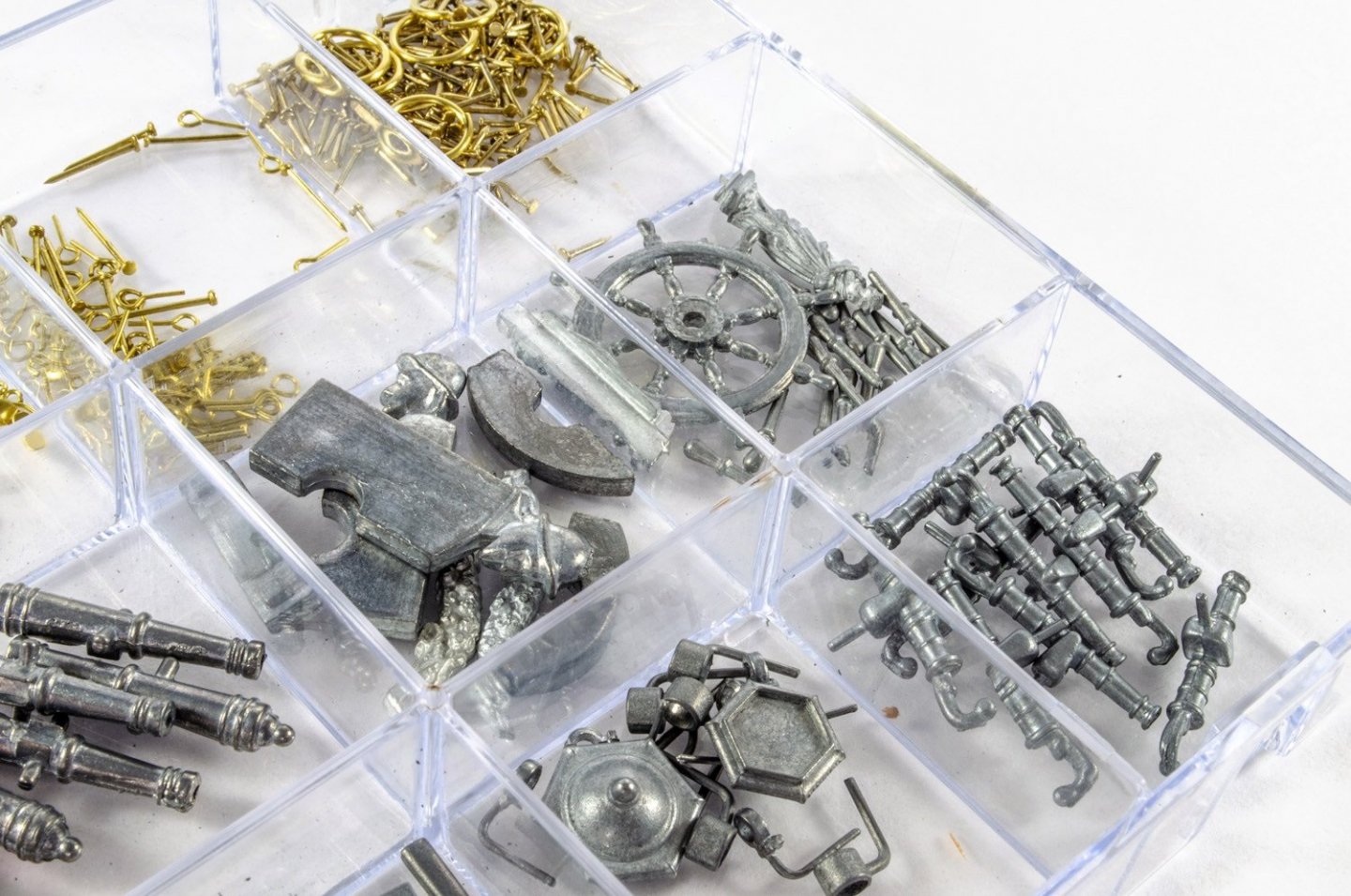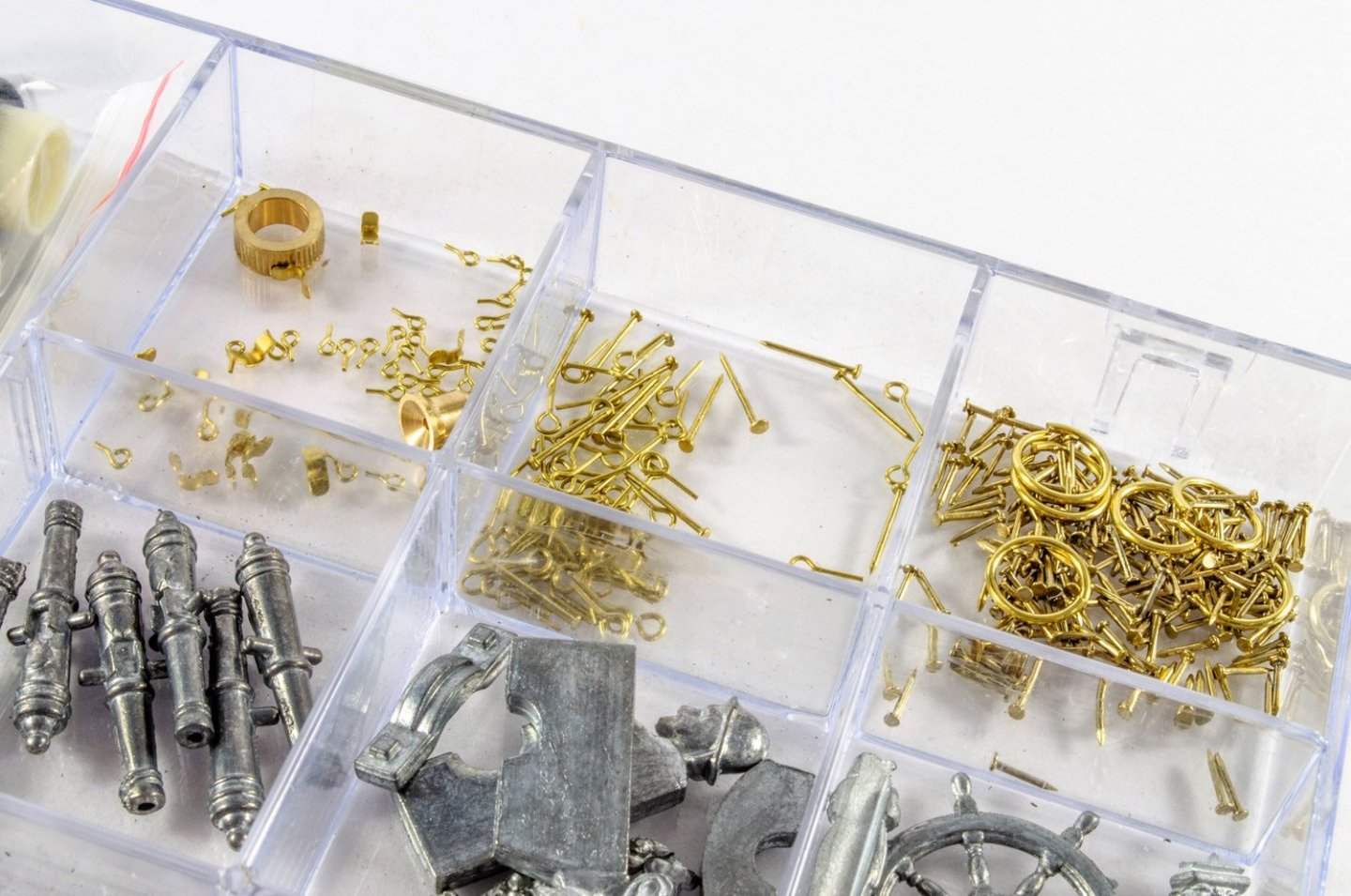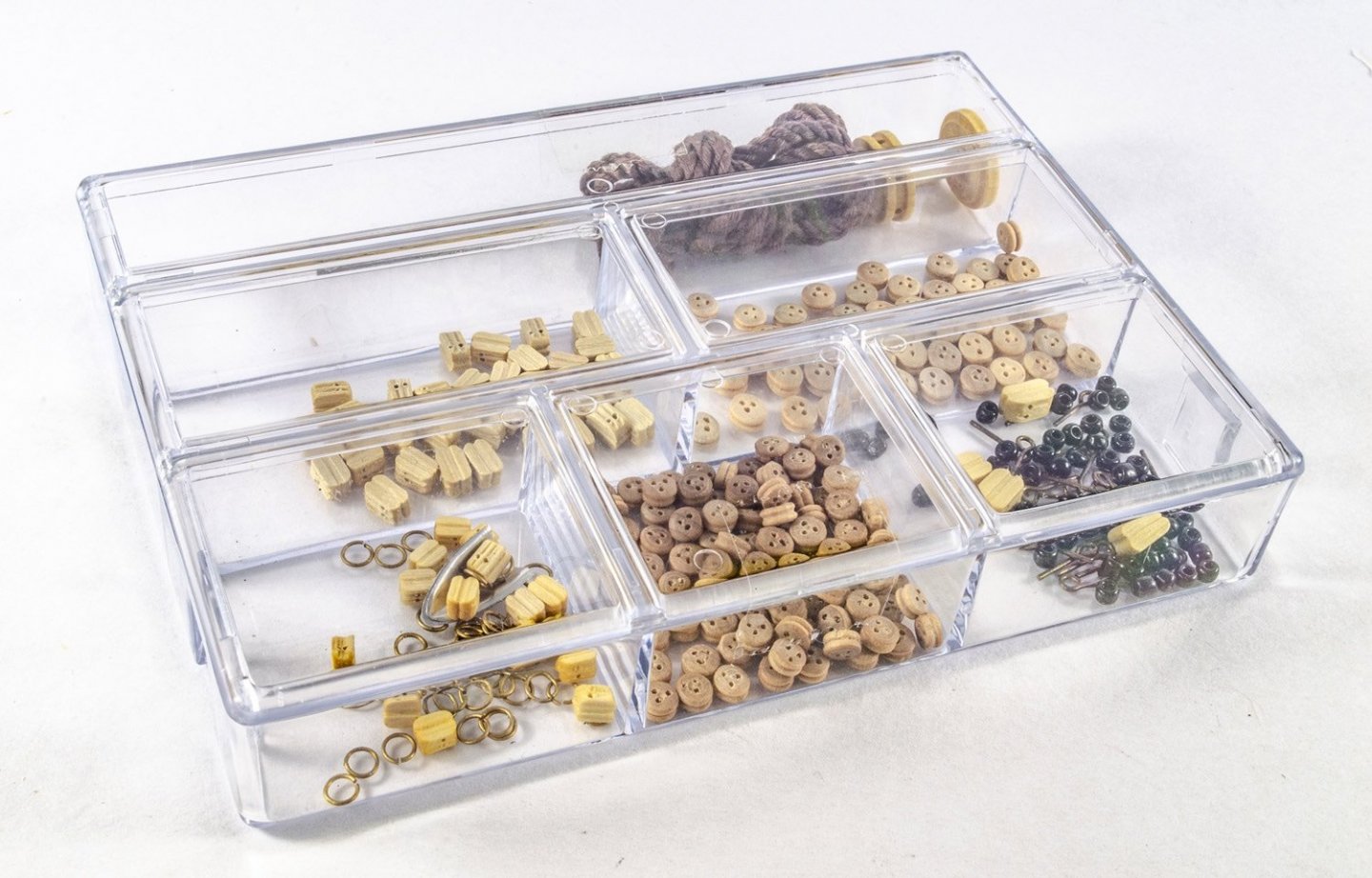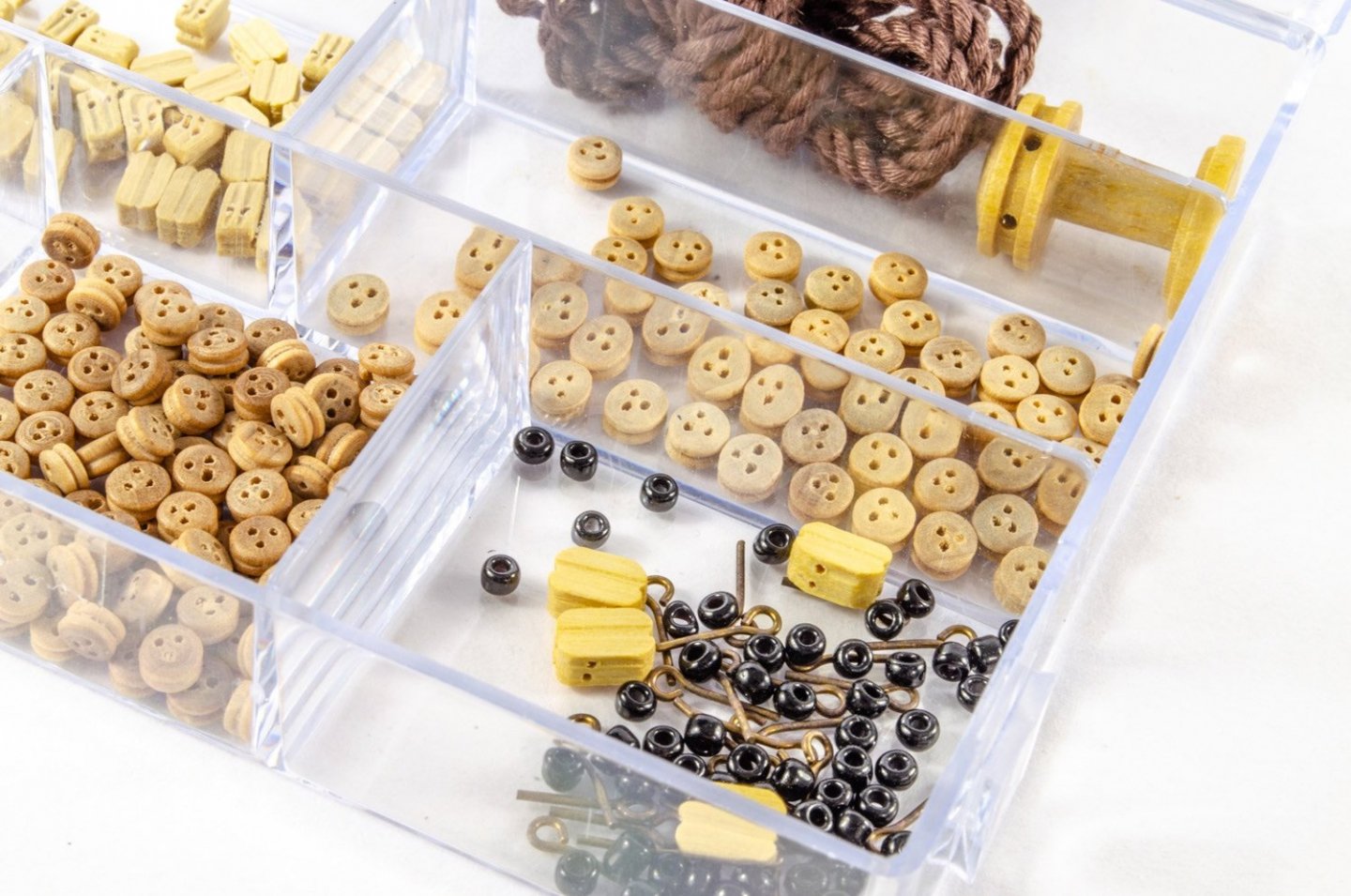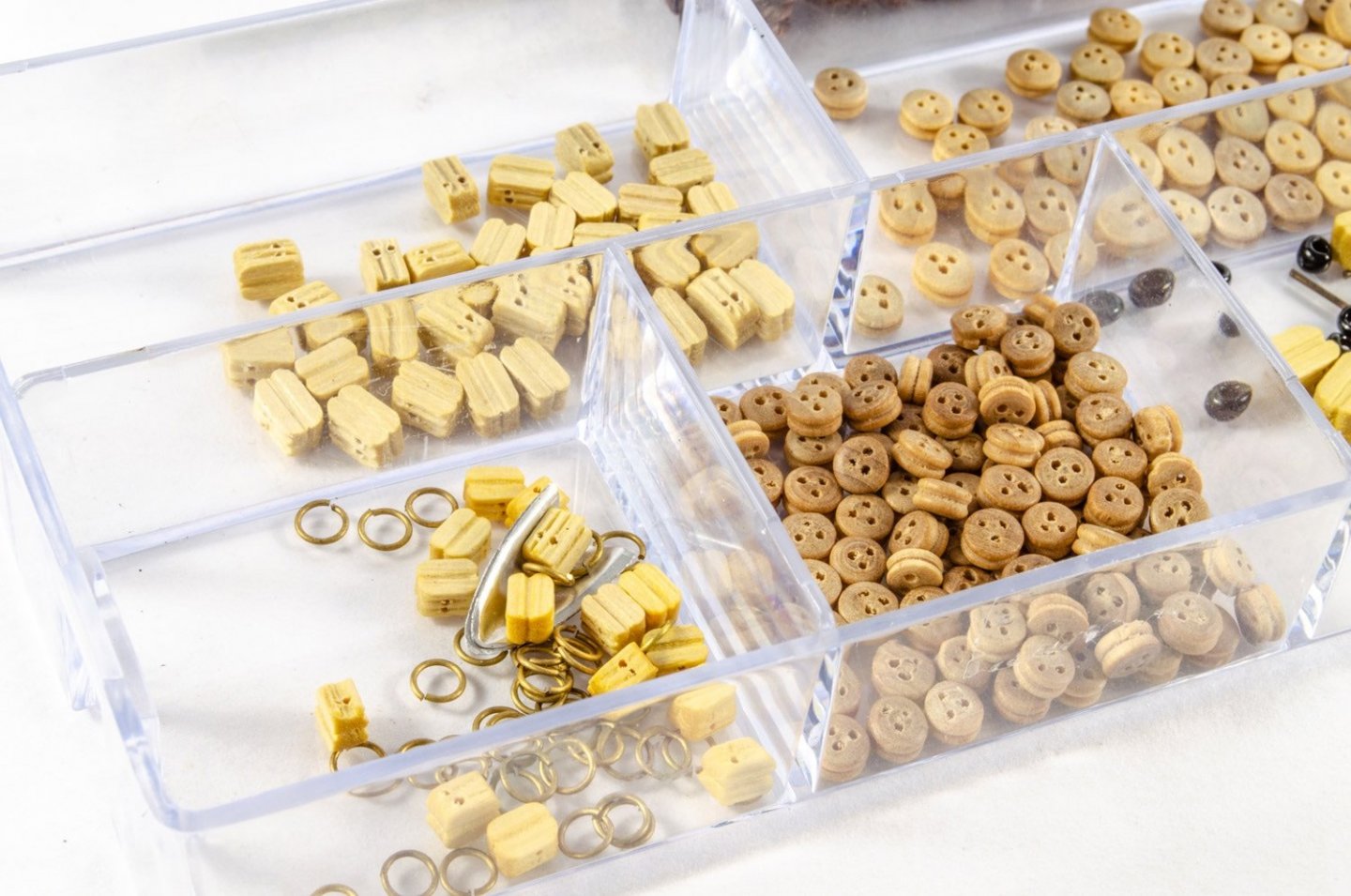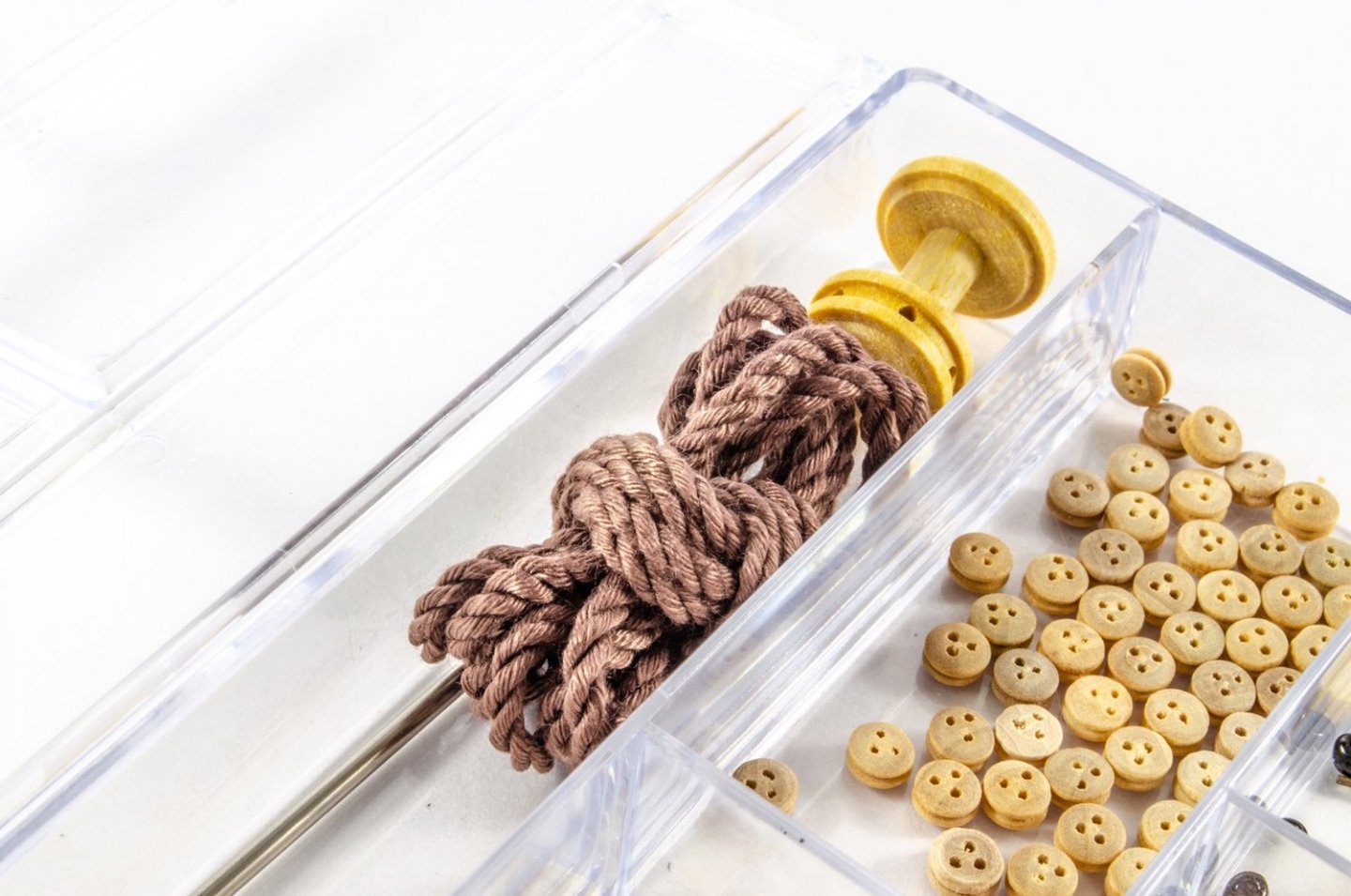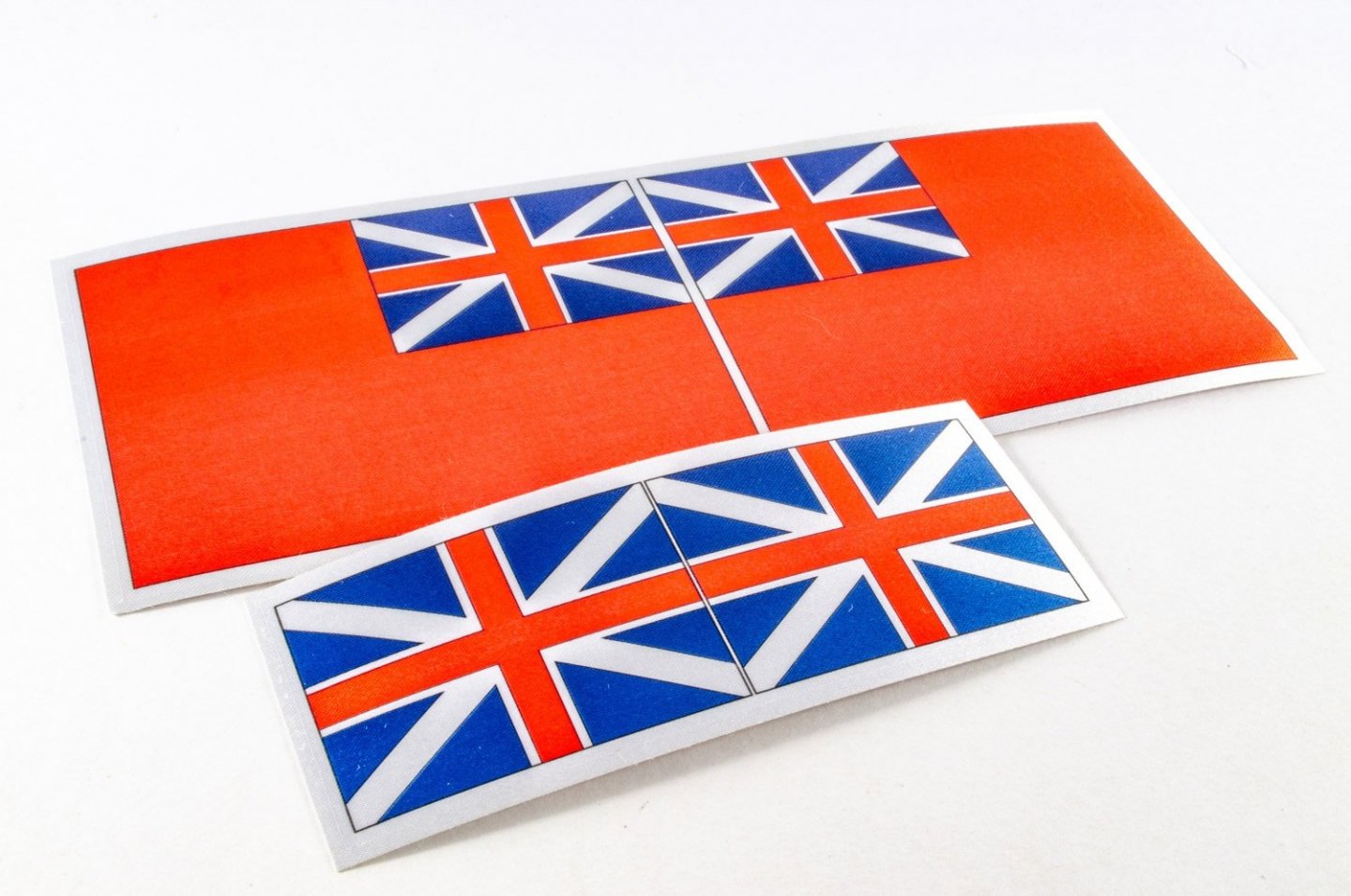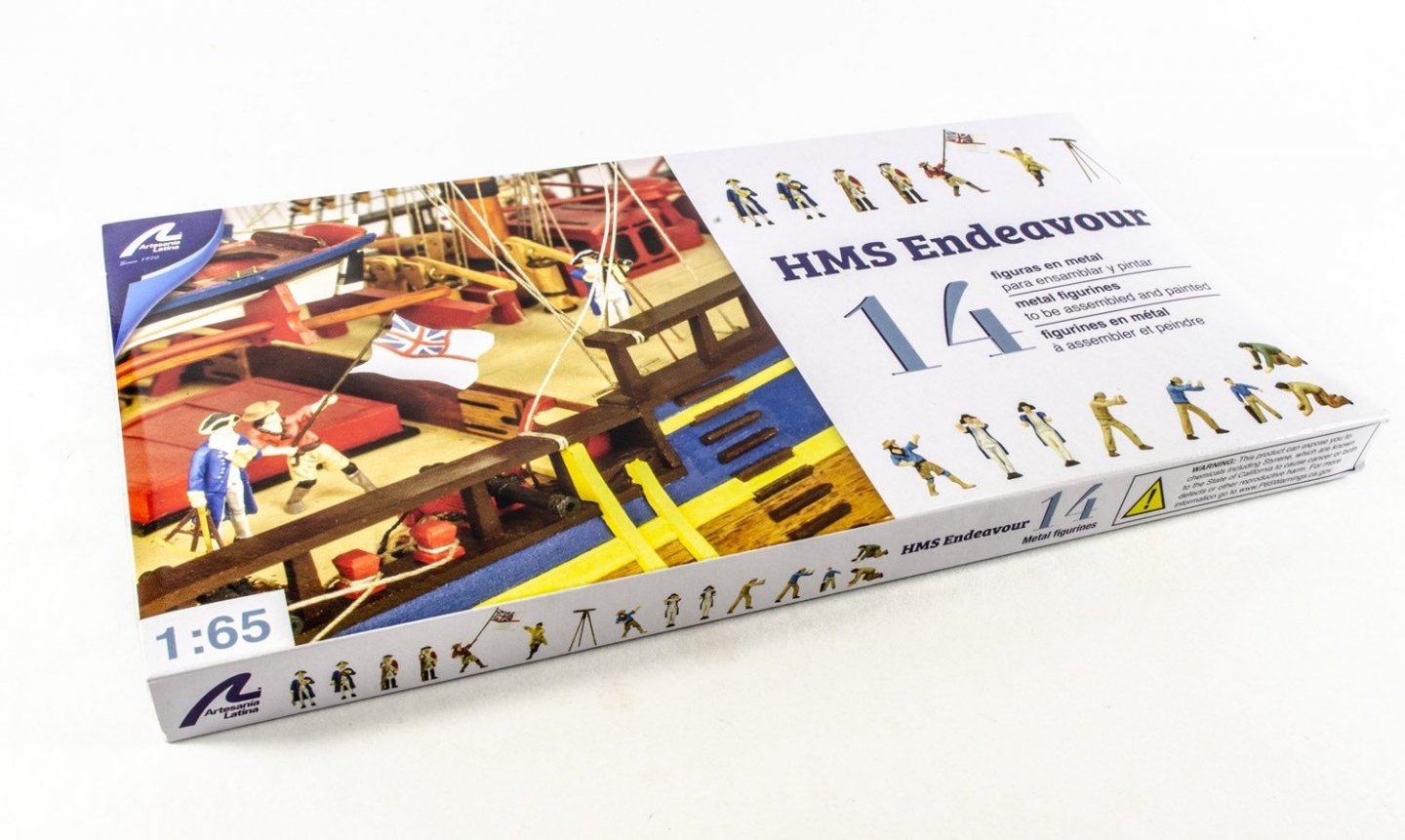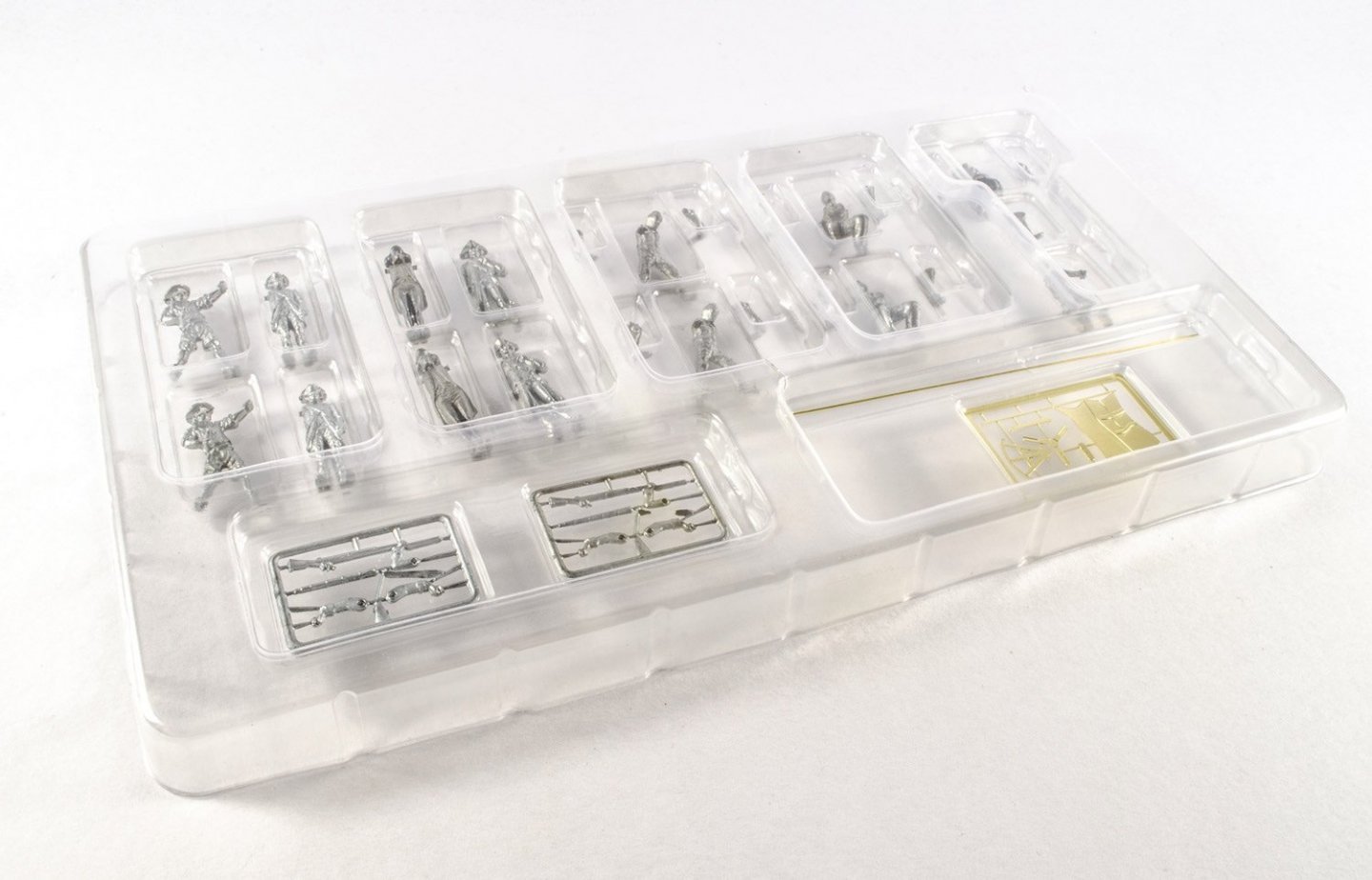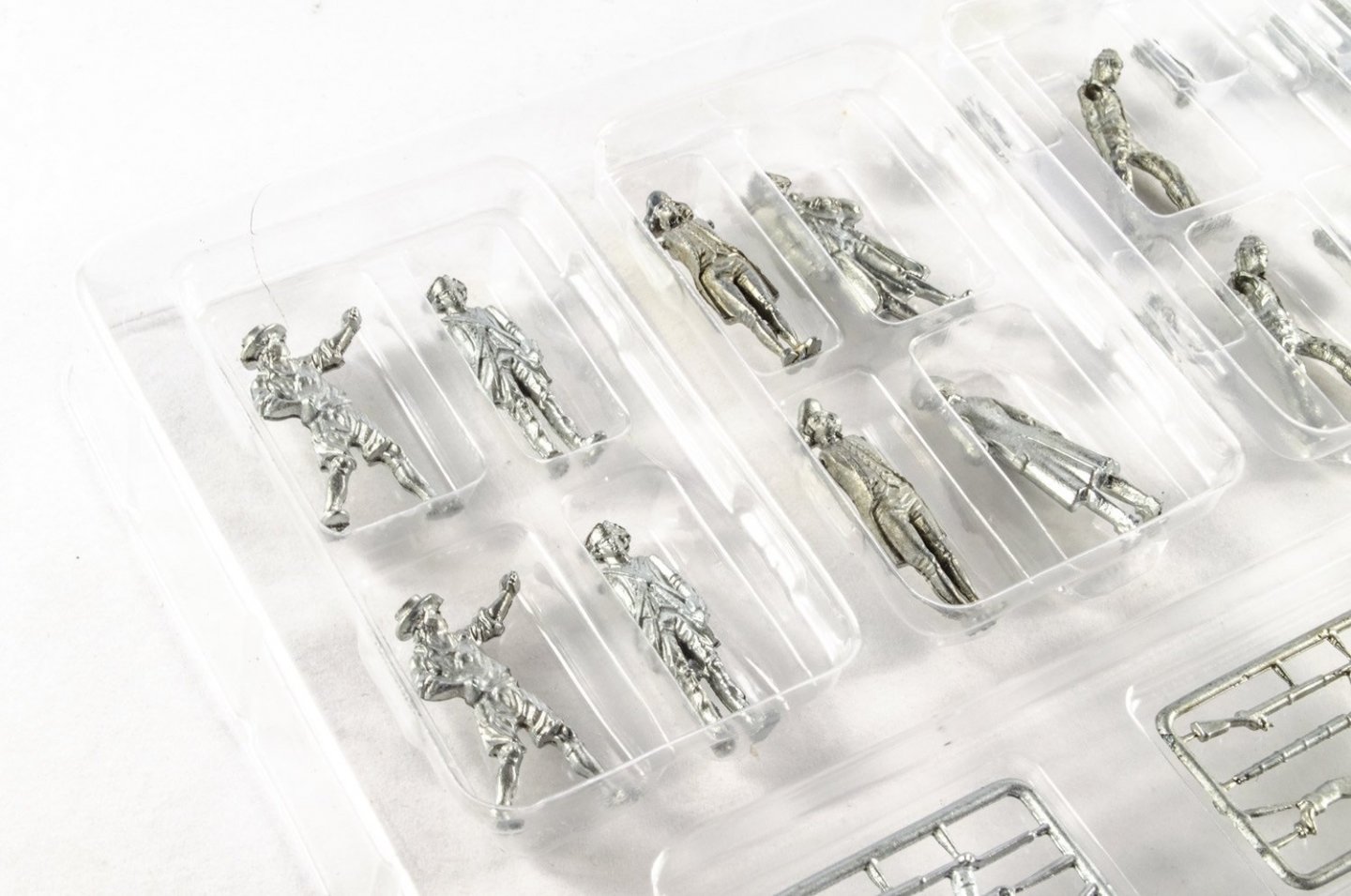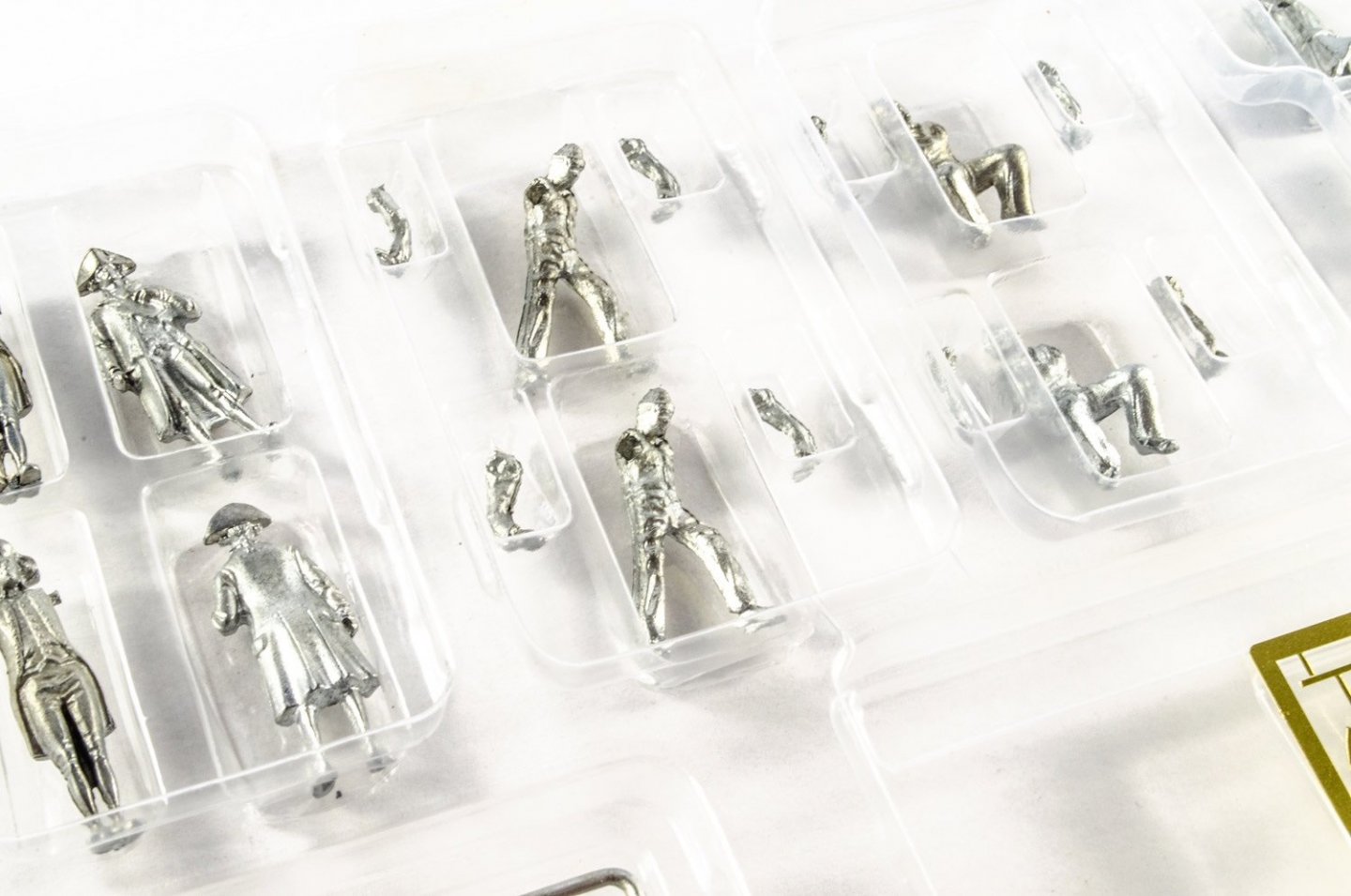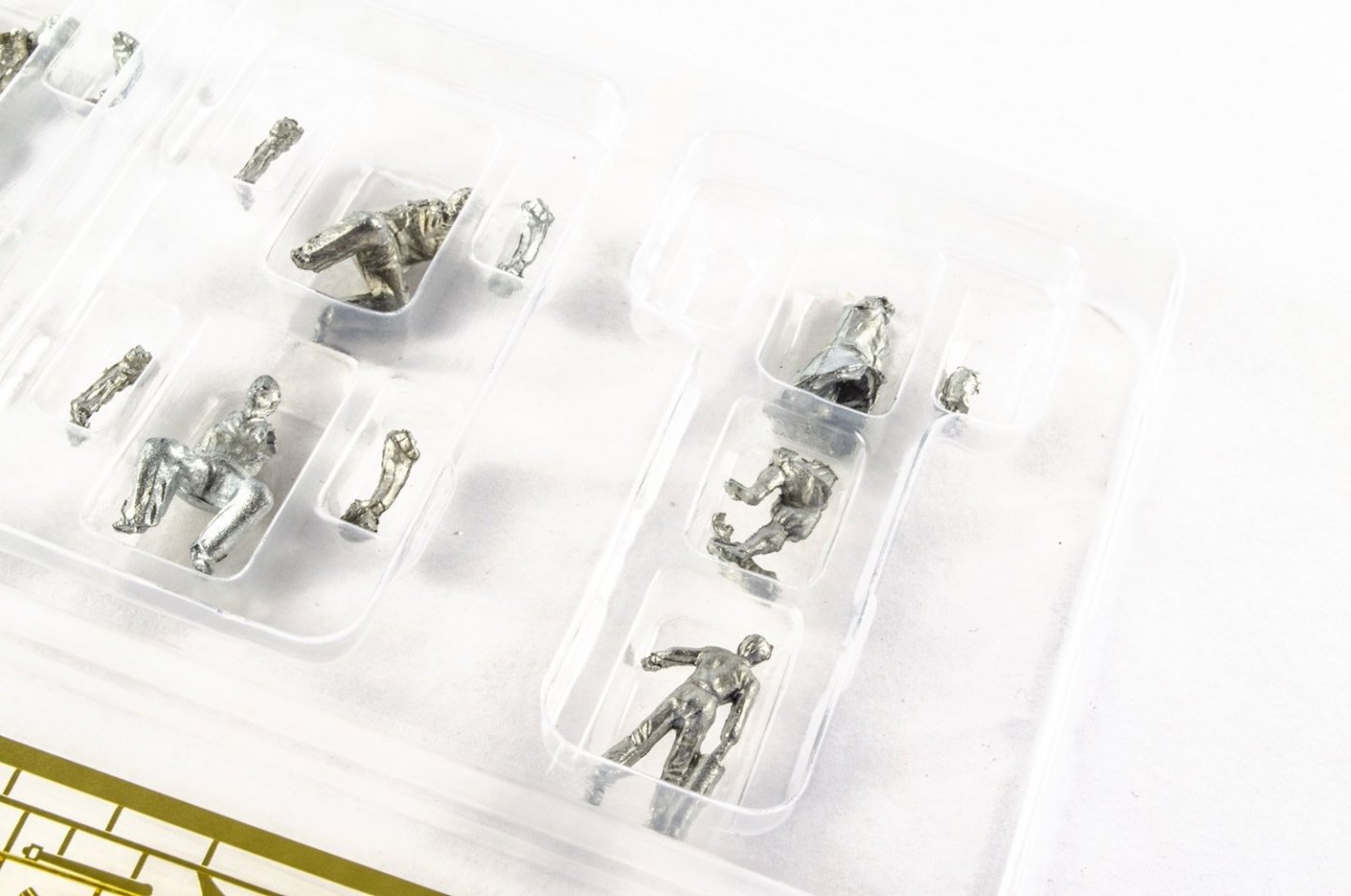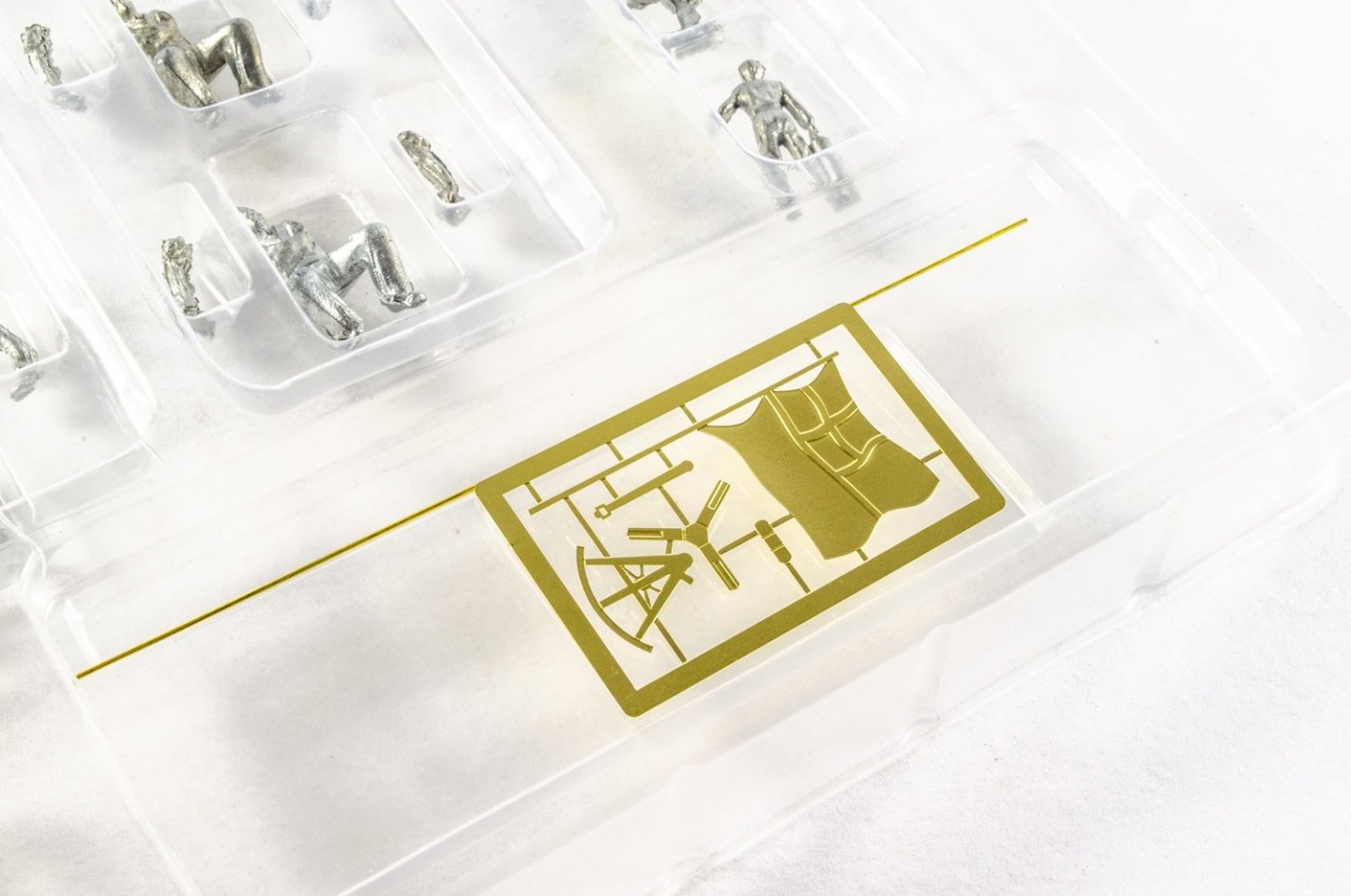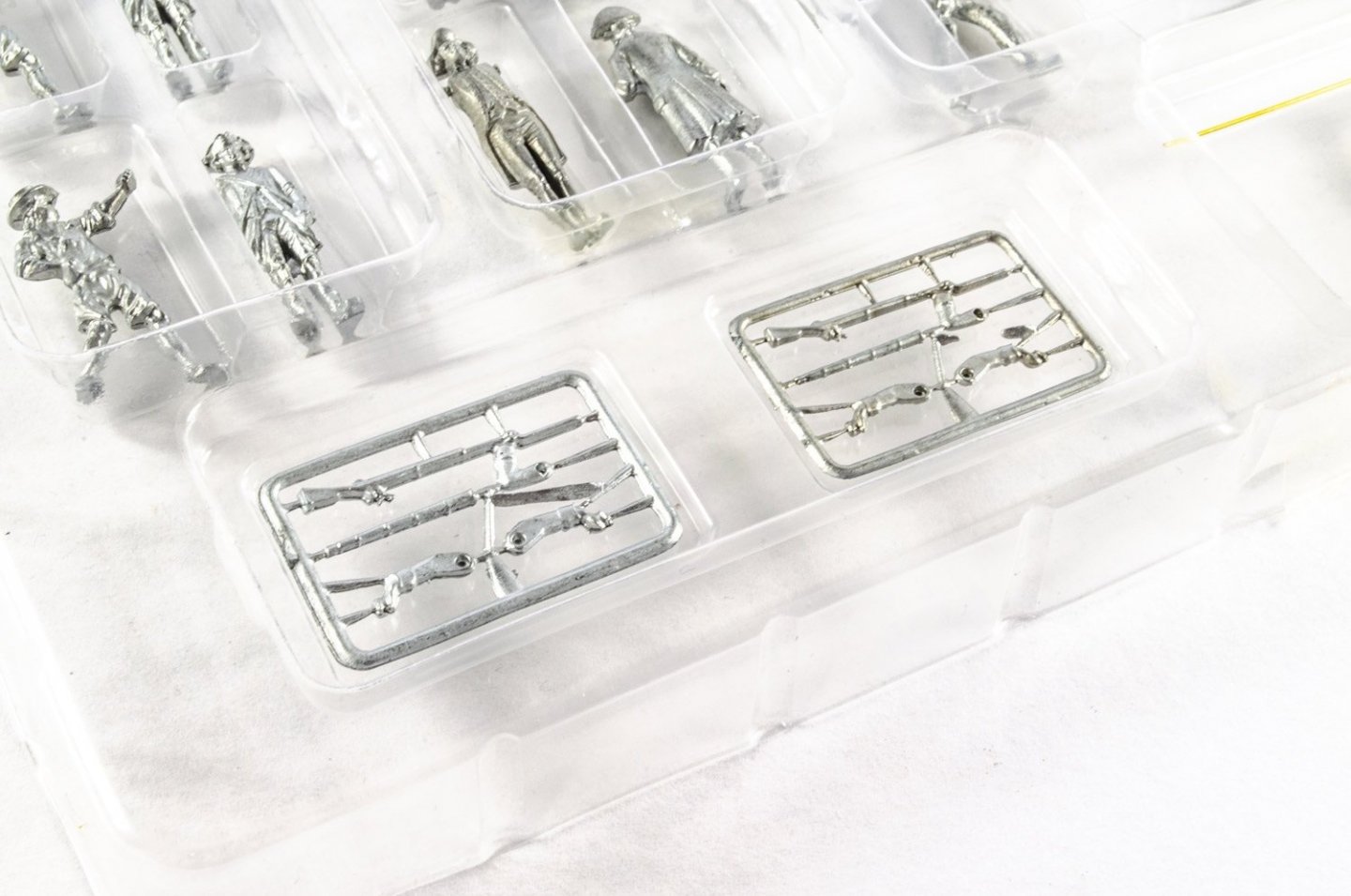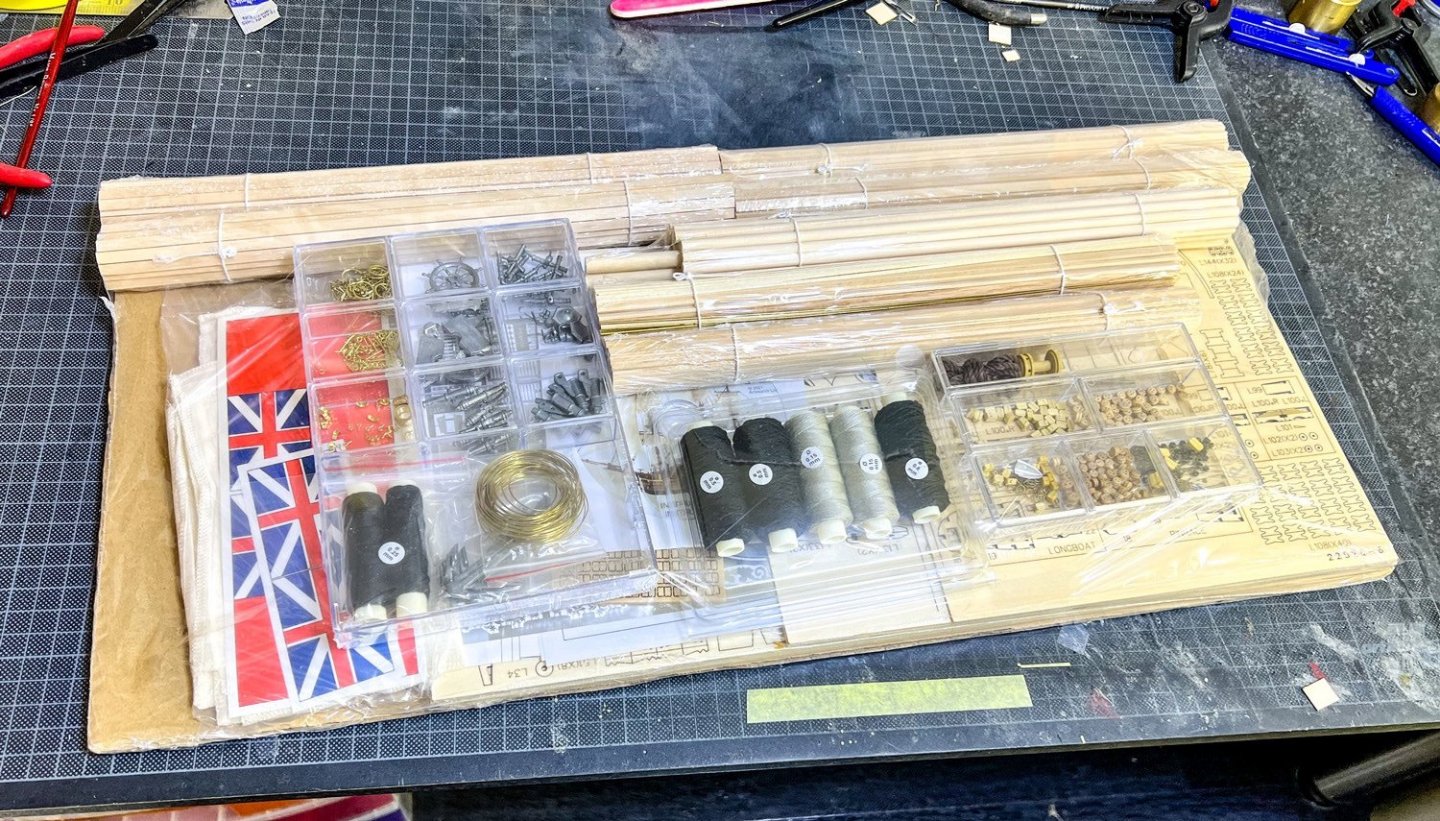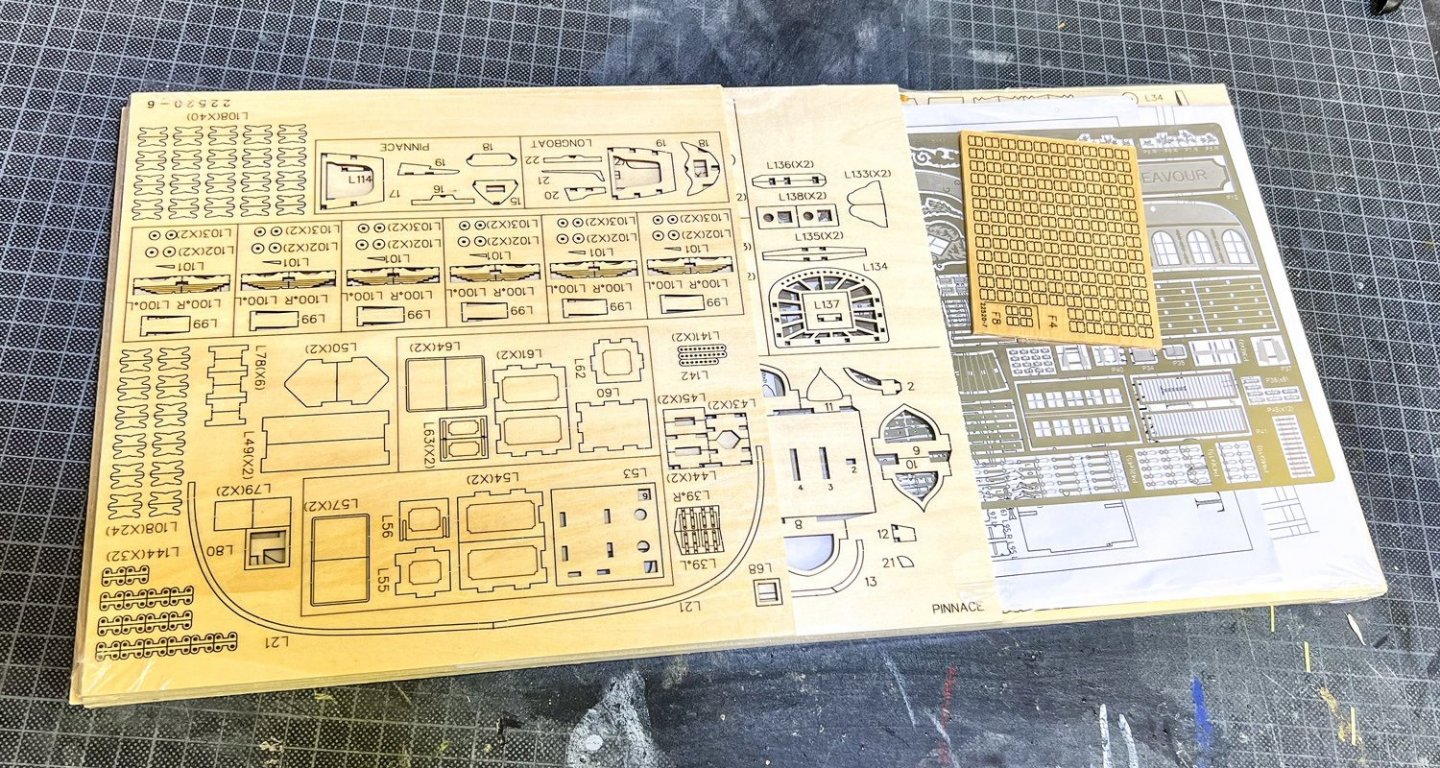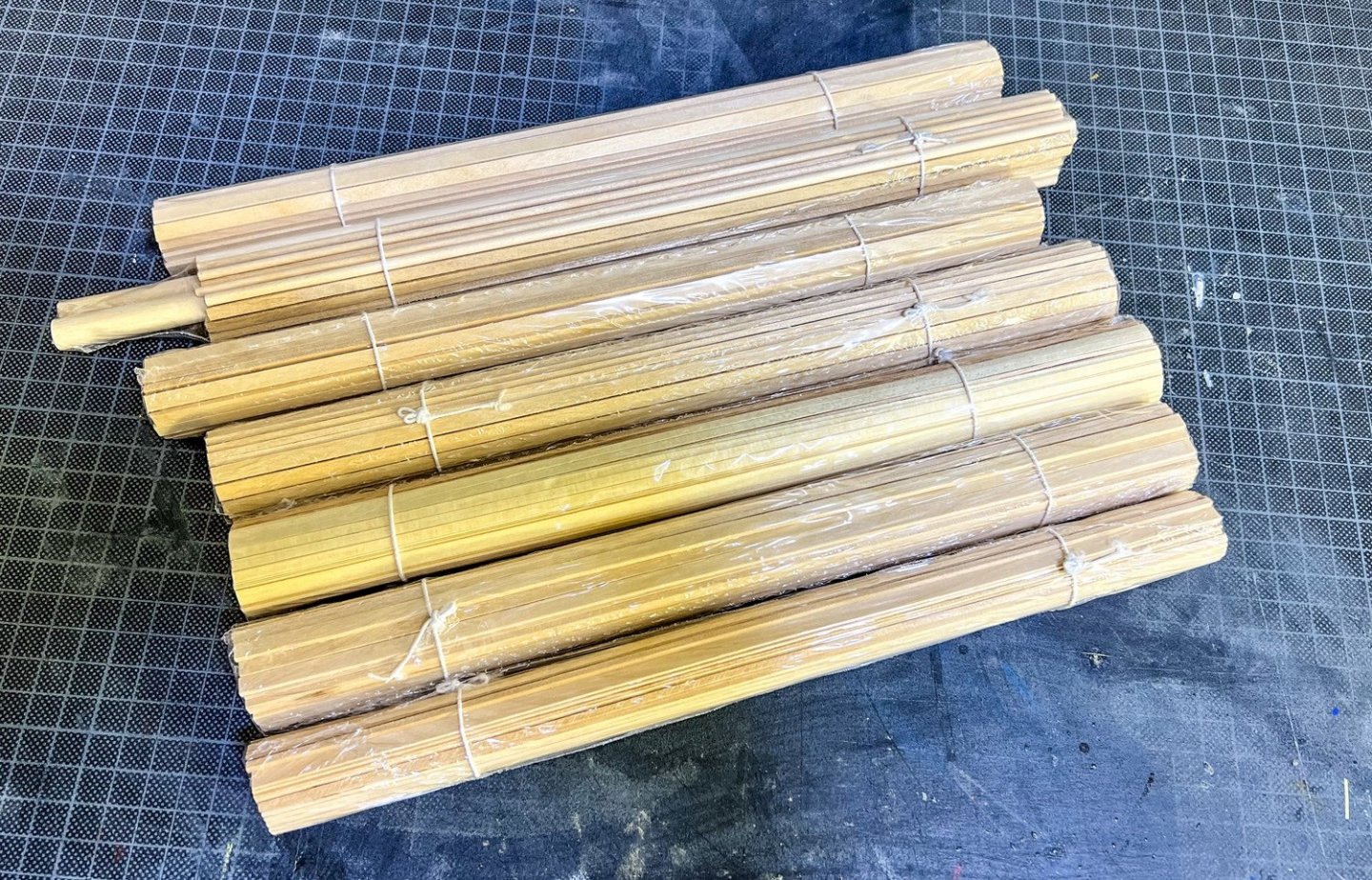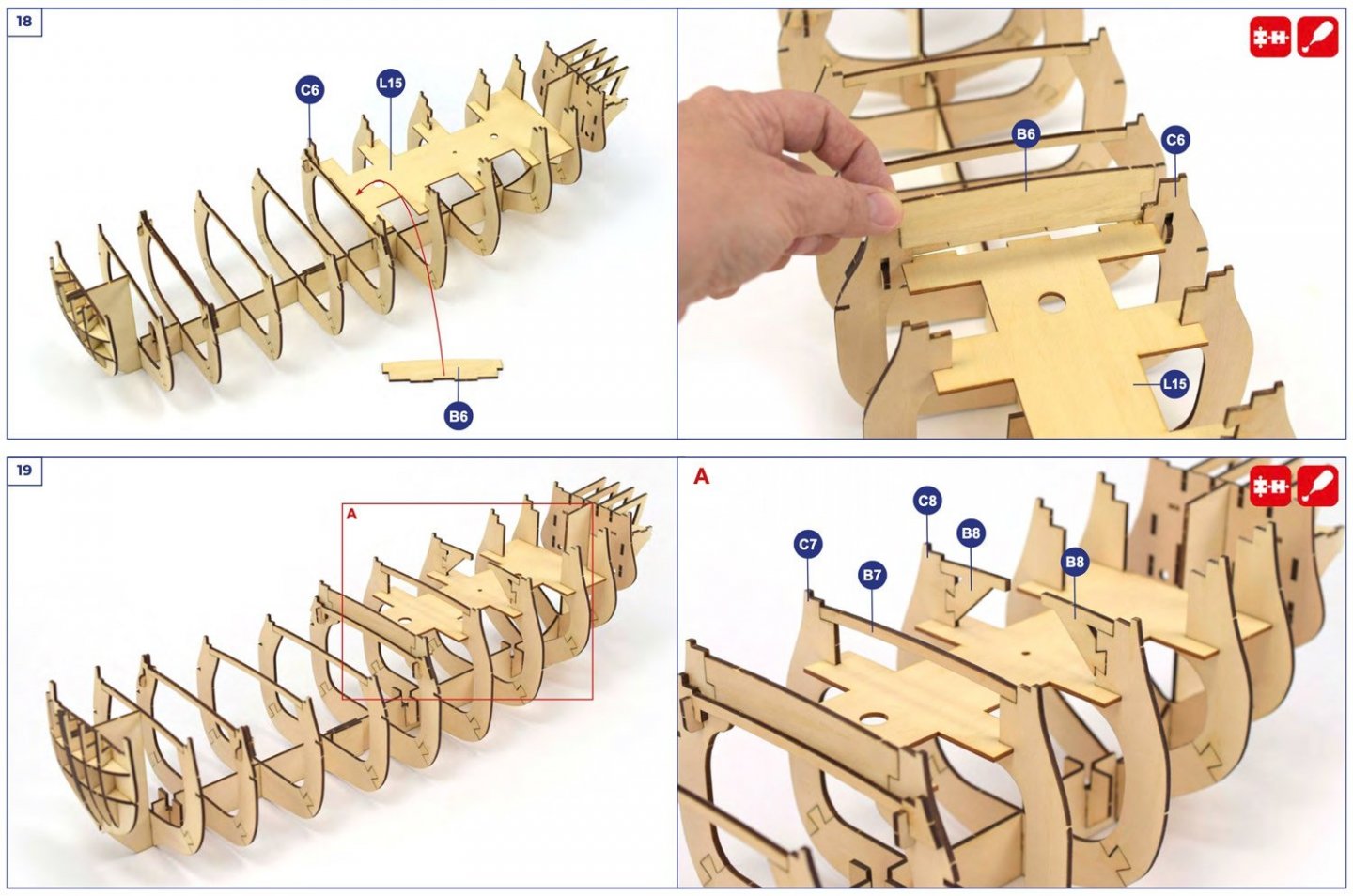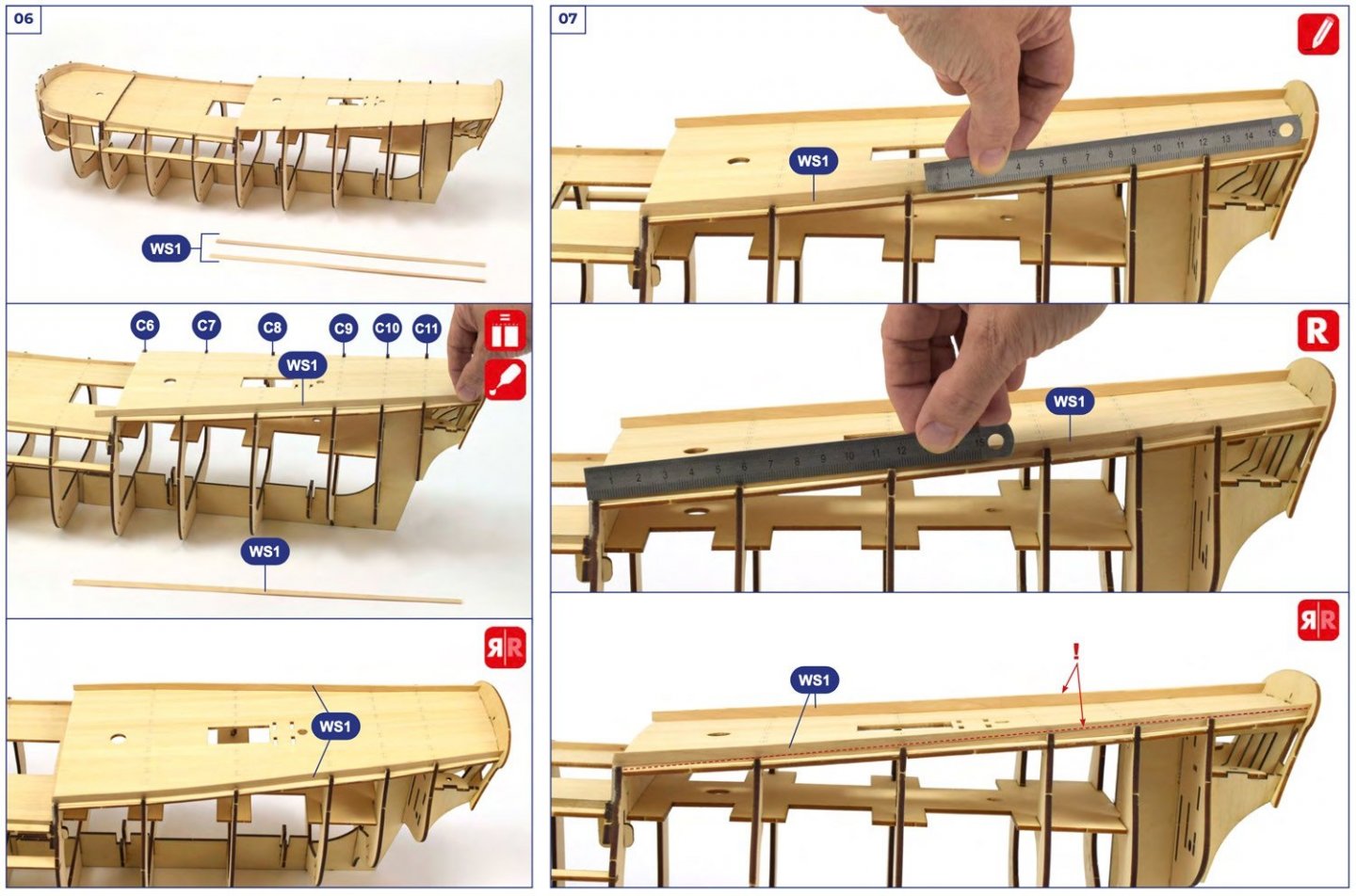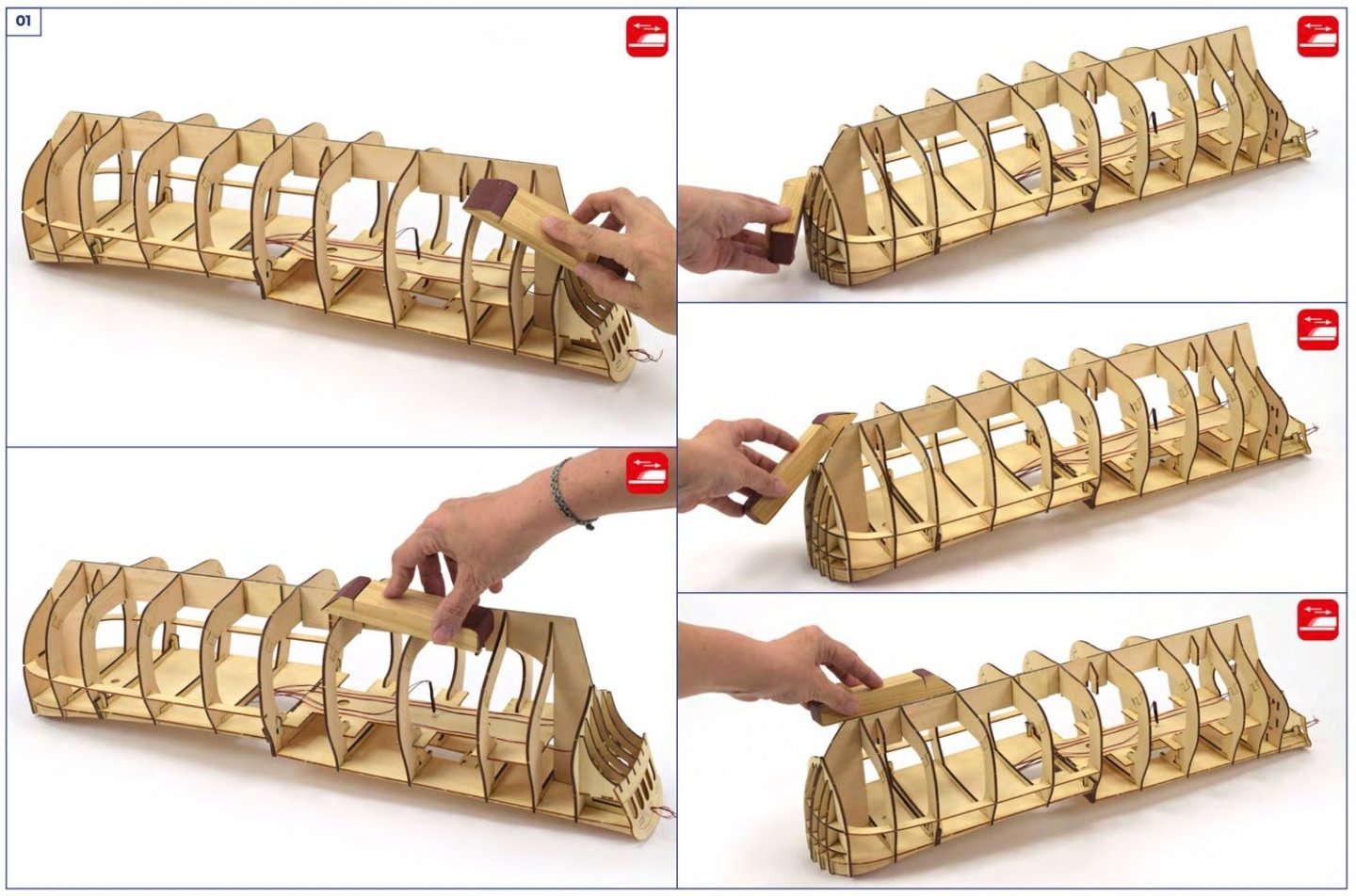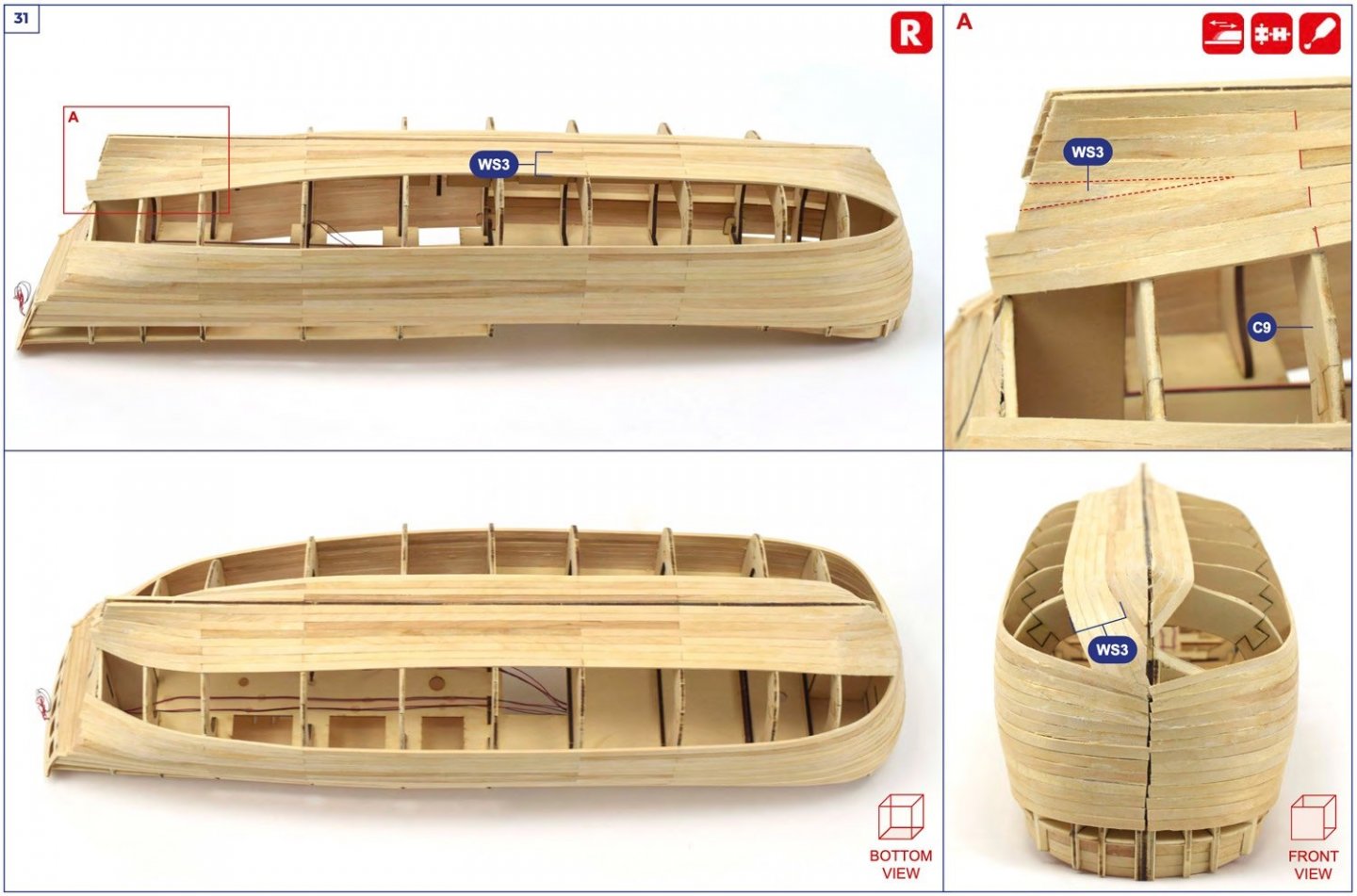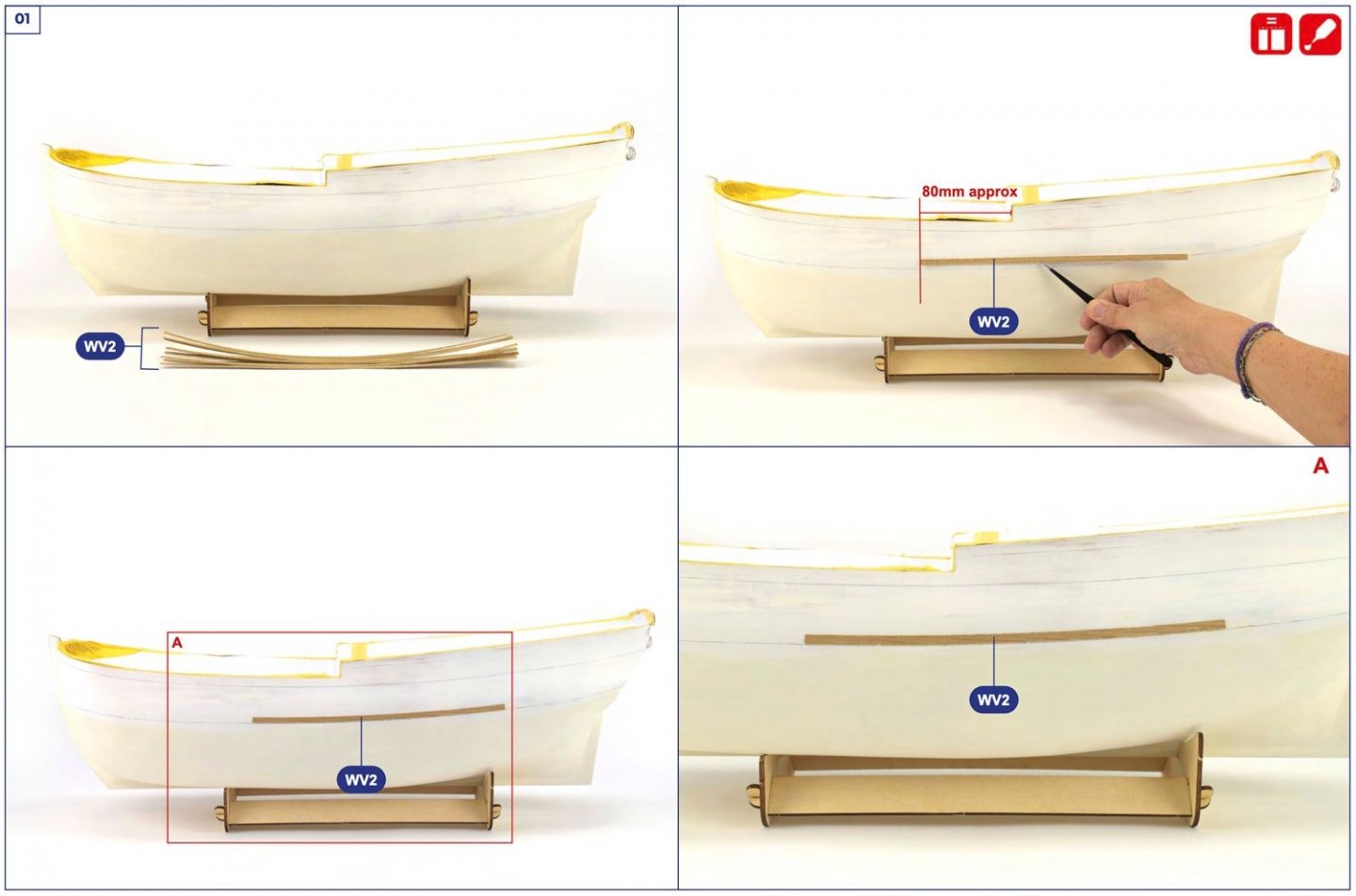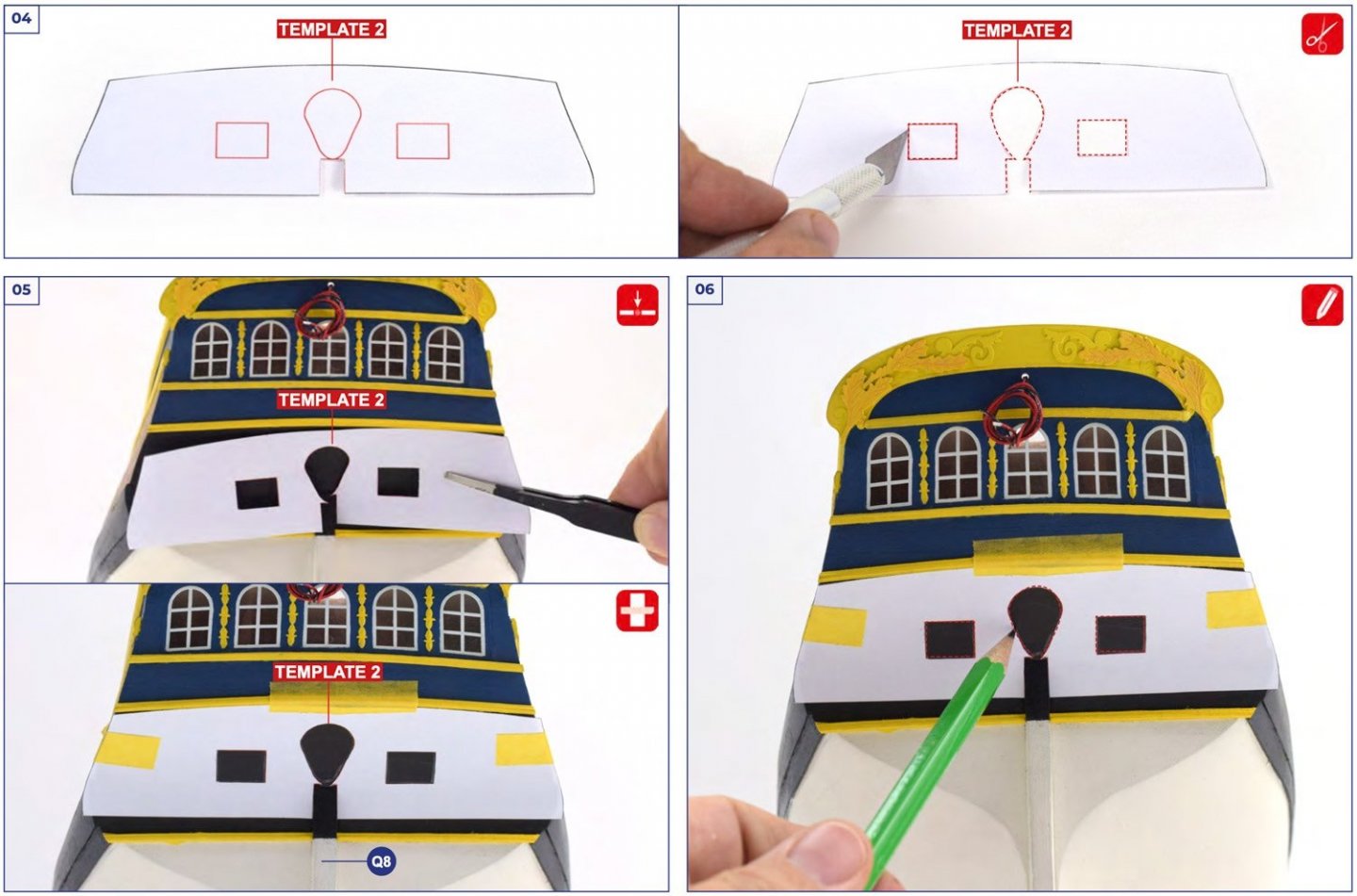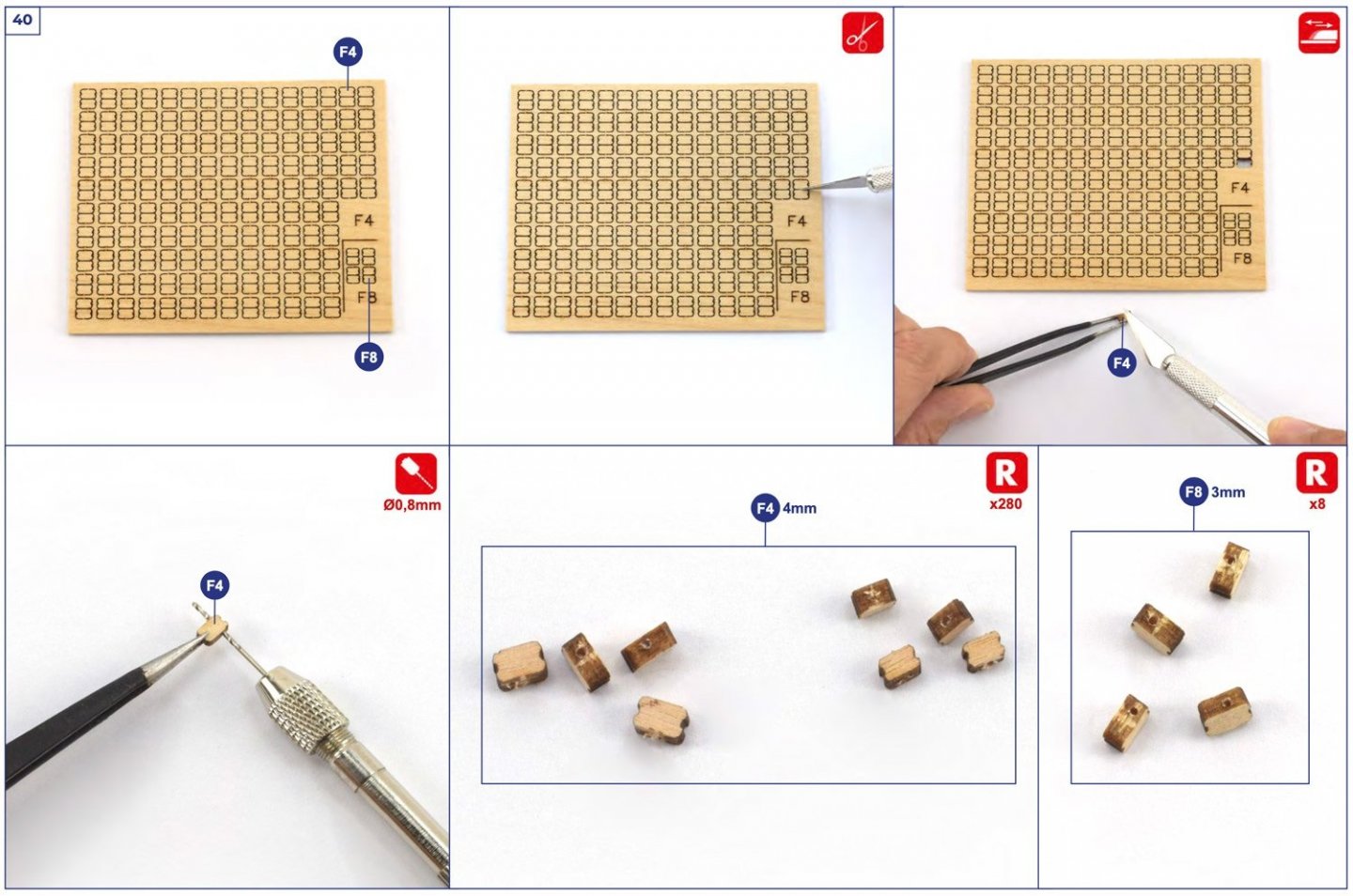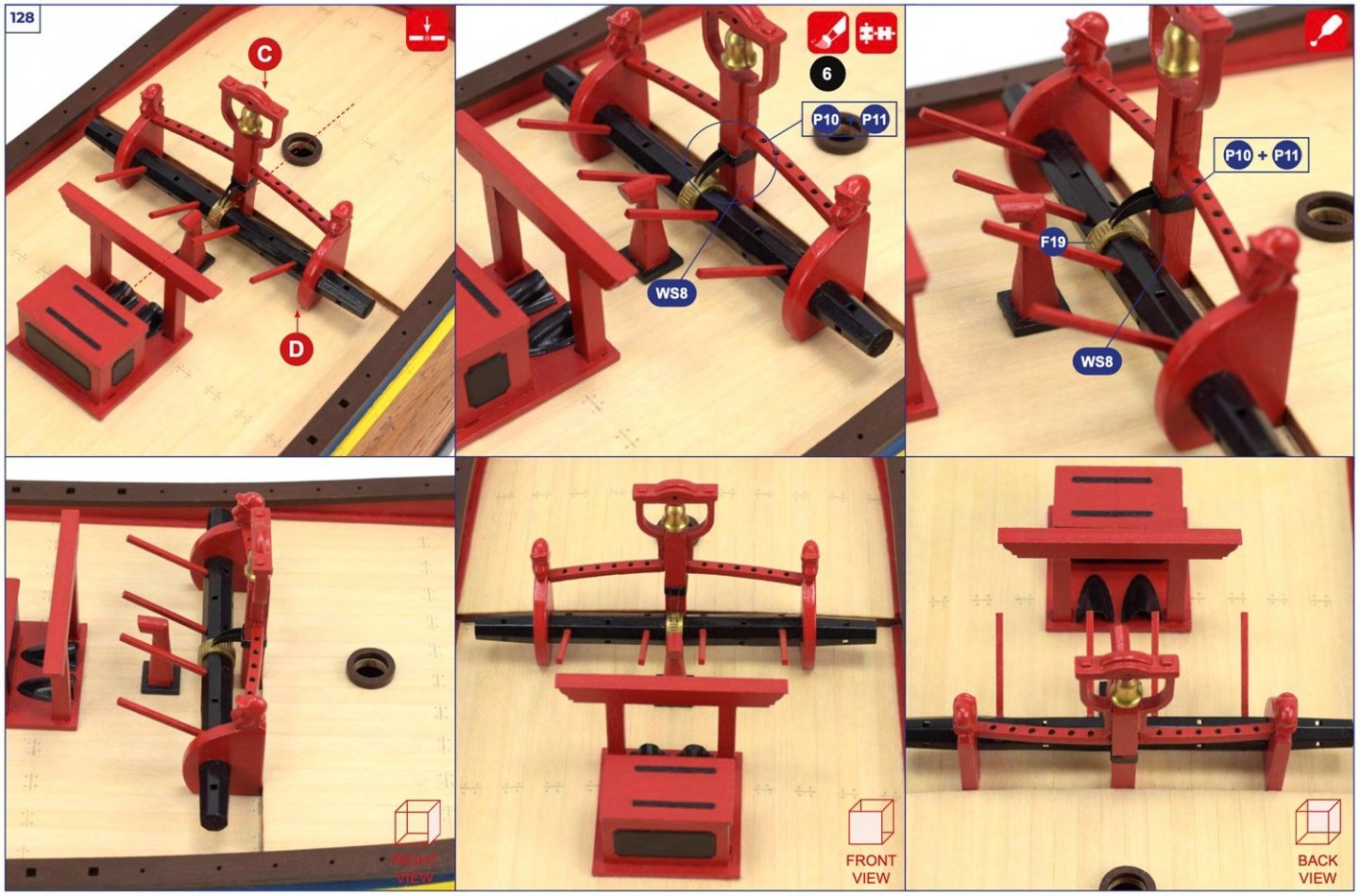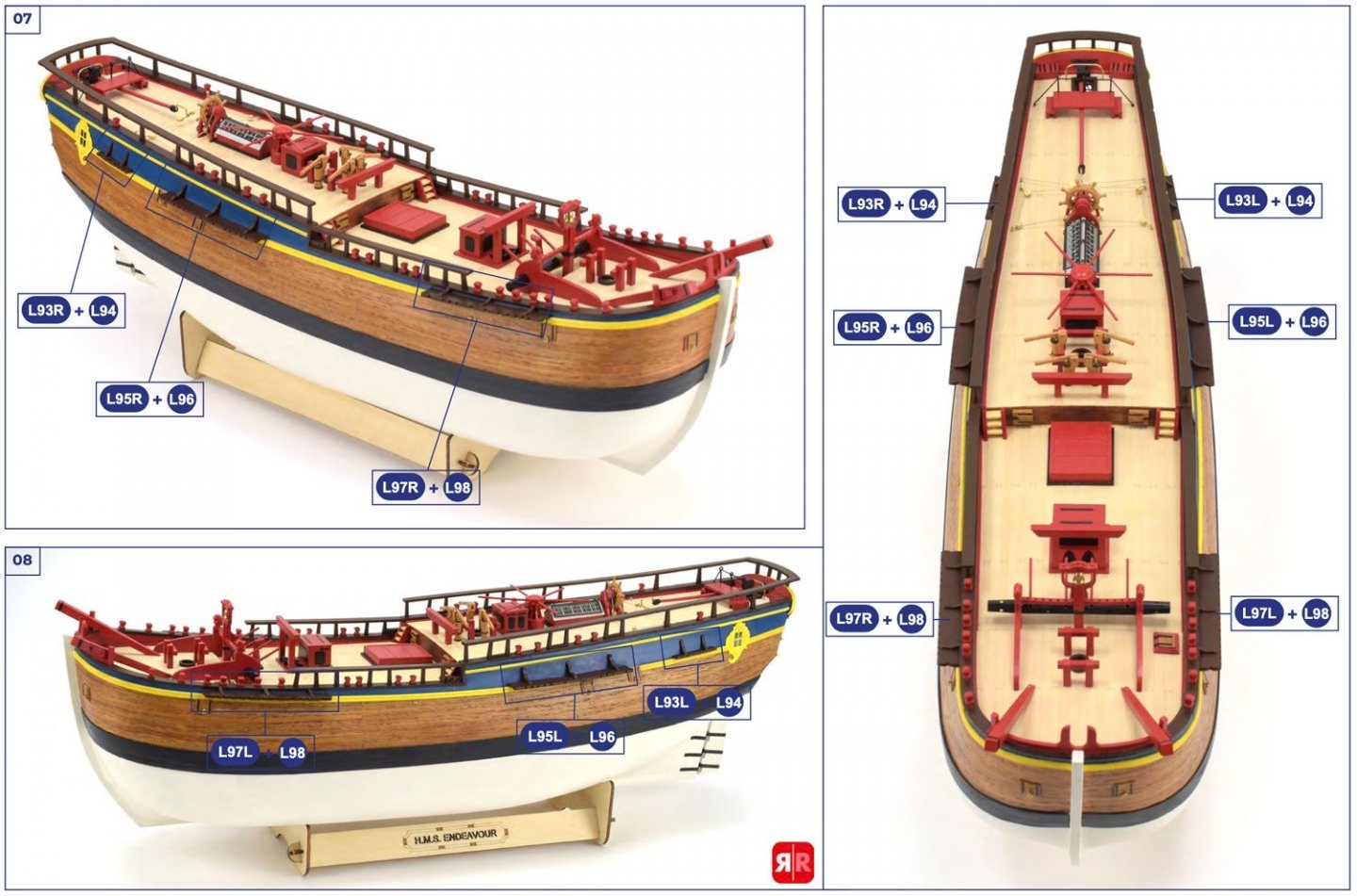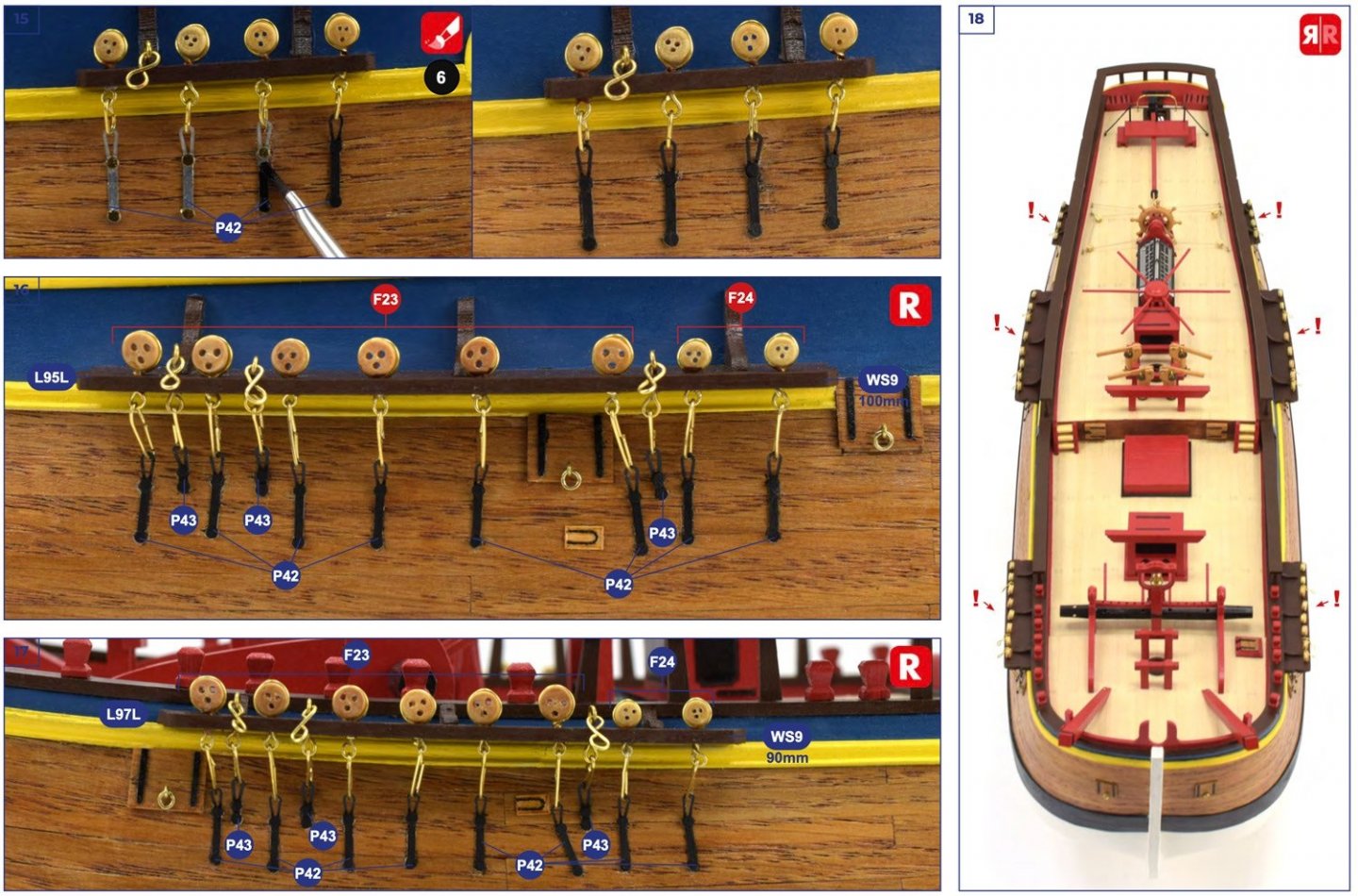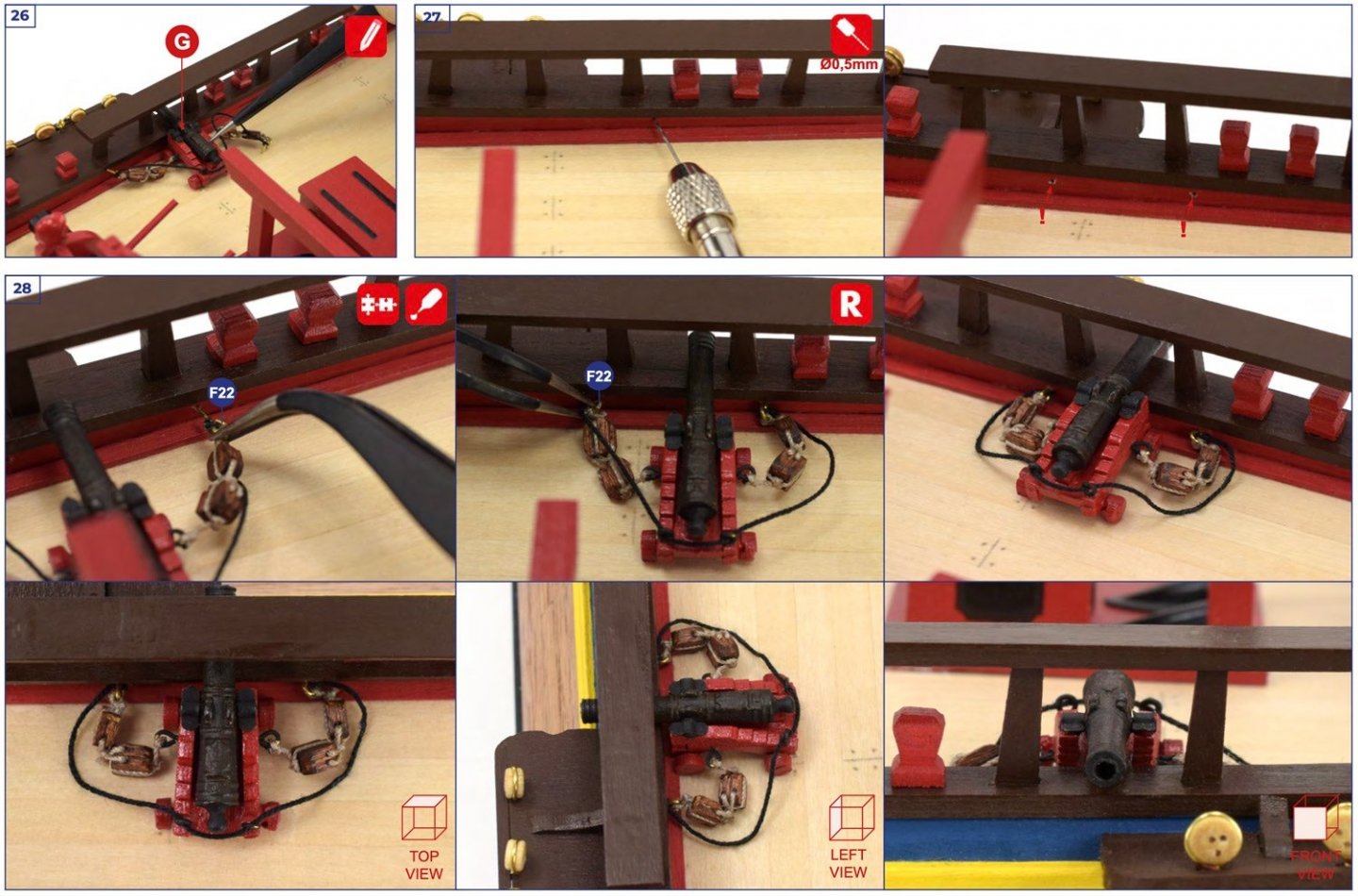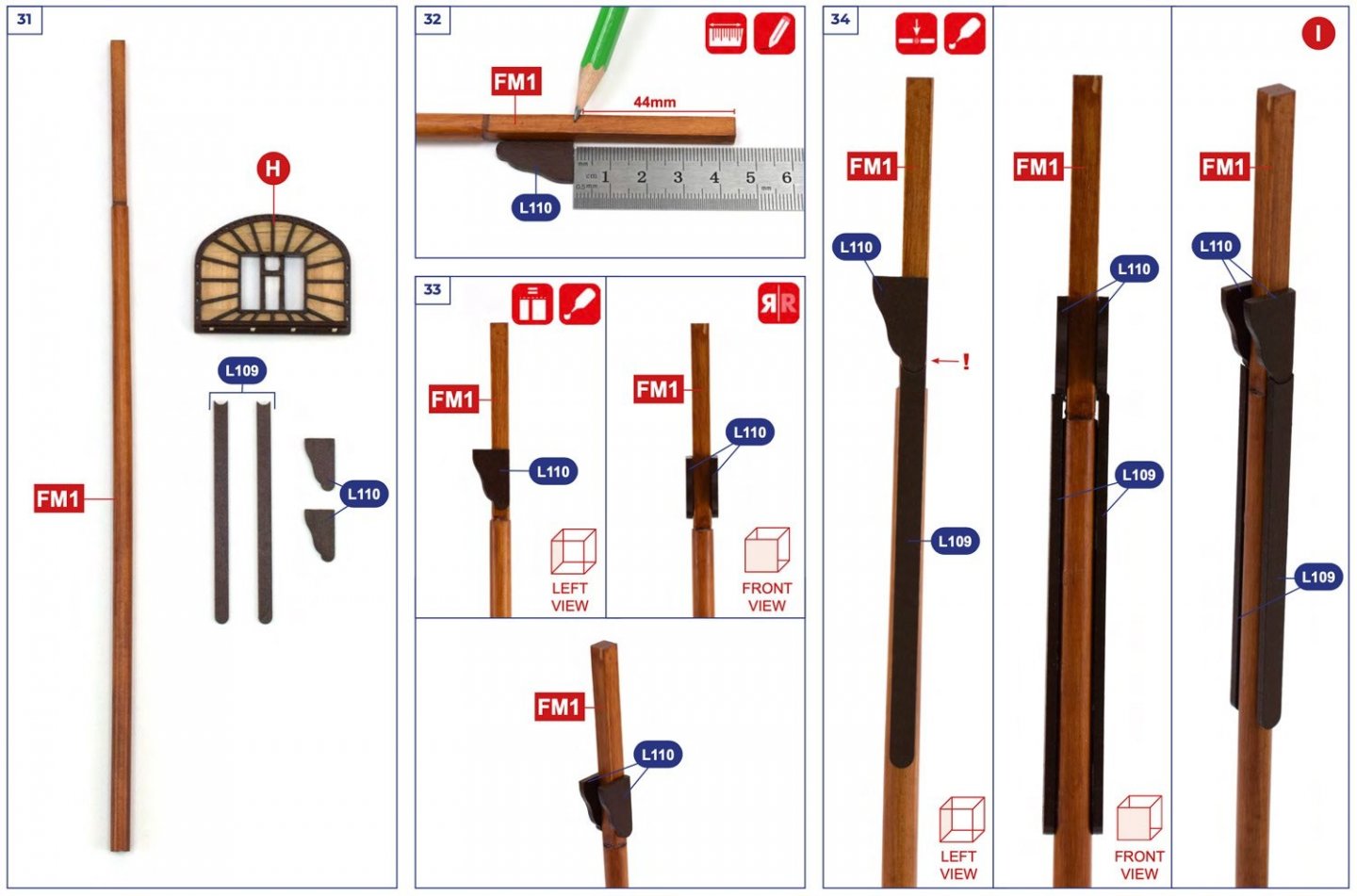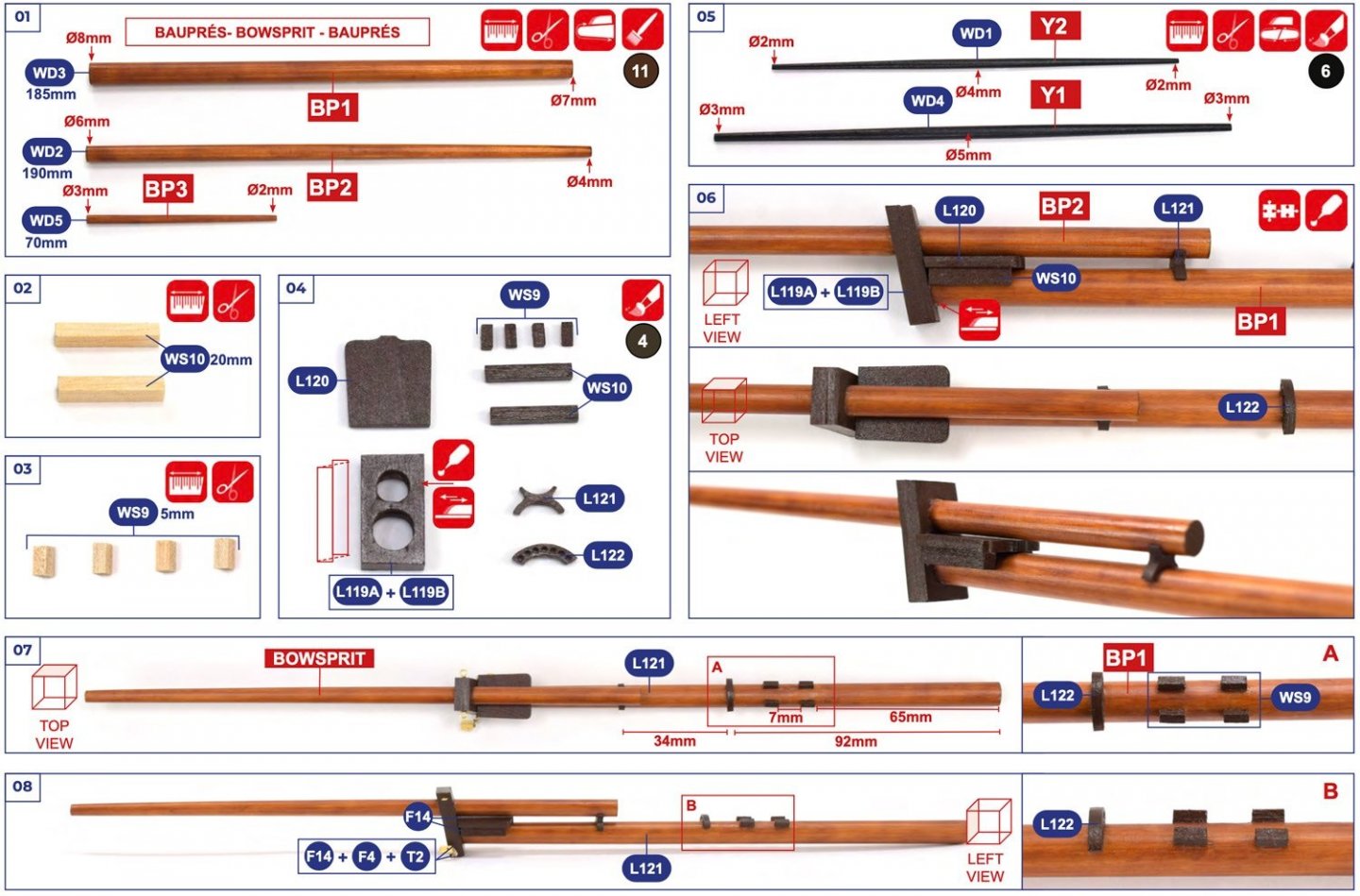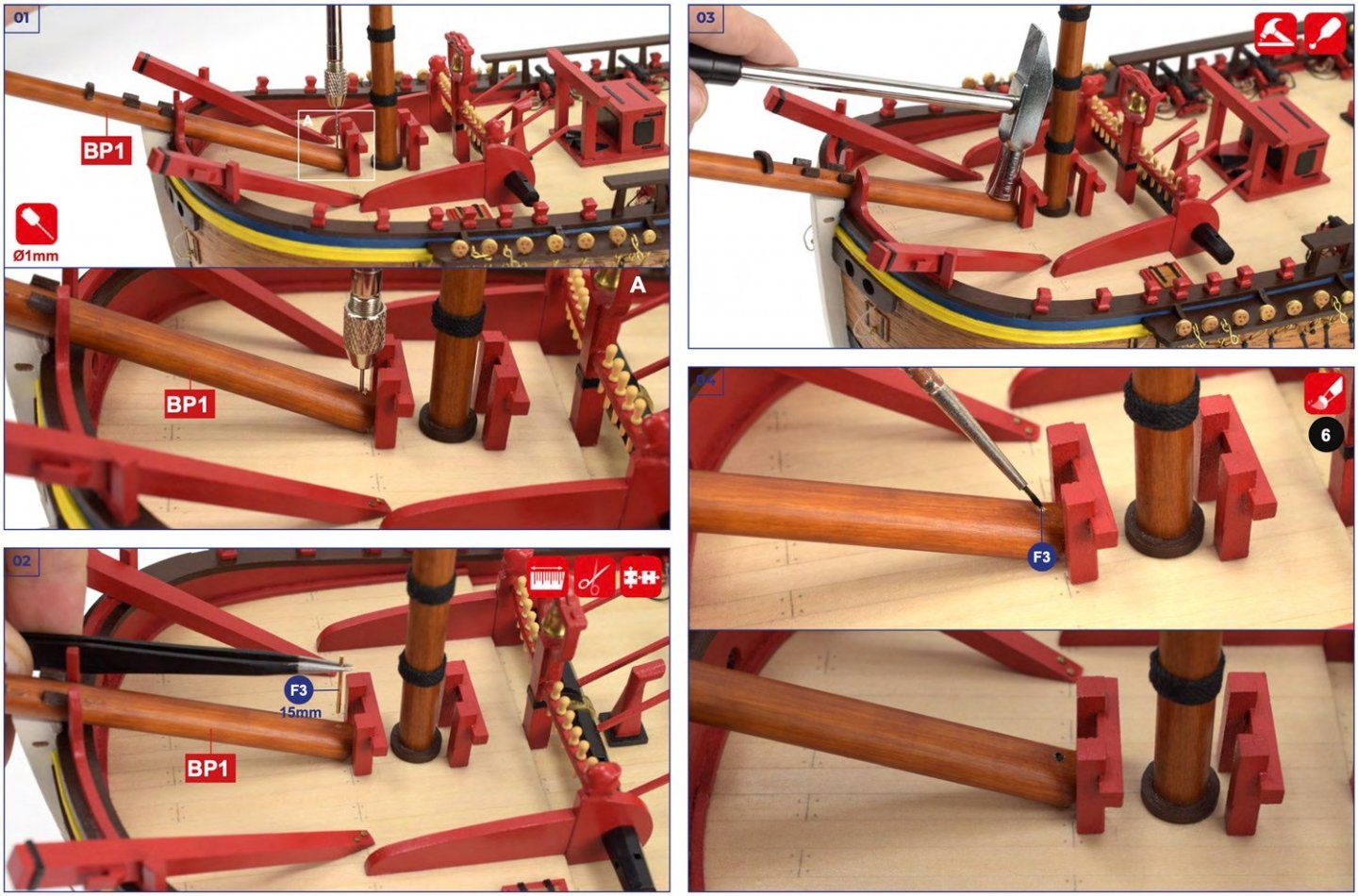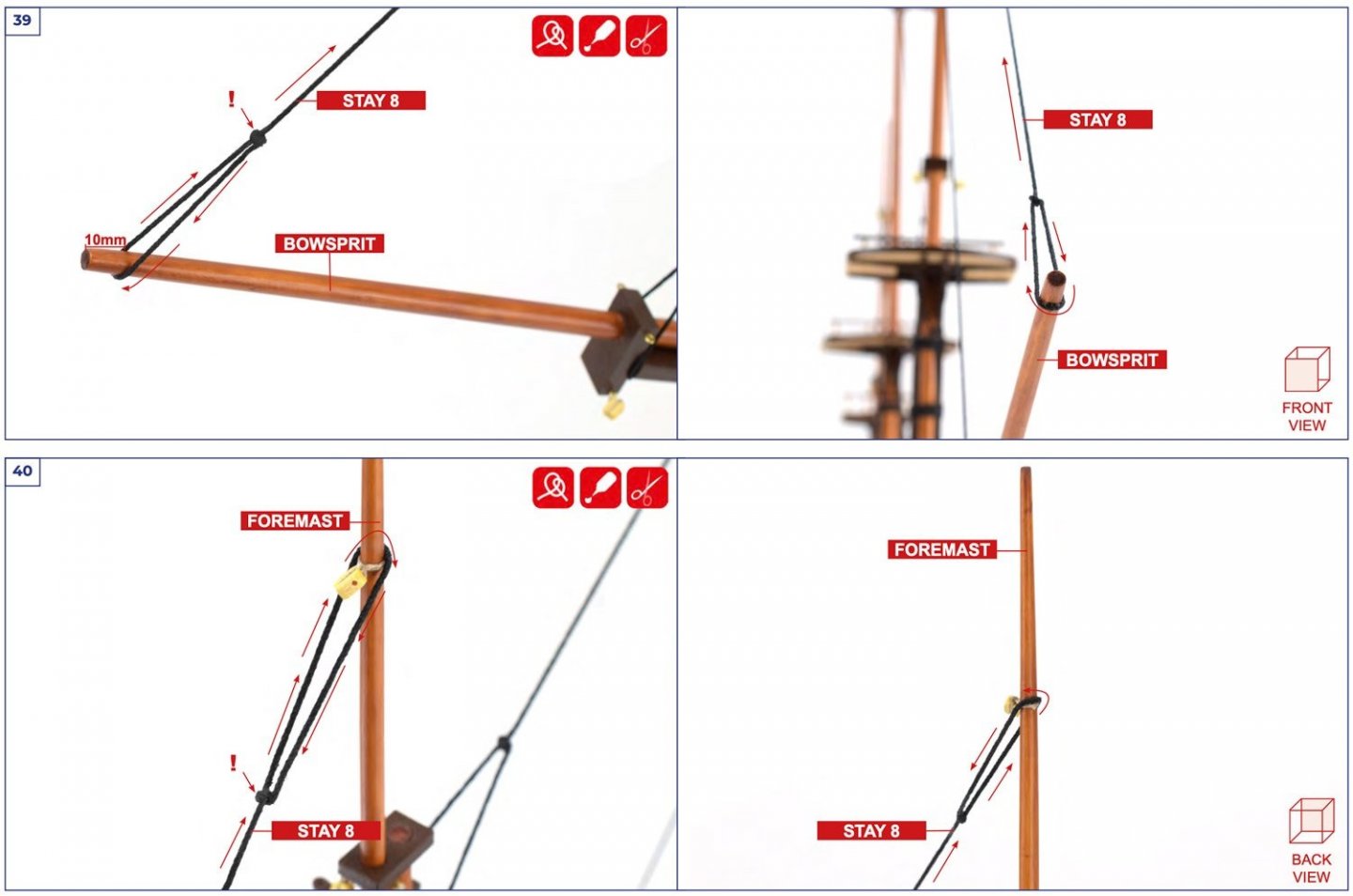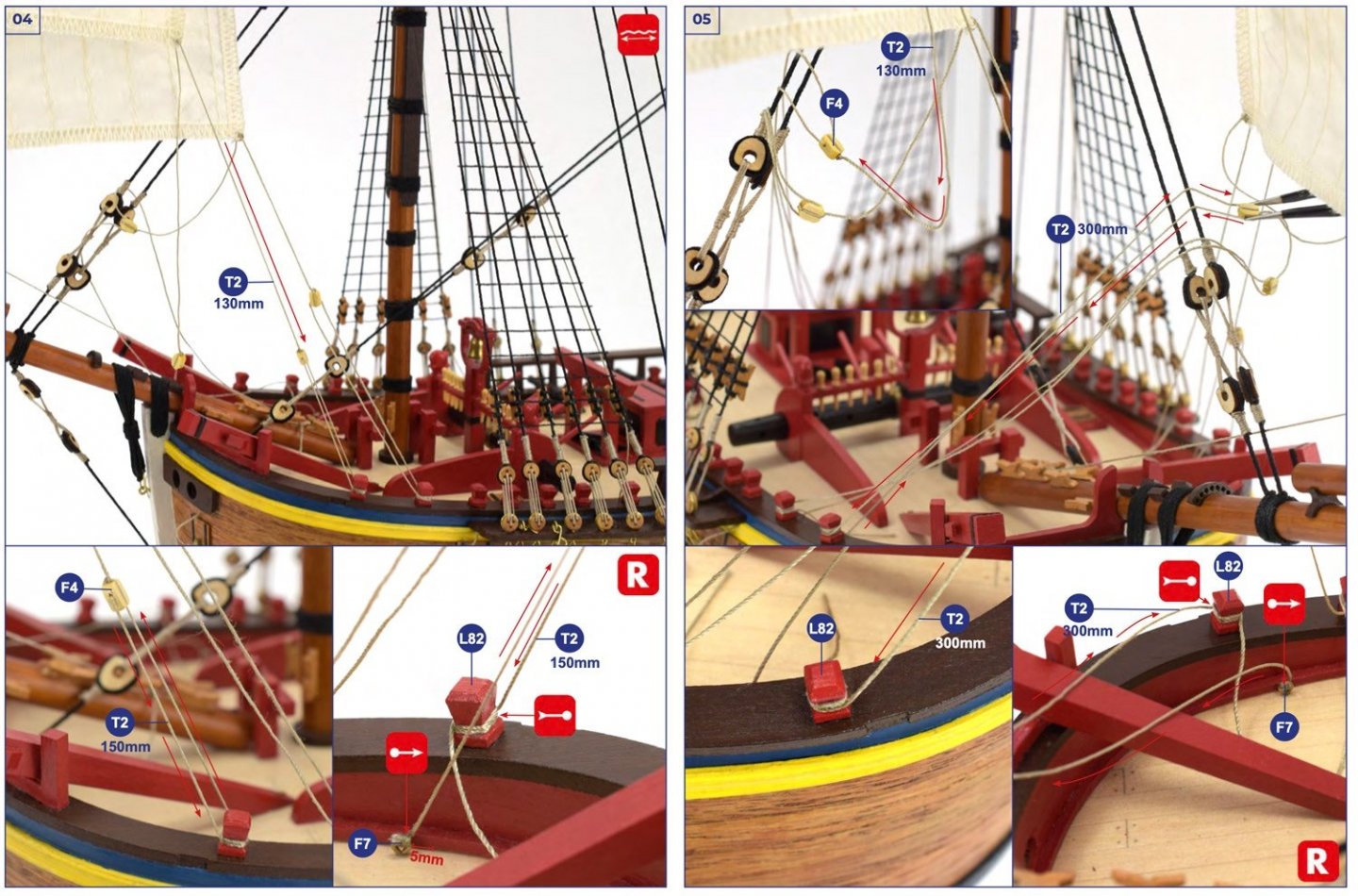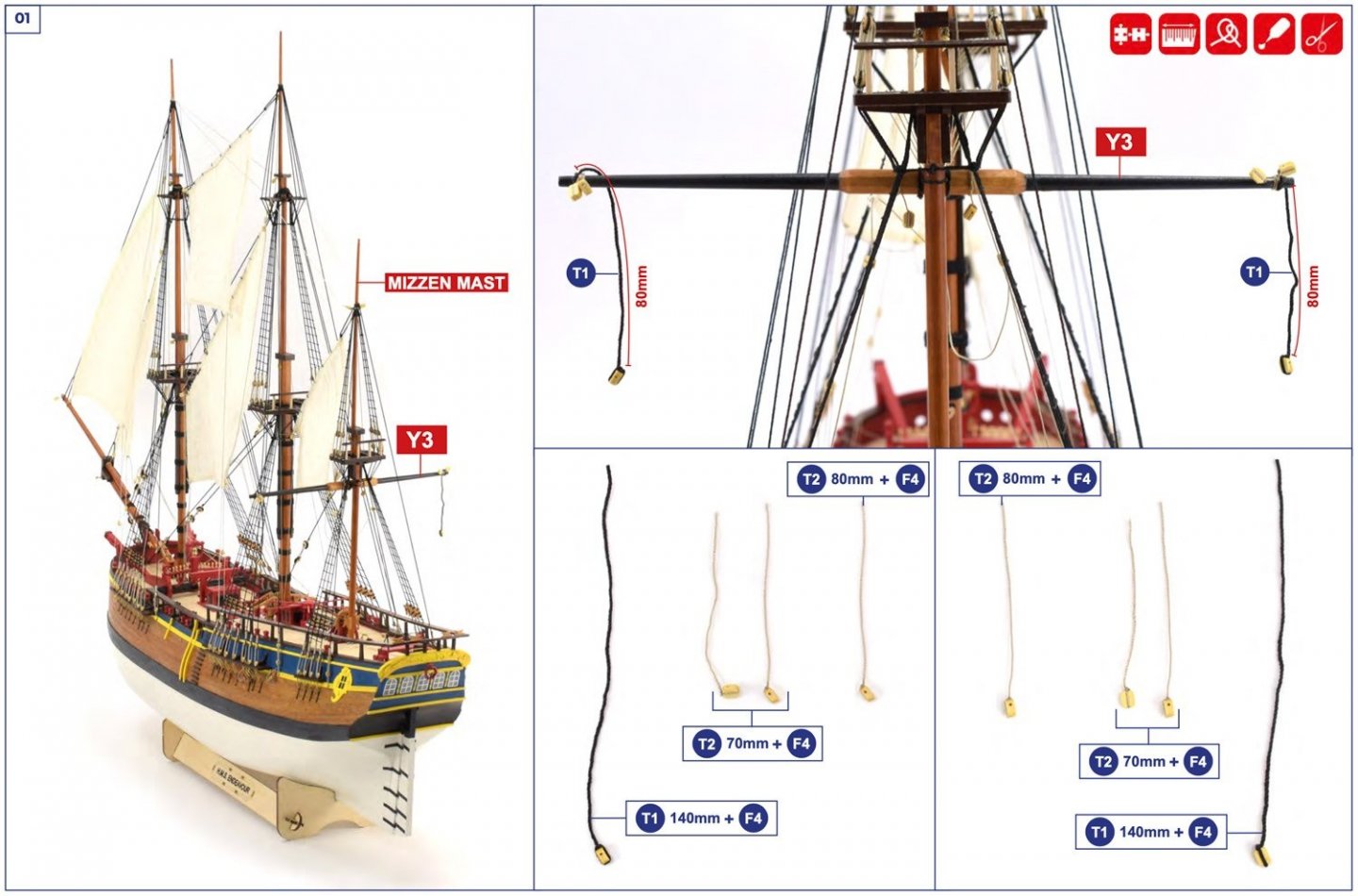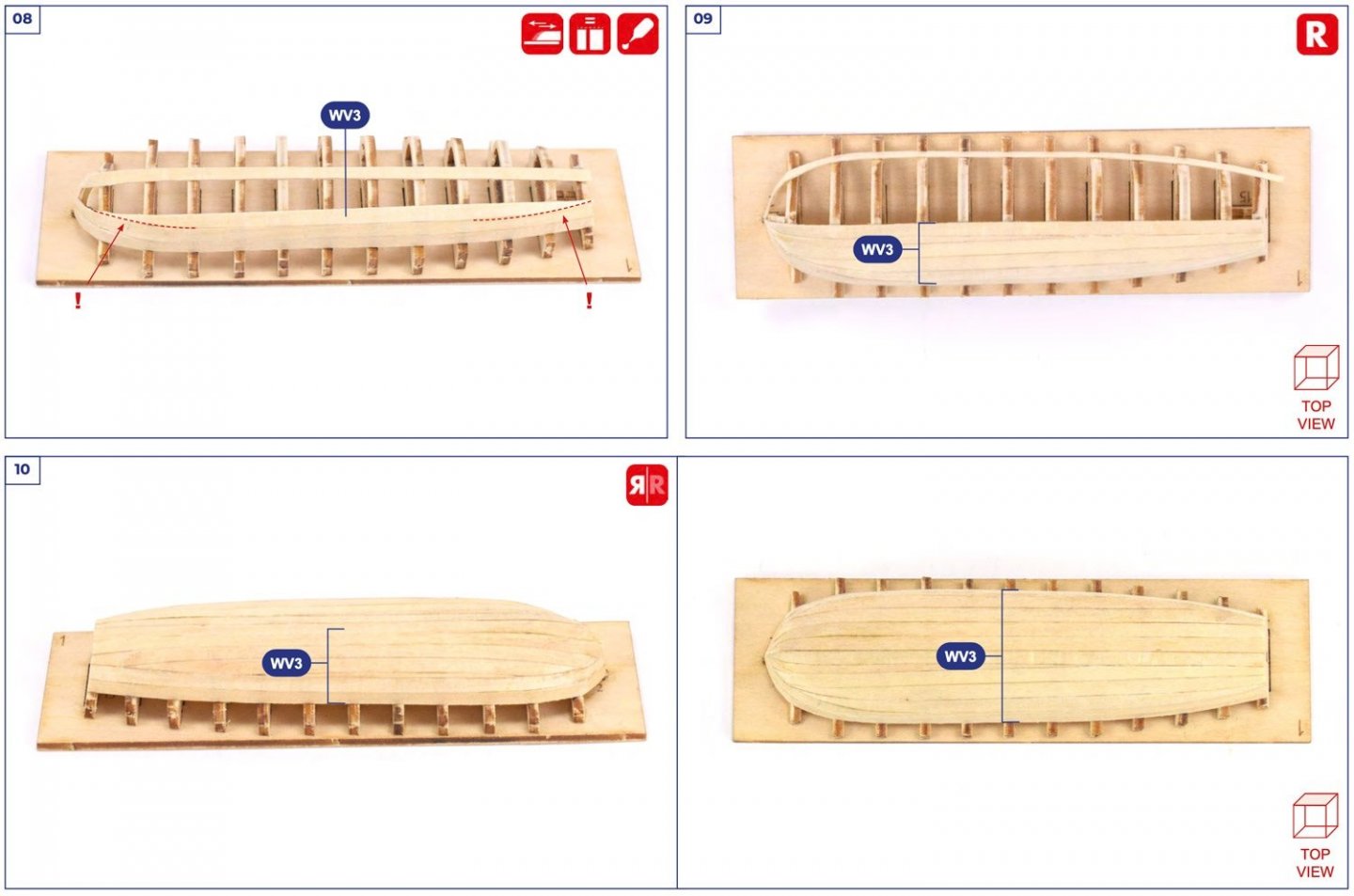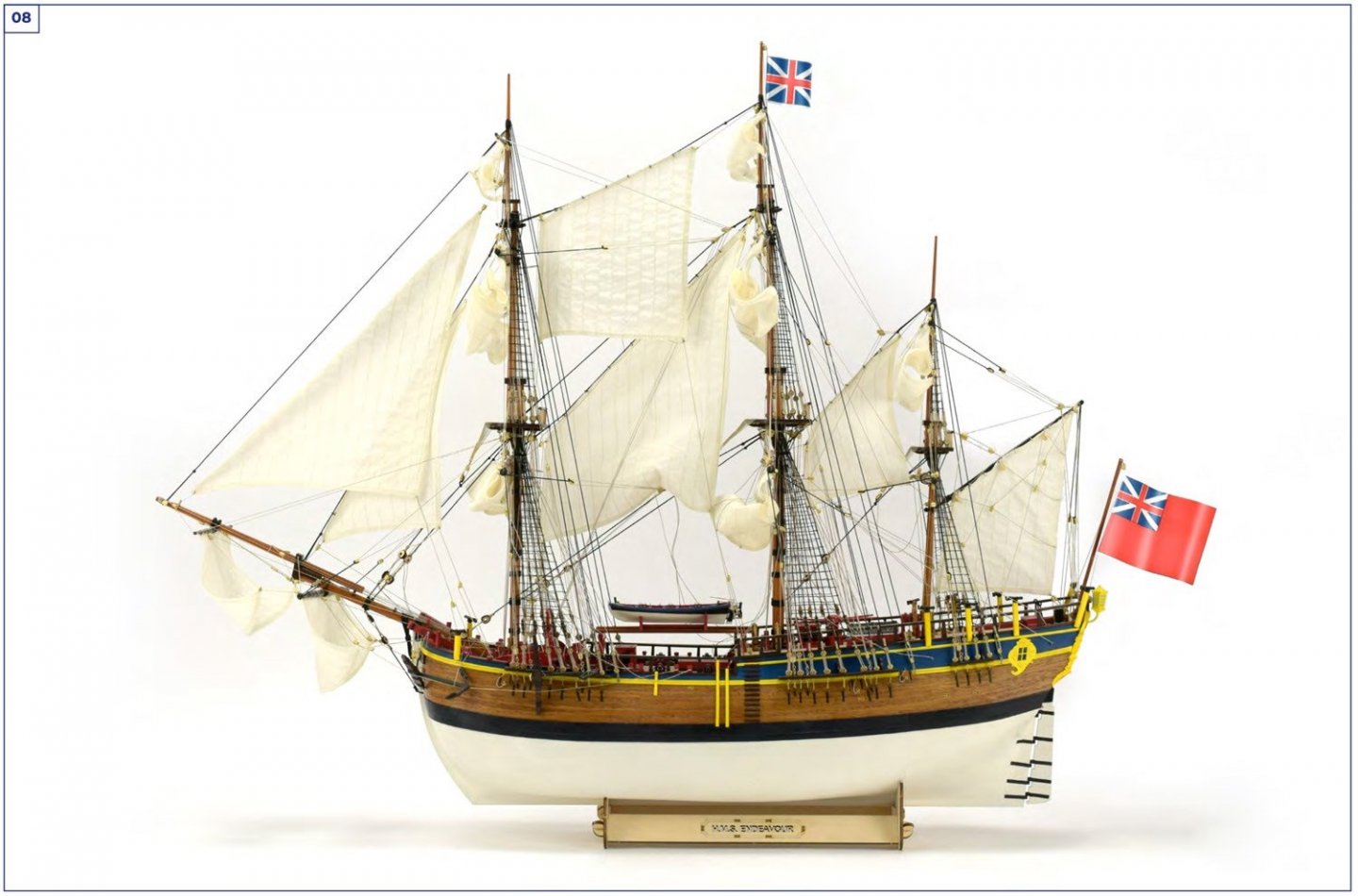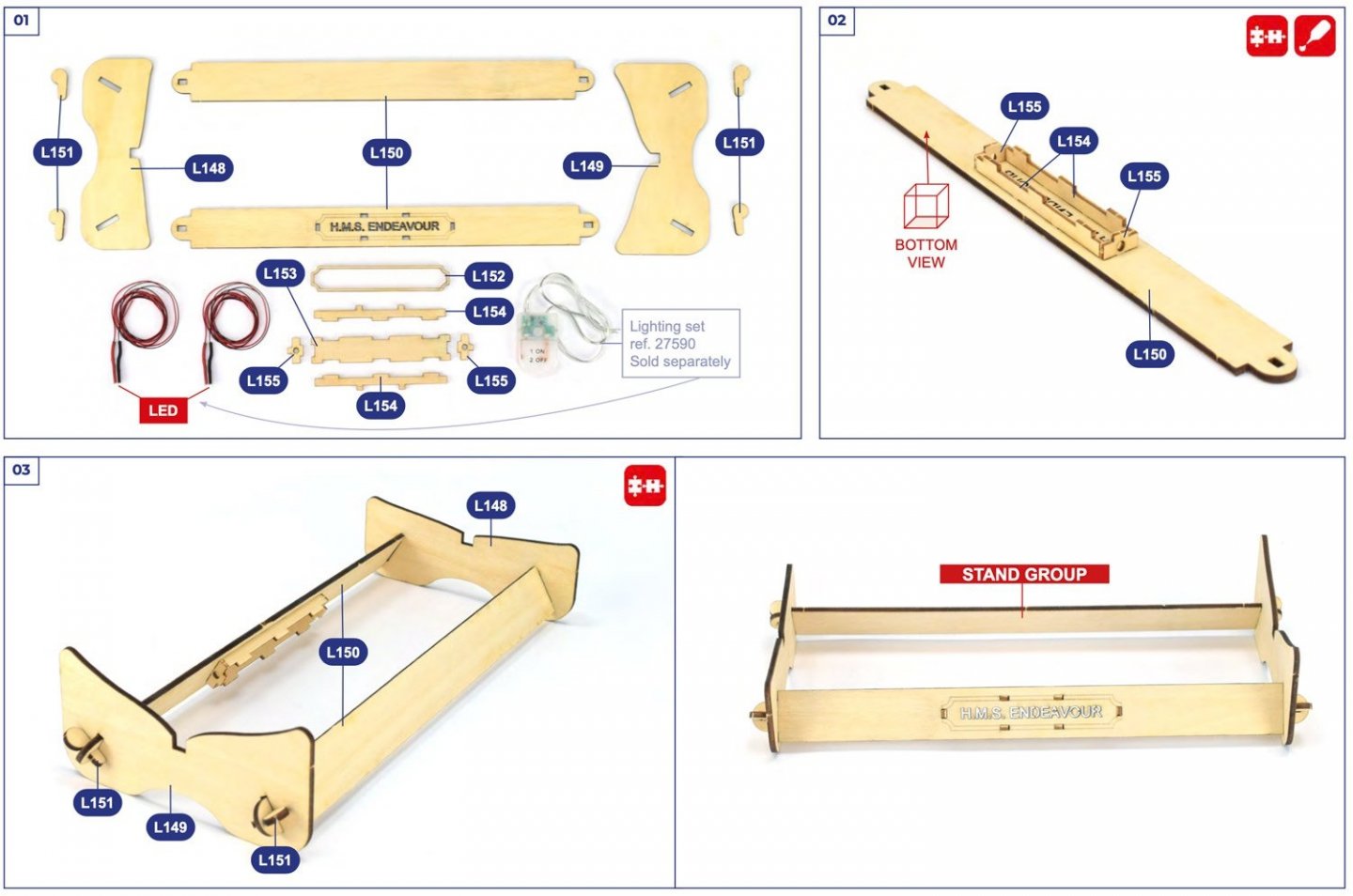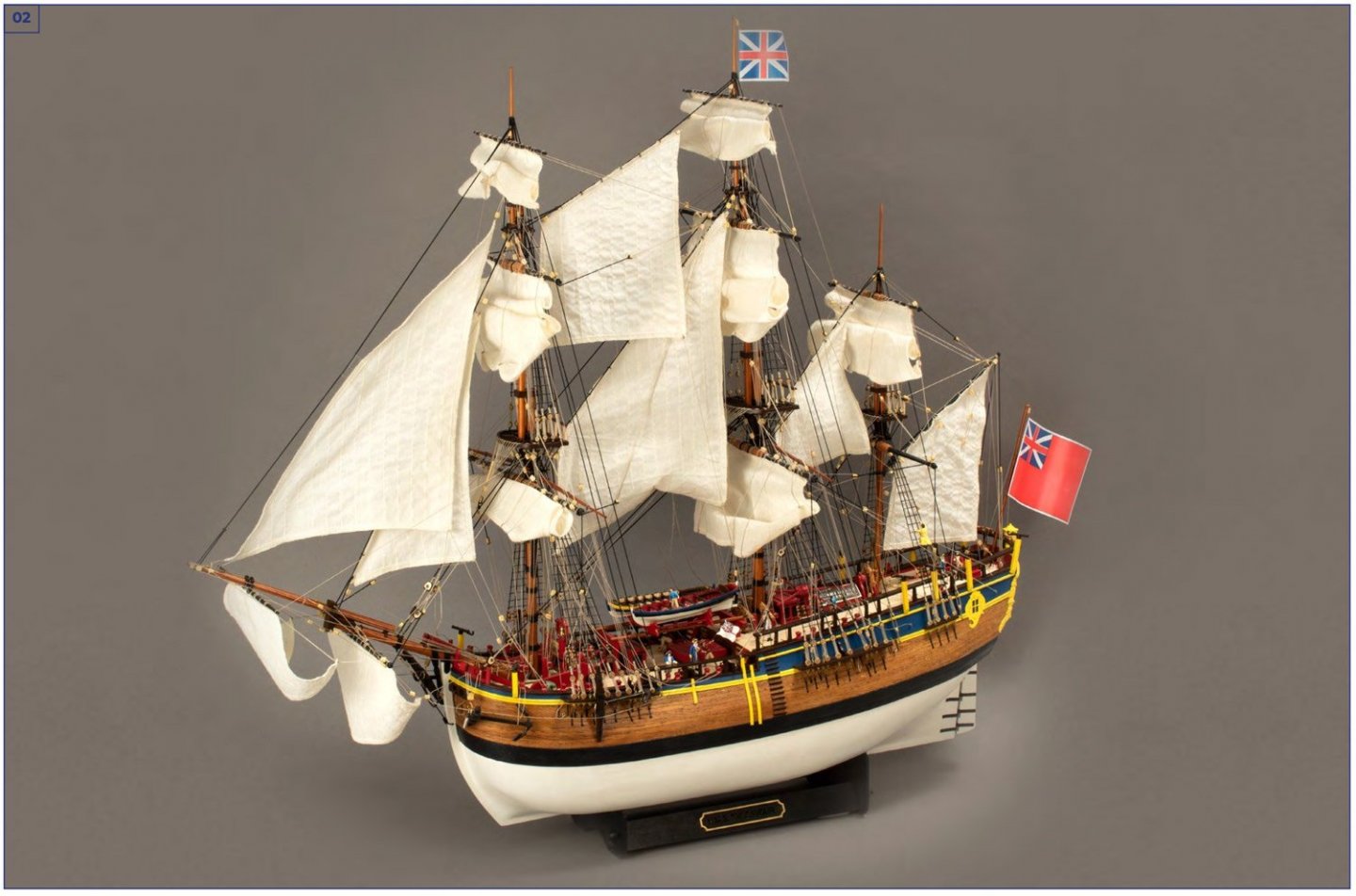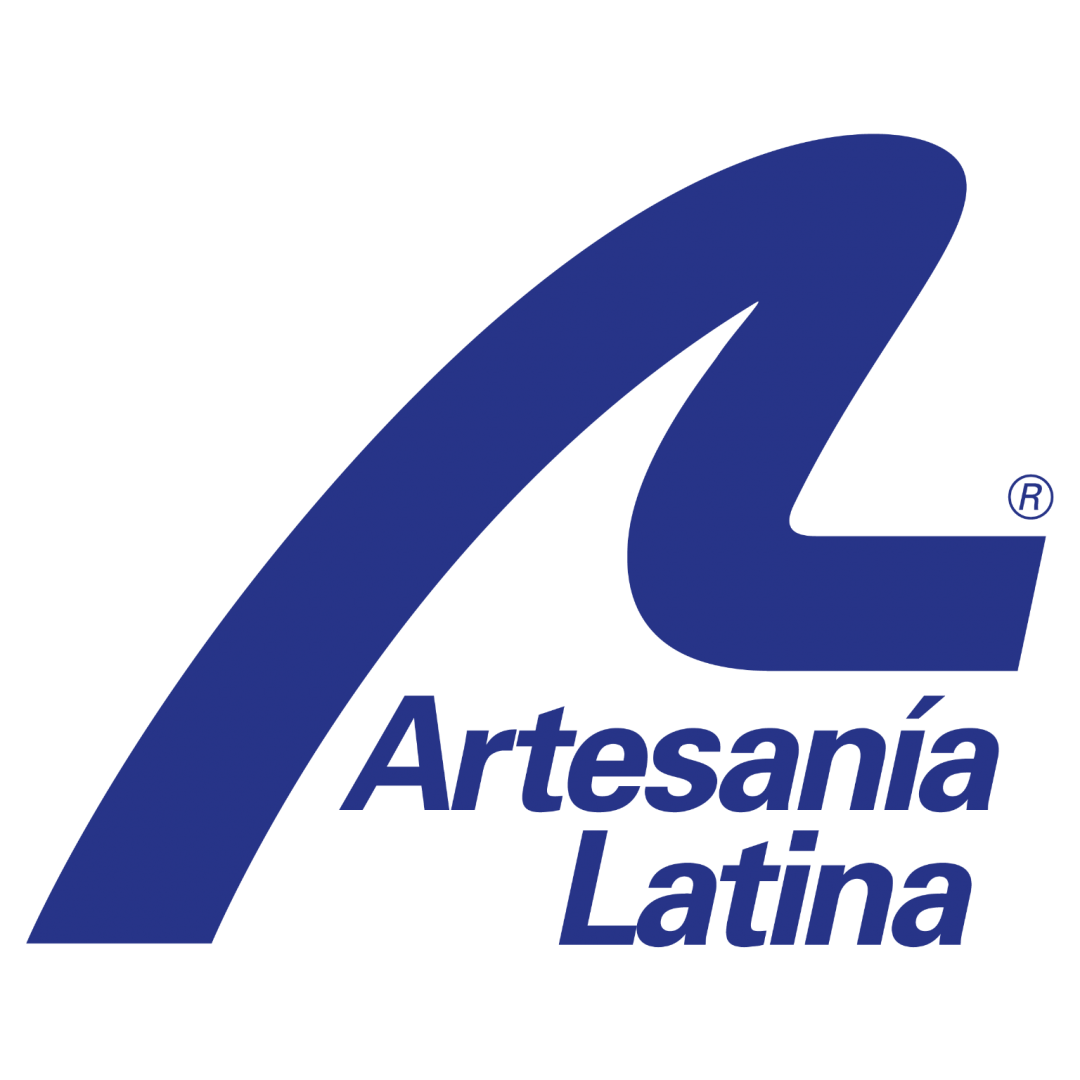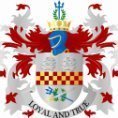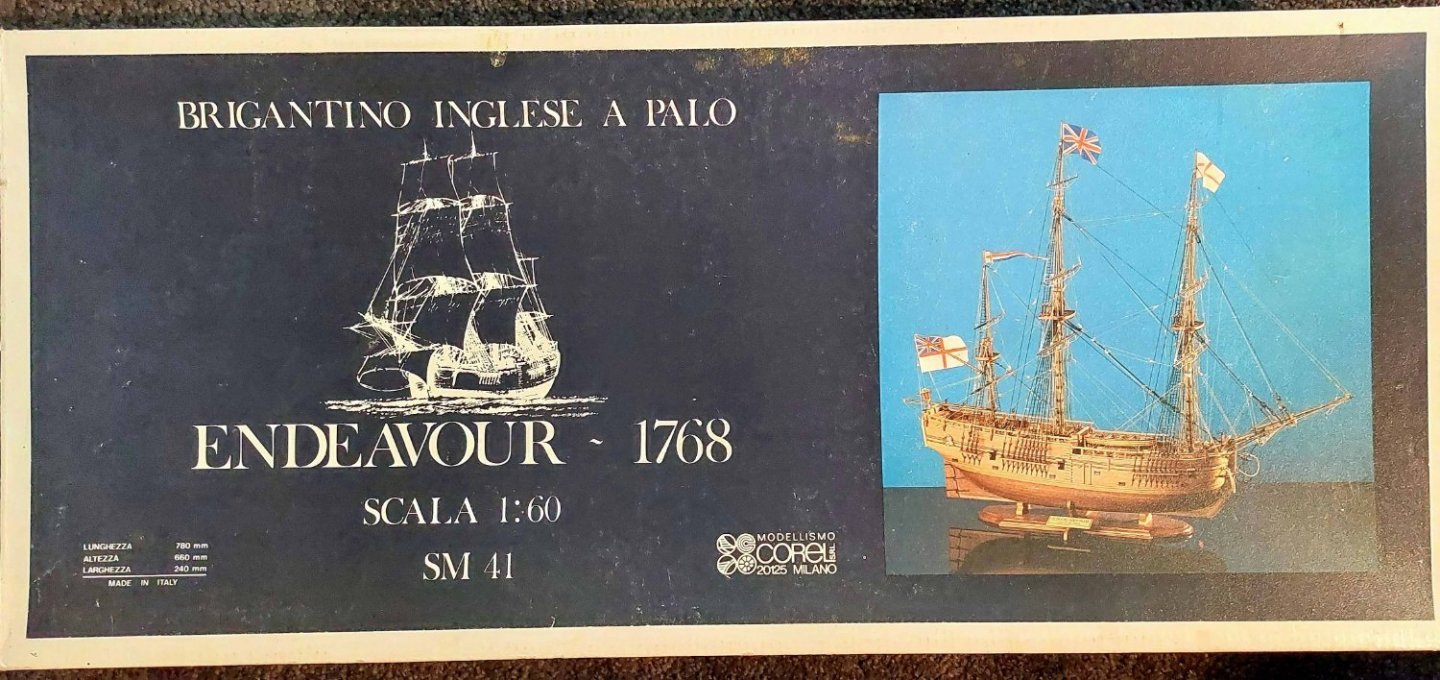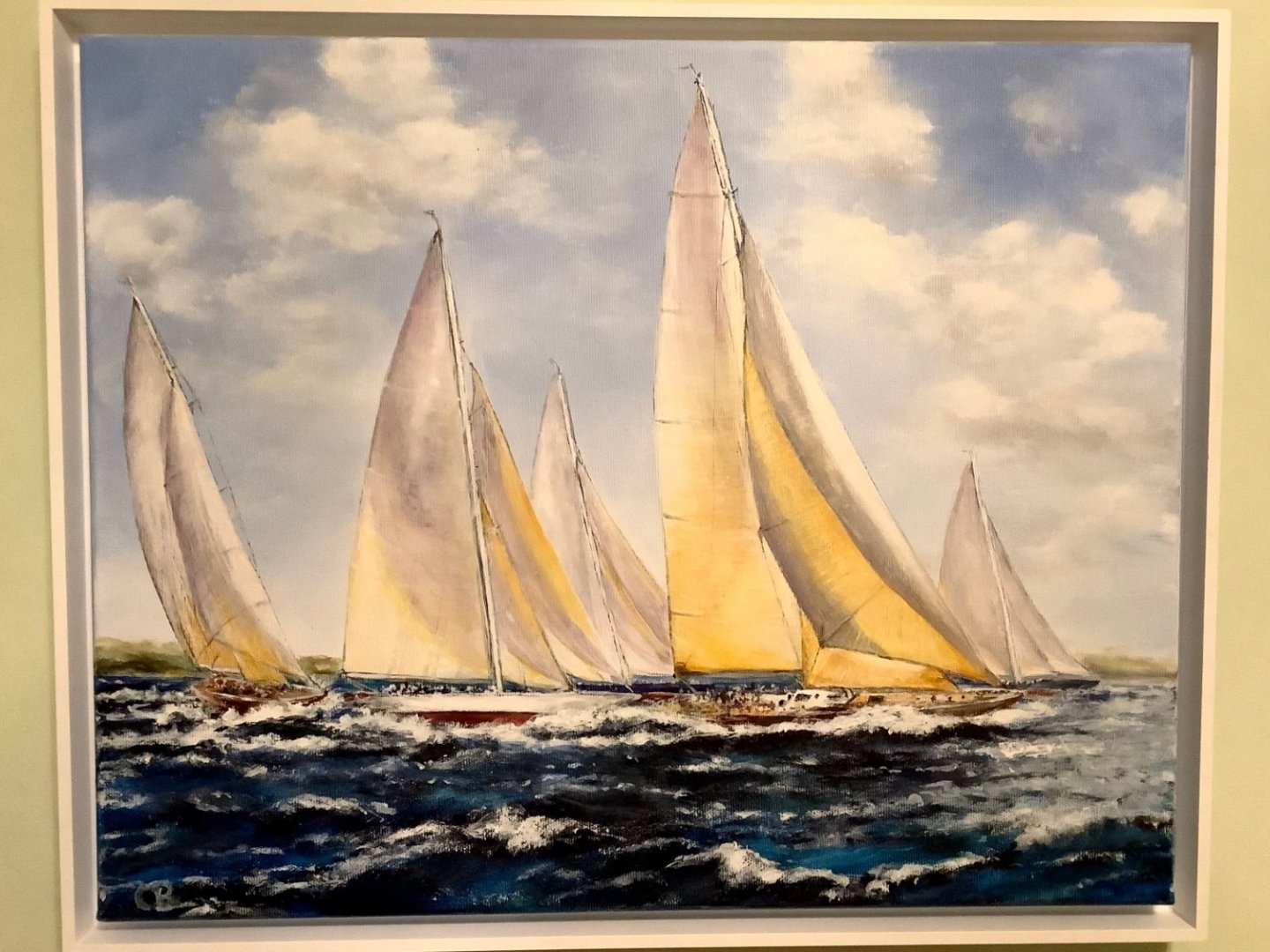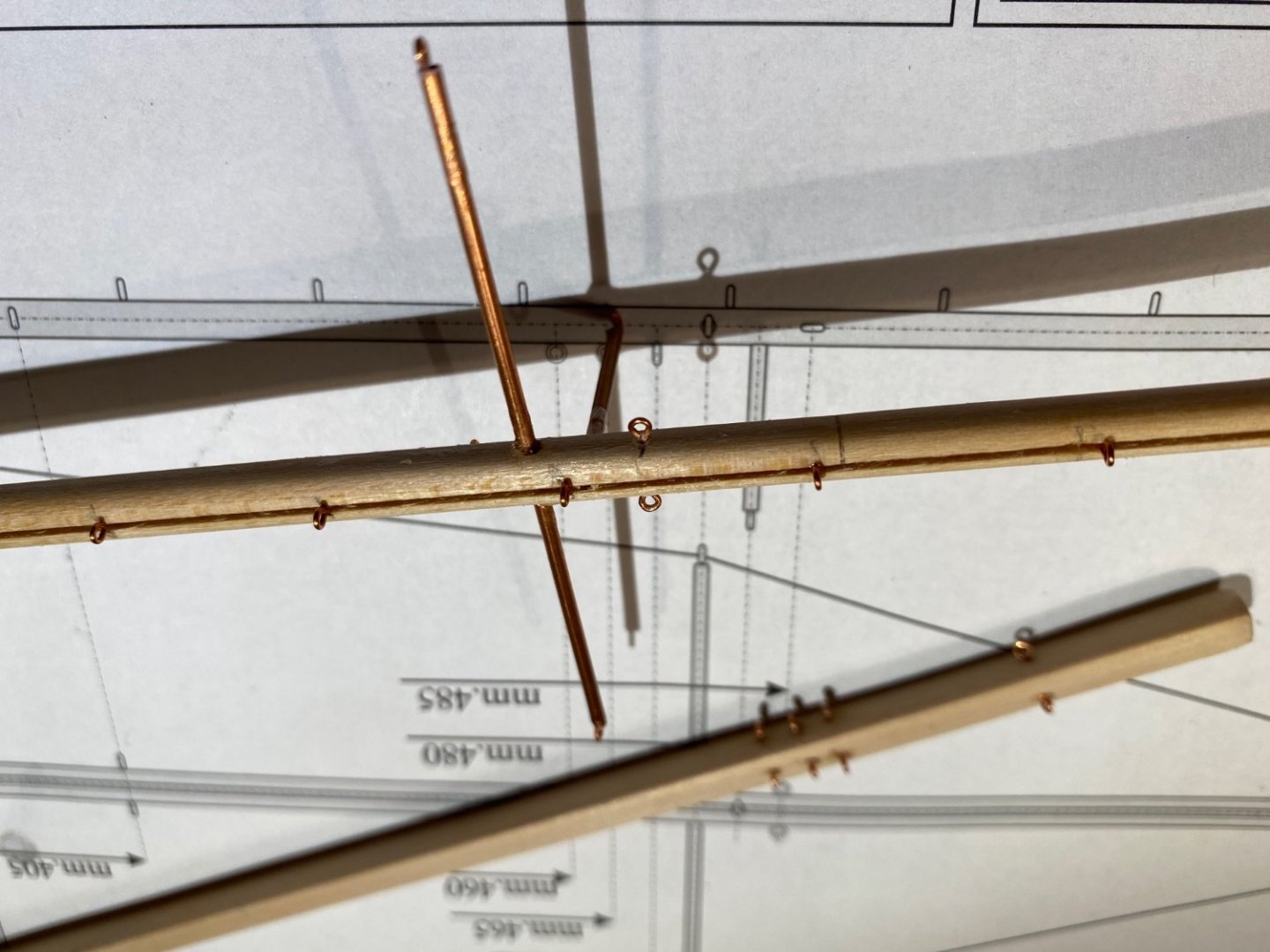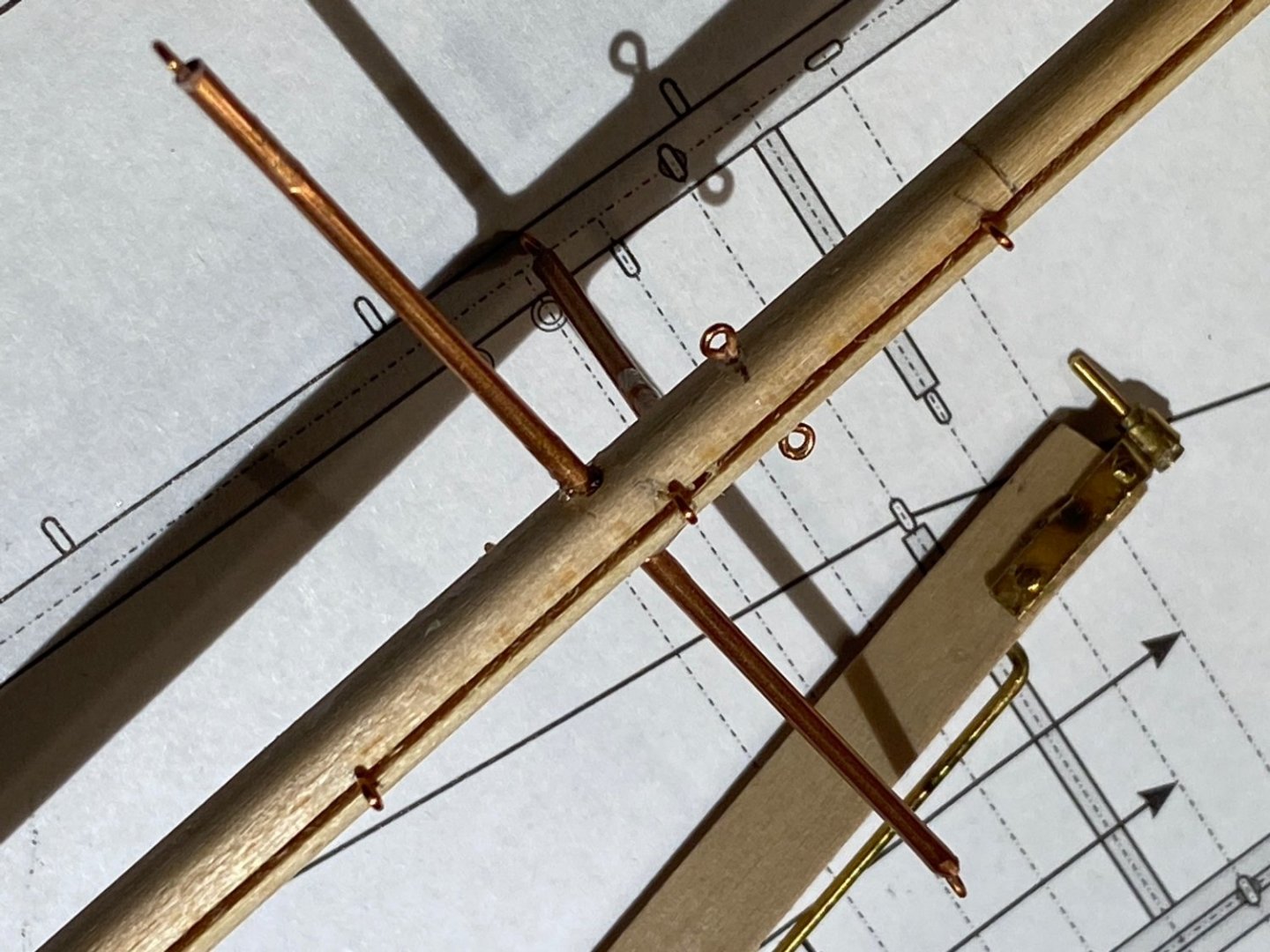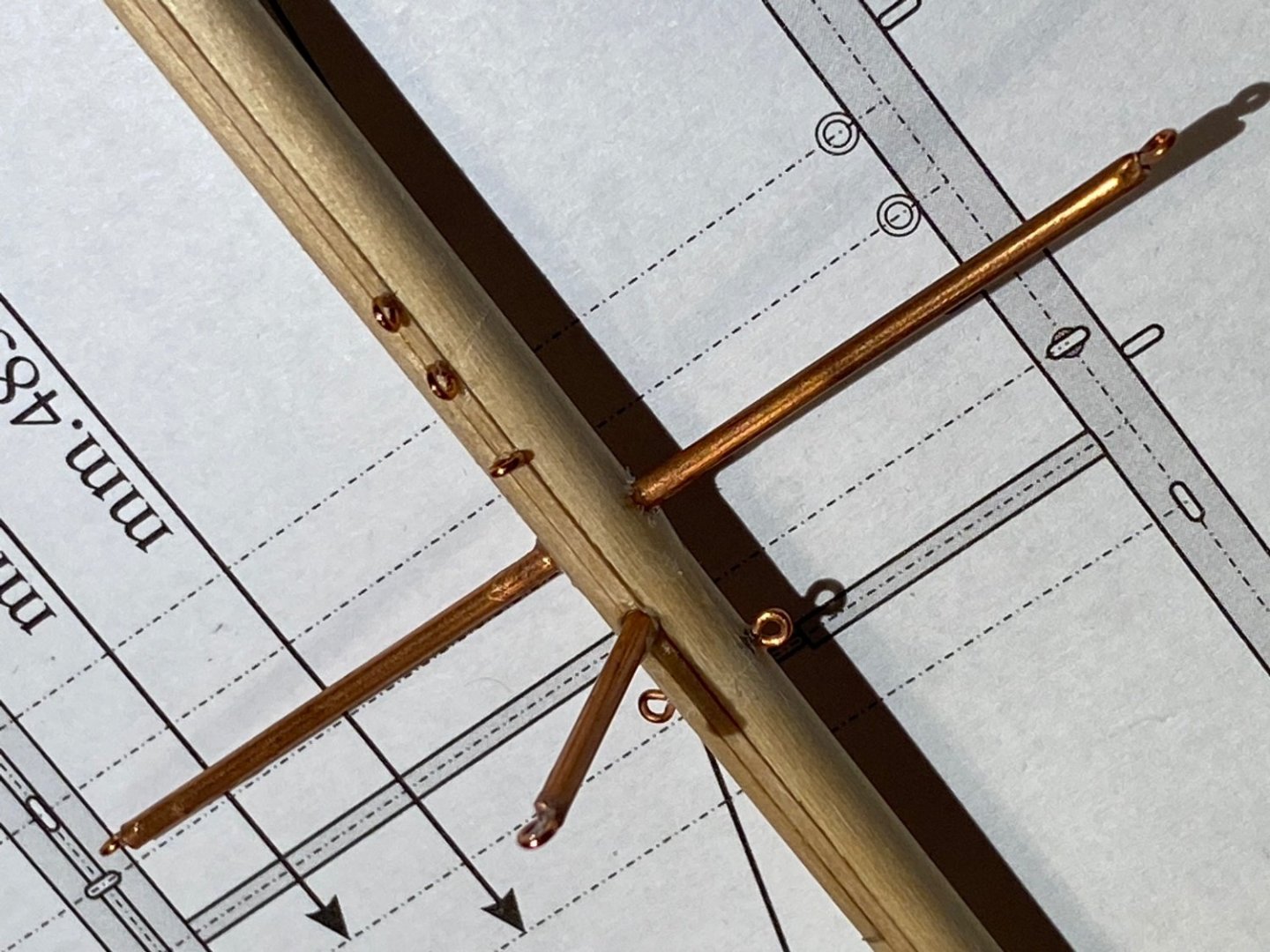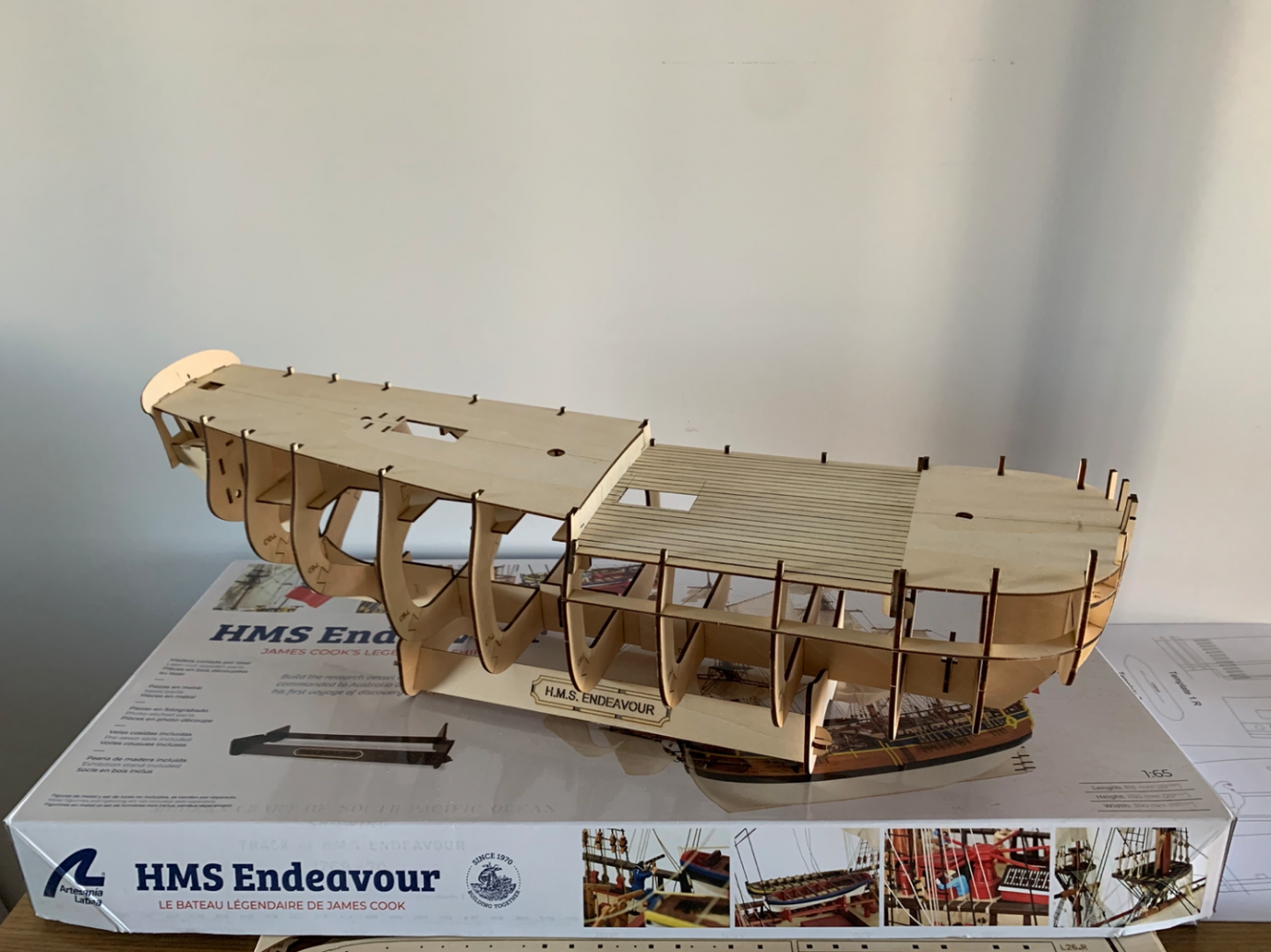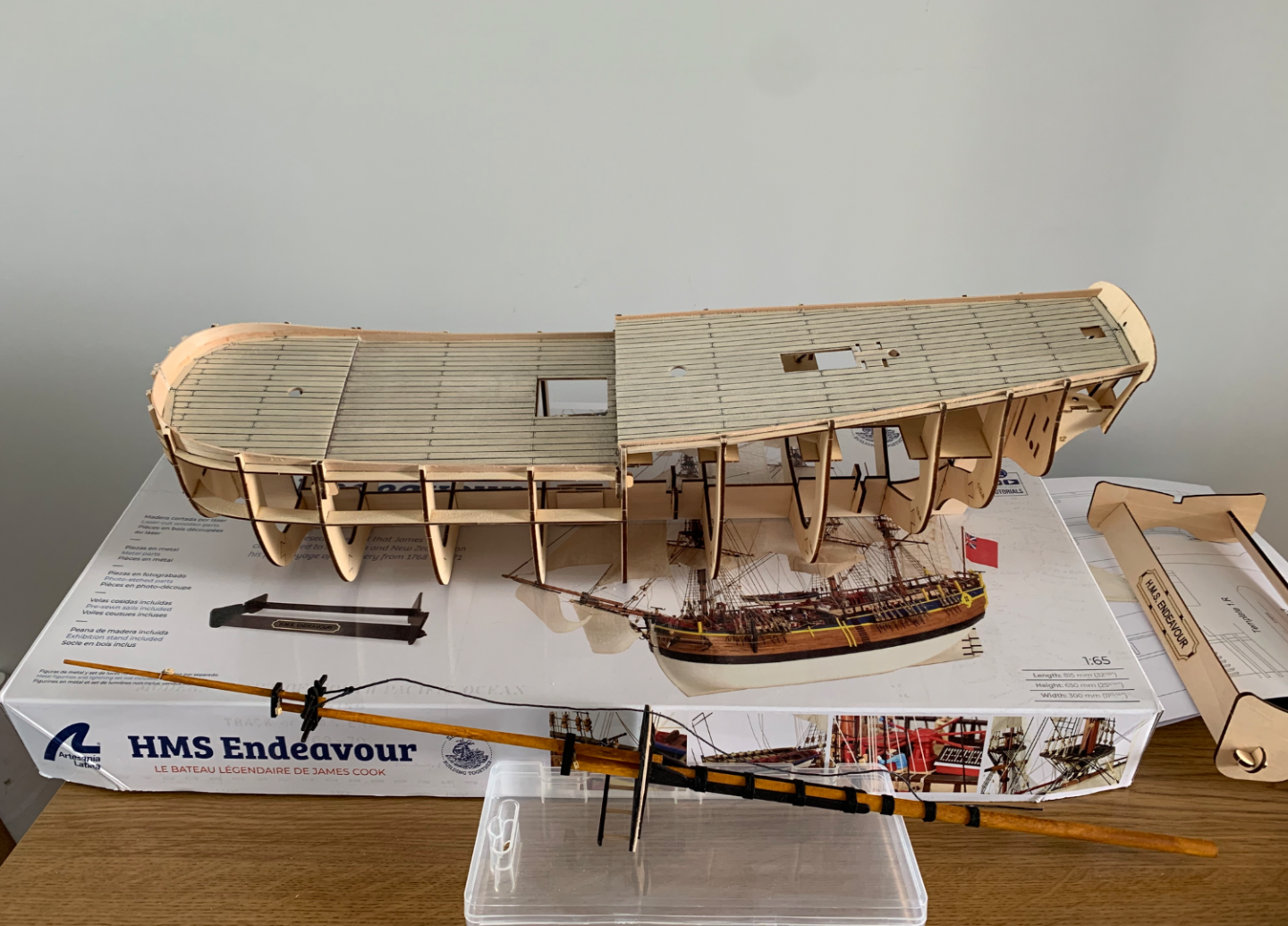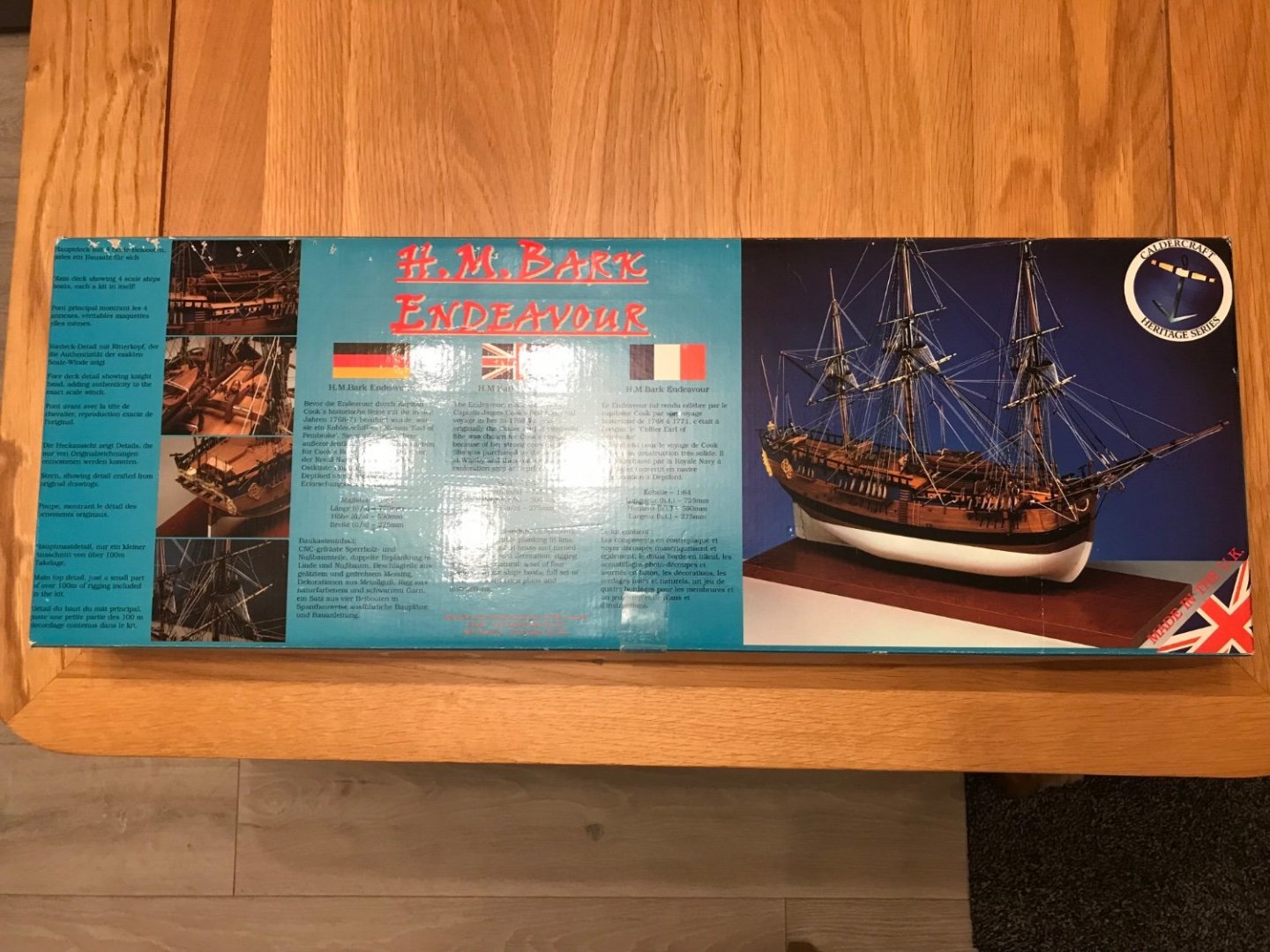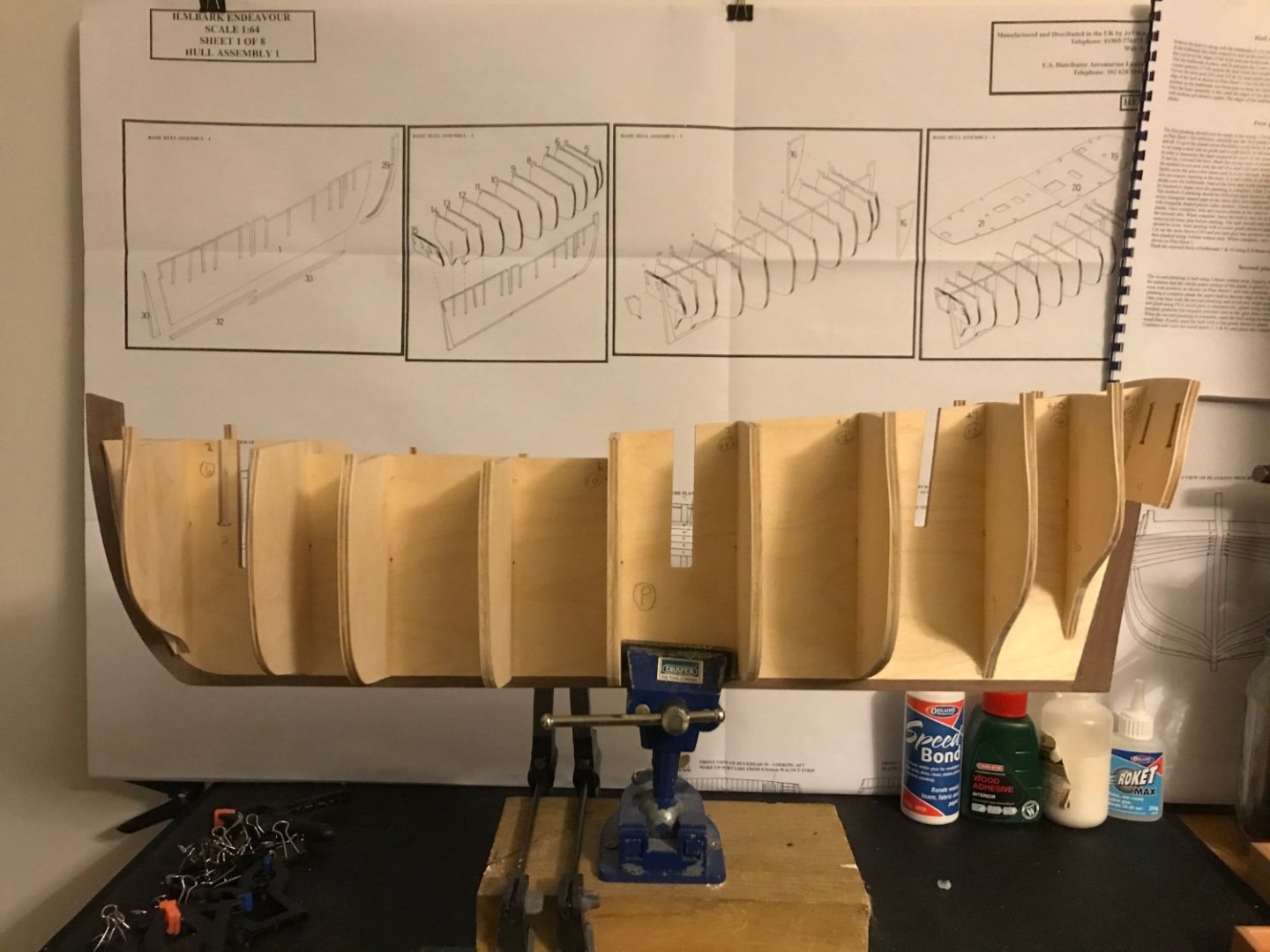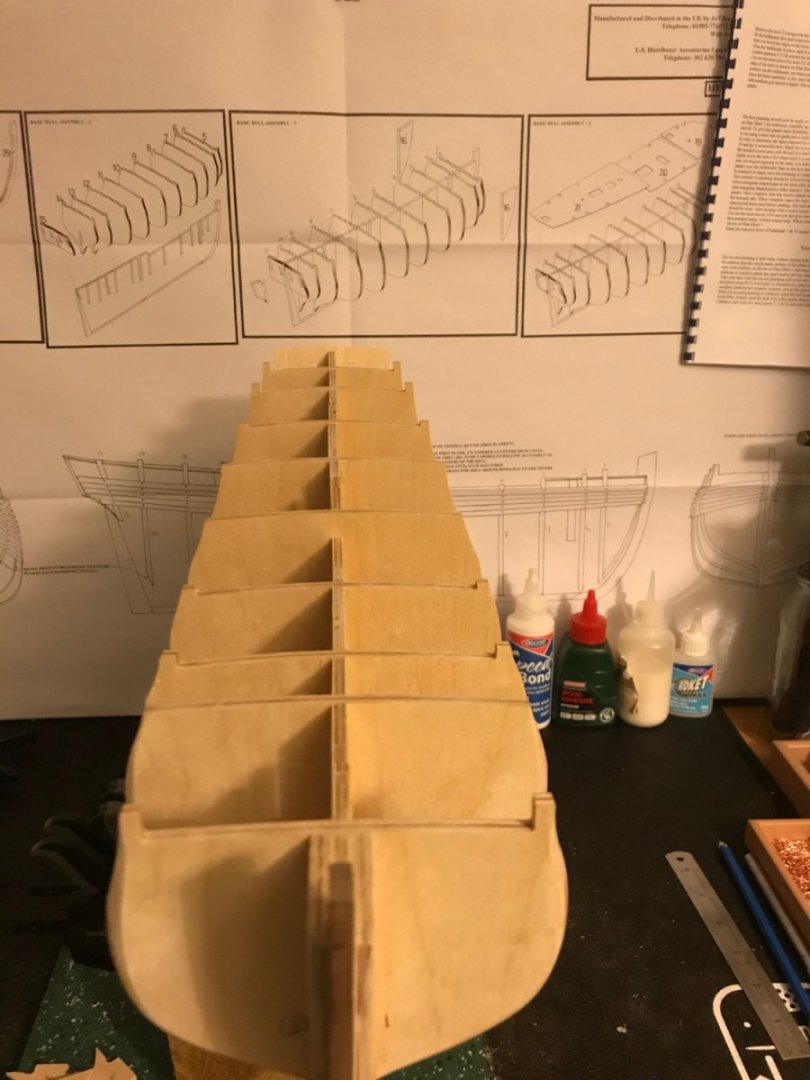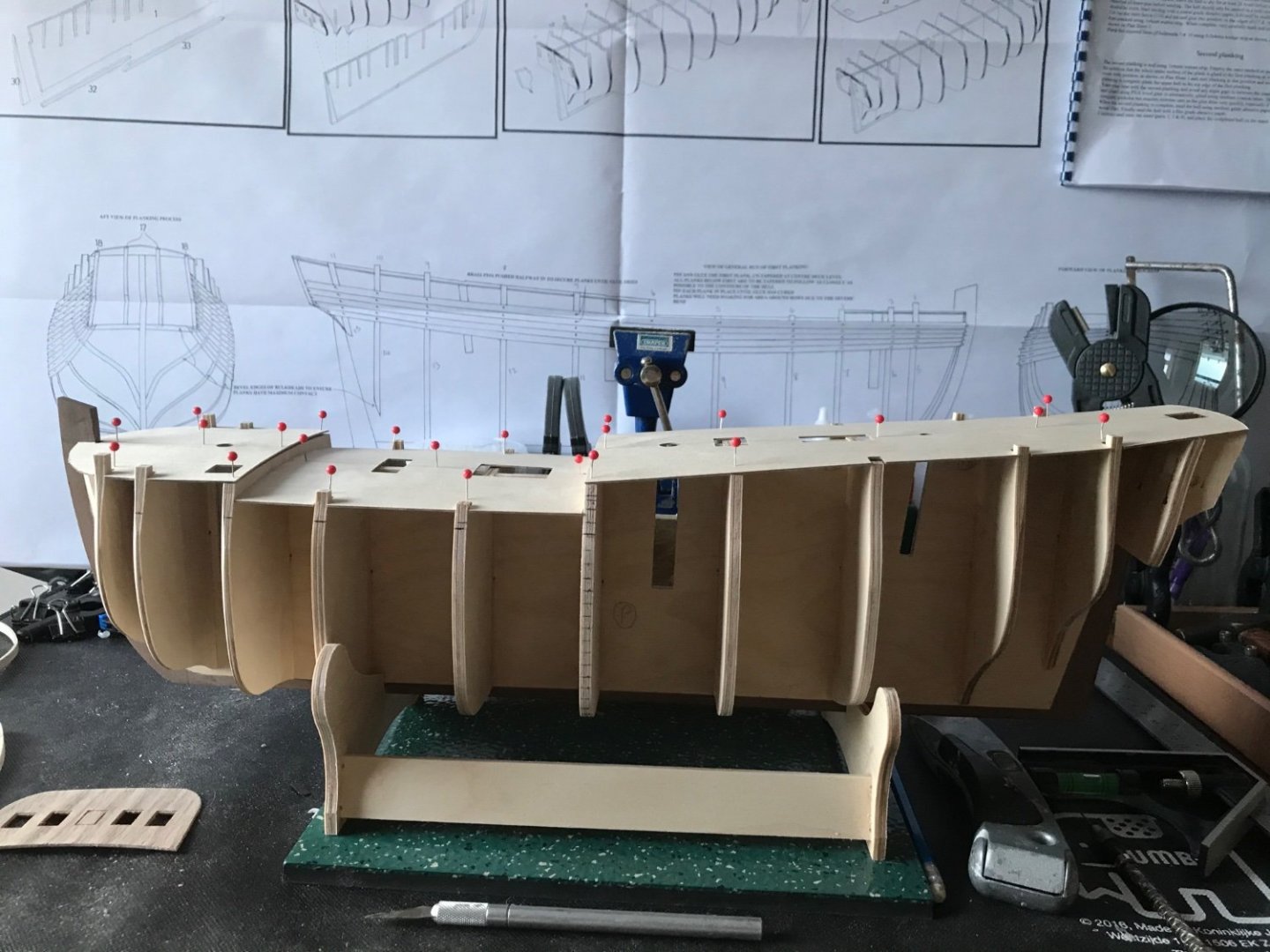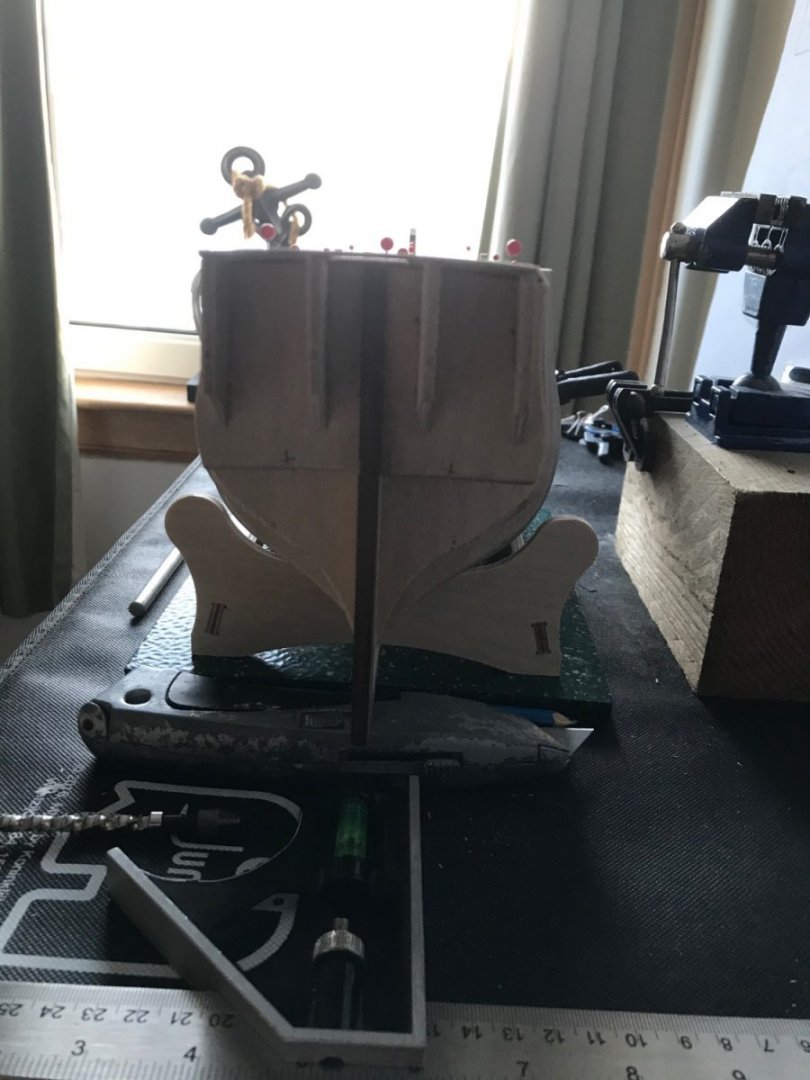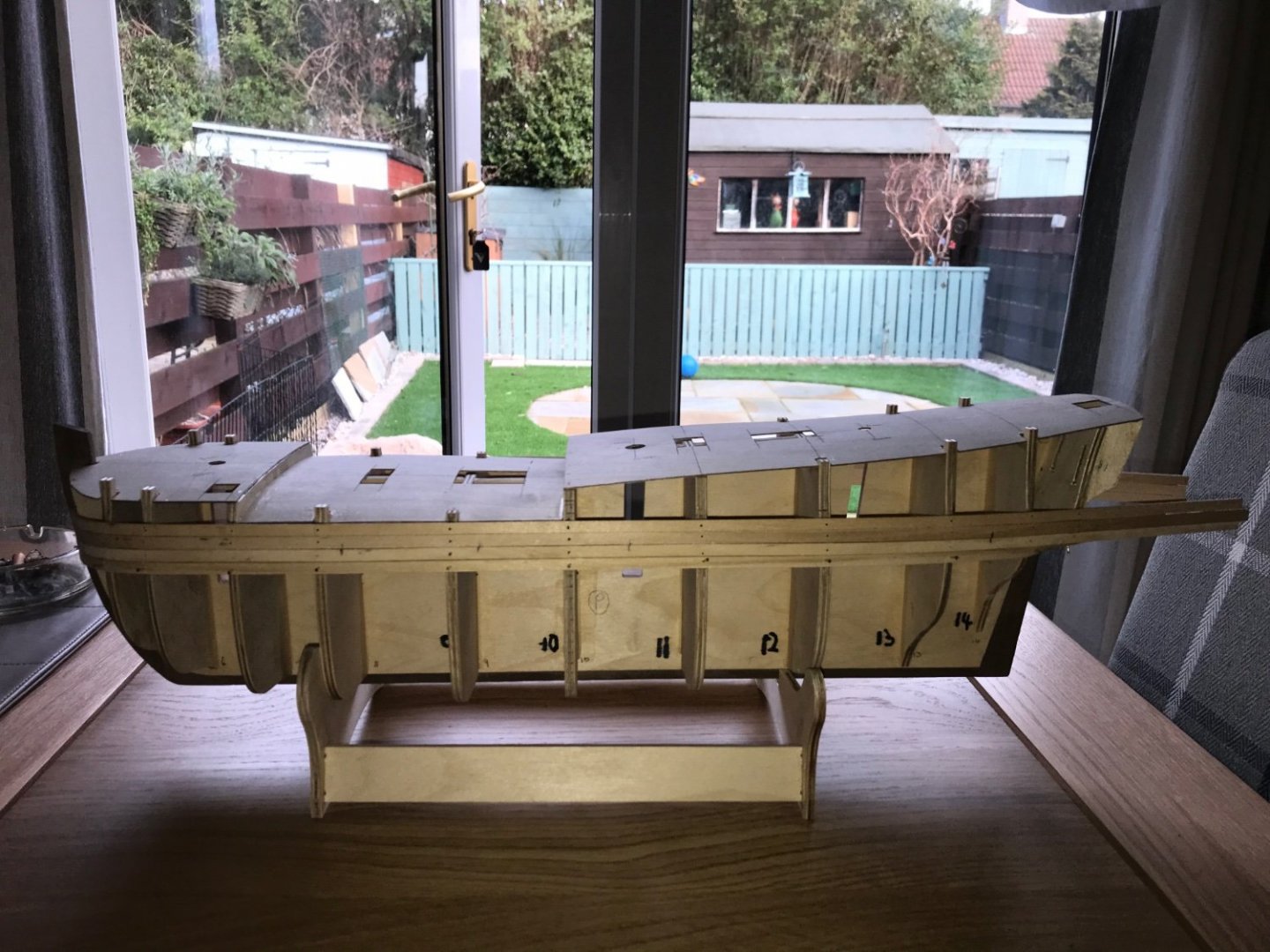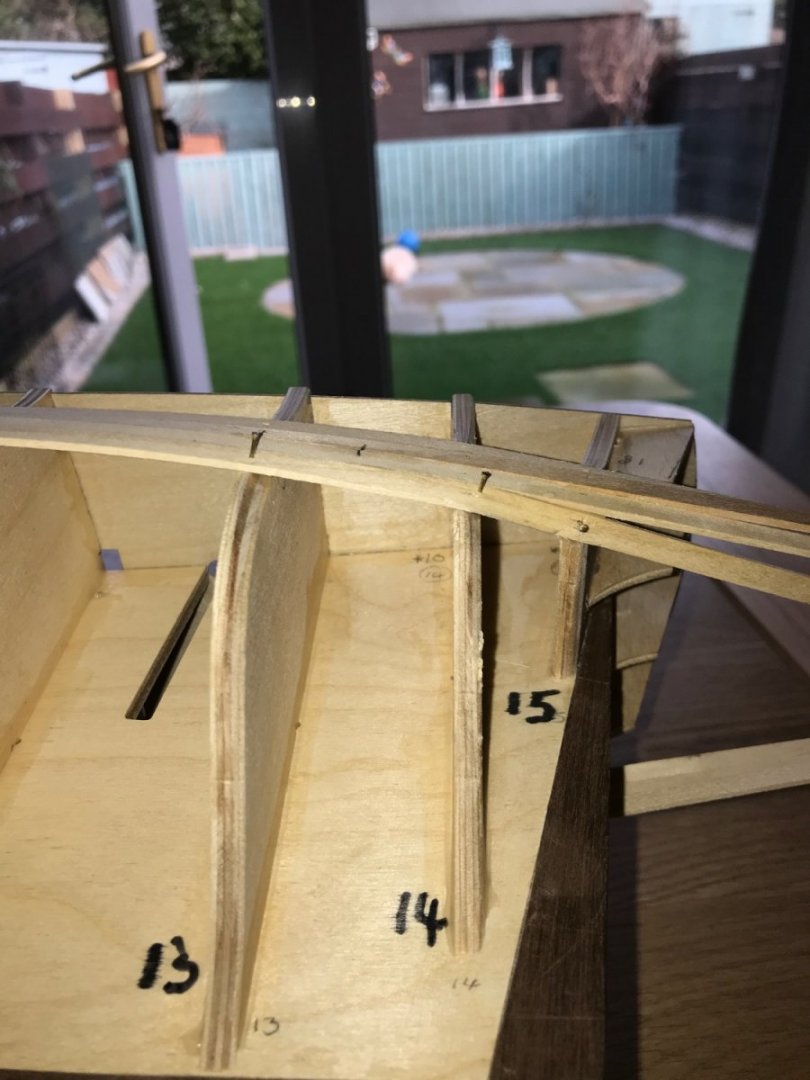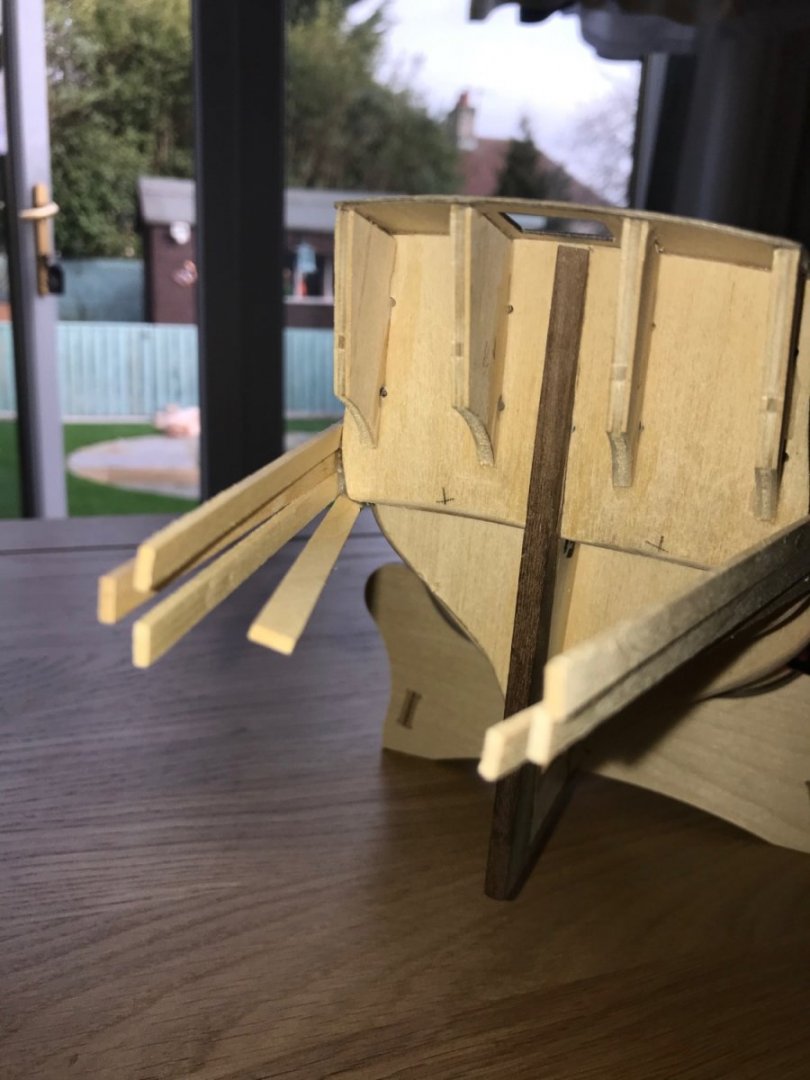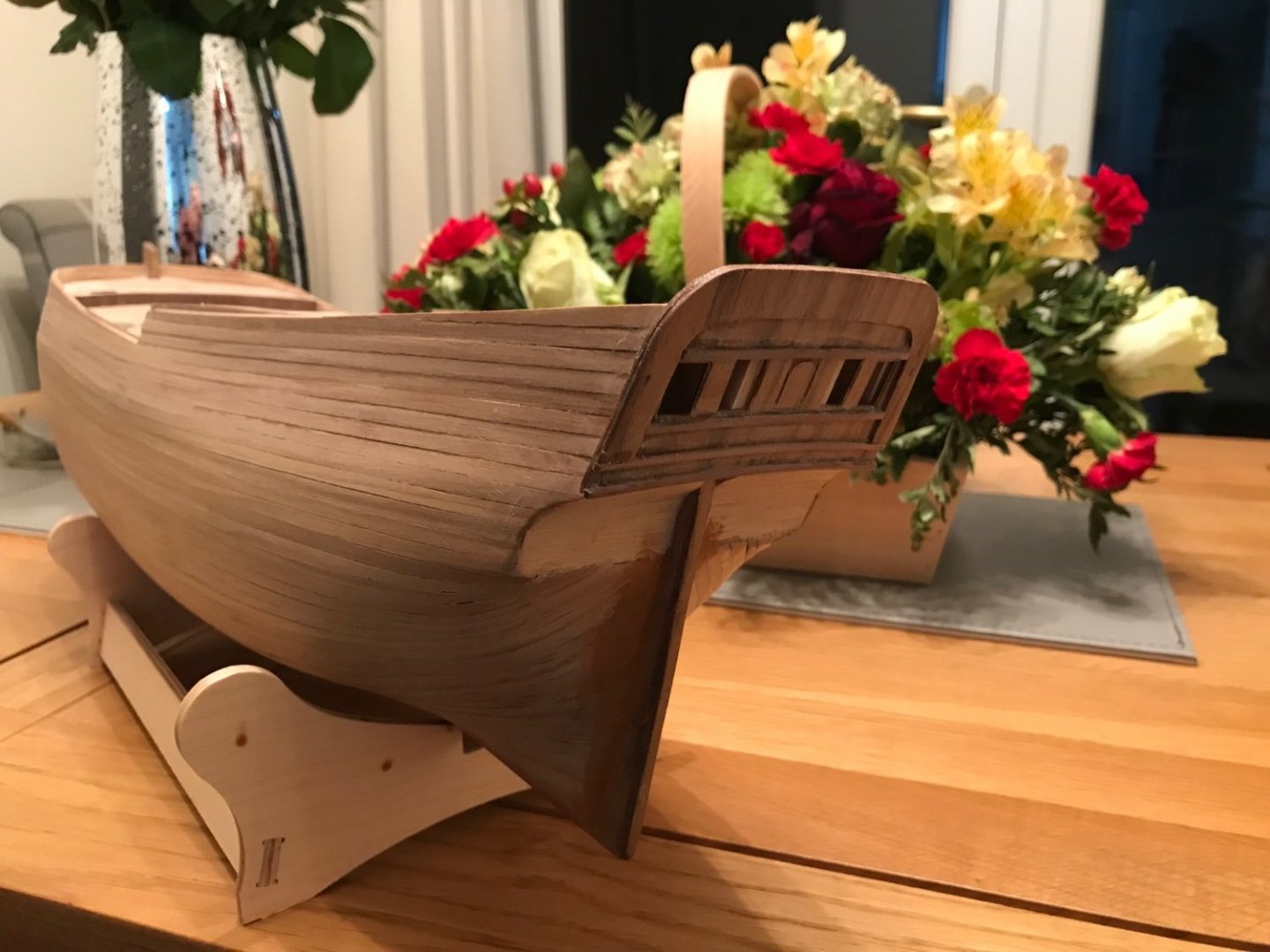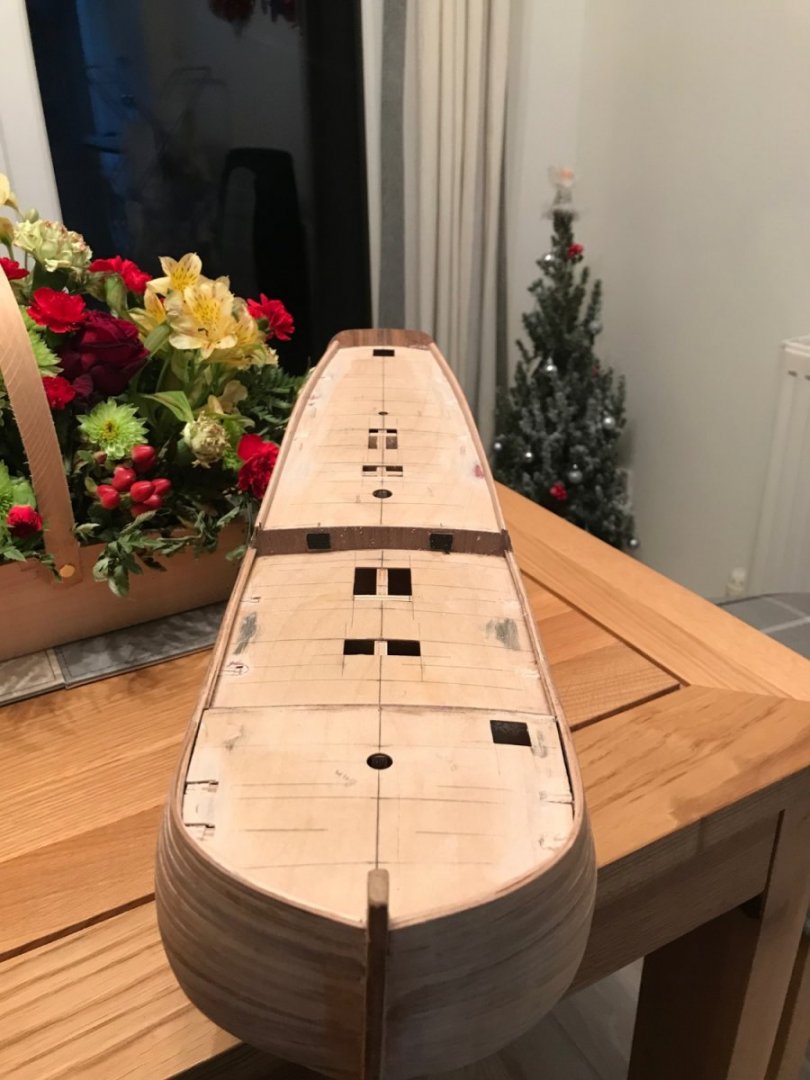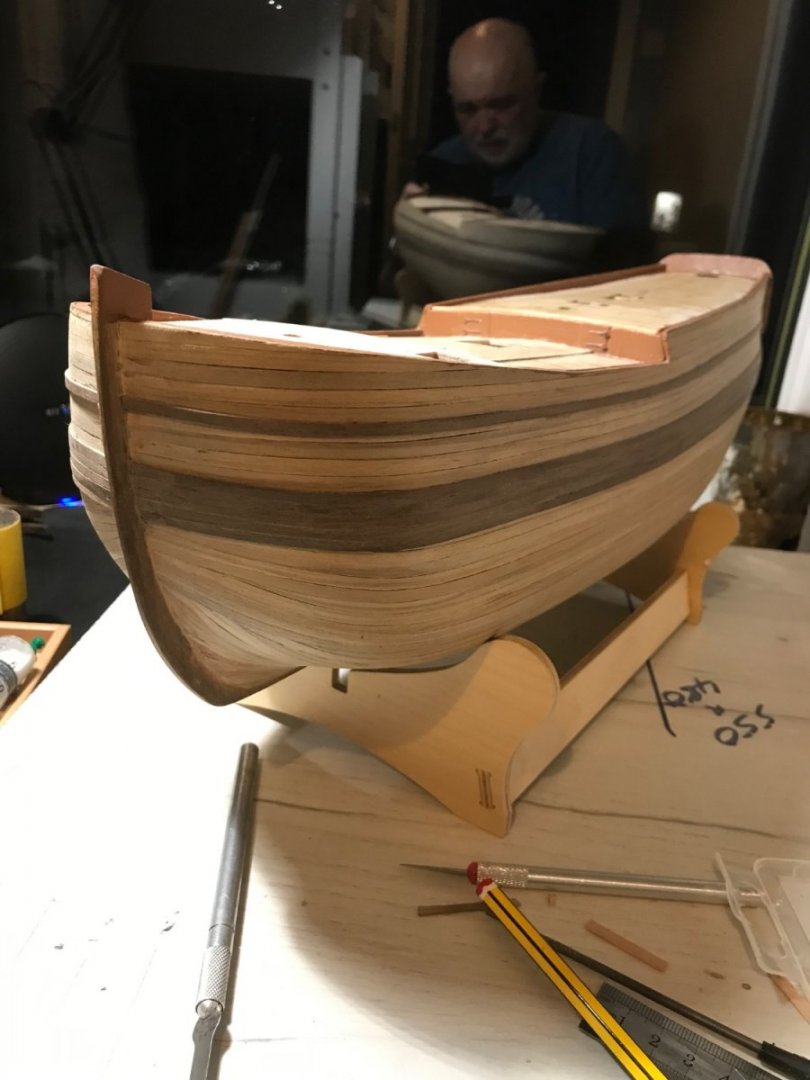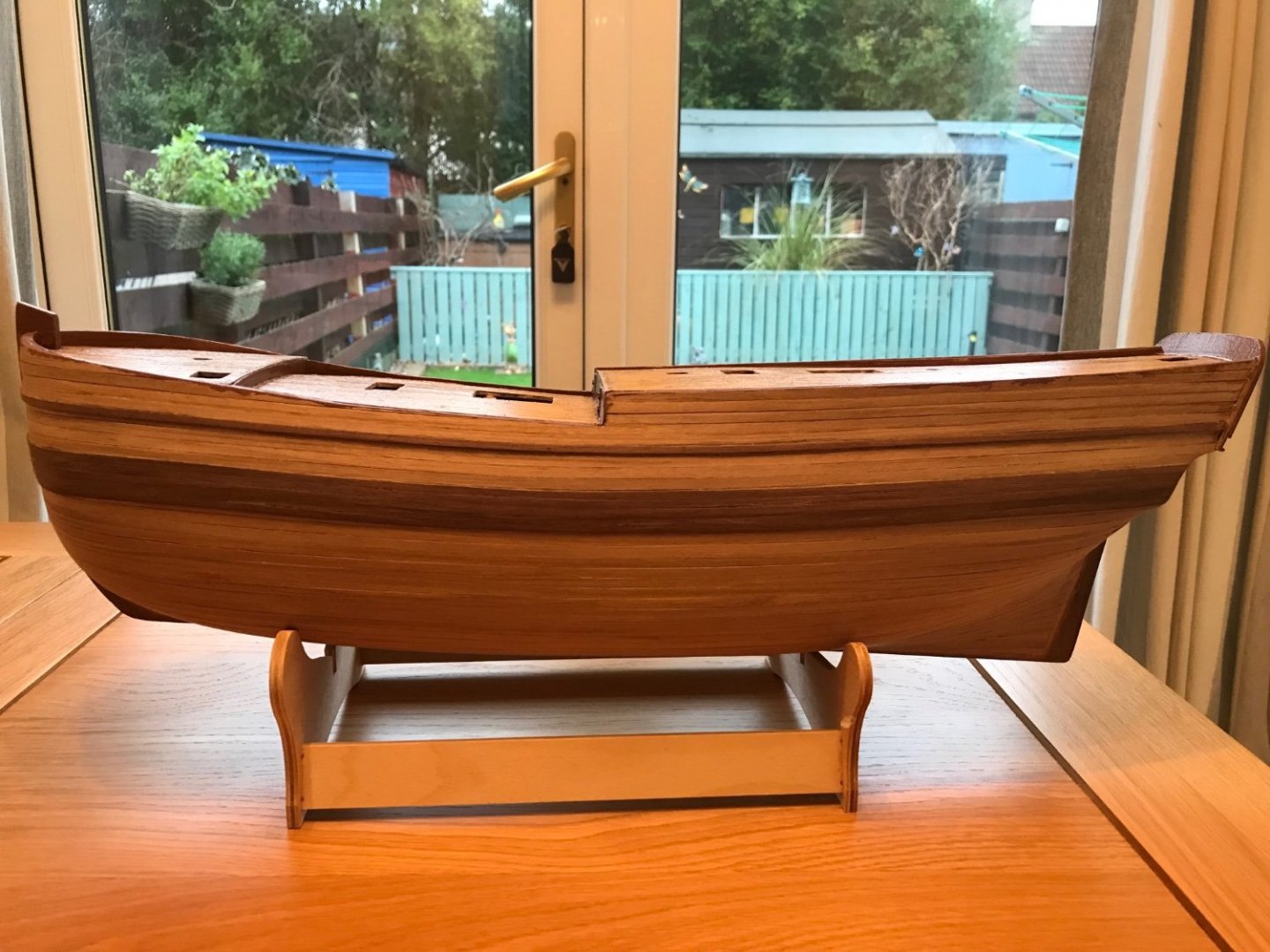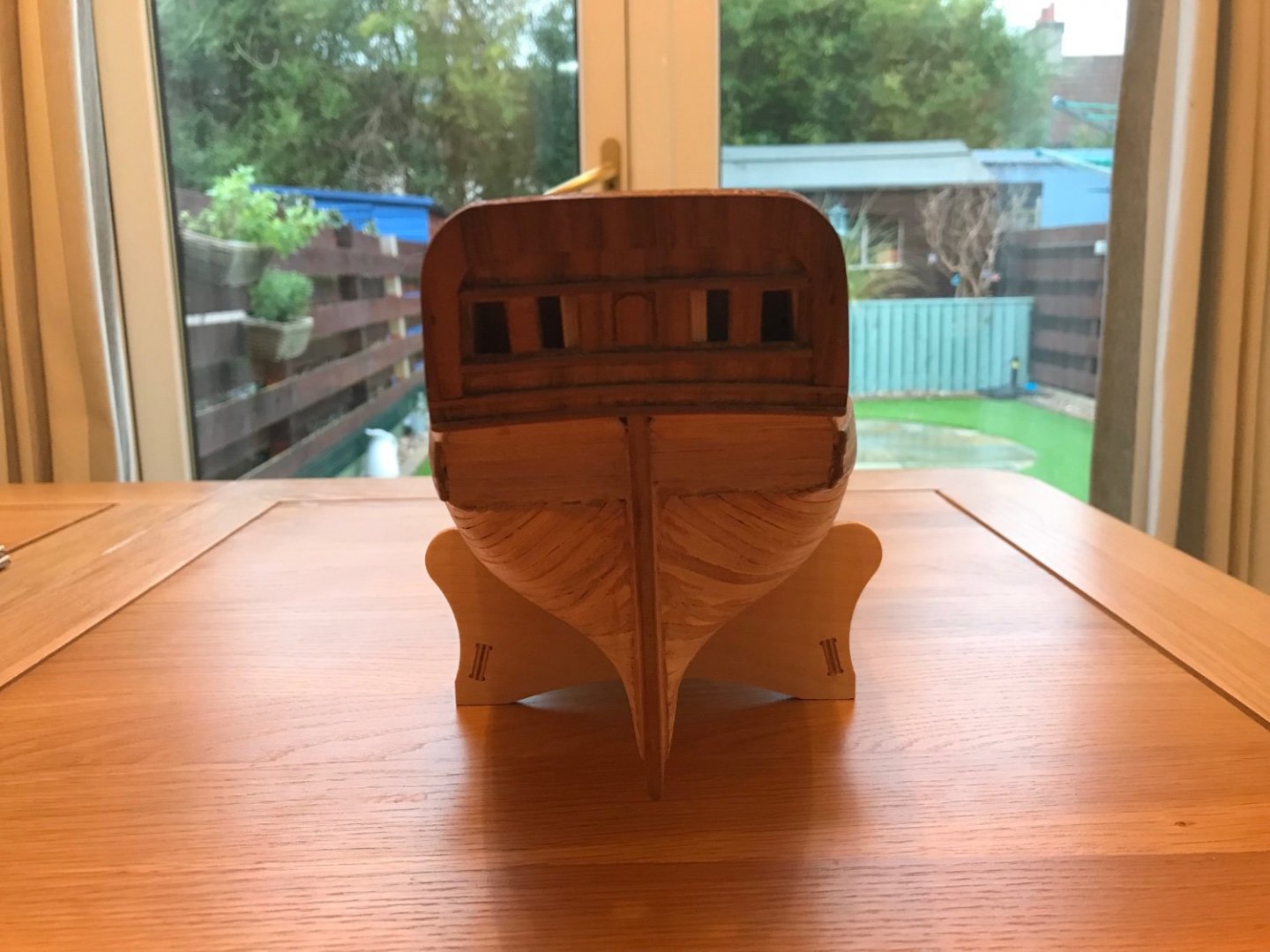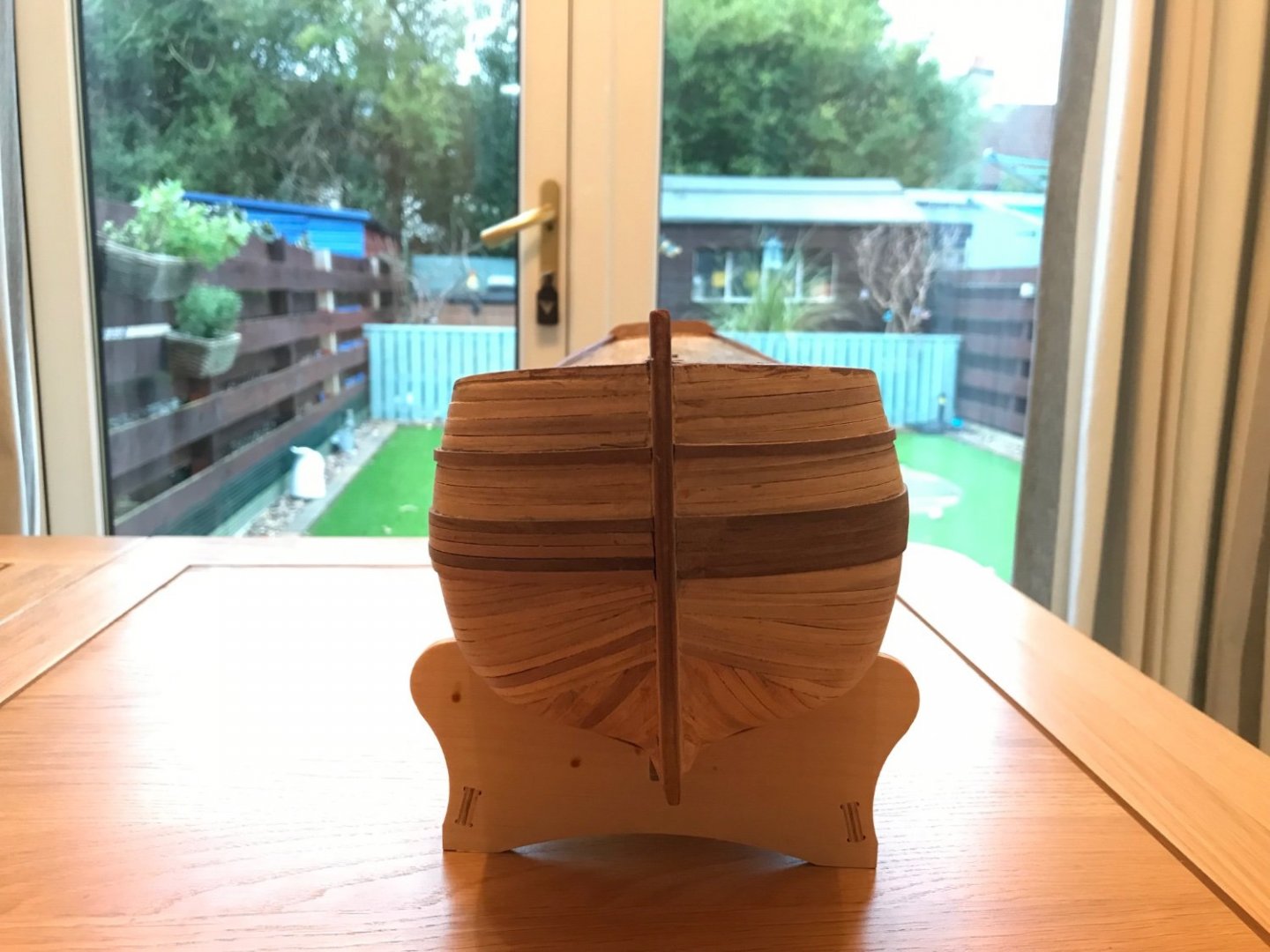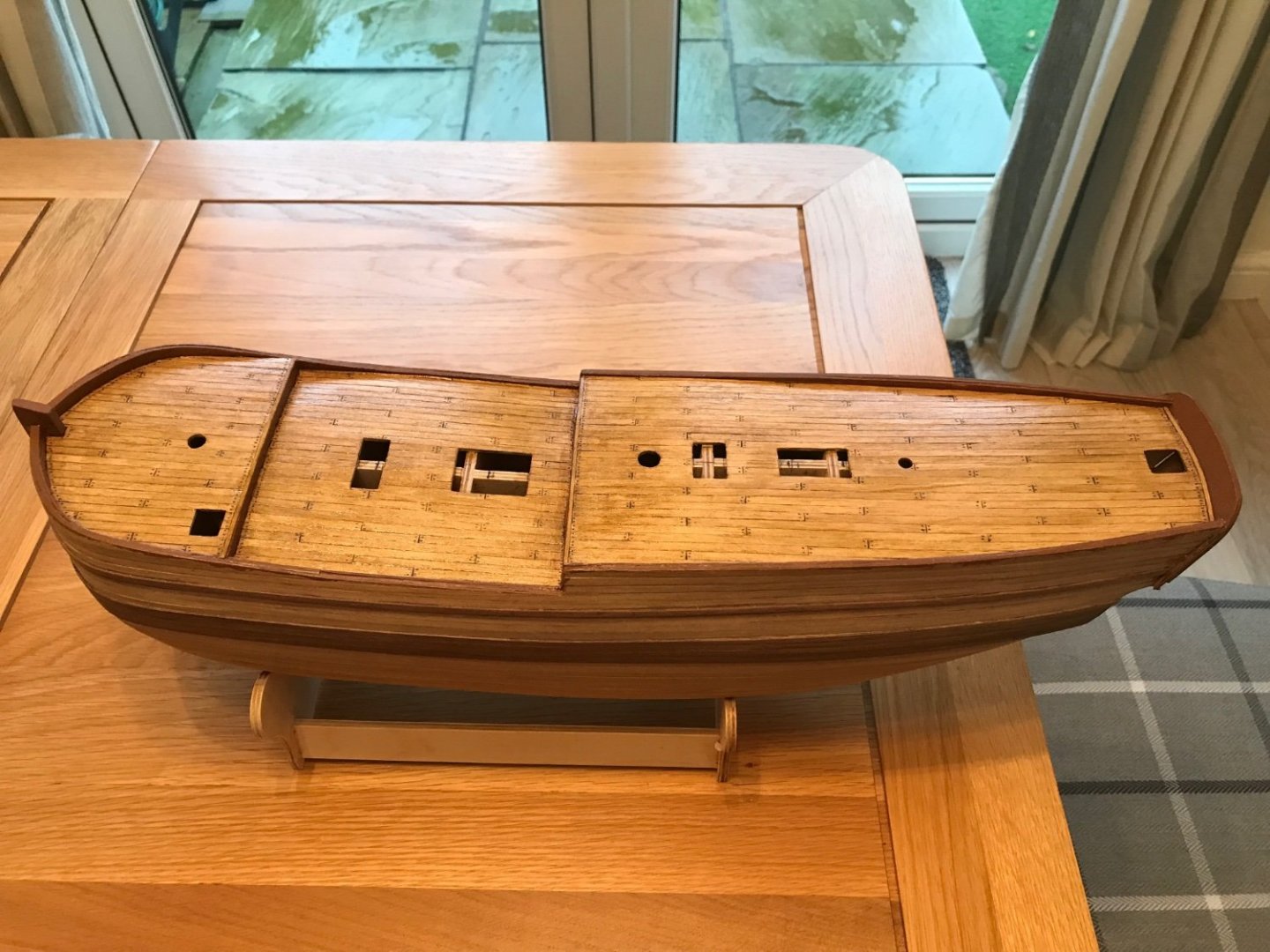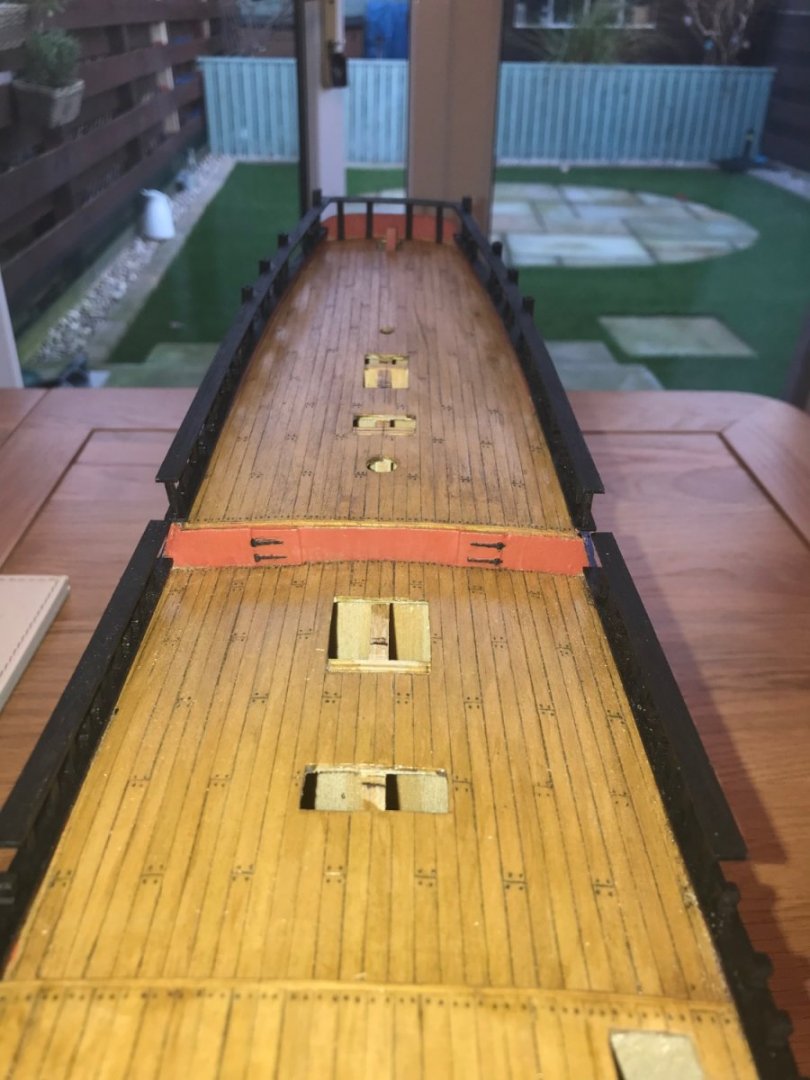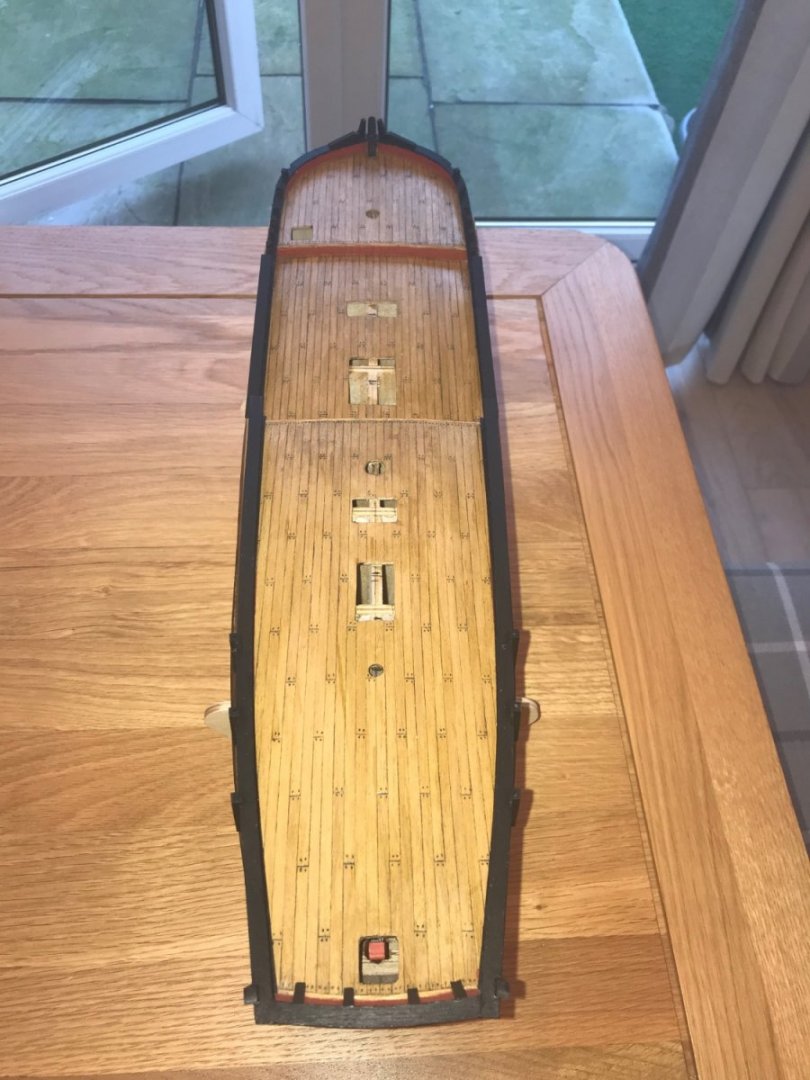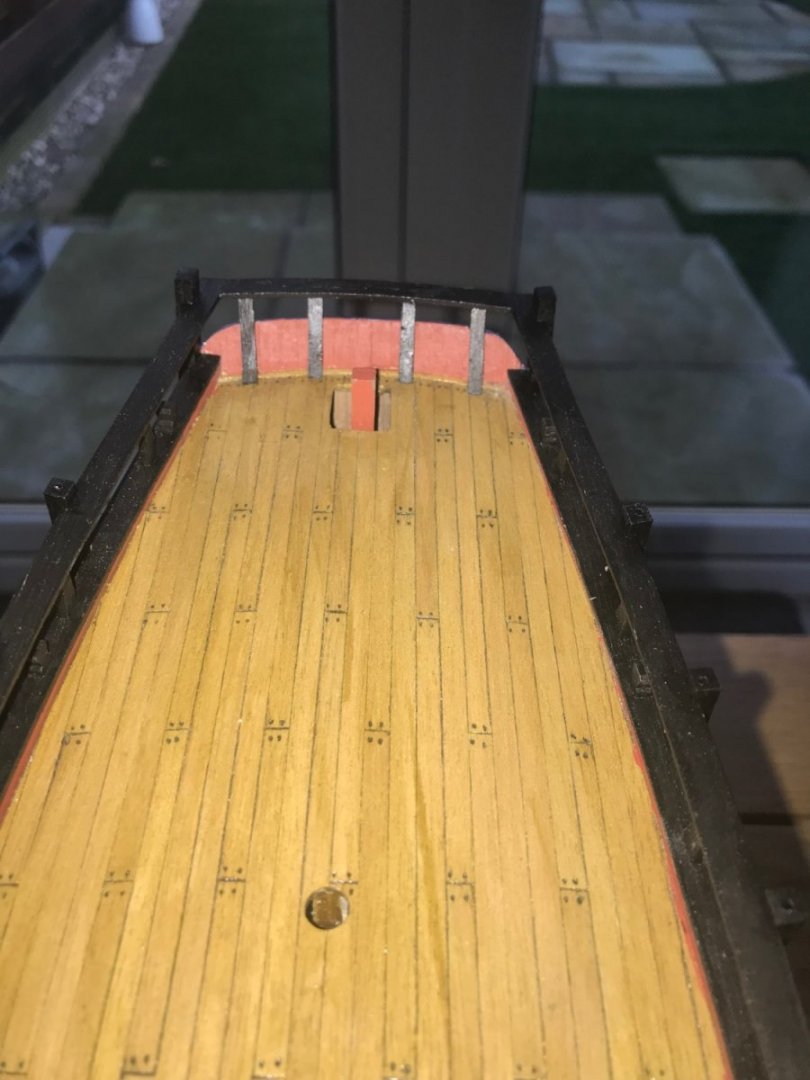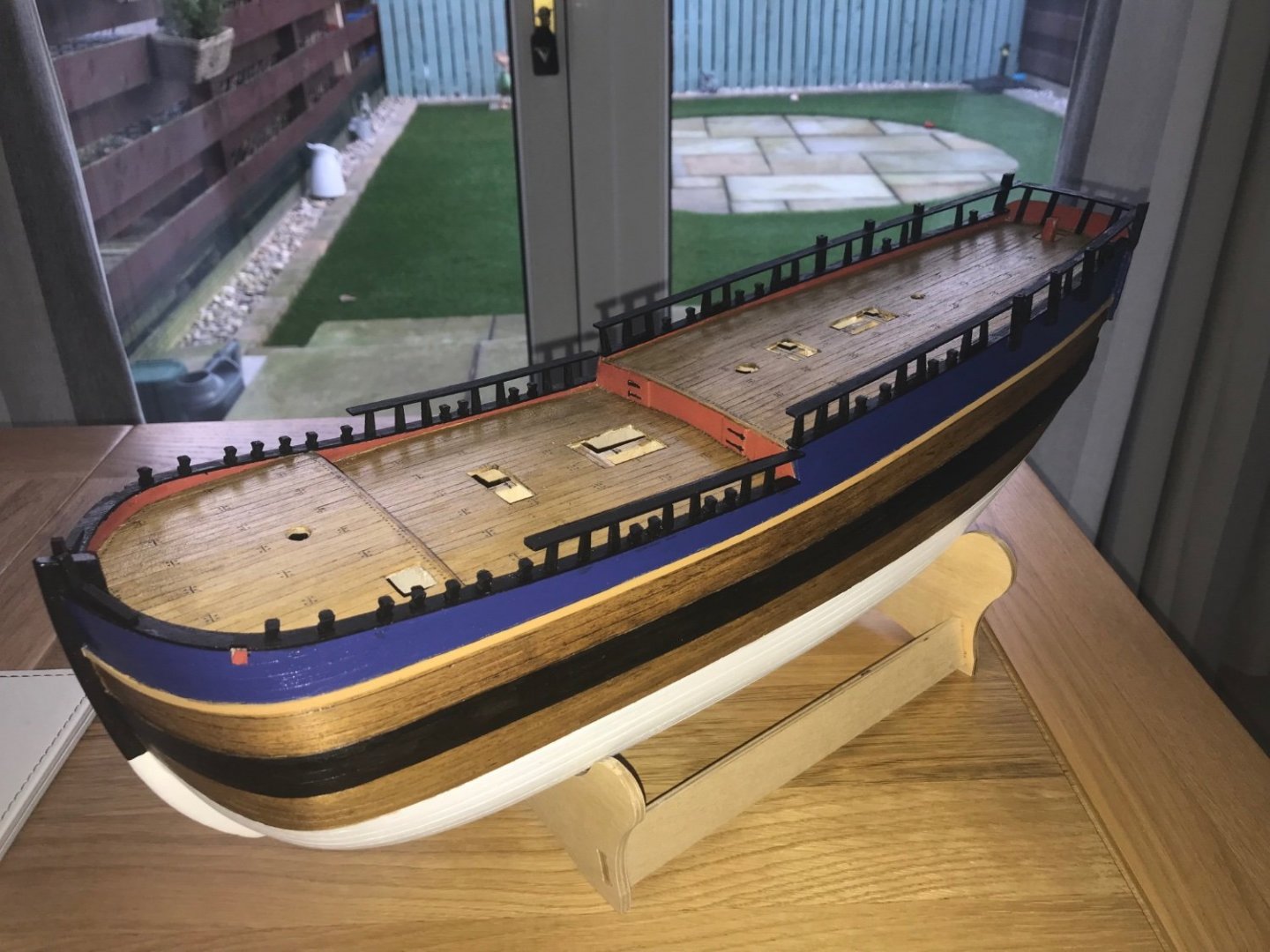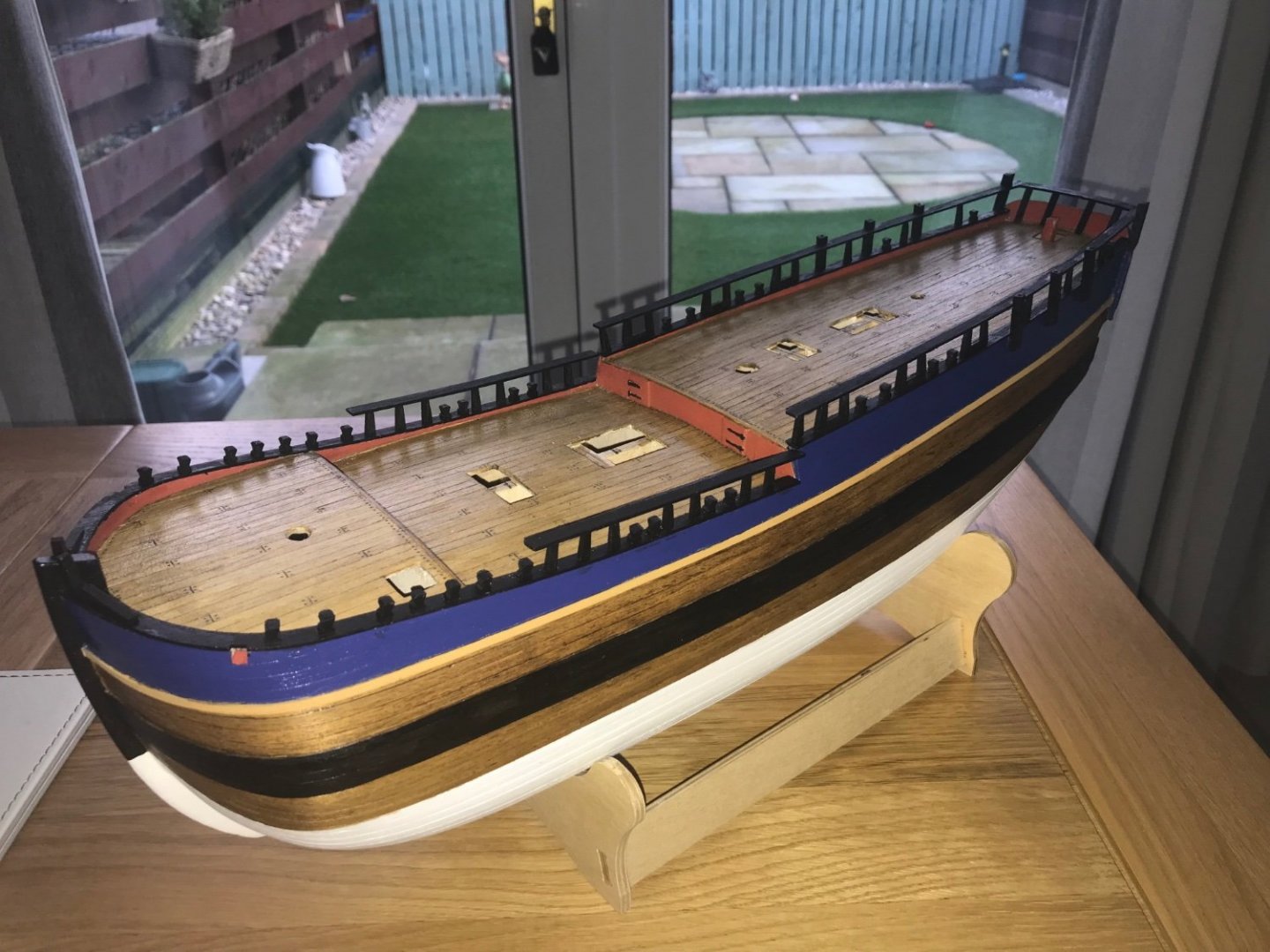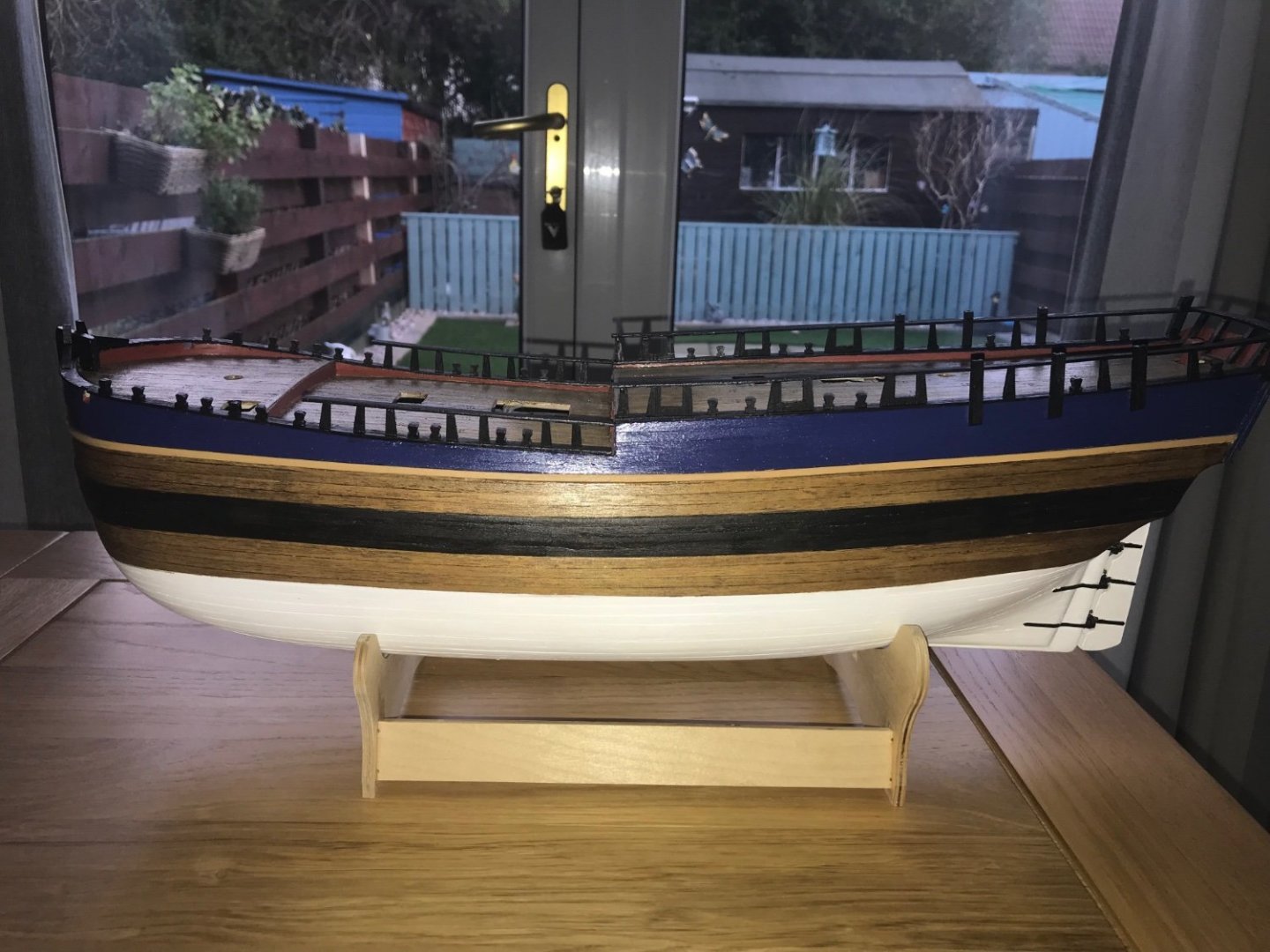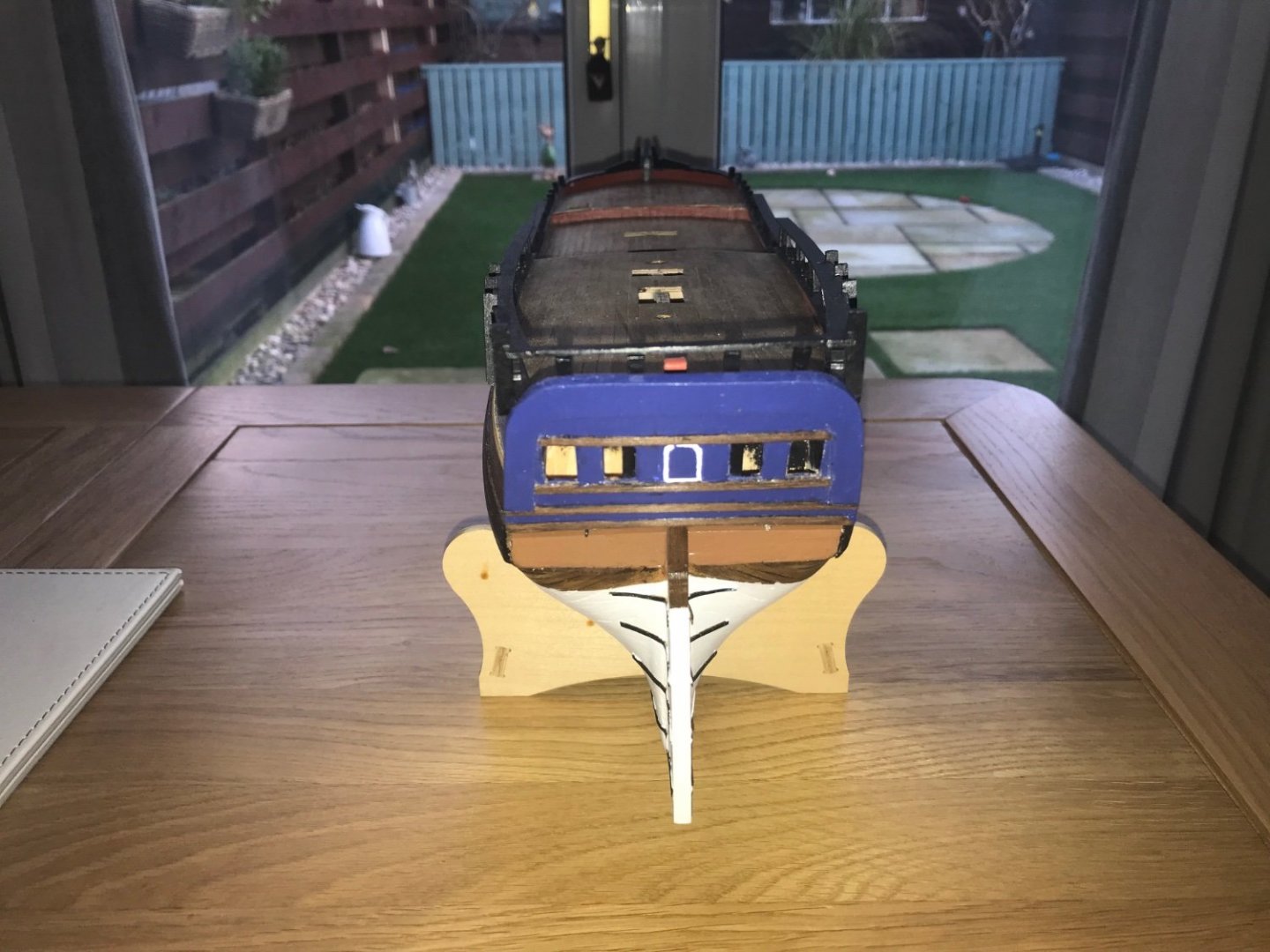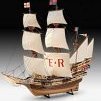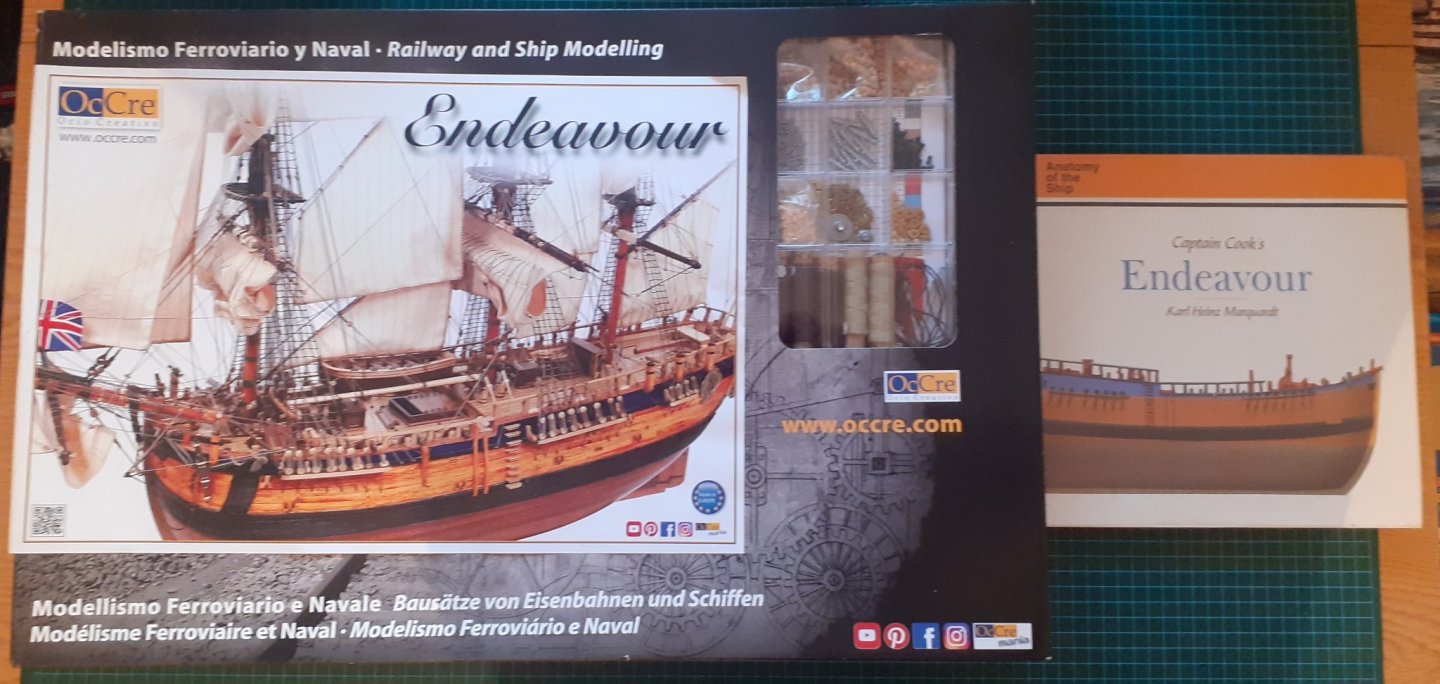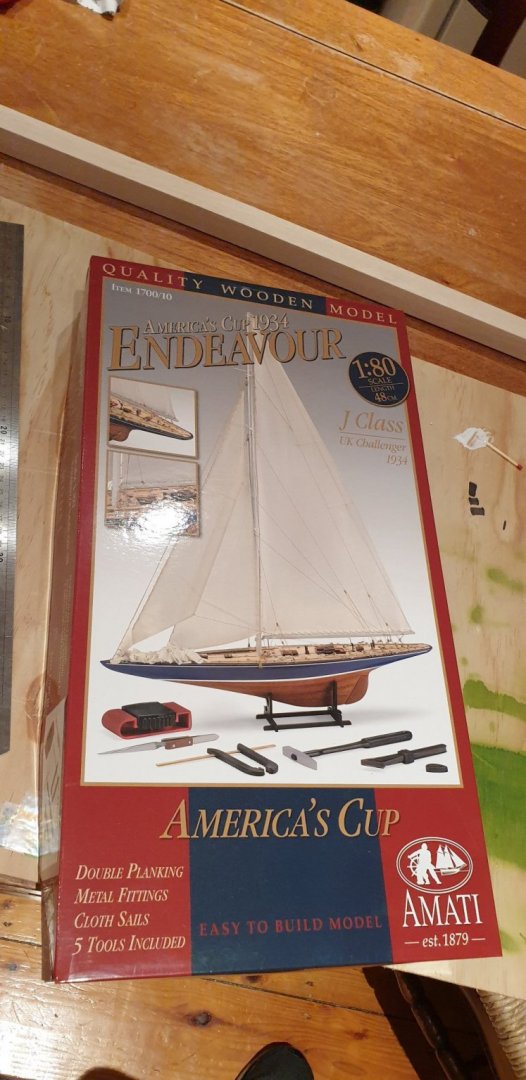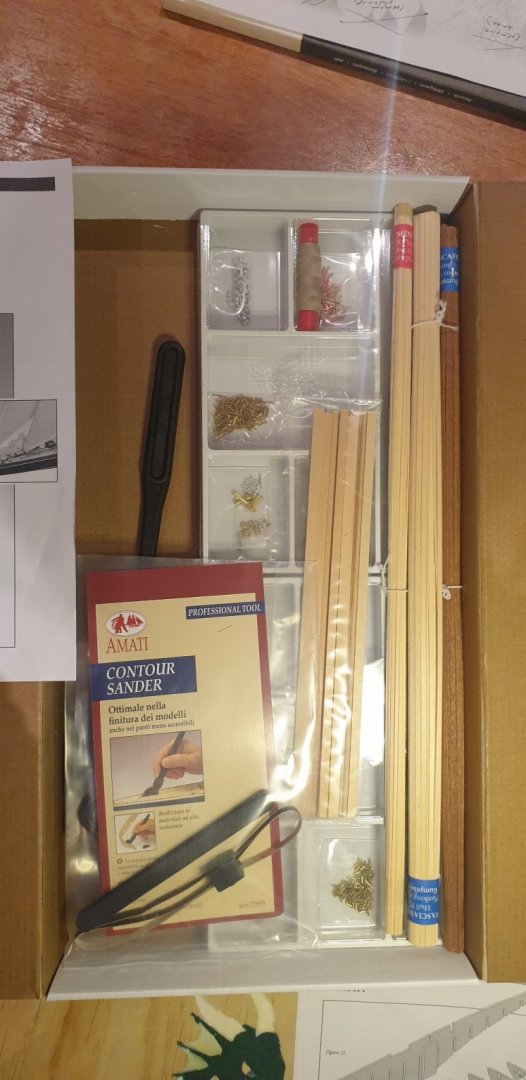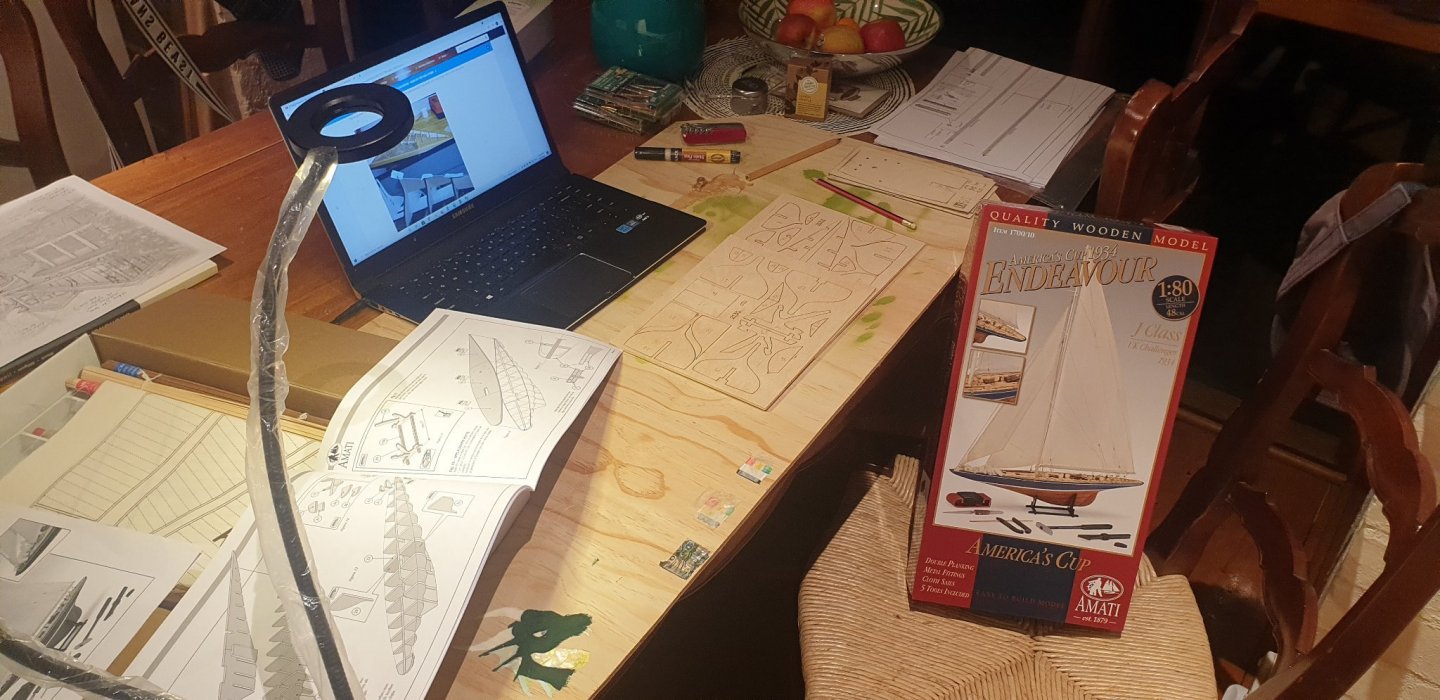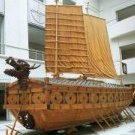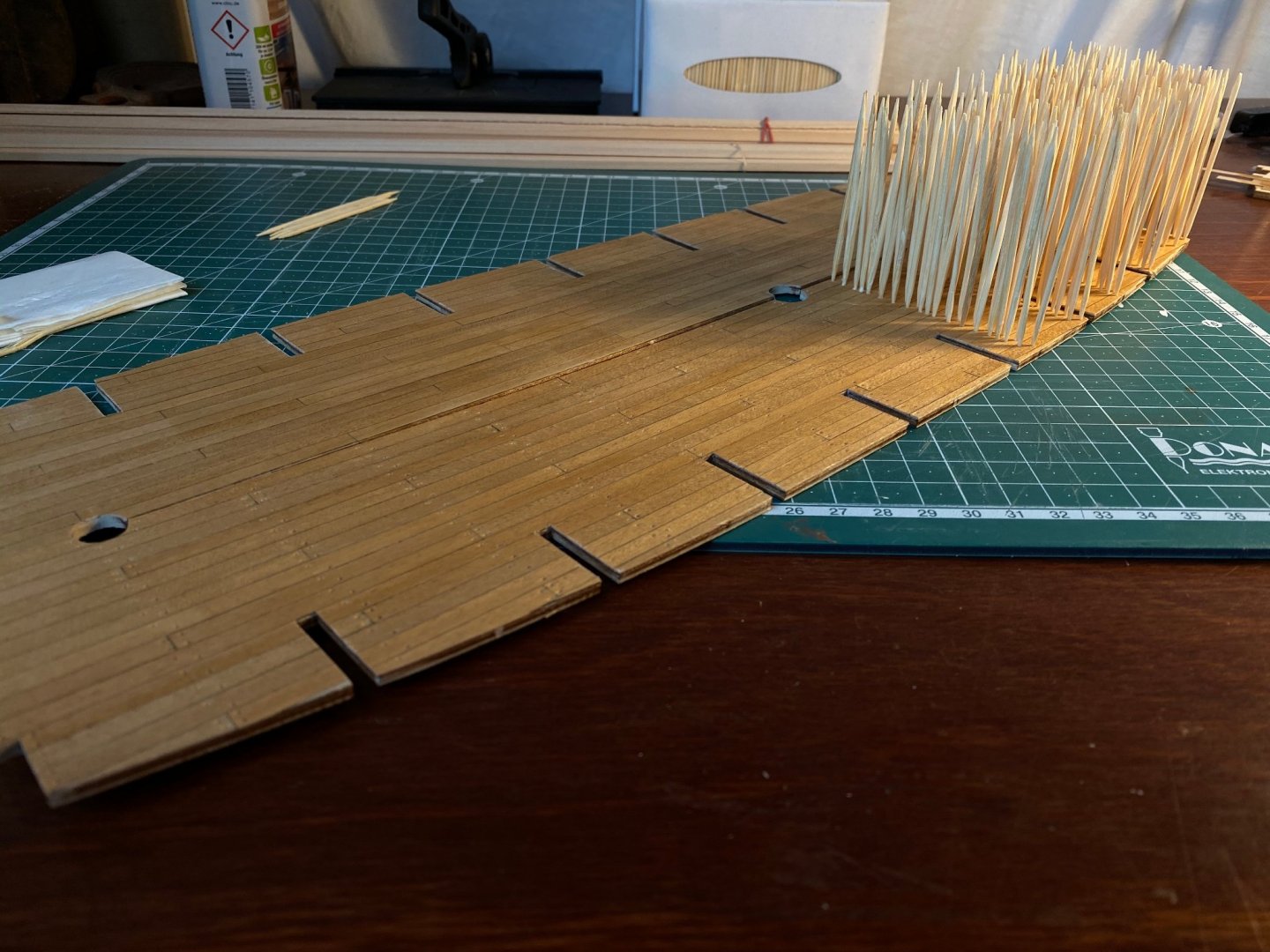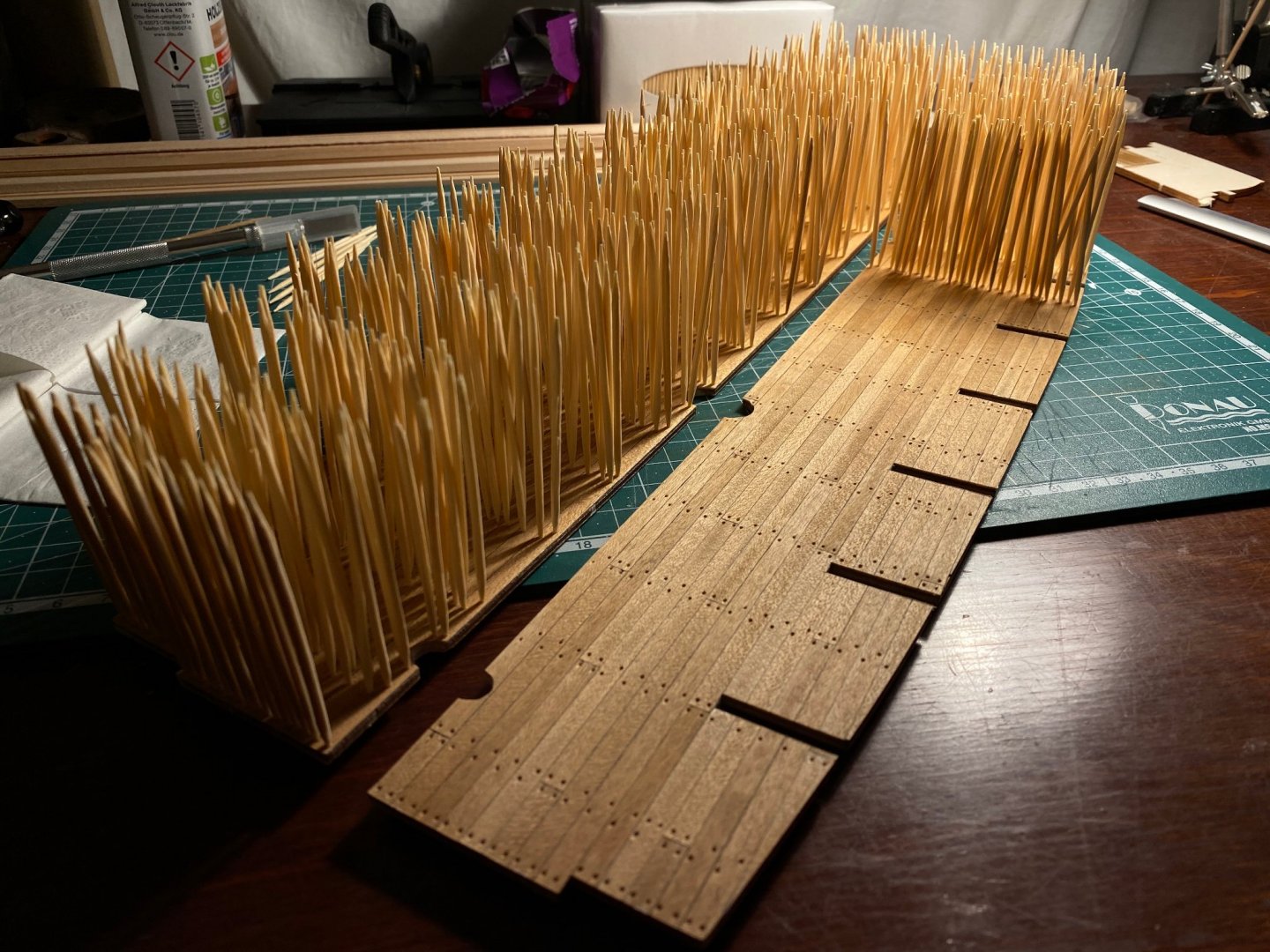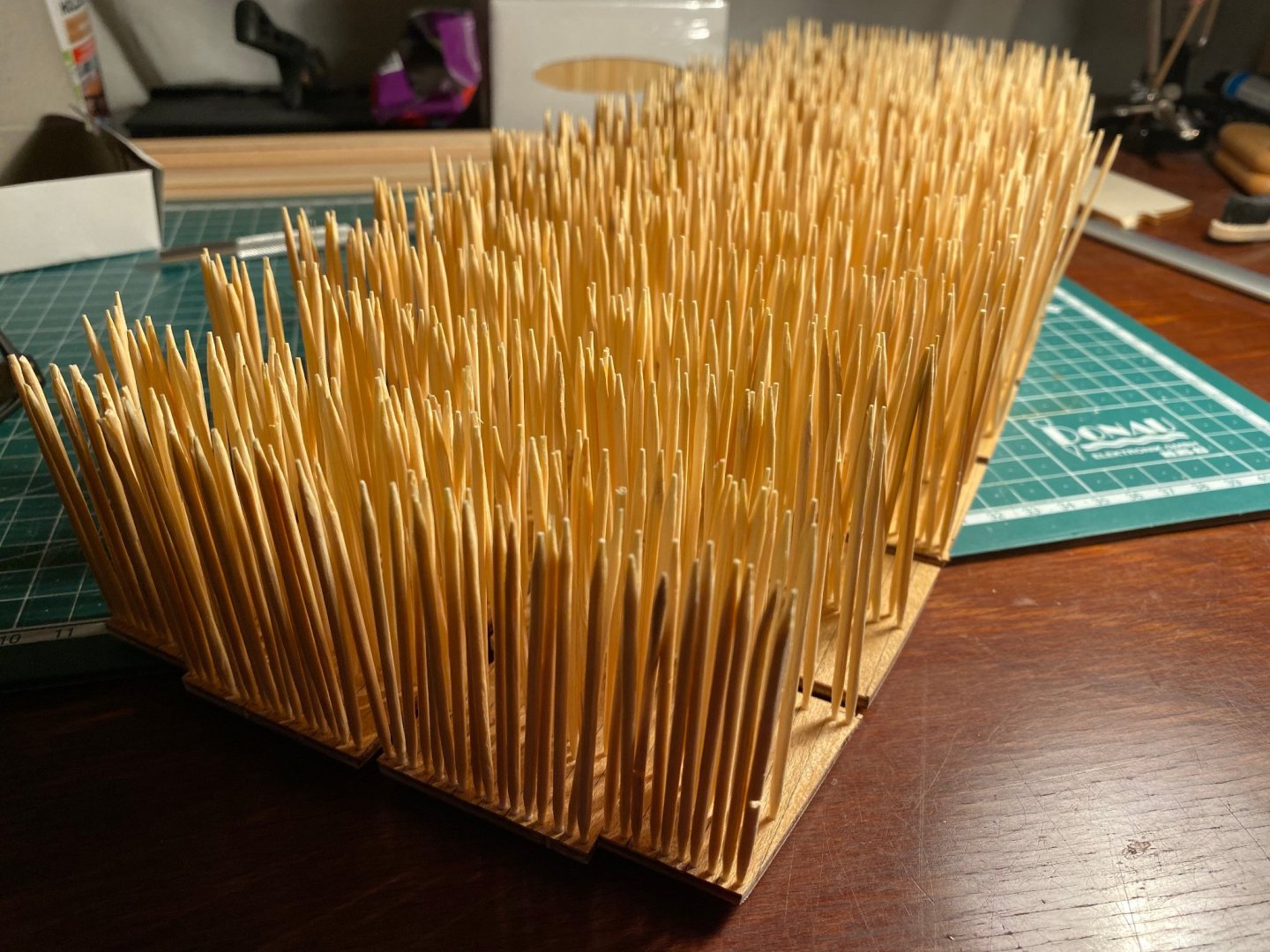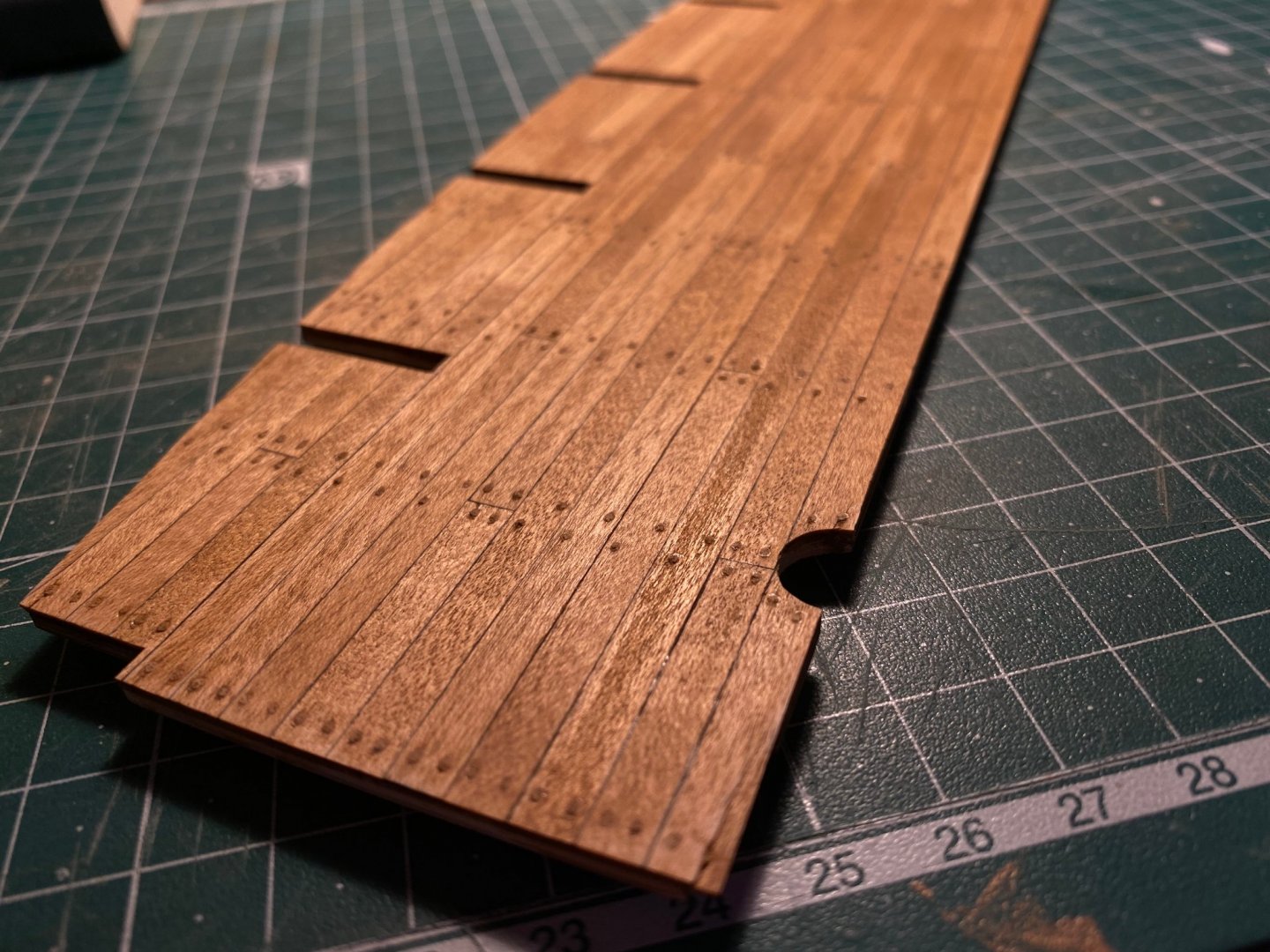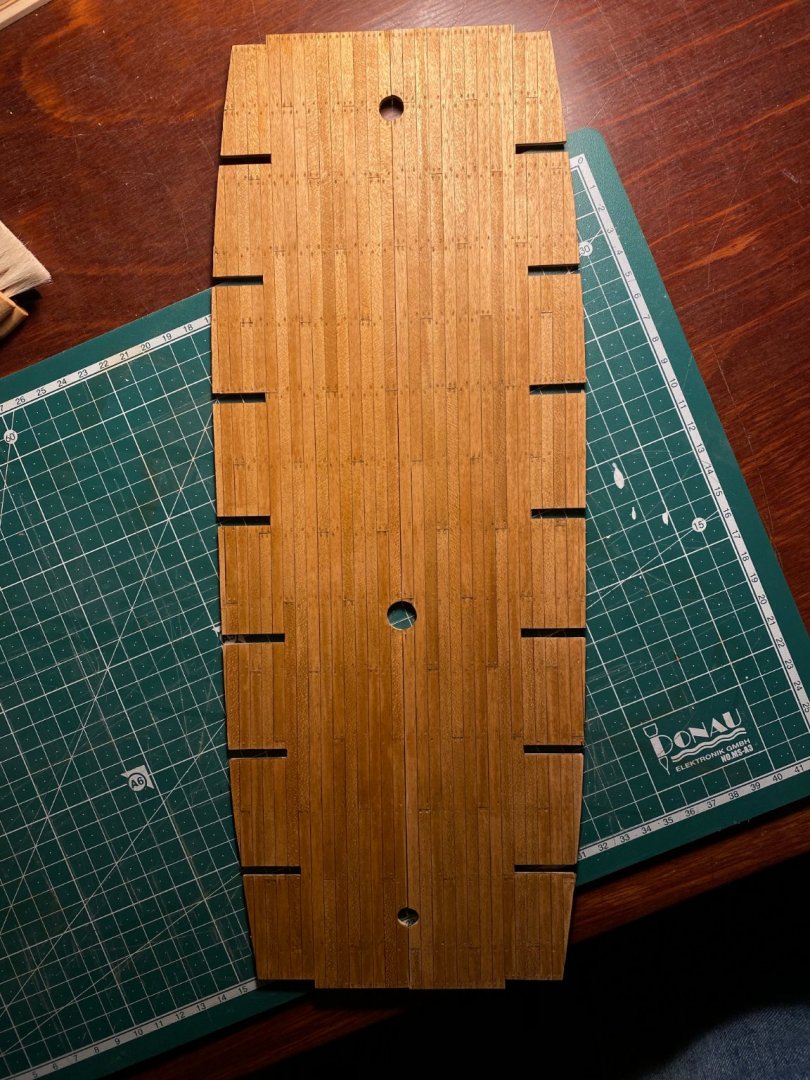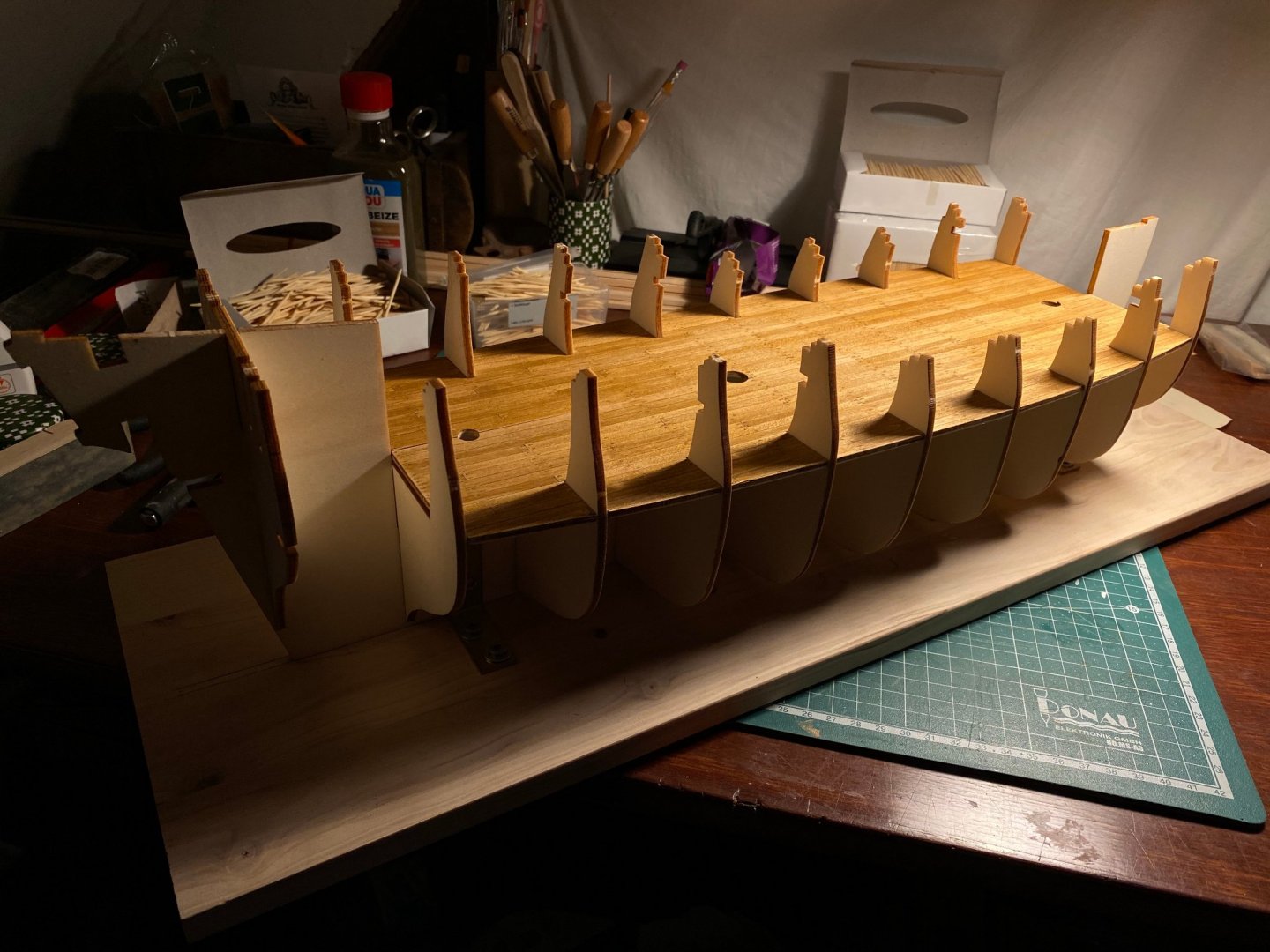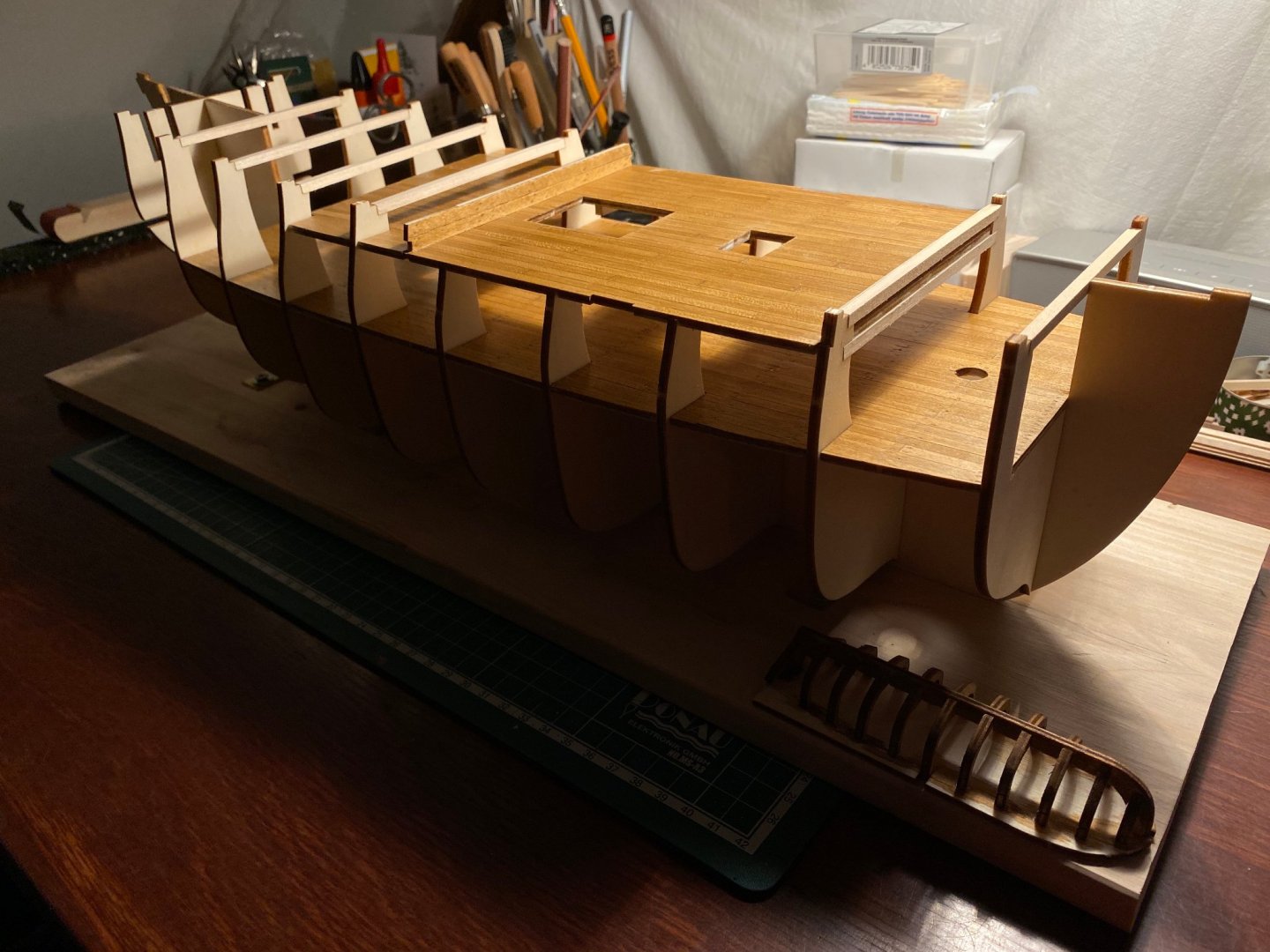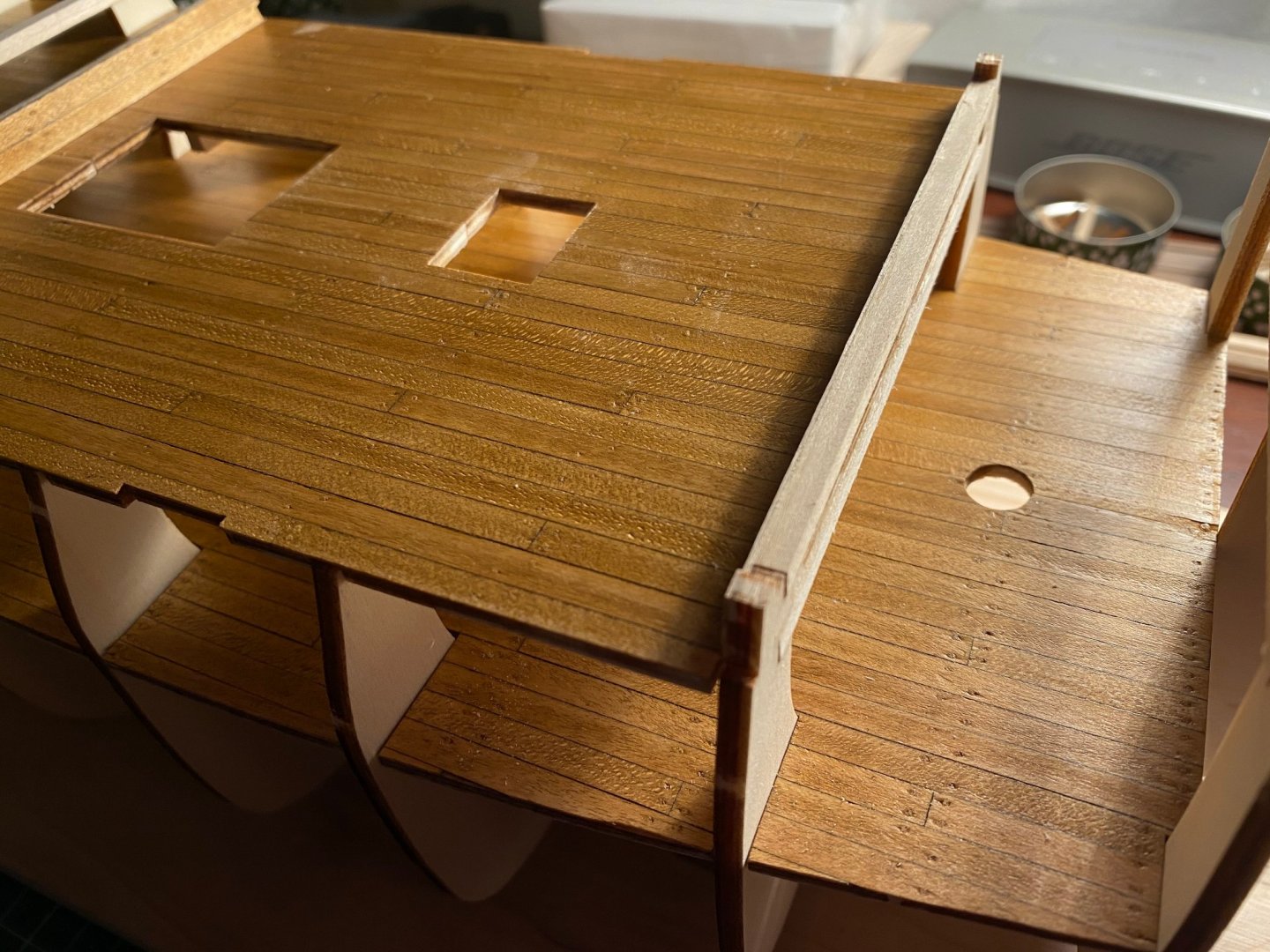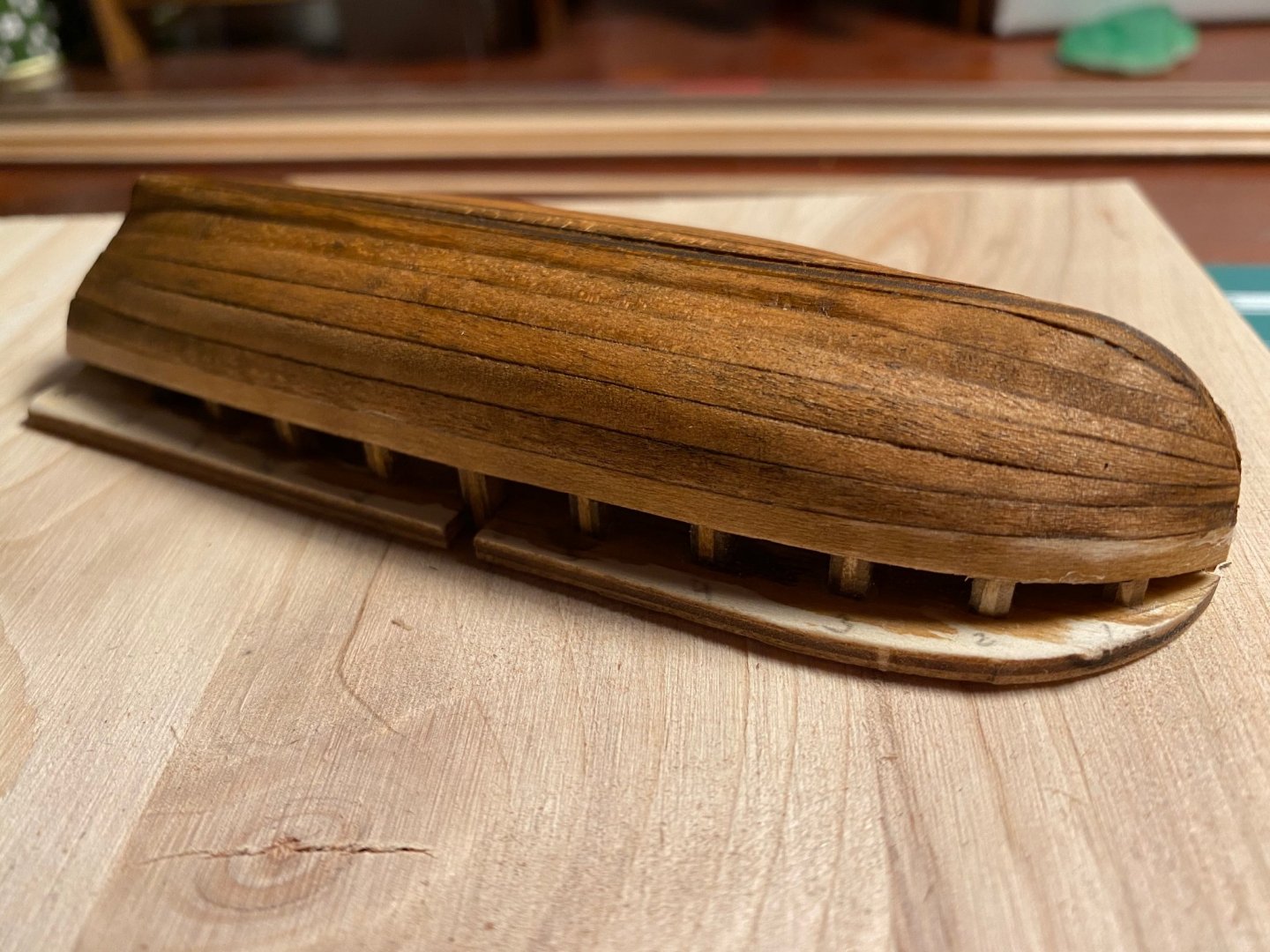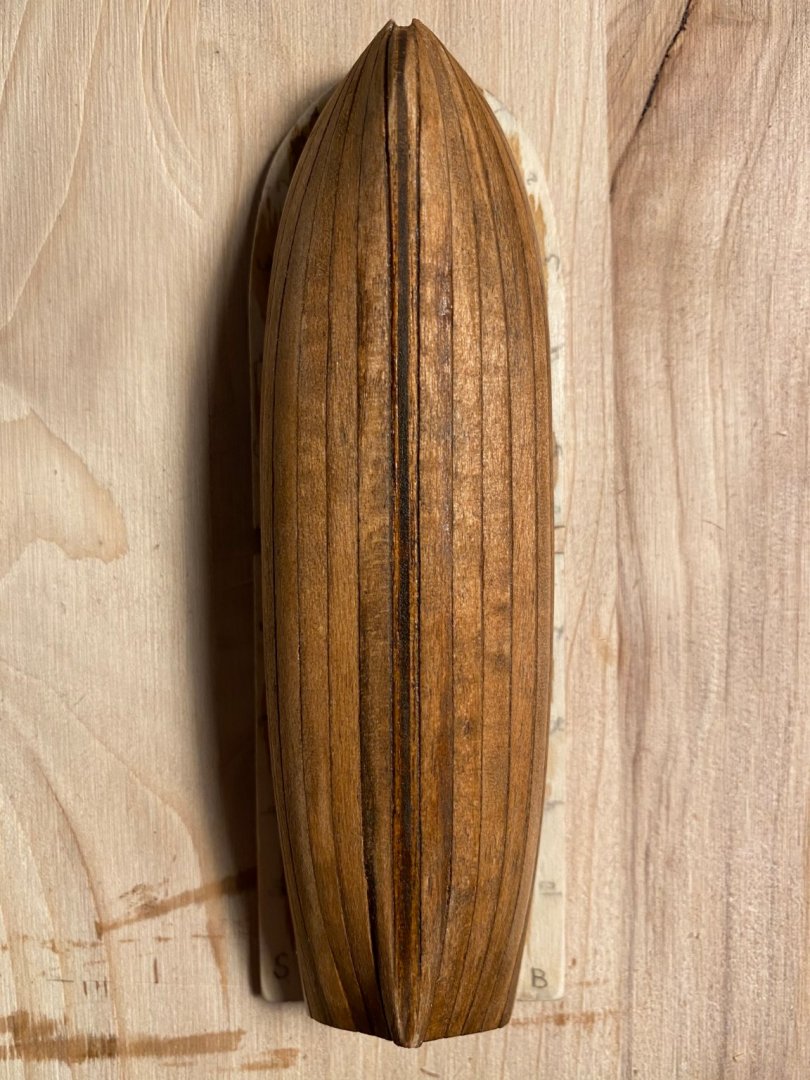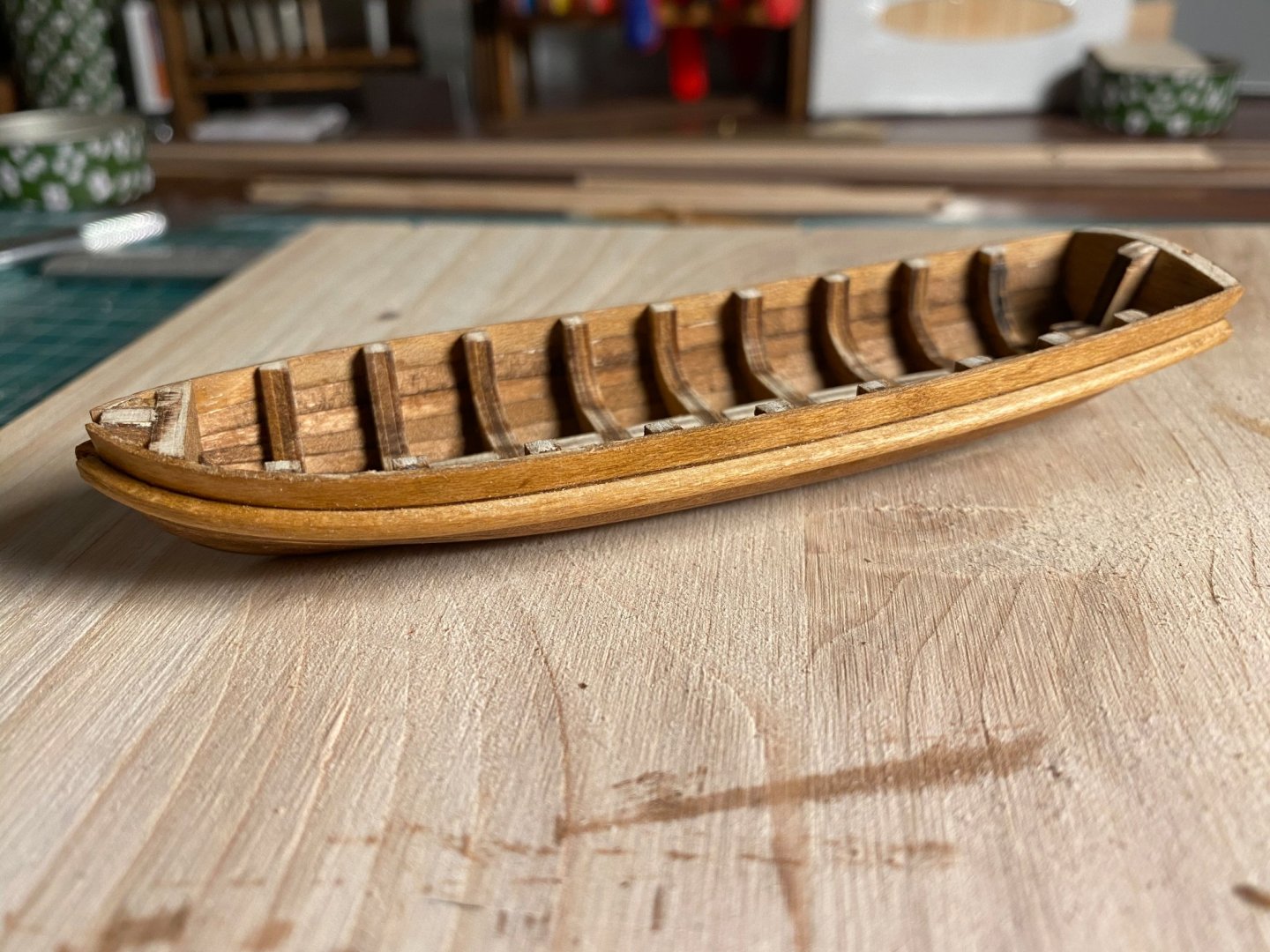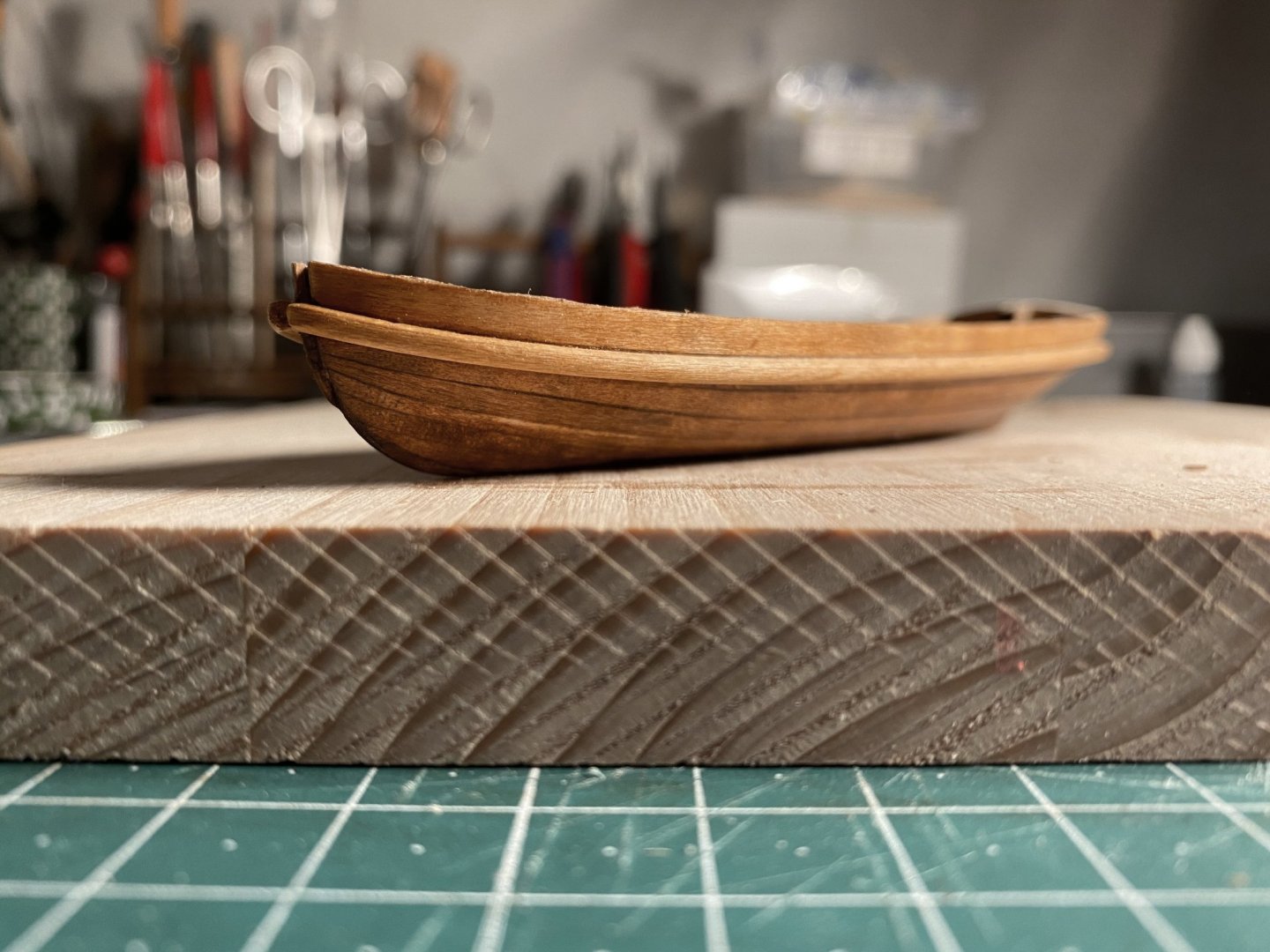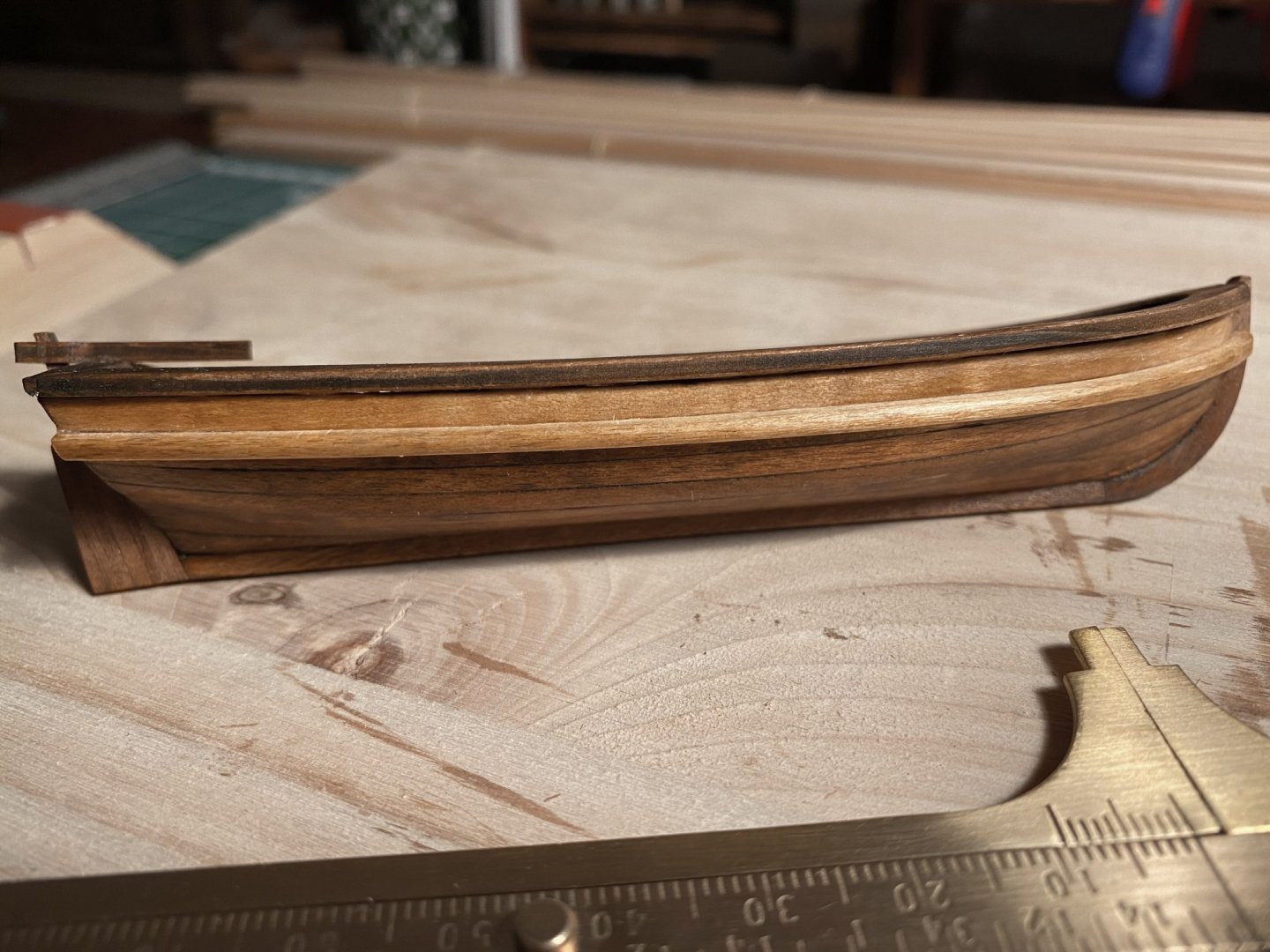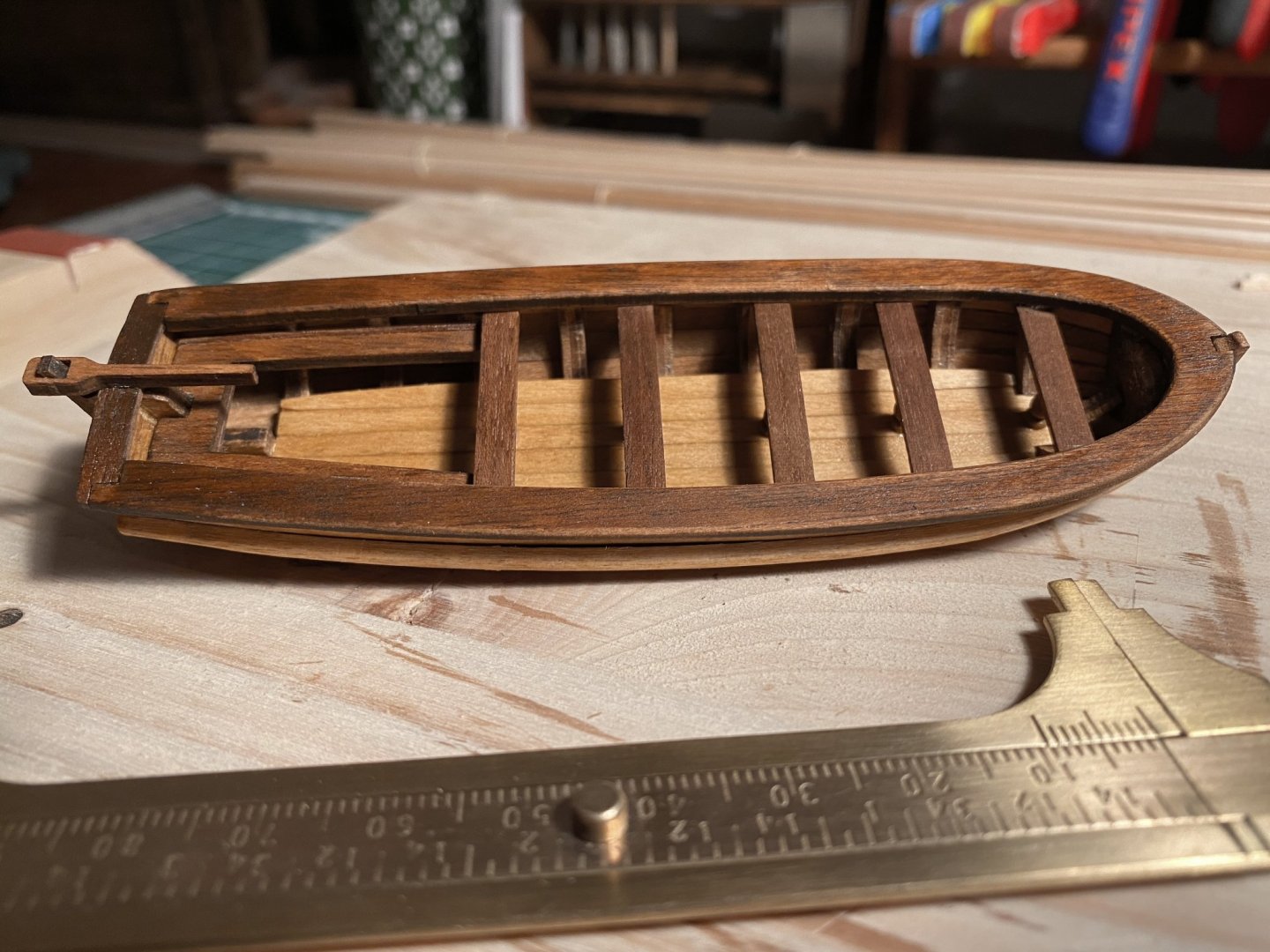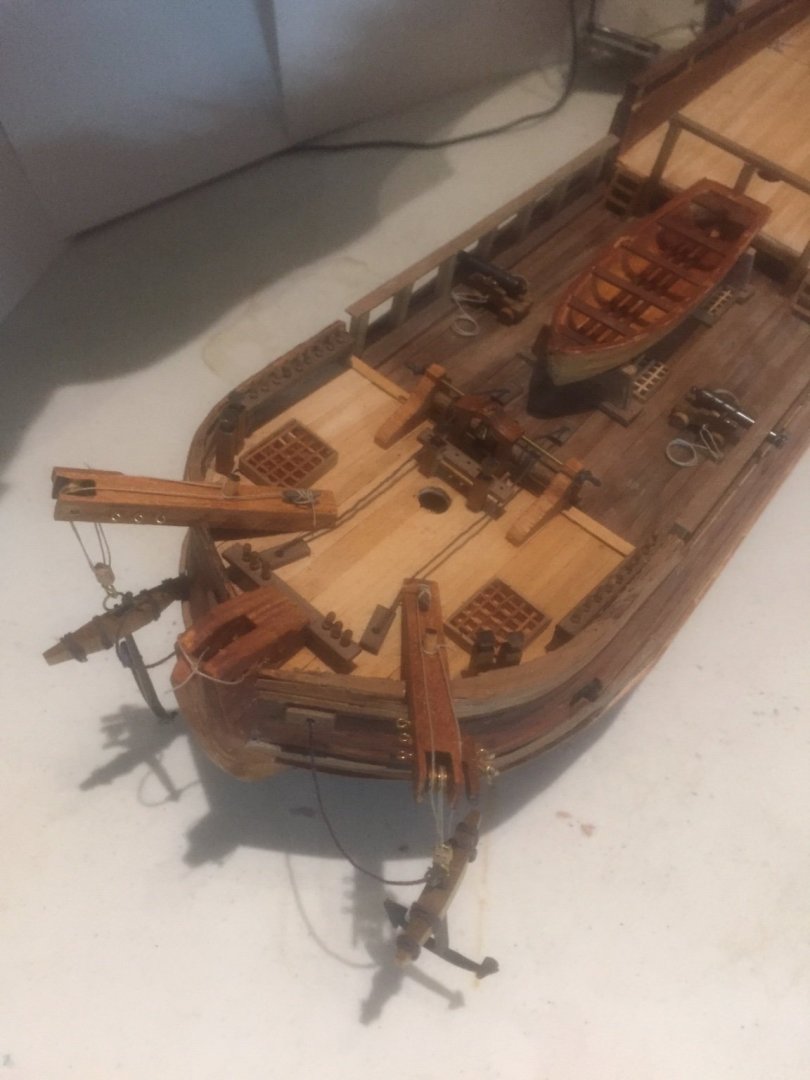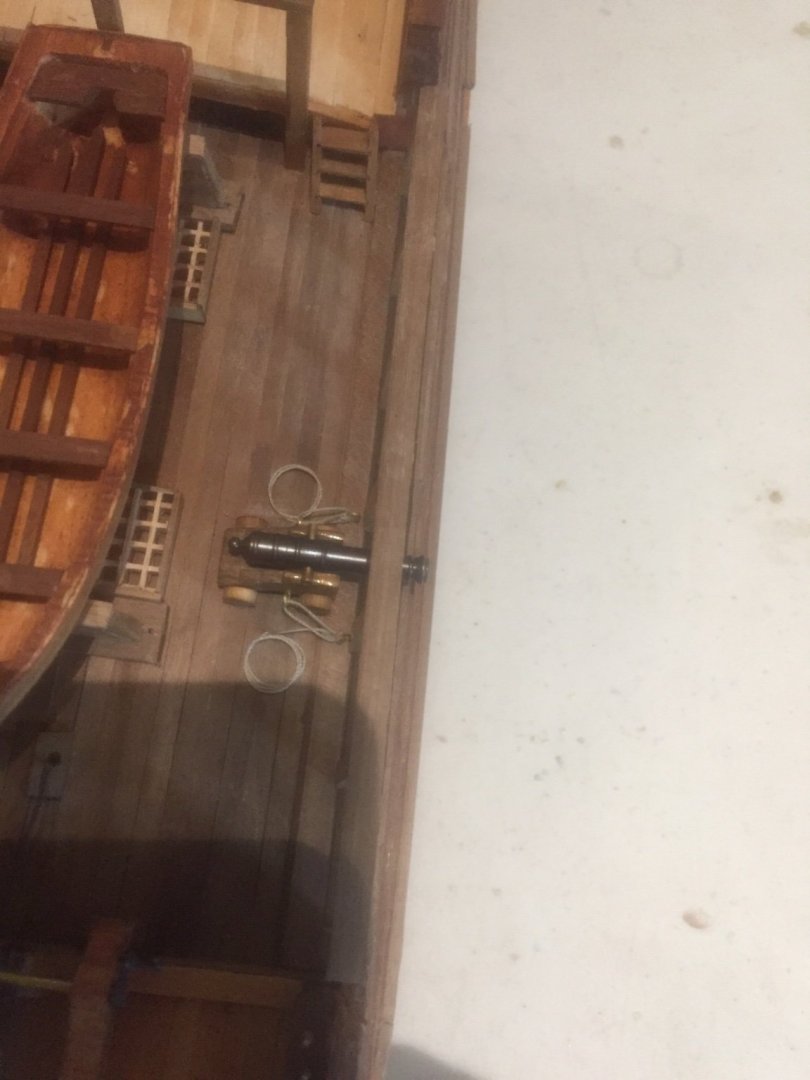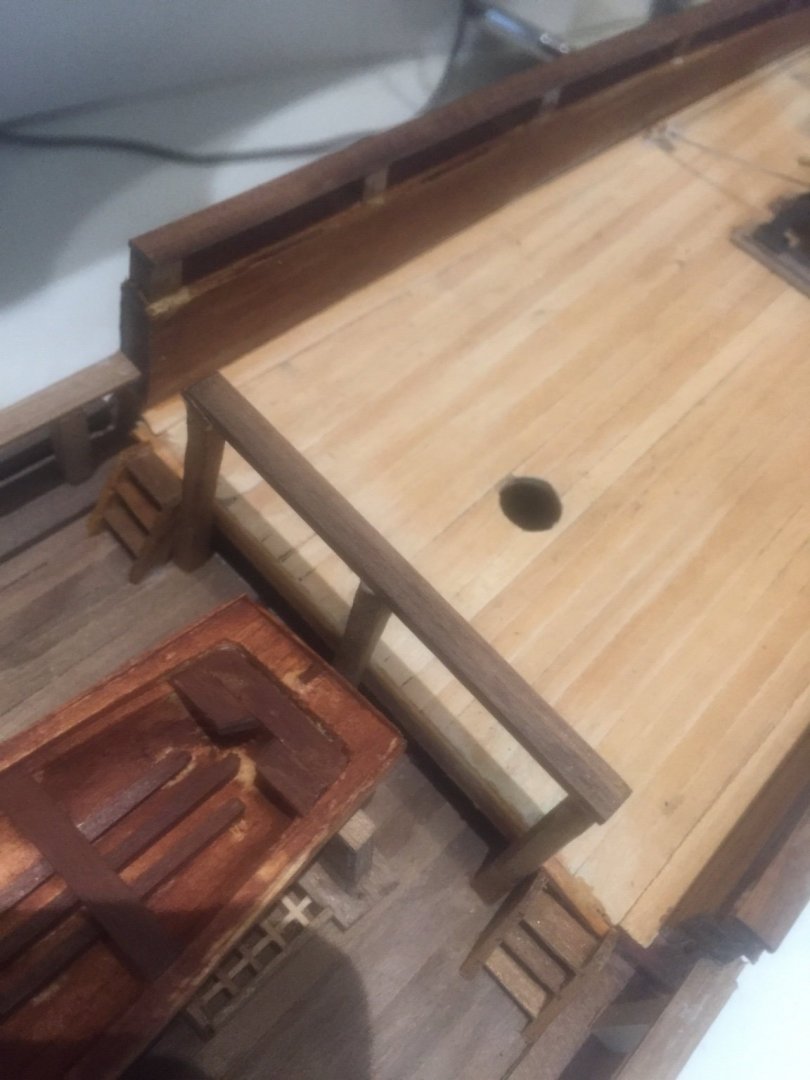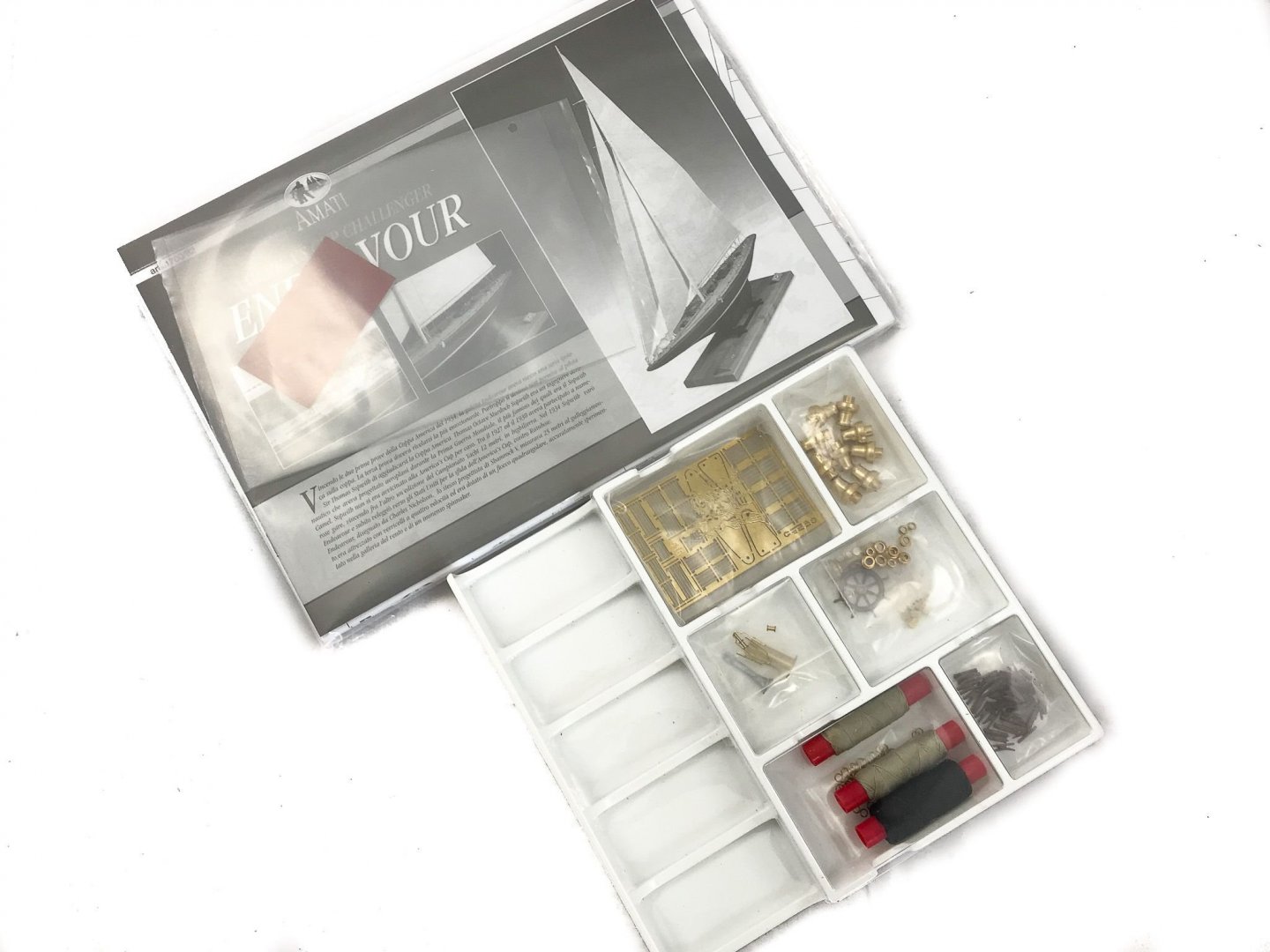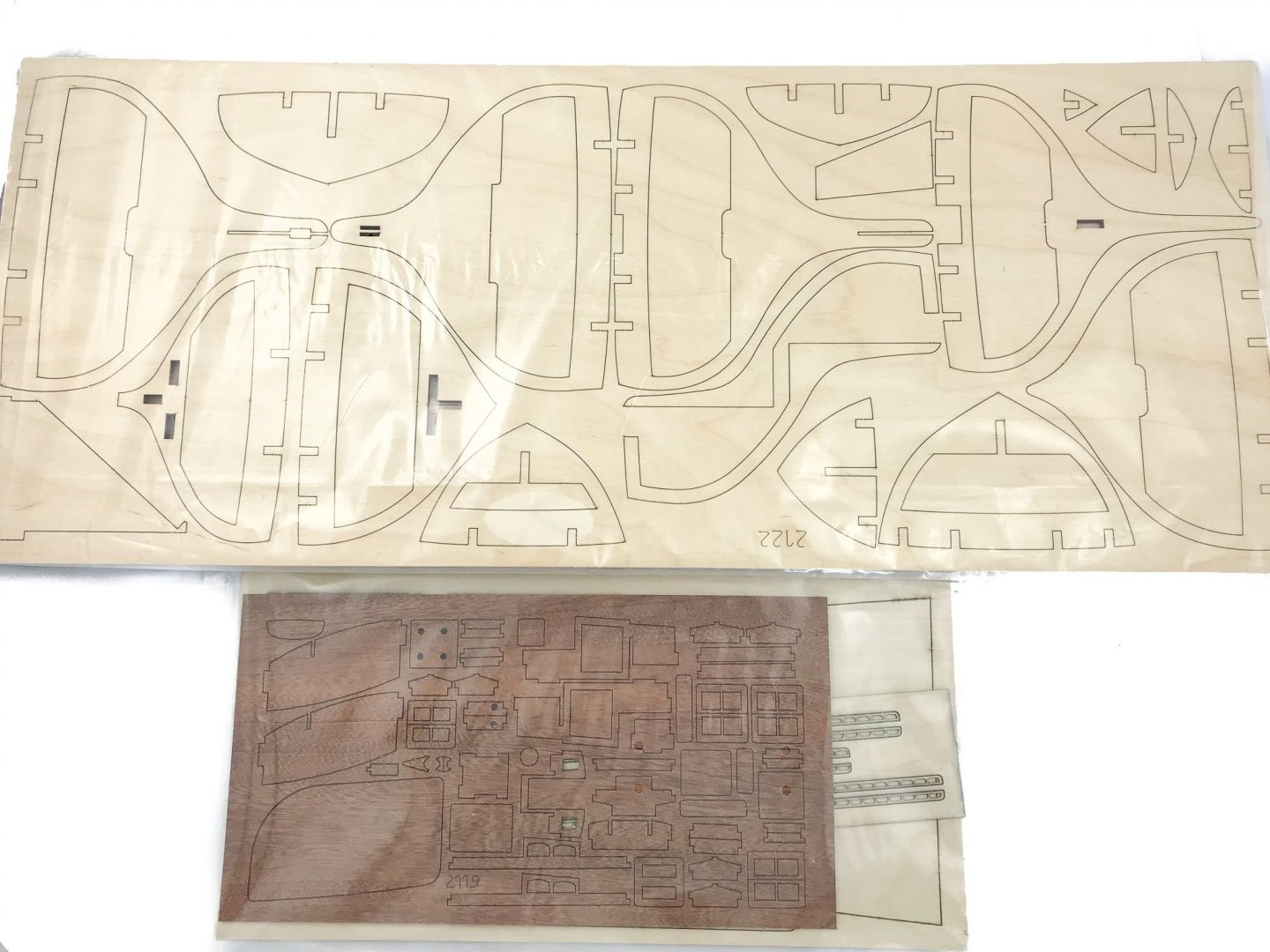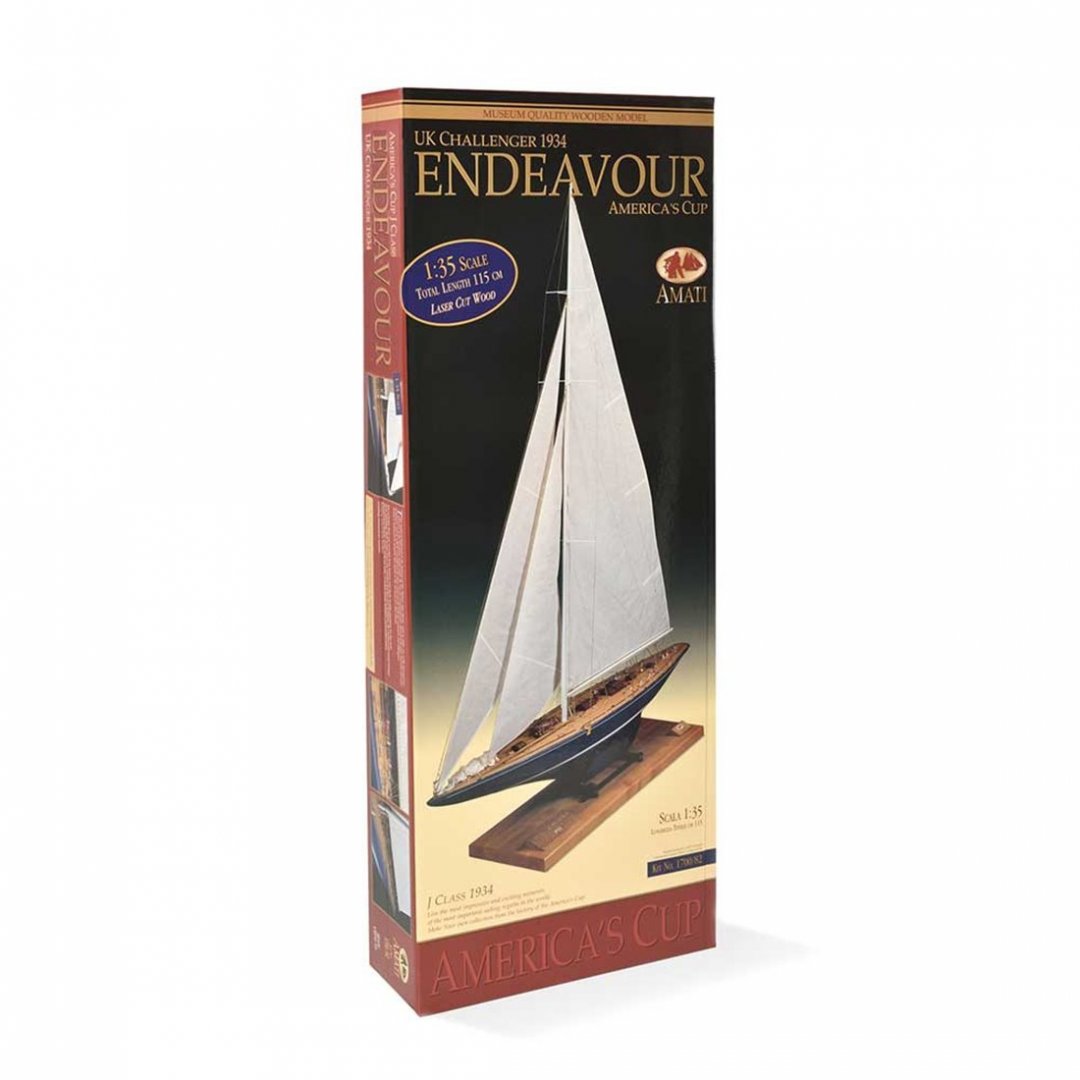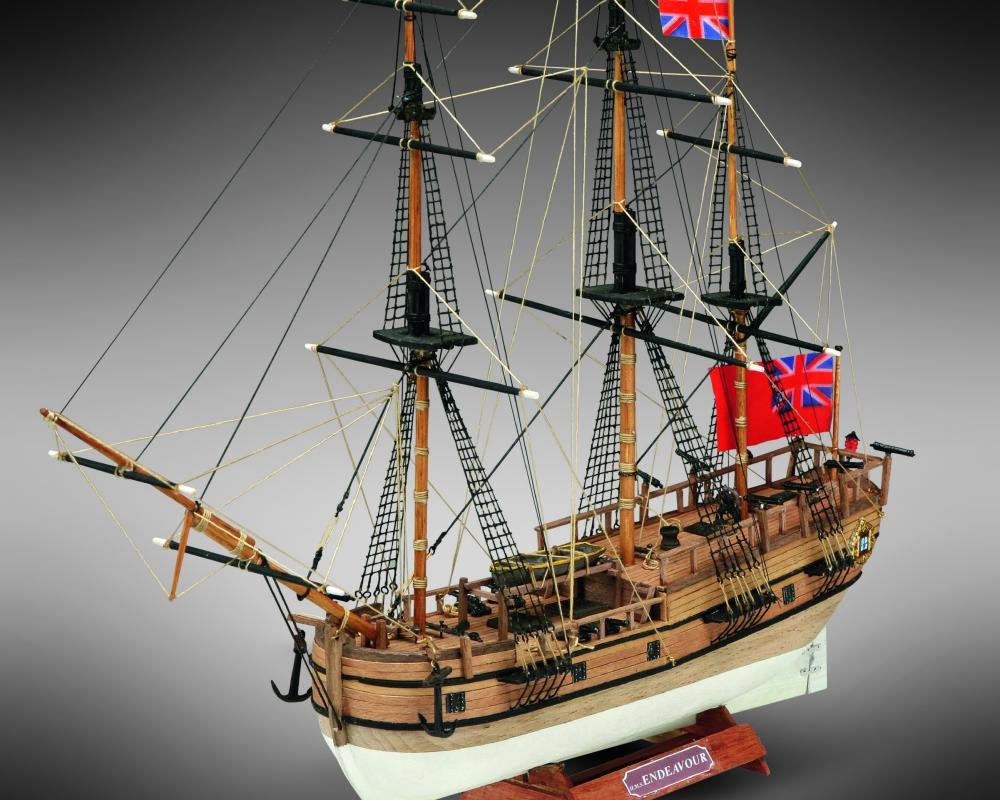Search the Community
Showing results for tags 'Endeavour'.
-
I need to buy a lottery ticket! After years of being unable to assemble even a basic plastic kit I have recovered enough to contemplate improving my motor and mental skills with a wood kit and spent a morning in the library, browsing the history of unusual RN ships that have captured my imagination over the years, I narrowed the list to three: Bounty, Beagle and Endeavour. From there I went to the internet (no model shops still open in my area, sadly) and was horrified at how prices had jumped. Spotting a likely subject I put a hail Mary bid on it, and to my amazement won. Endeavour, a Colier ship built in Whitby and commanded by a Whitby native when bought by the RN, and arguably one of the most famous ships of all time. Tainted by madness and producing the infamous Captain Bligh, I love it, I like to immerse myself in the history of any model I build, and this ship has history to spare. The main problem now is winner guilt, I feel I have robbed the charity shop I won it from, I suppose I should make a contribution rather than buy lottery tickets! I will record the build, with apologies from the start, it is ten years since I completed a model, and it has been a long road back.
-
First build and log for me, slight delay in getting started when AT sent the full HMS Endeavour instead of the Longboat version, but all sorted quickly by AT and am now building. Managed to get all the ribs dry fitted, quite a bit of play in the parts, but some lego blocks seem to have worked in making sure everything was square. I dry fitted the deck after gluing the ribs to make sure alignment was OK and so far seems OK
- 36 replies
-
- First Build
- Endeavour
-
(and 1 more)
Tagged with:
-
Besides my first ever wooden build, the Goletta Elisabeth and a little side projekct, the Optimist Dinghy I decided to go for the Amati Endeavour 1:80 as my first bigger and more advanced model. I somehow really like the elegance and sporty look of those J-Class ships. Kit was openend and wow this is a whole different story than those other two kits I did. This will be way more difficult and time consuming, but I am on fire for it so checked out the instructions and plans and started constructing the hull right away. First step was to glue the two kiel parts plane together and adding the frames. Numbered them before and prechecked if they fit well. Needed some sanding first with some parts. To make sure to have them in a right angle to the kiel I and clamp them I constructed two rectangles out of some spare wood which worked out well. Next step was adding the rear and bow reinforcements and one reinforcement in the middle. Rubber bands did their job here. Net up adding the first deck and fixing it with the provided nails and again lots of rubber bands. Was a little bit tricky since the deck slightly bends to the right and left. Thats it for now. Net up is sanding of the frames, bow and rear parts to make the first layer of planks fit right. Will probably take some time.
-
Every time I set out I think "no more split hull!!!" And then promptly ignore that and do a split. The Endeavor has a deep keel and draught, and plenty of sails. So split hull it is. She also has a rigging that boggles the mind. Not my mind, I lost that looong ago. This time I did not spend hours drafting her myself, I took a short cut in the form of a download-able model. I can post the link if someone is interested. The owner sells these for $5us I think, and has a few more. I had to add the life boat as well as the rear windows. Not sure if those are called portholes. This saved me plenty of time, but I'll have to drill more holes. This particular printing resin doesn't like to be drilled. We'll see
-
A brief introduction to this kit --- Unpacked and contents checked. All complete and in very good order. Ply sheets perfectly flat and undamaged, All strip wood is of finest quality and straight as a die. Fittings and brass sheets perfect. Eight big sheets of plans. Full size plans are important. With my eyes measuring from reduced plans then scaling up or down is hard work. Ordered necessary paint pots with kit plus, balsa sheets for stem and stern blocking. Bought a building board from my local hardware shop. Already have wood glue and cyano in stock from my last build. Tanganyika strip supplied instead of lime so no extras to buy. Have a copy of Marquardt's AOTS book and, James Lees Masting and Rigging in stock also several logs (of excellent quality) on this forum Noticed from other logs on this forum that there may be a problem with the width of the mizzen channels but have found enough 2mm walnut sheet in my spares box to cover this. So all ready to go. First is to build the jig, then assemble the false keel and bulkheads and the false decking. Working as a draughtsman for 53 years, 20 of these using AutoCad I much prefer drawings rather than pictures so am really looking forward to working on this kit. Photo's to follow. Best regards, Sam.
-
Got this kit in November last year with the optional LED lighting set. Needed a break from rigging R.C. and was as usual just dry fitting the frames and the next I knew I was building the damn thing... Whats in the box can be seen here in James H's review. There was a nice surprise in my box. Thank you Artesania Latina!!! I didn't take any pictures of assembling the frames, decks or the stand. The stand with the light works very well, even in daylight: Backside of the name plate: Yesterday I got started on the bulwarks. And this black monster helps me with getting hairs just about everywhere on the ship... Mid deck planking underway. I cut and sand the planks individually, it takes some time but the results are good: Deck sanded and varnished and inner bulwarks done: Forecastle started: 0.5 mm thick strips. Super quality but if I have too much glue on them they tend to curl: Forecastle bulwarks. I don't know what material this is. Bamboo maybe but they are extremely easy to bend. Forecastle and bulwarks ready (almost) Poop deck underway: And this is as far as I got today... I'm quite satisfied with the kit so far. Nice materials and a detailed manual without one written word. The only thing I'm not happy with are the laser cut blocks: Sanding the char and then drill a hole on 288 tiny blocks is NOT what I want to waste my time on... I was thinking of ordering the Hermione from A.L. at the end of the month, but I have to look up what kind of blocks there is in that kit first. To be cont
-
Here is my 1:30 mid-ship cross-section of HMB Endeavor. My original resources for construction were the books and plans by Harold Underhill and Charles Davis. Lately, Waldemar was kind enough to give me access to the detailed diagrams of Endeavour by Karl Marquardt. These revealed several mistakes in my framing (too few, room and space), which I decided to accept and to follow Marquart's diagrams in building the interior decks. The upper frames will be rebuilt more accurately as I move upward. Wood is cherry and walnut. Walnut sheathing will be applied to the bottom up to the wales, omitting several strakes of sheathing and planking as though under repair.
-
1:65 HMS Endeavour Artesania Latina Catalogue # 22520 Available from Artesania Latina for €231.40 History HMS Endeavour was a British Royal Navy research vessel that Lieutenant James Cook commanded to Australia and New Zealand on his first voyage of discovery from 1768 to 1771. She was launched in 1764 as the collier Earl of Pembroke, with the Navy purchasing her in 1768 for a scientific mission to the Pacific Ocean and to explore the seas for the surmised Terra Australis Incognita or "unknown southern land". Commissioned as His Majesty's Bark Endeavour, she departed Plymouth in August 1768, rounded Cape Horn and reached Tahiti in time to observe the 1769 transit of Venus across the Sun. She then set sail into the largely uncharted ocean to the south, stopping at the islands of Huahine, Bora Bora, and Raiatea west of Tahiti to allow Cook to claim them for Great Britain. In September 1769, she anchored off New Zealand, becoming the first European vessel to reach the islands since Abel Tasman's Heemskerck 127 years earlier. In April 1770, Endeavour became the first European ship to reach the east coast of Australia, with Cook going ashore at what is now known as Botany Bay. Endeavour then sailed north along the Australian coast. The ship was largely forgotten after her Pacific voyage, spending the next three years hauling troops and cargo to and from the Falkland Islands. She was renamed in 1775 after being sold into private hands and used to transport timber from the Baltic. Rehired as a British troop transport during the American War of Independence, she was finally scuttled in a blockade of Narragansett Bay, Rhode Island in 1778. Relics from Endeavour are displayed at maritime museums worldwide, including an anchor and six of her cannon. A replica of Endeavour was launched in 1994 and is berthed alongside the Australian National Maritime Museum in Sydney Harbour. The NASA Space Shuttle Endeavour was named after this ship, as was the command module of Apollo 15, which took a small piece of wood from Cook's ship into space, and the SpaceX Crew Dragon capsule C206 was christened Endeavour during Demo-2. Abridged extract from Wikipedia The kit Firstly, this kit bears no relation to the Endeavour kit of years gone by. This is a totally new development in that the construction is entirely different….different parts, methodology etc. Artesania, simply put, are not the same company from those years ago, but the new owners have taken on a lot of the old inventory while also developing entirely new releases, such as Endeavour, Vasa, and Soleil Royale etc. The Endeavour kit that is available today should not be viewed with a connection to the past. Artesania Latina has designed this new kit using the research available to them, and by studying the full-size replica which resides in Australia. They have also incorporated into it the ability to fit it out with their LED lantern set, by means of adding the various holes needed to thread cables. That set is a separate purchase to the kit, but we have it here and will show it as a separate article. The one thing which does have the original Artesania feel to it is the glossy, tough box that these kits are still packaged in. Artesania’s on-shelf presentation is as nice as it ever was. Inside the box, all parts are initially bundled within a large, cellophane wrapping. Remove this and you’ll find the timber and metal parts are within another wrap, and all of the timber strip bundles are also wrapped, as well as held together with an elastic wrap, which I quite like. Note that the planks are supplied as half-lengths, so not full bow to stern. Also there are the familiar Artesania Latina clear plastic fittings boxes. These are just a few on-bench images before I opened things up properly. Timber strip Artesania's timber strips are definitely of a nice quality, being consistent in thickness and width. As I've stated, the hull planking is supplied as halves. My measurements show this to be 2mm x 5mm x 300mm lime strip. That's quite thick stuff to get around that very bluff hull, so I suggest you soak these beforehand, or use another tool such as a plank nipper to manipulate the material. Plenty of material is supplied for this. In fact, four whole bundles. There's no apparent stringiness or rough surface. This is just as well as Endeavour is SINGLE PLANKED! In a world where POF tend to be double planked, Artesania has bucked the trend with this. The 2mm wood should give the modeller plenty of leeway when it comes to sanding things, but getting the hull fairing right is very important. I also have to say at this point that the only part of the hull in which actual timber will be shown is a band around the width, the wale, which is given another layer of 0.5mm x 5mm strip unidentified timber. The rest of the hull above and below this is entirely painted. The quality of the remaining timber strip and dowel are as good as the lime, with no splitting, fraying, rough cut edges or any other defect. Wooden parts EIGHT sheets of plywood parts are supplied with Endeavour, in various thicknesses. All parts are cleanly laser cut and the material in my sample has no warping. I know some of the older AL kits had a strange spongy core to their ply, but this appears to be replaced with good quality ply in the new kits. One thing I did notice is that the single-hole rigging blocks are supplied as laser cut parts, for some reason, and you need to drill your hole in them. Not too keen on that idea. Here's the parts to show you the standard to expect in Endeavour: These are single-hole rigging blocks (above) There are a few things of particular note here. The bulkheads are not as you would normally see. These are made up from several parts which create what is more of a frame than a bulkhead. The parts also are joined by a dovetail. The stand is actually designed to accommodate, should you wish, an LED illumination module. AL have sent us one of these and I'll shortly post a review. All external keel parts are also in ply instead of solid timber, presumably because they completely painted. Two ship's boats are included, built up from frames that sit on a jig. All parts are also laser etched with numbers, and a parts plan is also included in paper form. Photo Etch This single sheet of photo etch appears to be a stainless finish, or at least not nickel plated, to my eyes. The quality is pretty much what you'd expect from a contemporary manufacturer, in that the etchings are clean, detailed and the connection tabs are slight so should be easy to cut through. Just remember that any PE part will need the connection nub filing down before fitting. You are also advised to use a decent quality etching primer so your paint can get a proper grip. On here you will see parts for the stern, chainplates, windlass etc. Fittings Two trays of fittings are supplied. The larger one contains some 0.25 rigging rope, brass wire, cannon, swivel guns, cast anchors, eyelets, pins and various other cast metal parts. The smaller box contains hawse cable, turned wooden capstan, deadeyes, larger rigging blocks, metal tube, eyelets, parral beads etc. Flags Endeavour also comes with some flags. These are a sort of plasticised material. You may want to source something a little thinner for your model. Rigging Cord A further pack of rigging cord is supplied in a clear blister pack, in black and natural. Sizes can be seen in this photo. Sails I've never been a fan of fitting sails to ships, but in case you wish to, then AL have supplied a full set for you which are nicely sewn from a material which is off-white in colour. There are no bolt ropes on these, so you may want to sew your own onto them. Templates Two sheets of paper templates are included. These are to lie onto the completed hull in order to provide locations for cutouts and other details such as wales etc. Instructions As mentioned in our Santa Maria build, AL kits do not come with any printed instructions or plans. The latter, quite frankly, isn’t needed due to the sheer depth of information in the electronic instructions. The manual comes on a DVD and is over FIVE-HUNDRED pages long! That would of course pose a logistical problem and extra cost for Artesania to include. It also poses a logistical problem for the modeller who will need the means to read the electronic manual at their workbench. Some computers, like my MacBook, don’t have a DVD drive. In instances like that, you can always go to the Artesania site and download the entire manual and save to either your internal drive or to a USB pen drive. Artesania’s instructions are very much full-on, in that nothing is left to the imagination. Every single stage is clearly illustrated and annotated with clear part numbers and symbols to declare whether something needs gluing or not. If you want to see the whole manual, click HERE. Here’s a few images from the manual, just to give you an idea: Conclusion Artsania's new Endeavour kit is most definitely a different beast from the original one from many years ago, and AL obviously aren't too worried about mixing things up a little and incorporating ideas from contemporary kit designs. I would definitely not recommend this kit for a beginner, simply because of the single-planked hull. I would like to have seen that done from at least two 1mm layers, so care will be needed to make sure you prepare the hull before you start to lay any planks. There are some very nice touches, such as the windlass with its folded metal body and brass gearing. Another things I would change would be the laser-cut single rigging blocks. They really do need to be replaced with proper rigging blocks. Artesania still know hoe to play to their target market, as this kit clearly shows, and the introduction of these new designs to their range is very welcome. Other new designs are their Soleil Royale and Vasa, constructed in roughly the same manner. It's wonderful to see Artesania Latina back at being a player within our hobby. I cut my model shipwrighting teeth on AL kits, so have that fondness for them. My sincere thanks to Artesania Latina for the sample looked at here. To buy this kit, head off to the link at the top of this page, or contact your local hobby supplier for availability. ALSO available for this kit: HMS Endeavour figure set Available from Artesania Latina for €20.65 This is a set of 14 crew figures for Endeavour, comprising of crew, some with separate arms etc. and also some PE parts for ship navigation instruments and ensign. Note also the extra metal parts which contain more arm parts for holding the supplied rifles. Casting is nice for this scale, and colour notes are supplied on the reverse of packet.
-
Hello all, I started this kit 21 years ago. Recently, I was inspired by my good friend Banyan and his excellent Endeavour. So, over the last couple of months, I have been getting stuck in and really enjoying it. I did have a build log up years ago but that's gone and I have been prompted to start another. I will appreciate any comments, criticisms, suggestions etc., especially as I am coming into the next phase when I think I'll be asking quite a few questions. It is a real pleasure to be a part of this online community. MartyB
-
So here is my second project, the Amati J-Class Endeavour. It took me quite a while to start this and as a sort of motivation I had this acrylic picture painted by a friend. The template was a picture I found in the net. Since the model of the Rainbow, which was the winner of the 1934’s Americas cup, came with a ready resin hull, the model of the challenger, Endeavour, has a wooden hull. So this is a new challenge for me.
-
Ok onto my second build and I expect this one will be a little more of a challenge than PORT JACKSON. The framework was a little loose so I had to be rather careful in assembly to ensure the frames not only lay flat but also symmetrical about the centreline and had the right space at the deck level for the beams to be fitted later. Laying the deck was a relatively simple process having previously marked the centrelines on the false deck I laid full lengths of the 0.5mm strip material after rubbing the edges with a permanent black marker. I chose to insert perimeter planks (not sure what these are actually called) so that the deck planks did not end in sharp points at the bulwark. The plank joints and nails were marked by a 0.1mm permanent ink marker. As can be seem in the picture, I had lots of time to spare while glue dried so I started work on the Foremast. The mast pieces were turned in a mini lathe tapered by holding sandpaper on each side to support the material under pressure and runs the sandpaper up and down the tapered length until the diameters were met. The squaring was achieved by marking a square on the end of the material and then running lines down the length and then sand to the lines. It was at this point that I noted that some of the work done by ENDEAVOUR builders in the past reveal some potential errors in the Artesania kit so I bout the Parkin book but alas it does not provide sufficient detail on masts and yards. It does however reveal some missing features in the deck which I will have to mark and amend.
- 79 replies
-
- Endeavour
- Artesania Latina
-
(and 1 more)
Tagged with:
-
As I am now retired I thought I would get back into modelling. I therefore needed a model that was a little bit more of a challenge, hence Caldercraft HM BARK ENDEAVOUR 1:64. I thought I would start a build log and hopefully get your comments as the build progresses. the following photo’s is where I have got to, at present along with issues I came across. I did have some issues with the kit it’s self with poor CNC cutting and issues with the depth of the keel remaining after test fitting the planking. As planking comes to just short of the keel edge. I emailed Caldercraft on these matters please see email feedback from them below. Hope this will help others on there builds Hi Graham Thank you for coming back to me with the images, I can now better understand your areas of concern. With regard to images 1 and 2, this is correct, the deck should only just reach the outer edges of the bulkheads. When the outer hull is planked these hull planks continue up past the deck to the top of the bulkhead stubs; with regard to bulkheads 7, 10 & 11 which have no stubs, the hull planking still extends up past the outer face of the 0.8mm ply deck and will effectively finish flush to the upper face of the deck planking at the ‘steps’ between decks. With regard to images 3 through 6, again this is correct. The height of exposed keel on Endeavour was approximately 8 inches (203.2mm), at a scale of 1:64 this equates to 3.175mm. The walnut keel supplied has a height of 5.7mm, after planking with 1.5mm lime and 1.0mm walnut this leaves an exposed height of keel of approximately 3.2mm. What is missing from the model is the false keel, you may or may not choose to add this. The false keel was a sacrificial timber attached to the underside of the keel, we don’t generally apply these as they never look right to scale. You may have seen false keels applied to some models in my experience they are generally applied as 1.5 to 2mm thick planks which looks right but really isn’t. As a general rule of thumb a false keel is approximately quarter the height of the keel to with a 3.2mm keel on Endeavour this would give a false keel thickness of 0.8mm which simply looks odd/wrong when applied. When scaled up of course that thin 0.8mm slither equates to a 2inch thick timber. With regard to the deck length this is best described as a design consideration with the deck being approximately 3mm longer than need be at the transom (there are a lot of these considerations throughout various areas of all models to try to allow for build differences from one modeller to another). The reason for the extra material on the ply deck is that we know from experience some modellers struggle with correct fitting of angled rear bulkheads where a ‘full’ slot is not provided and also cumulative effects where the stern counter patterns may not be precisely fitted. If you get the angle of the bulkhead spot on and glued tight against the locating notch in the keel and then you get the stern counter patterns precisely glued in place and again tight flush to the bulkhead then it will result in approximately 3mm of material needing to be removed from the aft edge of the deck. On the other hand if one or both of these stages are out by only small degrees you may only need to trim 1mm of material from the aft edge. Kind regards Richard Wright Technical Manager JoTiKa Limited Model Marine Warehouse Hadzor Droitwich Worcestershire WR9 7DS United Kingdom Tel: +44 (0)1905 776 073 Fax: +44 (0)1905 776 712 Email: richwright@jotika-ltd.com Web: www.jotika-ltd.com I need to thank other members for there advice in getting this far especially 1st & 2nd planking issues. Being a novice builder I did not realise that tapering of the planking should really start from plank two. Therefore had to strip five rows of first planking off and start again. 1st planking completed required a lot of sanding and a good bit of filler. 2nd planking went on easier but I struggled in holding these in place as did not want to pin these. Looking at completed planking now it has turned out quite well. For the main deck planking I decided on the four BUTT plan with 100 mm planks as this worked better for me. Will update Just finished the capping rail unfortunately I made a mistake that I am going to have to live with in that the capping rail on the mid deck is out of alignment to the Quarter deck due to not taking into account the curve of the hull planking also managed to get the hull painted and stained. Not sure what happened below the stern quarter as the the stain went on rather dark on the Stbd side and did not look good so I painted it walnut brown (do not like this and going to have change if I can). But otherwise quite happy with the way the build is going at present.
-
Well I've put this off long enough, with a much needed break after my Royal Louis and now off work till the 6th January, it's now time for the next kit on my workbench. After watching so many videos and trying to gather as much info as possible, This will be my first wooden kit in the shape of OCCRE'S ENDEAVOUR. A ship that has an Enormous Historical story and a kit once finished, will look beautiful. There is an Anticipation and nervousness about this for me, taking me slightly out of my comfort zone, but again pushing my capabilities. I have worked with wood before many times, but not on this level or scale. Patience is key as always, checking and double checking, dry fitting etc... There will be challenges ahead, and the need to think outside the box, but most of all patience and enjoying the build and learning are foremost. Happy modelling everyone & #staysafe 😷👍🤺🤺⚓⚓
-
Hi, This will be my first model ship build. I first spotted the 1:35 scale Amati model of the Endeavour which got me interested in the idea of making a model boat. However, I was concerned it was probably too ambitious for a first attempt. Having read a number of the build logs on this site on the Endeavour I decided to go with the 1:80, and if I enjoy it then maybe one day I'll tackle something larger. We're in lockdown at the moment (covid), so I've been ordering everything through post and am still without a few key tools, but the kit is here and I'm going to get started! The kit comes with a sanding block, a small hammer, large tweezers, a clamp and smaller sanding stick for smaller grooves. I've a tube of Selleys Interior Wood glue that dries clear, and a box of assorted elastic bands and bull dog clips and a scalpal. This should be enough for now. Looking forward to any advice/tips/encouragement as I go! Thanks, Brendan
-
Hi All, I am posting some photos that I have already posted in the Korea Model Sailboat Club since January this year (actual building started in November 2020). this is my second HMS Endeavor and earmarked for a present to my younger sister. I got a lot of help from MSW from various members' build logs, especially Dave Row and Shipaholic (Steve). Of course my build is nowhere near the level of many of the members in MSW. Anyway, I plan to upload my building logs in tandem with my current log in the Korea Model Sailboat Club. I welcome all advise and comments. I may post a lot of queries in this log as well. Rock
-
Hi, I'm beginning to build the HMS Endeavour from OcCre. Here is an index to the different stages of the build: • First planking finished • Issues encountered during the first steps 🙄 Foredeck flipped 🤫 using PVA for deck planking 🤔 When to prepare the hole for the rudder? • Transom issues • Redoing Hatch Boards • Ladder Test • Main Wales After preparing the bulkheads, the decks were planked. I tried the toothpick method for the trenails. Here ist my Progress so far: Fitting the decks to the framework: Meanwhile preparing the Lifeboat, which was actually quite challenging for me because I was trying to let all the planks run from stern to bow. Didn't work out perfect, but the finished thing still looks ok... Beginning of the first planking using paper strips for each bulkhead and planking fans to try and plan the tapering. Also using Chucks planking method. After a little learning curve, it worked quite well for me.
-
After much thought I eventually decided to go for this ship. Mainly due to local interest . I was not planning on starting building until october when the nights start drawing in but could not resist the temptation on getting my hands on the kit and seeing what she would be like. I was quite surprised to see for such a hefty price compared to my first period build the Bounty by Amati there were no sails or flags within the kit. Fortunately I am not planning fitting the sails anyway but might of changed my mind later on. Upon opening the box and checking the contents I was a bit disappointed to find that all of the 5mm plywood boards are bent/warped to varying degrees. The main piece being the false keel the others which housed the bulkheads. I decided to remove these pieces from their boards so to determine the extent of the warping. I am happy to say when laying the bulkheads on a flat surface they seem to be ok . Unfortunately no so with the false keel. Here is a couple of photos with the extent of the warping, so let me know what you guys think. I have read a few different threads regarding how to put this right but first I thought I would contact Caldercraft and see if I can get the false keel replaced together with a couple of parts which are missing. Strange as it may seem this parts belong to a walnut board and a brass sheet which have other pieces as well. When I mean missing leaving holes, I mean I can,t find them but have numbered all the parts as per the drawing. I am now awaiting the reply from Caldercraft and hopefully they live up to their reputation and its not too long until I hear from them. Although I wasn,t thinking of starting the model until october perhaps I would be better of assembly the hull to the point of fitting the wales to ensure that the replacement keel doesn't warp before October. I also have lots of questions before I start in earnest. Best regards Dave
-
March 21/21. Here is the build so far. I built the anchors and the anchor supports and completed the ropes and pulleys. I completed the anchor winch. On the lifeboat deck I completed and installed the lifeboat supports and the grating underneath. I built two topside cannons and rigged them to the side of the ship. This is my build so far. B. Edward
-
We're in the midst of an epidemic and my wife asked me what I would like for Christmas. I replied that is was sick of watching the ubiquitous boxed-sets on the telly and I always used to like building model kits. We both like sailing and we do have a 'nautical themed' lounge and conservatory with various ornaments and pictures depicting nautical themes. With an impending 3rd lockdown in the UK commencing in January it seemed like an excellent idea to get my teeth into and maybe re-kindle skills learnt from my woodwork 'O-Level'? Christmas day arrived and I was presented with a massive box, which I unwrapped and was presented with the Amati kit. Inspecting it revealed the huge, full-size plans plus the laser cut ply pieces. Reading theinstructions quickly revealed that they were aimed at a seasoned model boat builder with terms, processes and procedures that are alien to me! The internet and Google beckoned and so I started on my journey of building this monster! Here are some pics of the box, plans and contents:
-
- 10 replies
-
- Mini Mamoli
- Endeavour
-
(and 1 more)
Tagged with:
-
Hi there, This is my build log for the mighty ship Endeavour. I've lurked a bit in the background (after I bought the kit) and have taken note of some great advice. Holy Moly, you guys are good. The first advice I noticed was the need for at straight keel to make sure that the ship is straight. Sound like a good idea and since I own a couple of 3D printers, I decided to design a straight stand. The printer is still working on it. And as I could not wait to start, I took out some parts from the box and assempled the spine straight away. Putting the frames on loosely, only served the purpose of showing my wife how great the ship would look when finished. After standing for two days like that I, met my first problem of many. One of the frames developed a distinct curvature. My guess is that it would be difficult to lay the decks and maintain a perfectly curved hull (I am still dreading the forming of the bow). At the moment the frame is in press between two shelves from the cupboard after spending some time in the oven at 50 degrees celcius. EDIT: no good. And 100 degrees didn't help either. Guess I'll have to print some braces. While I'm waiting I am designing some helpful tools for 3D printing. A couple of "cross-blocks" to help with keeping the frames at right angles when I eventually decide to glue them in place. A couple of right angle bits to help later on. If anyone think they can use them, I'll be happy to share. I wasn't even supposed to build a ship. I was actually searching for a 3D model of a small boat that I could print as a gift wrapper for a present for my grandson - and no - Benchy was not going to cut it (3D printer insider joke). I just happened to spot the OCCRE kit and clicked on the link. As I was drooling and thinking back to my dad's attempt at the Wasa back when I was 7 years old, my wife happened to glance at the screen. She was impressed and within minutes she urged me to buy it. We usually contemplate for weeks before we buy anything, so I am convinced that she also liked the model. So I clicked on pay, and here I am. No experience in building a model ship. Whatsoever. No toolshed with loads of specialized tools. Just a desire that I have had for more than 50 years. Now is the time. Wonder how many years this will take me.... p.s. My dad got the hull finished and sanded. That was it. He gave up.
-
A new beginning to an old project. I acquired the Amati Endeavour around 2005, let it sit for awhile and then started it, only to drop it again after minimal progress. Here is the kit box. Got the bulkheads installed, deck base added, and started mast tapering (seen on the grooved board I used to keep it straight over the years). Sorry for the messy area, but the desk will need to be cleaned of model railroading stuff before I restart this project! lol btw - The tools alone were "almost" worth the cost of the kit. Used several of them over the years for other modeling tasks!
- 5 replies
-
- americas cup
- endeavour
-
(and 1 more)
Tagged with:
About us
Modelshipworld - Advancing Ship Modeling through Research
SSL Secured
Your security is important for us so this Website is SSL-Secured
NRG Mailing Address
Nautical Research Guild
237 South Lincoln Street
Westmont IL, 60559-1917
Model Ship World ® and the MSW logo are Registered Trademarks, and belong to the Nautical Research Guild (United States Patent and Trademark Office: No. 6,929,264 & No. 6,929,274, registered Dec. 20, 2022)
Helpful Links
About the NRG
If you enjoy building ship models that are historically accurate as well as beautiful, then The Nautical Research Guild (NRG) is just right for you.
The Guild is a non-profit educational organization whose mission is to “Advance Ship Modeling Through Research”. We provide support to our members in their efforts to raise the quality of their model ships.
The Nautical Research Guild has published our world-renowned quarterly magazine, The Nautical Research Journal, since 1955. The pages of the Journal are full of articles by accomplished ship modelers who show you how they create those exquisite details on their models, and by maritime historians who show you the correct details to build. The Journal is available in both print and digital editions. Go to the NRG web site (www.thenrg.org) to download a complimentary digital copy of the Journal. The NRG also publishes plan sets, books and compilations of back issues of the Journal and the former Ships in Scale and Model Ship Builder magazines.


